Google Glasses
description: a type of smart glasses developed by Google, allowing wearers to access information in a hands-free format.
150 results

Age of Context: Mobile, Sensors, Data and the Future of Privacy
by
Robert Scoble
and
Shel Israel
Published 4 Sep 2013
However, history indicates that when the tech community is unified, focused and excited about a topic, as it is about context, it almost always follows that they will make waves that land on the shores of commerce. Although this book introduces some thought leaders, the business community overall is not thinking much about context right now. But they will soon be productizing it and using it for competitive advantage. Context Through Google Glass Google Glass is the product that is raising public awareness, excitement and concerns about contextual computing. This wearable device is discussed in depth in Chapter 2. It is like nothing that has previously existed, containing sensors, a camera, a microphone, and a prism for projecting information in front of your eyes.
…
This and many other nascent revolutionary applications of contextual software are right around the corner. From a contextual perspective, we hold Google in particularly high regard, but the real game-changing development is the gadget Scoble is wearing on our back cover—Google Glass. Chapter 2 Through the Glass, Looking Right now, most of us look at the people with Google Glass like the dudes who first walked around with the big brick phones. Amber Naslund, SideraWorks The first of them went to Sergey Brin, Larry Page, and Eric Schmidt. Brin, who runs Project Glass, the company’s much-touted digital eyewear program, has rarely been seen in public again without them.
…
We believe something monumental is taking place, something that could change your life and work, your children’s future and the world in which your unborn descendants will live. Not Another Day Scoble was the 107th person to receive a Google Glass prototype. He put them on and immediately started posting short notes on his social networks about his experience. He wore them when he went to Europe, making presentations at tech conferences and letting hundreds of people give his Glass device a quick try. After two weeks, he posted his first review to Google+, the default social network for Google Glass users, declaring “I’m never going to live another day without a wearable computer on my face.” To illustrate his point, his wife Maryam photographed him in the shower wearing his Glass.

Future Crimes: Everything Is Connected, Everyone Is Vulnerable and What We Can Do About It
by
Marc Goodman
Published 24 Feb 2015
Tracking, Monitoring, and Wearable Tech,” Symantec Security Response, July 30, 2014. 5 Google has already: “Google Partners with Ray-Ban, Oakley for New Glass Designs,” NBC News, March 24, 2014; Deloitte, Technology, Media, and Telecommunications Predictions, 2014, 10. 6 The fear of filming: Richard Gray, “The Places Where Google Glass Is Banned,” Telegraph, Dec. 4, 2013. 7 In fact, hackers had already: Andy Greenberg, “Google Glass Has Already Been Hacked by Jailbreakers,” Forbes, April 26, 2013. 8 The GPS features: Mark Prigg, “Google Glass HACKED to Transmit Everything You See and Hear: Experts Warn ‘the Only Thing It Doesn’t Know Are Your Thoughts,’ ” Mail Online, May 2, 2013. 9 While your grandma: John Zorabedian, “Spyware App Turns the Privacy Tables on Google Glass Wearers,” Naked Security, March 25, 2014. 10 Given the pace: Katherine Bourzac, “Contact Lens Computer: Like Google Glass, Without the Glasses,” MIT Technology Review, June 7, 2013. 11 The device is in early stages: Leo King, “Google Smart Contact Lens Focuses on Healthcare Billions,” Forbes, July 15, 2014. 12 Not to be outdone: Bourzac, “Contact Lens Computer.” 13 The historic operation: N.
…
Chertoff of Homeland Security, with all of Google Glass’s power and connectivity come a host of privacy and public policy issues. But there are important security threats to be considered as well. The fear of filming has led to Google Glass’s being banned in a number of public venues, including sporting events, concerts, gym locker rooms, bars, restaurants, strip clubs, casinos, hospitals, and U.K. movie theaters. Cited reasons for the prohibitions against the device include everything from card counting to film piracy and industrial espionage. But there is another concern. Google Glass can be hacked to secretly take photographs and record video, silently streaming the data to Crime, Inc. anywhere in the world, all without the knowledge of the device’s owner.
…
For more detailed reviews on the large number of violations alleged against Google, see www.googlemonitor.com. 14 After a lawsuit: David Streitfeld, “Google Admits Street View Project Violated Privacy,” New York Times, March 12, 2013; David Kravets, “An Intentional Mistake: The Anatomy of Google’s Wi-Fi Sniffing Debacle,” Wired, May 2, 2012. 15 In October 2013, a federal judge: Claire Cain Miller, “Google Accused of Wiretapping in Gmail Scans,” New York Times, Oct. 1, 2013. 16 In early 2014, Google Glass was the subject: David Pierce, “The Simpsons May Have the Smartest Thoughts Yet About Google Glass,” Verge, Jan. 27, 2014. 17 Even the former head: Michael Chertoff, “Google Glass, the Beginning of Wearable Surveillance,” CNN, May 1, 2013. 18 With more than 1.2 billion: PRNewswire, “Facebook Reports Fourth Quarter and Full Year 2013 Results,” Facebook: Investor Relations, Jan. 29, 2014. 19 It has been sued: Karen Gullo, “Facebook Sued over Alleged Scanning of Private Messages,” Bloomberg, Jan. 2, 2014. 20 For example, did you realize: Robert McMillan, “Apple Finally Reveals How Long Siri Keeps Your Data,” Wired, April 19, 2013. 21 The Web site with the most: “What They Know,” Wall Street Journal series, http://blogs.wsj.com/wtk/. 22 So if you use your university: Adi Robertson, “Angry Email Users Can Take Google to Court for Keyword Scanning, Judge Rules,” Verge, Sept. 26, 2013. 23 “a person has no”: Ibid.; Cooley LLP, “Google’s Motion to Dismiss Complaint Memorandum of Points & Authorities,” U.S.

The Age of Surveillance Capitalism
by
Shoshana Zuboff
Published 15 Jan 2019
See Stephen Graves, “Niantic Labs’ John Hanke on Alternate Reality Games and the Future of Storytelling,” PC&Tech Authority, October 13, 2014. 74. David DiSalvo, “The Banning of Google Glass Begins (and They Aren’t Even Available Yet),” Forbes, March 10, 2013, http://www.forbes.com/sites/daviddisalvo/2013/03/10/the-ban-on-google-glass-begins-and-they-arent-even-available-yet; David Streitfeld, “Google Glass Picks Up Early Signal: Keep Out,” New York Times, May 6, 2013, http://www.nytimes.com/2013/05/07/technology/personaltech/google-glass-picks-up-early-signal-keep-out.html. 75. Aaron Smith, “U.S. Views of Technology and the Future,” Pew Research Center: Internet, Science & Tech (blog), April 17, 2014, http://www.pewinternet.org/2014/04/17/us-views-of-technology-and-the-future. 76.
…
Views of Technology and the Future,” Pew Research Center: Internet, Science & Tech (blog), April 17, 2014, http://www.pewinternet.org/2014/04/17/us-views-of-technology-and-the-future. 76. Drew FitzGerald, “Now Google Glass Can Turn You into a Live Broadcast,” Wall Street Journal, June 24, 2014, http://www.wsj.com/articles/now-google-glass-can-turn-you-into-a-live-broadcast-1403653079. 77. See Amir Efrati, “Google Glass Privacy Worries Lawmakers,” Wall Street Journal, May 17, 2013, http://www.wsj.com/articles/SB100014241278873247 67004578487661143483672. 78. “We’re Graduating from Google[x] Labs,” Google, January 15, 2015, https://plus.google.com/app/basic/stream/z124trxirsruxvcdp23otv4qerfwghdhv04. 79. Alistair Barr, “Google Glass Gets a New Name and Hires from Amazon,” Wall Street Journal, September 16, 2015. 80.
…
The invasive practices introduced with Buzz—it commandeered users’ private information to establish their social networks by fiat—set off a fresh round of the dispossession cycle and its dramatic contests. As Google learned to successfully redirect supply routes, evading and nullifying opposition, it became even more emboldened to let slip the dogs of audacity and direct them toward havoc. Among many examples, Google Glass neatly illustrates the tenacity of the extraction imperative and its translation into commercial practice. Google Glass combined computation, communication, photography, GPS tracking, data retrieval, and audio and video recording capabilities in a wearable format patterned on eyeglasses. The data it gathered—location, audio, video, photos, and other personal information—moved from the device to Google’s servers, merging with other supply routes to join the titanic one-way flow of behavioral surplus.

Utopia Is Creepy: And Other Provocations
by
Nicholas Carr
Published 5 Sep 2016
To exaggerate a distinction seems a lesser crime than to pretend it doesn’t exist. GOOGLE GLASS AND CLAUDE GLASS September 19, 2012 GOOGLE COFOUNDER SERGEY BRIN made a stir earlier this month when he catted about New York Fashion Week with a Google Glass wrapped around his bean. It was something of a coming-out party for Google’s reality-augmentation device, which promises to democratize the head-up display, giving us all a fighter pilot’s view of the world. Diane von Furstenberg got Glassed. So did Sarah Jessica Parker. Wendi Murdoch seemed impressed by the cyborgian adornment, as did her husband, Rupert, who promptly tweeted, “Genius!” Google Glass is shaping up to be the biggest thing to hit the human brow since Olivia Newton-John’s headband.
…
Where a Claude Glass bathed landscapes in a soft painterly light, a Google Glass bathes them in hard data. It gives its owner the eyes not of an artist but of an analyst. Instead of a pastoral illusion, you get a computational one. But while the perspectives displayed by the two gadgets couldn’t be more different, the Claude Glass and the Google Glass share some important qualities. Both tell us that our senses are insufficient, that manufactured vision is superior to what our own meager eyeballs can reveal to us. And both turn the world into a packaged good—a product to be consumed. A Google Glass is superior to a Claude Glass in this regard.
…
THE MEANS OF CREATIVITY VAMPIRES BEHIND THE HEDGEROW, EATING GARBAGE THE SOCIAL GRAFT SEXBOT ACES TURING TEST LOOKING INTO A SEE-THROUGH WORLD GILLIGAN’S WEB COMPLETE CONTROL EVERYTHING THAT DIGITIZES MUST CONVERGE RESURRECTION ROCK-BY-NUMBER RAISING THE VIRTUAL CHILD THE IPAD LUDDITES NOWNESS CHARLIE BIT MY COGNITIVE SURPLUS MAKING SHARING SAFE FOR CAPITALISTS THE QUALITY OF ALLUSION IS NOT GOOGLE SITUATIONAL OVERLOAD AND AMBIENT OVERLOAD GRAND THEFT ATTENTION MEMORY IS THE GRAVITY OF MIND THE MEDIUM IS McLUHAN FACEBOOK’S BUSINESS MODEL UTOPIA IS CREEPY SPINELESSNESS FUTURE GOTHIC THE HIERARCHY OF INNOVATION RIP. MIX. BURN. READ. LIVE FAST, DIE YOUNG, AND LEAVE A BEAUTIFUL HOLOGRAM ONLINE, OFFLINE, AND THE LINE BETWEEN GOOGLE GLASS AND CLAUDE GLASS BURNING DOWN THE SCHOOLHOUSE THE ENNUI OF THE INTELLIGENT MACHINE REFLECTIONS WILL GUTENBERG LAUGH LAST? THE SEARCHERS ETERNAL SUNSHINE OF THE SPOTLESS AI MAX LEVCHIN HAS PLANS FOR US EVGENY’S LITTLE PROBLEM THE SHORTEST CONVERSATION BETWEEN TWO POINTS HOME AWAY FROM HOME CHARCOAL, SHALE, COTTON, TANGERINE, SKY SLUMMING WITH BUDDHA THE QUANTIFIED SELF AT WORK MY COMPUTER, MY DOPPELTWEETER UNDERWEARABLES THE BUS THE MYTH OF THE ENDLESS LADDER THE LOOM OF THE SELF TECHNOLOGY BELOW AND BEYOND OUTSOURCING DAD TAKING MEASUREMENT’S MEASURE SMARTPHONES ARE HOT DESPERATE SCRAPBOOKERS OUT OF CONTROL OUR ALGORITHMS, OURSELVES TWILIGHT OF THE IDYLLS THE ILLUSION OF KNOWLEDGE WIND-FUCKING THE SECONDS ARE JUST PACKED MUSIC IS THE UNIVERSAL LUBRICANT TOWARD A UNIFIED THEORY OF LOVE <3S AND MINDS IN THE KINGDOM OF THE BORED, THE ONE-ARMED BANDIT IS KING THESES IN TWEETFORM THE EUNUCH’S CHILDREN: ESSAYS AND REVIEWS FLAME AND FILAMENT IS GOOGLE MAKING US STUPID?

I Hate the Internet: A Novel
by
Jarett Kobek
Published 3 Nov 2016
Over the summer, news had broken that Sergey Brin was having an affair with an underling at Google X. Google X was an experimental lab that developed products like driverless cars, dogs that don’t need to lick their own genitals, and Google Glass. Google Glass was a wearable computer built into a pair of ugly eyeglasses. Google Glass allowed its wearers to act out their social inadequacies. They could record videos with Google Glass and alienate everyone in their surrounding vicinity. Sergey Brin’s sexual dalliance was with the Marketing Manager for Google Glass. He had internalized his company’s business model. “I told you,” said Christine. “Google X is just picking up chicks.” Adeline decided to go home.
…
She heard a bus pulling up opposite her. It was a Google bus. The door of the Google bus opened. A team of twenty engineers emerged. They all sported Google Glass, a wearable computer built into eyeglasses. The principle virtue of Google Glass was that it allowed its wearers to record videos and thus act out their social inadequacies by alienating everyone around them. Adeline made a clucking noise about the team of engineers wearing Google Glass. She thought that they looked simply absurd. Then Adeline remembered she was still wearing 2014 on her face. The engineers all wore matching t-shirts which read: GOOGLE GOES GAGA.
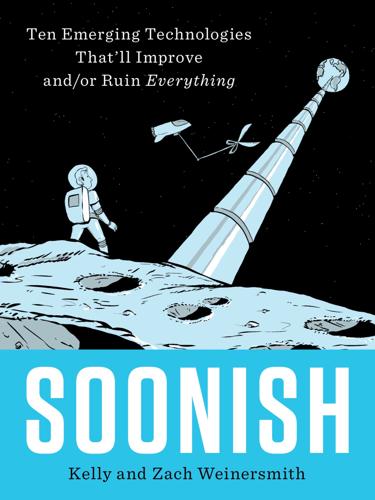
Soonish: Ten Emerging Technologies That'll Improve And/or Ruin Everything
by
Kelly Weinersmith
and
Zach Weinersmith
Published 16 Oct 2017
A lot of the sources we read on this topic were written between 2010 and 2014. The later ones tend to be really excited about how Google Glass is gonna change everything. Whoops. Google Glass is generally considered to have failed because when people see you wearing it, they want to punch you in the face. No, really. For instance, in 2013 the CEO of Meetup.com literally said to Business Insider reporters, “Google Glass? I’m definitely gonna punch someone in the face wearing Google Glasses.” So one feature you’d want in the future of AR is a display that doesn’t get you punched in the face by tech millionaires.
…
“NRC’s ‘All or Nothing’ Licensing Process Doesn’t Work, Former Commissioner Says.” Morning Consult.com, April 29, 2016. morningconsult.com/alert/nrcs-nothing-licensing-process-doesnt-work-former-commissioner-says. Goodman, Daniel, and Angelova, Kamelia. “TECH STAR: I Want To Punch Anyone Wearing Google Glass in the Face.” BusinessInsider, May 10, 2013. businessinsider.com/meetup-ceo-scott-heiferman-on-google-glass-2013-5. (Note: The video on this page is no longer working.) Graber, John. “SpriteMods.com’s 3D Printer Makes Food Dye Designs in JELLO.” 3D Printer World. January 4, 2014. 3dprinterworld.com/article/spritemodscoms-3d-printer-makes-food-dye-designs-jello.
…
So one feature you’d want in the future of AR is a display that doesn’t get you punched in the face by tech millionaires. The trick there may be miniaturization. Innovega is one company working on an AR contact lens. It’s not quite to the point where a contact lens can do the whole job, though. In fact, you have to wear a special pair of glasses over the contact lens. On the plus side, unlike Google Glass, it pretty much actually looks like a pair of glasses. In general, sensors and computation systems are getting cheaper, faster, and smaller. This provides fertile ground for experimental projects, of which there are many. Dr. Mark Billinghurst, currently at the University of Canterbury, came up with a concept called a “magic book.”

The Internet Is Not the Answer
by
Andrew Keen
Published 5 Jan 2015
Another smart clothing company, Heapsylon, even had a sports bra made of textile electrodes designed to monitor its wearer’s vital statistics.22 While Google wasn’t officially represented in the Augmented Reality Pavilion, there were plenty of early adopters wandering around the Venetian’s fake piazzas and canals wearing demonstration models of Google Glass, Google’s networked electronic eyeglasses. Michael Chertoff, the former US secretary of homeland security, described these glasses, which have been designed to take both continuous video and photos of everything they see, as inaugurating an age of “ubiquitous surveillance.”23 Chertoff is far from alone is being creeped out by Google Glass. Several San Francisco bars have banned Google Glass wearers—known locally as “Glassholes”—from entry. The US Congress has already launched an inquiry into their impact on privacy.
…
Google’s advertising network was becoming as ubiquitous as Google search. AdWords and AdSense together represented what Levy calls a “cash cow” to fund the next decade’s worth of Web projects, which included the acquisition of YouTube and the creation of the Android mobile operating system, Gmail, Google+, Blogger, the Chrome browser, Google self-driving cars, Google Glass, Waze, and its most recent roll-up of artificial intelligence companies including DeepMind, Boston Dynamics, and Nest Labs.70 More than just cracking the code on Internet profits, Google had discovered the holy grail of the information economy. In 2001, revenues were just $86 million. They rose to $347 million in 2002, then to just under a billion dollars in 2003 and to almost $2 billion in 2004, when the six-year-old company went public in a $1.67 billion offering that valued it at $23 billion.
…
At the Indiegogo-sponsored section of the show, hidden in the bowels of the Venetian, one crowd-financed startup from Berlin named Panono was showing off what it called a “panoramic ball camera,” an 11 cm electronic ball with thirty-six tiny cameras attached to it, that took panoramic photos whenever the ball was thrown in the air and then, of course, distributed them on the network. Another Indiegogo company, an Italian startup called GlassUP, was demonstrating fashionably designed glasses that—like Google Glass—recorded everything they saw and provided what it called a “second screen” to check emails and read online breaking news. There were even “Eyes-On” X-ray style glasses, from a company called Evena Medical, that allowed nurses to see through a patient’s skin and spy the veins underneath. Just about the only thing I didn’t see in the Venetian were cameras hidden inside watering cans.
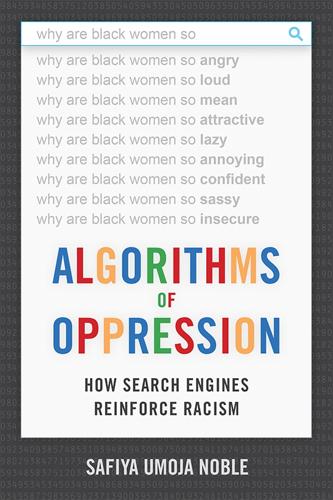
Algorithms of Oppression: How Search Engines Reinforce Racism
by
Safiya Umoja Noble
Published 8 Jan 2018
Roberts about the myriad problems with a project such as Google Glass and the problems of class privilege that directly map to the failure of the project and the intensifying distrust of Silicon Valley gentrifiers in tech corridors such as San Francisco and Seattle.39 The lack of introspection about the public wanting to be surveilled at the level of intensity that Google Glass provided is part of the problem: centuries-old concepts of conquest and exploration of every landscape, no matter its inhabitants, are seen as emancipatory rather than colonizing and totalizing for people who fall within its gaze. People on the street may not characterize Google Glass as a neocolonial project in the way we do, but they certainly know they do not like seeing it pointed in their direction; and the visceral responses to Google Glass wearers as “Glassholes” is just one indicator of public distrust of these kinds of privacy intrusions. The neocolonial trajectories are not just in products such as search or Google Glass but exist throughout the networked economy, where some people serve as the most exploited workers, including child and forced laborers,40 in such places as the Democratic Republic of Congo, mining ore called columbite-tantalite (abbreviated as “coltan”) to provide raw materials for companies such as Nokia, Intel, Sony, and Ericsson (and now Google)41 that need such minerals in the production of components such as tantalum capacitors, used to make microprocessor chips for computer hardware such as phones and computers.42 Others in the digital-divide network serve as supply-chain producers for hardware companies such as Apple43 or Dell,44 and this outsourced labor from the U.S. goes to low bidders that provide the cheapest labor under neoliberal economic policies of globalization.
…
Thinking about the specifics of who benefits from these practices—from hiring to search results to technologies of surveillance—these are problems and projects that are not equally experienced. I have written, for example, with my colleague Sarah T. Roberts about the myriad problems with a project such as Google Glass and the problems of class privilege that directly map to the failure of the project and the intensifying distrust of Silicon Valley gentrifiers in tech corridors such as San Francisco and Seattle.39 The lack of introspection about the public wanting to be surveilled at the level of intensity that Google Glass provided is part of the problem: centuries-old concepts of conquest and exploration of every landscape, no matter its inhabitants, are seen as emancipatory rather than colonizing and totalizing for people who fall within its gaze.
…
However, what is missing from the extant work on Google is an intersectional power analysis that accounts for the ways in which marginalized people are exponentially harmed by Google. Since I began writing this book, Google’s parent company, Alphabet, has expanded its power into drone technology,8 military-grade robotics, fiber networks, and behavioral surveillance technologies such as Nest and Google Glass.9 These are just several of many entry points to thinking about the implications of artificial intelligence as a human rights issue. We need to be concerned about not only how ideas and people are represented but also the ethics of whether robots and other forms of automated decision making can end a life, as in the case of drones and automated weapons.
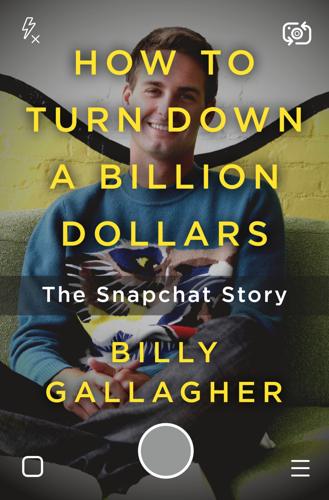
How to Turn Down a Billion Dollars: The Snapchat Story
by
Billy Gallagher
Published 13 Feb 2018
In March 2014, Evan rolled the dice on a company that had a chance to be a true game-changer for Snapchat. Snapchat paid $15 million to acquire a small hardware startup called Vergence Labs. Vergence made a Google Glass–like product they called Epiphany Eyewear that could record video and upload it to a computer. Erick Miller had begun working on the idea while studying for his MBA at UCLA in 2011; he was initially working on a set of virtual reality goggles, but when Google Glass was announced, he realized he could make something more fashion-forward that wasn’t as awkward to use and look at. Although Miller raised $70,000 on Indiegogo (a popular crowdfunding platform), he was still remarkably persistent in searching for funding, often walking around outside Facebook’s campus trying to catch Mark Zuckerberg walking to his car to pitch him.
…
We can’t tell you who. You’ll get a check in the mail.” The division’s future depended just as much on its technical progress as it did on Evan’s evolving view of wearable technology. In September 2013, Evan spoke at the TechCrunch Disrupt conference, when Google Glass was near the height of its hype; he said Snapchat was not even considering building an app for Google Glass, saying it felt “invasive,” like “a gun pointed at you.” It remained to be seen if Vergence would ever launch a real product into the world or just stay hidden as an internal Snapchat experiment. CHAPTER TWENTY GOODBYE REGGIE MAY 2014 RIO DE JANEIRO, BRAZIL luau fucking raged.
…
The product debuted in the glossy WSJ Magazine, and Evan was photographed wearing Spectacles, along with his classic white v-neck, by fashion icon Karl Lagerfeld. Quick to distance the product from the nerdy and invasive Google Glass and to avoid overhyped expectations, Evan characterized Spectacles in interviews as a fun toy. Years before, Evan had noted that Snapchat would not build an app for Google Glass because he found the product “invasive,” like “a gun pointed at you.” To relieve people of the feeling that Spectacles were a social media gun aimed at them, and to address privacy concerns, little lights on the front of the sunglasses illuminate when the user is taking a picture or recording video.
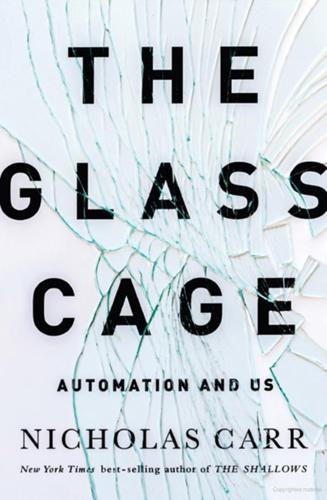
The Glass Cage: Automation and Us
by
Nicholas Carr
Published 28 Sep 2014
Bohbot, “Spatial Navigational Strategies Correlate with Gray Matter in the Hippocampus of Healthy Older Adults Tested in a Virtual Maze,” Frontiers in Aging Neuroscience 5 (2013): 1–8. 24.Email from Véronique Bohbot to author, June 4, 2010. 25.Quoted in Alex Hutchinson, “Global Impositioning Systems,” Walrus, November 2009. 26.Kyle VanHemert, “4 Reasons Why Apple’s iBeacon Is About to Disrupt Interaction Design,” Wired, December 11, 2013, www.wired.com/design/2013/12/4-use-cases-for-ibeacon-the-most-exciting-tech-you-havent-heard-of/. 27.Quoted in Fallows, “Places You’ll Go.” 28.Damon Lavrinc, “Mercedes Is Testing Google Glass Integration, and It Actually Works,” Wired, August 15, 2013, wired.com/autopia/2013/08/google-glass-mercedes-benz/. 29.William J. Mitchell, “Foreword,” in Yehuda E. Kalay, Architecture’s New Media: Principles, Theories, and Methods of Computer-Aided Design (Cambridge, Mass.: MIT Press, 2004), xi. 30.Anonymous, “Interviews: Renzo Piano,” Architectural Record, October 2001, archrecord.construction.com/people/interviews/archives/0110piano.asp. 31.Quoted in Gavin Mortimer, The Longest Night (New York: Penguin, 2005), 319. 32.Dino Marcantonio, “Architectural Quackery at Its Finest: Parametricism,” Marcantonio Architects Blog, May 8, 2010, blog.marcantonioarchitects.com/architectural-quackery-at-its-finest-parametricism/. 33.Paul Goldberger, “Digital Dreams,” New Yorker, March 12, 2001. 34.Patrik Schumacher, “Parametricism as Style—Parametricist Manifesto,” Patrik Schumacher’s blog, 2008, patrikschumacher.com/Texts/Parametricism%20as%20Style.htm. 35.Anonymous, “Interviews: Renzo Piano.” 36.Witold Rybczynski, “Think before You Build,” Slate, March 30, 2011, slate.com/articles/arts/architecture/2011/03/think_before_you_build.html. 37.Quoted in Bryan Lawson, Design in Mind (Oxford, U.K.: Architectural Press, 1994), 66. 38.Michael Graves, “Architecture and the Lost Art of Drawing,” New York Times, September 2, 2012. 39.D.
…
Scattered around stores and other spaces, iBeacon transmitters act as artificial place cells, activating whenever a person comes within range. They herald the onset of what Wired magazine calls “microlocation” tracking.26 Indoor mapping promises to ratchet up our dependence on computer navigation and further limit our opportunities for getting around on our own. Should personal head-up displays, such as Google Glass, come into wide use, we would always have easy and immediate access to turn-by-turn instructions. We’d receive, as Google’s Michael Jones puts it, “a continuous stream of guidance,” directing us everywhere we want to go.27 Google and Mercedes-Benz are already collaborating on an app that will link a Glass headset to a driver’s in-dash GPS unit, enabling what the carmaker calls “door-to-door navigation.”28 With the GPS goddess whispering in our ear, or beaming her signals onto our retinas, we’ll rarely, if ever, have to exercise our mental mapping skills.
…
Brian Arthur, “The Second Economy,” McKinsey Quarterly, October 2011. 17.Ibid. 18.Bill Gates, Business @ the Speed of Thought: Using a Digital Nervous System (New York: Warner Books, 1999), 37. 19.Arthur C. Clarke, Profiles of the Future: An Inquiry into the Limits of the Possible (New York: Harper & Row, 1960), 227. 20.Sergey Brin, “Why Google Glass?,” speech at TED2013, Long Beach, Calif., February 27, 2013, youtube.com/watch?v=rie-hPVJ7Sw. 21.Ibid. 22.See Christopher D. Wickens and Amy L. Alexander, “Attentional Tunneling and Task Management in Synthetic Vision Displays,” International Journal of Aviation Psychology 19, no. 2 (2009): 182–199. 23.Richard F.
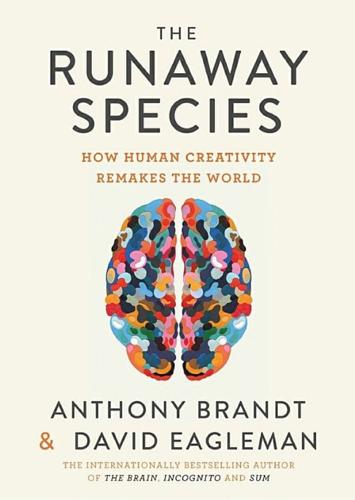
The Runaway Species: How Human Creativity Remakes the World
by
David Eagleman
and
Anthony Brandt
Published 30 Sep 2017
In order to briskly design and filter new products, X developed “Home” and “Away” teams. When Google came up with an idea for wearable computing – Google Glass – the Home team was tasked with quickly creating a working model. Using a coat hanger, a low-cost projector and a clear plastic sheet protector as a screen, the Home team built the first mock-up of Glass in one day. The job of the Away team was to rush out to a public space like a shopping mall and get as much feedback from potential customers as they could. An early model of Google Glass weighed 8 pounds – it was more of a helmet than a pair of eyeglasses. The Home team thought they had hit pay dirt when they got that weight down to less than that of an average pair of spectacles.
…
The Arts and Achievement in At-Risk Youth: Findings from Four Longitudinal Studies. Washington: National Endowment for the Arts, 2012. Chanin, A.L., “Les Demoiselles de Picasso,” New York Times, August 18, 1957. Chi, Tom. “Rapid Prototyping Google Glass.” TED-Ed. November 17, 2012. Accessed May 17, 2016. <http://ed.ted.com/lessons/rapid-prototyping-google-glass-tom-chi#watch> Chin, Andrea. “Ai Weiwei Straightens 150 Tons of Steel Rebar from Sichuan Quake.” Designboom. June 4, 2013. Accessed May 11, 2016. <http://www.designboom.com/art/ai-weiwei-straightens-150-tons-of-steel-rebar-from-sichuan-quake/> Cho, Yun Sun et al.
…
There were insurmountable privacy concerns with the idea, mostly pivoting on the fact that bystanders didn’t want to be videoed. Abandoning Glass didn’t harm the Google enterprise, though: the engineers and designers went on to other teams, utilizing what they’d learned on other projects. In the end, Google Glass was just one of many fruits on the company’s tree, and it wasn’t the best one. Google had plenty of others, so they weren’t afraid to drop what wasn’t working. Generating ideas and trashing most of them can feel wasteful, but it’s the heart of the creative process. In a world in which time is money, the challenge is that the hours spent sketching or brainstorming can be viewed as lost productivity.

Radical Technologies: The Design of Everyday Life
by
Adam Greenfield
Published 29 May 2017
Unsurprisingly, concerns centered more on the device’s data-collection capability than anything else: according to 5 Point owner Dave Meinert, his customers “don’t want to be secretly filmed or videotaped and immediately put on the Internet.” This is, of course, an entirely reasonable expectation, not merely in the liminal space of a dive bar but anywhere in the city. Casey Newton, “Seattle dive bar becomes first to ban Google Glass,” CNET, March 8, 2013. 23.Dan Wasserman, “Google Glass Rolls Out Diane von Furstenberg frames,” Mashable, June 23, 2014. 4Digital fabrication 1.John Von Neumann, Theory of Self-Reproducing Automata, Urbana: University of Illinois Press, 1966, cba.mit.edu/events/03.11.ASE/docs/VonNeumann.pdf. 2.You may be familiar with cellular automata from John Conway’s 1970 Game of Life, certainly the best-known instance of the class.
…
The sole genuine justification for AR is the idea that information is simply there, and can be assimilated without thought or effort. And if this sense of effortlessness will never truly be achievable via handset, it is precisely what an emerging class of wearable mediators aims to provide for its users. The first of this class to reach consumers was the ill-fated Google Glass, which mounted a high-definition, forward-facing camera, a head-up reticle and the microphone required by its natural-language speech recognition interface on a lightweight aluminum frame. While Glass posed any number of aesthetic, practical and social concerns—all of which remain to be convincingly addressed, by Google or anyone else—it does at least give us a way to compare hands-free, head-mounted AR with the handset-based approach.
…
This is of special concern given the prospect that one or another form of wearable AR might become as prominent in the negotiation of everyday life as the smartphone itself. There is, of course, not much in the way of meaningful prognostication that can be made ahead of any mass adoption, but it’s not unreasonable to build our expectations on the few things we do know empirically. Early users of Google Glass reported disorientation upon removing the headset, after as few as fifteen minutes of use. This is a mild disorientation, to be sure, and easily shaken off—from all accounts, the sort of uneasy feeling that attends staring over-long at an optical illusion, and not the more serious nausea and dizziness suffered by a significant percentage of those using VR.12 If this represents the outer limit of discomfort experienced by users, it’s hard to believe that it would have much impact on either the desirability of the product or people’s ability to function after using it.

The Inevitable: Understanding the 12 Technological Forces That Will Shape Our Future
by
Kevin Kelly
Published 6 Jun 2016
Right now, if you mash up Google Maps and monster.com, you get maps of where jobs are located by salary. In the same way, it is easy to see that, in the great networked library, everything that has ever been written about, for example, Trafalgar Square in London could be visible while one stands in Trafalgar Square via a wearable screen like Google Glass. In the same way, every object, event, or location on earth would “know” everything that has ever been written about it in any book, in any language, at any time. From this deep structuring of knowledge comes a new culture of participation. You would be interacting—with your whole body—with the universal book.
…
Computer chips are becoming so small, and screens so thin and cheap, that in the next 30 years semitransparent eyeglasses will apply an informational layer to reality. If you pick up an object while peering through these spectacles, the object’s (or place’s) essential information will appear in overlay text. In this way screens will enable us to “read” everything, not just text. Yes, these glasses look dorky, as Google Glass proved. It will take a while before their form factor is worked out and they look fashionable and feel comfortable. But last year alone, five quintillion (10 to the power of 18) transistors were embedded into objects other than computers. Very soon most manufactured items, from shoes to cans of soup, will contain a small sliver of dim intelligence, and screens will be the tool we use to interact with this ubiquitous cognification.
…
And since what is in front of your eyes is just a small surface area, it is much easier and cheaper to magnify small improvements in quality. This tiny little area can invoke a huge disruptive presence. But while “presence” will sell it, VR’s enduring benefits spring from its interactivity. It is unclear how comfortable, or uncomfortable, we’ll be with the encumbrances of VR gear. Even the streamlined Google Glass (which I also tried), a very mild AR display not much bigger than sunglasses, seemed too much trouble for most people in its first version. Presence will draw users in, but it is the interactivity quotient of VR that will keep it going. Interacting in all degrees will spread out to the rest of the technological world
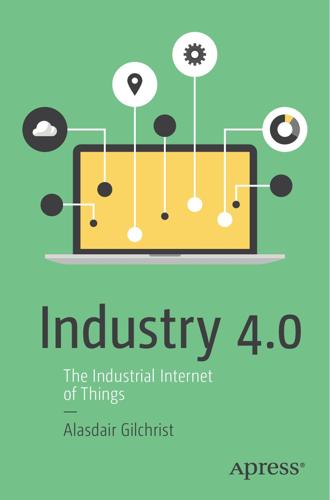
Industry 4.0: The Industrial Internet of Things
by
Alasdair Gilchrist
Published 27 Jun 2016
It is not very efficient and they have the same problems as the forklift drivers, finding their way around the warehouse and locating the stock. However, help is at hand through augmented reality. The most commonly known augmented reality device is Google Glass; however, other manufacturers produce products with AR capabilities. Where augmented reality or, for the sake of explanation, Google Glass, comes into logistics is that it is extremely beneficial for human stock pickers. Google Glass can show on the heads up and hand free display the pick list, but can also show additional information such as location of the item and give directions on how to get there. Furthermore, it can capture an image of the item to verify it is the correct stock item.
…
Each of these virtual supermarkets has a completely empty floor space and situated near high footfall areas (e.g., train or subway stations, parks, and universities). The interesting thing is that while the naked eye will just see empty floors and walls, people using an AR-capable device, for example Google Glass, will see shelves filled with vegetables, fruit, meat, fish, beer, and all sorts of real-world products. To buy these virtual products, the customer scans each virtual product with their own mobile devices, adding it to their online shopping carts. They subsequently receive delivery of the products to their homes.
…
Gilchrist, Industry 4.0, DOI 10.1007/978-1-4842-2047-4 246 Index Constrained application protocol (CoAP), 128 advanced analytics, 84 queries, 83 storage, persistence, and retrieval serves, 83 Control area network (CAN), 181 Customers’ premise equipment (CPE), 42 Cyber-physical system (CPS), 36 D Data bus, 139 Data distribution service (DDS), 138 Data management, 82 Delay tolerant networks (DTN), 139 Distributed component object model (DCOM), 148 Dynamic name server (DNS), 127 E Epidemic technique, 141 Ethernet, 120, 127 Extensible Messaging and Presence Protocol (XMPP), 137 F Functional domains, 69 asset management, 71 communication function, 70 control domain, 70 executor, 71 modeling data, 71 G Giraff, 15 Google Glass, 25 H Human machine interface (HMI), 20–21, 45 HVAC system, 131 I, J, K Identity access management (IAM), 191 IIoT architecture architectural topology, 75 data management, 82 IIAF application domain, 75 Business domain, 75 Business viewpoint, 68 functional domains (see Functional domains) information domain, 73 operation domain, 72 stakeholder, 67 usage viewpoint, 68 implementation viewpoint, 75 Industrial Internet IIC, 66 IISs, 66 ISs, 66 M2M, 66 key system characteristics, 79 communication layer functions, 81 connectivity functions, 80 data communications, 79 deliver data, 80 M2M, 65 three-tier topology communication transport layer, 78 connectivity, 78 connectivity framework layer, 78 edge tier, 76 enterprise tier, 76 gateway-mediated edge, 77 platform tier, 76 IIoT middleware architecture, 156 commercial platforms, 160 components, 156 conceptual diagram, 154 connectivity platforms, 157 mobile operators, 158 open source solutions, 160 requirements, 159 IIoT WAN technology 3G/4G/LTE, 164 cable modem, 166 DWDM, 165 free space optics, 166 Index FTTX, 165 internet connectivity, 162 M2M Dash7 protocol, 172 LoRaWAN architecture, 171 LTE cellular technology, 175 MAC/PHY layer, 169 millimeter radio, 176 OSI layers, 169 requirements, 167 RPMA LP-WAN, 173 SigFox, 170 Weightless SIG, 175 Wi-Fi, 174 MPLS, 164 SDH/Sonnet, 163 VSAT, 167 WAN channels, 162 WiMax, 166 xDSL, 163 Industrial Internet 3D printing, 60 augmented reality (AR), 59 Big Data, 52 business value, 55 variety, 54 velocity, 54 veracity, 55 visualizing data, 55 volumes of, data, 53 CAN network, 181 Cloud model, 47 CPS, 35 fog network, 51 ICS, 180 IFE, 182 IP Mobility, 40 M2M learning and artificial intelligence, 56 Miniaturization, 34 Network virtualization, 43 NFV, 42 people vs. automation, 62 remote I/O devices, 34 Russian hackers, 180 SDN, 44 SDN vs.

The Road to Conscious Machines
by
Michael Wooldridge
Published 2 Nov 2018
What happens if each of us is perceiving the world in a completely different way? AI might make this possible. In 2013, Google released a wearable computer technology called Google Glass. Resembling everyday spectacles, Google Glass was equipped with a camera and a small projector. The glasses connected to a smartphone via a Bluetooth connection. Upon release there were immediate concerns about the ‘concealed’ camera in Google Glass being used to take pictures in inappropriate situations, but the real potential of the device was in the built-in projector, which could overlay whatever the user was seeing with a projected image.
…
For example, one thing I am personally very bad at is recognizing people: it is a source of continual embarrassment that I meet people I know well but nevertheless struggle to recognize. A Google Glass application that could identify the people I’m looking at and discreetly remind me of their names would be wonderful. These types of applications are called augmented reality: they take the real world and overlay it with computer-generated information or images. But what about apps that do not augment reality but completely change it, in a way that is imperceptible to users? My son, Tom, is 13 years old at the time of writing. He is a big fan of J.R.R. Tolkien’s Lord of the Rings books, and the films that were made from them. Imagine a Google Glass app that altered his view of school so that his friends looked like elves, and his schoolteachers looked like orcs.
…
A A* 77 À la recherche du temps perdu (Proust) 205–8 accountability 257 Advanced Research Projects Agency (ARPA) 87–8 adversarial machine learning 190 AF (Artificial Flight) parable 127–9, 243 agent-based AI 136–49 agent-based interfaces 147, 149 ‘Agents That Reduce Work and Information Overload’ (Maes) 147–8 AGI (Artificial General Intelligence) 41 AI – difficulty of 24–8 – ethical 246–62, 284, 285 – future of 7–8 – General 42, 53, 116, 119–20 – Golden Age of 47–88 – history of 5–7 – meaning of 2–4 – narrow 42 – origin of name 51–2 – strong 36–8, 41, 309–14 – symbolic 42–3, 44 – varieties of 36–8 – weak 36–8 AI winter 87–8 AI-complete problems 84 ‘Alchemy and AI’ (Dreyfus) 85 AlexNet 187 algorithmic bias 287–9, 292–3 alienation 274–7 allocative harm 287–8 AlphaFold 214 AlphaGo 196–9 AlphaGo Zero 199 AlphaZero 199–200 Alvey programme 100 Amazon 275–6 Apple Watch 218 Argo AI 232 arithmetic 24–6 Arkin, Ron 284 ARPA (Advanced Research Projects Agency) 87–8 Artificial Flight (AF) parable 127–9, 243 Artificial General Intelligence (AGI) 41 artificial intelligence see AI artificial languages 56 Asilomar principles 254–6 Asimov, Isaac 244–6 Atari 2600 games console 192–6, 327–8 augmented reality 296–7 automated diagnosis 220–1 automated translation 204–8 automation 265, 267–72 autonomous drones 282–4 Autonomous Vehicle Disengagement Reports 231 autonomous vehicles see driverless cars autonomous weapons 281–7 autonomy levels 227–8 Autopilot 228–9 B backprop/backpropagation 182–3 backward chaining 94 Bayes nets 158 Bayes’ Theorem 155–8, 365–7 Bayesian networks 158 behavioural AI 132–7 beliefs 108–10 bias 172 black holes 213–14 Blade Runner 38 Blocks World 57–63, 126–7 blood diseases 94–8 board games 26, 75–6 Boole, George 107 brains 43, 306, 330–1 see also electronic brains branching factors 73 Breakout (video game) 193–5 Brooks, Rodney 125–9, 132, 134, 243 bugs 258 C Campaign to Stop Killer Robots 286 CaptionBot 201–4 Cardiogram 215 cars 27–8, 155, 223–35 certainty factors 97 ceteris paribus preferences 262 chain reactions 242–3 chatbots 36 checkers 75–7 chess 163–4, 199 Chinese room 311–14 choice under uncertainty 152–3 combinatorial explosion 74, 80–1 common values and norms 260 common-sense reasoning 121–3 see also reasoning COMPAS 280 complexity barrier 77–85 comprehension 38–41 computational complexity 77–85 computational effort 129 computers – decision making 23–4 – early developments 20 – as electronic brains 20–4 – intelligence 21–2 – programming 21–2 – reliability 23 – speed of 23 – tasks for 24–8 – unsolved problems 28 ‘Computing Machinery and Intelligence’ (Turing) 32 confirmation bias 295 conscious machines 327–30 consciousness 305–10, 314–17, 331–4 consensus reality 296–8 consequentialist theories 249 contradictions 122–3 conventional warfare 286 credit assignment problem 173, 196 Criado Perez, Caroline 291–2 crime 277–81 Cruise Automation 232 curse of dimensionality 172 cutlery 261 Cybernetics (Wiener) 29 Cyc 114–21, 208 D DARPA (Defense Advanced Research Projects Agency) 87–8, 225–6 Dartmouth summer school 1955 50–2 decidable problems 78–9 decision problems 15–19 deduction 106 deep learning 168, 184–90, 208 DeepBlue 163–4 DeepFakes 297–8 DeepMind 167–8, 190–200, 220–1, 327–8 Defense Advanced Research Projects Agency (DARPA) 87–8, 225–6 dementia 219 DENDRAL 98 Dennett, Daniel 319–25 depth-first search 74–5 design stance 320–1 desktop computers 145 diagnosis 220–1 disengagements 231 diversity 290–3 ‘divide and conquer’ assumption 53–6, 128 Do-Much-More 35–6 dot-com bubble 148–9 Dreyfus, Hubert 85–6, 311 driverless cars 27–8, 155, 223–35 drones 282–4 Dunbar, Robin 317–19 Dunbar’s number 318 E ECAI (European Conference on AI) 209–10 electronic brains 20–4 see also computers ELIZA 32–4, 36, 63 employment 264–77 ENIAC 20 Entscheidungsproblem 15–19 epiphenomenalism 316 error correction procedures 180 ethical AI 246–62, 284, 285 European Conference on AI (ECAI) 209–10 evolutionary development 331–3 evolutionary theory 316 exclusive OR (XOR) 180 expected utility 153 expert systems 89–94, 123 see also Cyc; DENDRAL; MYCIN; R1/XCON eye scans 220–1 F Facebook 237 facial recognition 27 fake AI 298–301 fake news 293–8 fake pictures of people 214 Fantasia 261 feature extraction 171–2 feedback 172–3 Ferranti Mark 1 20 Fifth Generation Computer Systems Project 113–14 first-order logic 107 Ford 232 forward chaining 94 Frey, Carl 268–70 ‘The Future of Employment’ (Frey & Osborne) 268–70 G game theory 161–2 game-playing 26 Gangs Matrix 280 gender stereotypes 292–3 General AI 41, 53, 116, 119–20 General Motors 232 Genghis robot 134–6 gig economy 275 globalization 267 Go 73–4, 196–9 Golden Age of AI 47–88 Google 167, 231, 256–7 Google Glass 296–7 Google Translate 205–8, 292–3 GPUs (Graphics Processing Units) 187–8 gradient descent 183 Grand Challenges 2004/5 225–6 graphical user interfaces (GUI) 144–5 Graphics Processing Units (GPUs) 187–8 GUI (graphical user interfaces) 144–5 H hard problem of consciousness 314–17 hard problems 84, 86–7 Harm Assessment Risk Tool (HART) 277–80 Hawking, Stephen 238 healthcare 215–23 Herschel, John 304–6 Herzberg, Elaine 230 heuristic search 75–7, 164 heuristics 91 higher-order intentional reasoning 323–4, 328 high-level programming languages 144 Hilbert, David 15–16 Hinton, Geoff 185–6, 221 HOMER 141–3, 146 homunculus problem 315 human brain 43, 306, 330–1 human intuition 311 human judgement 222 human rights 277–81 human-level intelligence 28–36, 241–3 ‘humans are special’ argument 310–11 I image classification 186–7 image-captioning 200–4 ImageNet 186–7 Imitation Game 30 In Search of Lost Time (Proust) 205–8 incentives 261 indistinguishability 30–1, 37, 38 Industrial Revolutions 265–7 inference engines 92–4 insurance 219–20 intelligence 21–2, 127–8, 200 – human-level 28–36, 241–3 ‘Intelligence Without Representation’ (Brooks) 129 Intelligent Knowledge-Based Systems 100 intentional reasoning 323–4, 328 intentional stance 321–7 intentional systems 321–2 internal mental phenomena 306–7 Internet chatbots 36 intuition 311 inverse reinforcement learning 262 Invisible Women (Criado Perez) 291–2 J Japan 113–14 judgement 222 K Kasparov, Garry 163 knowledge bases 92–4 knowledge elicitation problem 123 knowledge graph 120–1 Knowledge Navigator 146–7 knowledge representation 91, 104, 129–30, 208 knowledge-based AI 89–123, 208 Kurzweil, Ray 239–40 L Lee Sedol 197–8 leisure 272 Lenat, Doug 114–21 lethal autonomous weapons 281–7 Lighthill Report 87–8 LISP 49, 99 Loebner Prize Competition 34–6 logic 104–7, 121–2 logic programming 111–14 logic-based AI 107–11, 130–2 M Mac computers 144–6 McCarthy, John 49–52, 107–8, 326–7 machine learning (ML) 27, 54–5, 168–74, 209–10, 287–9 machines with mental states 326–7 Macintosh computers 144–6 magnetic resonance imaging (MRI) 306 male-orientation 290–3 Manchester Baby computer 20, 24–6, 143–4 Manhattan Project 51 Marx, Karl 274–6 maximizing expected utility 154 Mercedes 231 Mickey Mouse 261 microprocessors 267–8, 271–2 military drones 282–4 mind modelling 42 mind-body problem 314–17 see also consciousness minimax search 76 mining industry 234 Minsky, Marvin 34, 52, 180 ML (machine learning) 27, 54–5, 168–74, 209–10, 287–9 Montezuma’s Revenge (video game) 195–6 Moore’s law 240 Moorfields Eye Hospital 220–1 moral agency 257–8 Moral Machines 251–3 MRI (magnetic resonance imaging) 306 multi-agent systems 160–2 multi-layer perceptrons 177, 180, 182 Musk, Elon 238 MYCIN 94–8, 217 N Nagel, Thomas 307–10 narrow AI 42 Nash, John Forbes Jr 50–1, 161 Nash equilibrium 161–2 natural languages 56 negative feedback 173 neural nets/neural networks 44, 168, 173–90, 369–72 neurons 174 Newell, Alan 52–3 norms 260 NP-complete problems 81–5, 164–5 nuclear energy 242–3 nuclear fusion 305 O ontological engineering 117 Osborne, Michael 268–70 P P vs NP problem 83 paperclips 261 Papert, Seymour 180 Parallel Distributed Processing (PDP) 182–4 Pepper 299 perception 54 perceptron models 174–81, 183 Perceptrons (Minsky & Papert) 180–1, 210 personal healthcare management 217–20 perverse instantiation 260–1 Phaedrus 315 physical stance 319–20 Plato 315 police 277–80 Pratt, Vaughan 117–19 preference relations 151 preferences 150–2, 154 privacy 219 problem solving and planning 55–6, 66–77, 128 programming 21–2 programming languages 144 PROLOG 112–14, 363–4 PROMETHEUS 224–5 protein folding 214 Proust, Marcel 205–8 Q qualia 306–7 QuickSort 26 R R1/XCON 98–9 radiology 215, 221 railway networks 259 RAND Corporation 51 rational decision making 150–5 reasoning 55–6, 121–3, 128–30, 137, 315–16, 323–4, 328 regulation of AI 243 reinforcement learning 172–3, 193, 195, 262 representation harm 288 responsibility 257–8 rewards 172–3, 196 robots – as autonomous weapons 284–5 – Baye’s theorem 157 – beliefs 108–10 – fake 299–300 – indistinguishability 38 – intentional stance 326–7 – SHAKEY 63–6 – Sophia 299–300 – Three Laws of Robotics 244–6 – trivial tasks 61 – vacuum cleaning 132–6 Rosenblatt, Frank 174–81 rules 91–2, 104, 359–62 Russia 261 Rutherford, Ernest (1st Baron Rutherford of Nelson) 242 S Sally-Anne tests 328–9, 330 Samuel, Arthur 75–7 SAT solvers 164–5 Saudi Arabia 299–300 scripts 100–2 search 26, 68–77, 164, 199 search trees 70–1 Searle, John 311–14 self-awareness 41, 305 see also consciousness semantic nets 102 sensors 54 SHAKEY the robot 63–6 SHRDLU 56–63 Simon, Herb 52–3, 86 the Singularity 239–43 The Singularity is Near (Kurzweil) 239 Siri 149, 298 Smith, Matt 201–4 smoking 173 social brain 317–19 see also brains social media 293–6 social reasoning 323, 324–5 social welfare 249 software agents 143–9 software bugs 258 Sophia 299–300 sorting 26 spoken word translation 27 STANLEY 226 STRIPS 65 strong AI 36–8, 41, 309–14 subsumption architecture 132–6 subsumption hierarchy 134 sun 304 supervised learning 169 syllogisms 105, 106 symbolic AI 42–3, 44, 181 synapses 174 Szilard, Leo 242 T tablet computers 146 team-building problem 78–81, 83 Terminator narrative of AI 237–9 Tesla 228–9 text recognition 169–71 Theory of Mind (ToM) 330 Three Laws of Robotics 244–6 TIMIT 292 ToM (Theory of Mind) 330 ToMnet 330 TouringMachines 139–41 Towers of Hanoi 67–72 training data 169–72, 288–9, 292 translation 204–8 transparency 258 travelling salesman problem 82–3 Trolley Problem 246–53 Trump, Donald 294 Turing, Alan 14–15, 17–19, 20, 24–6, 77–8 Turing Machines 18–19, 21 Turing test 29–38 U Uber 168, 230 uncertainty 97–8, 155–8 undecidable problems 19, 78 understanding 201–4, 312–14 unemployment 264–77 unintended consequences 263 universal basic income 272–3 Universal Turing Machines 18, 19 Upanishads 315 Urban Challenge 2007 226–7 utilitarianism 249 utilities 151–4 utopians 271 V vacuum cleaning robots 132–6 values and norms 260 video games 192–6, 327–8 virtue ethics 250 Von Neumann and Morgenstern model 150–5 Von Neumann architecture 20 W warfare 285–6 WARPLAN 113 Waymo 231, 232–3 weak AI 36–8 weapons 281–7 wearable technology 217–20 web search 148–9 Weizenbaum, Joseph 32–4 Winograd schemas 39–40 working memory 92 X XOR (exclusive OR) 180 Z Z3 computer 19–20 PELICAN BOOKS Economics: The User’s Guide Ha-Joon Chang Human Evolution Robin Dunbar Revolutionary Russia: 1891–1991 Orlando Figes The Domesticated Brain Bruce Hood Greek and Roman Political Ideas Melissa Lane Classical Literature Richard Jenkyns Who Governs Britain?

Machines of Loving Grace: The Quest for Common Ground Between Humans and Robots
by
John Markoff
Published 24 Aug 2015
Today, of course, the Walkmans have been replaced by Apple’s iconic bright white iPhone headphones, and there are some who believe that technology haute couture will inevitably lead to a future version of Google Glass—the search engine maker’s first effort to augment reality—or perhaps more ambitious and immersive systems. Like the frog in the pot, we have been desensitized to the changes wrought by the rapid increase and proliferation of information technology. The Walkman, the iPhone, and Google Glass all prefigure a world where the line between what is human and who is machine begins to blur. William Gibson’s Neuromancer, the science-fiction novel that popularized the idea of cyberspace, drew a portrait of a new cybernetic territory composed of computers and networks.
…
It also painted a future in which computers were not discrete boxes, but would be woven together into a dense fabric that was increasingly wrapped around human beings, “augmenting” their senses. It is not such a big leap to move from the early-morning commuters wearing Sony Walkman headsets, past the iPhone users wrapped in their personal sound bubbles, directly to Google Glass–wearing urban hipsters watching tiny displays that annotate the world around them. They aren’t yet “jacked into the net,” as Gibson foresaw, but it is easy to assume that computing and communication technology is moving rapidly in that direction. Gibson was early to offer a science-fiction vision of what has been called “intelligence augmentation.”
…
He secretly set up a laboratory modeled vaguely on Xerox PARC, the legendary computer science laboratory that was the birthplace of the modern personal computer, early computer networks, and the laser printer, creating projects in autonomous cars and reinventing mobile computing. Among other projects, he helped launch Google Glass, which was an effort to build computing capabilities including vision and speech into ordinary glasses. Unlike laboratories of the previous era that emphasized basic science, such as IBM Research and Bell Labs, Google’s X Lab was closer in style to PARC, which had been established to vault the copier giant, restyled “the Document Company,” into the computer industry—to compete directly with IBM.
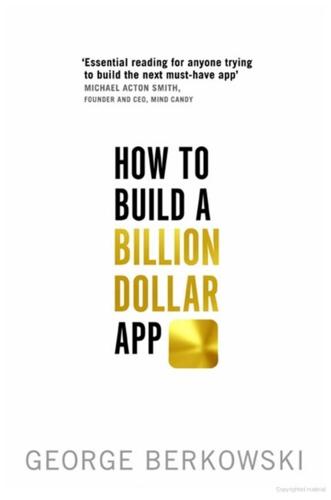
How to Build a Billion Dollar App: Discover the Secrets of the Most Successful Entrepreneurs of Our Time
by
George Berkowski
Published 3 Sep 2014
While the media and blogosphere speculate about a vastly superior ‘iWatch’ in the offing from Apple – one that will incorporate all kinds of clever non-invasive sensors that may measure all kinds of things, including heart rate, oxygen saturation, perspiration and blood sugar levels in addition to the already commonplace step- and calorie-measuring sensors – other companies are already profiting from wearable technology. The fitness-bracelet market – where devices like Fitbit, Nike’s Fuelband and the Jawbone Up lead the market – delivered $2 billion in revenue in 2013. And that number is expected to triple by 2015.29 But all those technologies pale in comparison with one. Say hello (or OK) to Google Glass. Google Glass is 63 grams of hardware – a modern-looking set of glass frames (without lenses) sporting a microdisplay that projects an interface (which appears as a floating 27-inch display) into your field of vision. Think of it as an advanced – and heavily miniaturised – version of the Heads Up Display (HUD) systems that fighter pilots use.
…
It was just a matter of years. When the next technology cycle begins – and it will undoubtedly be something more wearable – it will begin with huge swathes of the ecosystem already in place. The time to get 1 billion active users of a gizmo like Google Glass will be a lot shorter than the eight years it took the smartphone to smash that milestone. While Google Glass has received a lot of attention because of Google’s profile, another equally fascinating, and potentially even more disruptive, technology company has captured headline. It is called Oculus VR and it might just be the first company to bring virtual reality to the masses.
…
What was once a heavy screen confined to the desktop became a smaller screen able to be carried in your pocket, which will now become a screen and voice-control system so light – 63 grams – that you barely notice you’re wearing or carrying it. And it gets spookier. There are projects under way that will enable features like Google Glass to be packed into a contact lens.30 The implications of such an unobtrusive – and powerful – interface are simply jaw-dropping. If we go back to the beginning of the last technology cycle – that of the smartphone, kicked off by the iPhone in 2007 – we can see how quickly a touchscreen interface, a powerful operating system, integrated sensors and a ubiquitous mobile Internet connection changed our lives.

The Stack: On Software and Sovereignty
by
Benjamin H. Bratton
Published 19 Feb 2016
Hugo De Garis, The Artilect War: Cosmists vs. Terrans: A Bitter Controversy Concerning Whether Humanity Should Build Godlike Massively Intelligent Machines (Palm Springs, CA: ETC Publications, 2005). 72. Gigi Fenomen, “New App Allows Piloting a Drone with Google Glass Using Head Movements,” Android Apps, August 24, 2013, http://android-apps.com/news/new-app-allows-piloting-a-drone-with-google-glass-using-head-movements/. 73. Let me propose that Philip K. Dick's novel A Scanner Darkly (Garden City, NY: Doubleday, 1977), should be part of the standard high school literature curriculum, if only because the existential psychology of the User will prove to be based on first-person access to third-person experiences of first-person experiences. 74.
…
See also Earth artificial megastructures, 176–183 constitutional, 111 defined, 371 economic, 199 essential importance of, 149 exceptional or unregularized, 30 informational, 29 Internet, 361 of jurisdiction, 171–176, 283, 308–309, 323 of multiple geographies, 245–246 politico-theological, 242, 248, 320–322 of The Stack, sovereignty over, 33 superimposition of the addressing matrix, 193 telescoping, 16, 101, 178, 197, 220, 229, 235, 266 geolocated augmented reality, 438n60 geolocative advertising, 255 geolocative Apps, 236, 243 geometrics, 90–91, 309 geometry of territory, 25 geophilosophy (Deleuze and Guattari), 372 geopolitical architecture designed, 38 of Earth layer, 98, 300–302 European, 27 new, need for, 3, 300–302 unipolar, future of, 309–310 geopolitical conflict Google-China, 9, 112–115, 143–144, 245, 361 historical, 6 Nicaragua-Costa Rica border, 9, 120, 144 present-day, 6 geopolitical domains, 118–119 geopolitical geography, 4–5, 19, 33, 65, 252 of borders, 6–7, 97, 172–173, 308–310, 323, 409n42 of conflict, 6, 9, 112–115, 120, 143–144, 245, 361 design model, 3–6 energy driving alignments in, 141 European nomos, 25–26 future-antecedent revision of, 14–17 geometry of, 13–17 loop topology of, 84 mapping, 4–5 of planetary-scale computation, 14–17, 143 TBIT controversy, 174–176 geopolitical theory, 328 geopolitics, 19, 39–40, 257–258, 326, 360 of addressability, 193, 207–208 of addresses, 193–194 algorithmic, 449n56 City layer, 155, 160, 444n26 of climate change, 140–141 Cloud layer, 110–112, 114, 454n75 within comparative planetology, 353 compositional, 85 computational, 360 defined, 371–372 design, 119, 141–145 elements of, 246–247 as epidermal, 355 framework, 159 geoscopy and, 85 Google model, 125, 134–136 of interfaciality, 228 modern, basis of, 24 post-Anthropocenic, 285 of postscarcity, 95 projection as territory/territory as projection, 85 spacelessness of contemporary, 30 space of, 6 geoscapes, 243–249, 372, 429n61 geoscopy, 85, 87, 89–90 geotheological innovation, 242–243 Germany, 309 Gershenfeld, Neil, 226 ghost sovereignties, 100–101 gift economy, 429n59 GigaOM, 186 Girard, Rene, 360 global assemblages, 265–266 global citizenship, basis of, 257 global commons, 35–36 global infrastructure, 139–140 globalization fundamentalism and, 143 individual experience of, 270 infrastructure, 45, 110 international system of control in, 443n23 of postal domains, 194 of risk, 321 software-driven, 348 spatial warfare of, 431n70 twentieth-century, Schmitt's view of, 31–32 of urban geography, 151 globally unique identifier (GUI), 168, 207, 254 global society, Anthropocenic, 106 global urban, 177–179 global visualizations, 265–266 Göbekli Tepe, 149, 176, 188 Godard, Jean-Luc, 147, 158 gold, 82, 104, 336 gold standard, 199, 336 goods and services, quality of, 313 Google advertising infrastructure, 137 algorithmic methods, 332 architectural footprint, 184–185 AR game, 241–242 Cloud Polis, 132, 134–141, 184–185, 187–188, 332 conflict with China, 9, 112–115, 143–144, 245, 361 cosmopolitan logic of, 322 economic sovereignty, 122 Facebook compared, 126 future of, 129, 141–142 geographic strategy, 9, 120, 144 geopolitical model, 125, 134–136 Grossraum, 34–40, 134, 295, 318, 372 infrastructure, physical, 10–11, 113 Interface joke, 332 interfacial regime, 247 mission statement, 87, 122, 134, 138, 186, 353, 396n10 as monopoly, 400n41 nation-state functions, 10–11 Nest, purchase of, 134 network architecture, 118–119 Nortel patent bid, 134 oceanic data centers, 140 OpenFlow's advantages to, 437n58 platform universality, 332 political theology of, 425n46 proto-citizenship, 122 revenue stream, 136–138, 159, 444n26 search infrastructure, 136–138 shutting down access to, 403n63 synthetic catallaxy, 331 territorial footprint, 113 US-centricity, 135 Google AdWords, 255 Google AI, 134 Google bashing, 402n62 Google Car, 129, 134, 139, 281–282, 344, 437n55, 437n57. See also cars: driverless Google charter cities, 352 Google City, 444n26 Googledome, 184 Google Earth, 86, 91, 134, 242, 247–248, 322, 391n30, 431n70 Google Earth RealTime, 299–300 Google Energy, 134, 140 Google Fiber, 399n31 Google Glass, 129, 134, 282, 308, 381n30, 438n60 Google Glass App, 288 Google Gosplan, 328, 332, 363–364, 372 Google ID, 295 Google Ideas, 134, 361 Google Island, 315 Google Maps, 9, 120, 144, 242, 265, 431n70 Googleplex, 183–185 Google Public DNS, 136 Google Robotics, 134, 138–139 Google Sovereignty, 134 Google Space, 134 Google Time, 134 Google 2.0, 184–185 Google Wallet, 127 Google: Words Beyond Grammar (Groys), 239 Google World, 134–135 gorilla populations, 82–83 Gosplan Google, 328, 332, 363–364, 372 Soviet, 59, 138, 329 governance of addresses, 198–199 Address layer, 196 algorithmic, 134, 332–334, 337–338, 341–342, 348, 368 apparatus of, 173–174 Cloud layer, 68, 140, 143 of Cloud Polis, 113–114 computational, 90, 97, 112, 327 cybernetic, 341 ecological, 88–90, 97–106 economic, 329–330 geographic, modes of, 27 of interfaces, 325 Internet, 143 intervention versus interfaciality in, 227–228 machine of, 173–174 of the market, 329–330 meaning of, 327 new forms of, 5, 119, 260 new war over, 10–11 Obama-era infrastructuralism, 180–181 object of, 357, 454n75 of platforms, 143 spatial, 163 technologies of, 7–8 training by computation, 90 of urban interfaces, 155–157, 163, 326 of urban platforms, 326 of the User, 49, 159 governmentality, 7–8, 327 government layer, 396n12 Graeber, David, 443n23 Grand Canyon AR overlay, 242 graphical user interface (GUI).
…
Typical of this perspective is Jean-Luc Nancy, The Creation of the World, or Globalization (Albany, NY: SUNY Press, 2002). 40. A particularly egregious example is Franco “Bifo” Berardi's missive, Neuro-Totalitarianism in Technomaya Goog-Colonization of the Experience and Neuro-Plastic Alternative (Los Angeles: Semtiotext(e), and New York: Whitney Museum, 2014). His target is Google Glass, a piece of hardware that takes on black magic powers in his estimation. In the Interfaces chapter, I will discuss the dangers of augmented reality-based interfacial totalities to engender forms of cognitive totalitarianism, but this is not because they train attention on artificial images, negating our natural faculties of reason and experience (see also the Phaedrus, and Socrates’ admonitions against the written word, 370 B.C., or the whole history of experimental cinema).

Augmented: Life in the Smart Lane
by
Brett King
Published 5 May 2016
Whether from Continuum, Iron Man, Batman, Deus Ex or the modern-day F22 Raptor fighter jet, the concept of an augmented, head-up display (HUD)12 vision has been a staple of science fiction and military aircraft for more than 50 years. When Google Glass launched in 2013, it launched to great media fanfare.13 Glass was considered the next big leap in both wearable technologies and augmented reality (AR), but as with all such leaps in technology it was met with either unyielding passion or mild derision. In media context, however, Google’s first head-up display wearable fit neither the traditional definition of HUD nor immersive AR. It is clearly just a first step in the evolution of enhanced vision overlay. I know that some of you will be thinking that you’ll never wear something like Google Glass, that you’ll never be one of those “glassholes”, as social media coined the moniker.
…
Longer term understanding of the evolution of interface design, embedded computing and interaction science lead us to the inevitable conclusion that apps will become less and less important over time. That summer, Google made an eight-pound prototype of a computer meant to be worn on the face. To Ive, then unaware of Google’s plans, “the obvious and right place” for such a thing was the wrist. When he later saw Google Glass, Ive said, it was evident to him that the face “was the wrong place.” [Tim Cook, Apple’s C.E.O.] said, “We always thought that glasses were not a smart move, from a point of view that people would not really want to wear them. They were intrusive, instead of pushing technology to the background, as we’ve always believed.”
…
Today, we’re already getting a little overwhelmed by the volume of notifications, application feedback and offers. Do we really need this sort of data interrupting our field of vision while we’re driving, walking into a shop or working on a document at the office? Whether delivered by a next-gen Google Glass or a smart contact lens, context is going to be the single key driver to the applicability of information augmenting our field of vision. The information that will be delivered via head-up display implementation needs to be super personalised, and highly contextual. Such information will normally be short-lived, and only there to enhance decision-making in the moment, so by nature will have to be backed by some incredibly sophisticated preprocessing algorithms.
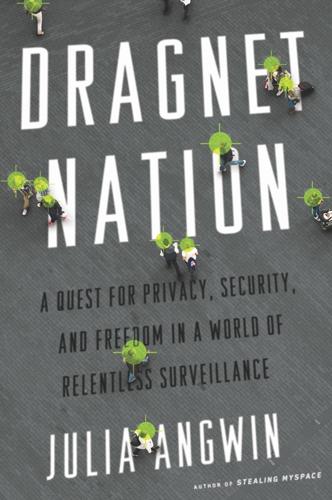
Dragnet Nation: A Quest for Privacy, Security, and Freedom in a World of Relentless Surveillance
by
Julia Angwin
Published 25 Feb 2014
During the sentencing, the judge said, “This was nothing short of a sustained effort to terrorize victims.” Mijangos was sentenced to six years in prison. And widespread camera dragnets are right around the corner. The arrival of wearable computers equipped with cameras, such as Google Glass, means that everything is fair game for filming. The New York Times columnist Nick Bilton was shocked when he attended a Google conference and saw attendees wearing their Google Glass cameras while using the urinals. But Google Glass enthusiasts say that wearing cameras on their heads changes their life. “I will never live a day of my life from now on without it (or a competitor),” wrote the blogger Robert Scoble after trying out the glasses for two weeks.
…
Marketers and data brokers increasingly trade information on real-time trading desks that mimic stock exchanges. INDIVIDUALS • Democratized dragnets. Technology has become cheap enough that everyone can do their own tracking, with items such as dashboard cameras, build-it-yourself drones, and Google Glass eyeglasses that contain tiny cameras that can take photos and videos. The trackers are deeply intertwined. Government data are the lifeblood for commercial data brokers. And government dragnets rely on obtaining information from the private sector. Consider just one example: voting. To register to vote, citizens must fill out a government form that usually requires their name, address, and, in all but one state, birth date.
…
The New York Times columnist Nick Bilton: Nick Bilton, “At Google Conference, Cameras Even in the Bathroom,” Bits (blog), New York Times, May 17, 2013, http://bits.blogs.nytimes.com/2013/05/17/at-google-conference-even-cameras-in-the-bathroom/. “I will never live a day … without it”: Robert Scoble, “My Two-Week Review of Google Glass,” Google+ post, April 27, 2013, https://plus.google.com/+Scobleizer/posts/ZLV9GdmkRzS. Bobbi Duncan, a twenty-two-year-old lesbian student: Geoffrey A. Fowler, “When the Most Personal Secrets Get Outed on Facebook,” Wall Street Journal, October 13, 2012, http://online.wsj.com/article/SB10000872396390444165804578008740578200224.html.

Bit Rot
by
Douglas Coupland
Published 4 Oct 2016
It’s like that old skit where the waiter introduces you to several cows and you get to choose which one will be used for the evening’s steak, but instead it’s McDonald’s, and they’re out to prove they no longer use pink goo in their burgers. Creep is seeing someone wearing Google glasses—one of the cofactors that led to the device being withdrawn from the market until future iterations remove its creep. The Onion had a wonderful headline the week the glasses were removed from public sale until further notice: “Unsold Google Glass Units to Be Donated to Assholes in Africa.” You’d think that de-creeping Google Glass might be difficult, but in the end it’s probably just a numbers game. I remember seeing early adopters using cellphones on city sidewalks in Toronto between 1988 and 1990, and they looked like total assholes—they just did in a way that people born later find very hard to believe.
…
Then text comes up telling you how many steps you took that day, also telling you the farthest point you were away from home, and then something NSFW appears onscreen—and then suddenly you’re inside a mesh model of the Guggenheim Museum Bilbao, which lands you in the middle of a scene from The Garden of the Finzi-Continis, a scene on a tennis court. A crawl at the bottom of the screen reminds you that Wimbledon starts in a week. The screen fades to white and a montage of products appears, but it’s not advertising…it’s all the logos you walked past today while wearing Google glasses. The music cuts to the soundtrack of Days of Heaven while the screen cuts up into nine squares, each displaying a kitten video. A male voice reads passages from Lolita (you haven’t thought of that book in ages!) while the screen now shows footage from a 1974 Partridge Family episode. Then we see scenes from your office life, except they’re in slow motion, and then they’re melting into… And so forth.
…
yoo…in a bit more detail: yoo takes images, sounds and text from the course of your day (or week or year) and weaves them together so that they morph, jumpcut and dissolve. yoo seeks and blends into your experience the faces, spaces, audio feeds and experiences of all the people in your life, imported from various streams. yoo options are multiplied with Google Glass, which pick up images and sounds throughout the day—details that you didn’t notice but still registered in your subconscious. yoo adds and weaves in fragments of movies, songs or other media you experienced that week—but does so by displaying similar or related content: cover versions of favourite songs; movies by the same director; movies with similar plots.
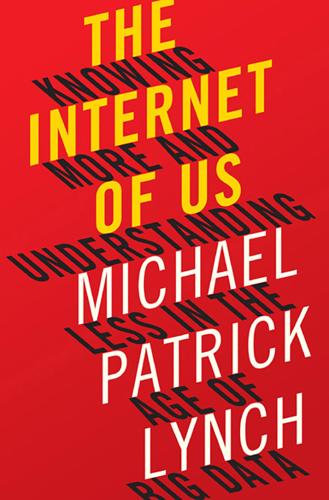
The Internet of Us: Knowing More and Understanding Less in the Age of Big Data
by
Michael P. Lynch
Published 21 Mar 2016
See also “Recovering Under-standing.” 3. Kitcher, Abusing Science. 47–49. I don’t mean to suggest that Kitcher would embrace my views on understanding, however. 4. Lazer et al., “The Parable of Google Flu.” 5. Solzhenitsyn, Cancer Ward, 192. 6. Pete Pachal, “Google Glass Will Have Automatic Picture-Taking Mode,” Mashable, July 25, 2012. Available at http://mashable.com/2012/07/25/google-glass-photo-mode/#SI4XL.9XkOqI. Accessed September 4, 2015 Bibliography Achinstein, Peter. The Nature of Explanation. Oxford: Oxford University Press, 1983. Bilton, Nick. I Live in the Future & Here’s How It Works: Why Your World, Work, and Brain Are Being Creatively Disrupted.
…
As Bertrand Russell once remarked in a somewhat different context, advances in technology never seem to bring along with them—at least, all by themselves—a change in humanity’s penchant for greed and power. That is a lesson I hope we heed—even while we look forward to the benefits the Internet of Us will bring. Many of us share the same concerns. After the initial launch of Google Glass, the reaction was more negative than expected. While many were excited about the technology, it seemed that just as many were worried about its potential for invading privacy; others were concerned about its potential for distracting drivers. These practical objections were serious. But I can’t help wondering if the concern went deeper.
…
S., 159–60 Bush, George W., advisor to, 86 calculators, 153 Caldarelli, Guido, 112 cameras, 89, 94 security, 91, 97 Cancer Ward (Solzhenitsyn), 185 capitalism, changes in, 140–41, 144 Cartesian coordinates, 175 Cartesian foundationalism, 126–29, 131 Catanzaro, Michele, 112 Cavell, Stanley, 10 CCTV, 91 CD-ROMs, 8 censorship, 42, 65, 66, 134, 144 self-, 97 Chabris, Christopher, 30 Chalmers, David, 115 chat rooms, 118 chess, 165 children: and hands-on experience, 174 understanding in, 177 China: iPhone production in, 77–78, 139 oppressive government policies of, 81 truth deleted from Internet in, 65, 66 Chuck, 167–68, 173 Church, power held by, 133–34 CIA, 100 data searched by, 99 Clark, Andy, 115 climate change, 56, 100, 124, 144, 185, 198 cloud: data storage on, 23 data trail on, 9 in information sharing, 4–5 coherentism, 130 see also fabric metaphor, for structure of beliefs Collaborative Commons, 140–41 educational model of, 151–52 as first world resource, 144 collective responsibility, 118–19 College Humor (website), 24 common point of view, 48 communication: isolation and, 41–42 neuromedia and, 113–14 of standards, 39–40 computers, xvii brains and, 19 games, 19–20, 191 reality simulated in, see SIMs self-awareness in, 116, 193 Concept of Mind, The (Ryle), 168 conclusions, jumping to, 29–30, 58 Condorcet Jury Theorum, 120–21 confirmation bias, 54–55, 56 defined, 51–52 Congress, U.S., NSA vs., 99 consequences, 172 conservatives, 43 context, in data analysis, 161 continuum hypothesis, defined, 197 “cookies,” tracking by, 90 Copernicus, Nicolaus, 34 corporate responsibility, 118 corporations, as “people,” 200 correlation analyses, 158–59 Coursera, 150 cover-ups, 83 creationism, 49 creativity: “impossible” aspect of, 176, 177 knowledge and, xvii, 6, 180 as personally relative, 176–77, 181–82 in reaching understanding, 15–16, 174–77, 181, 183 value and importance of, 183 credibility, 40, 46, 50, 119–20 and human rights, 147 criminal justice system, identification techniques in, 93–95 critical thinking: democratic institutional support for, 61–62 importance of, 125 knowledge through, 33–34 crowdsourcing, 136–37, 141–42 Cukier, Kenneth, 8, 158–59 culture: form of life as, 10, 17–18 video map of, 161–62 cyborging, 5–6, 191–92 Daedalus, 13 D’Agata, John, 79–80 Daily Kos, 43 Daisey, Mike, 77–80, 82 data, information vs., 12, 14 data analysis, data analytics, 9, 90, 91, 155–63 data maps, 160 data mining, 90–91 abuses of, 95–107 commercial use of, 97, 105–6 control and, 96 incidental collection in, 95–96, 99, 199 intention in, 96–98, 100 data storage, 91, 95–96, 99–100, 108 data trails, 9, 185 dating sites, 157 deception: justified, and relation to autonomy, 83 truth and, 75–83 decision making: autonomy in, 102–7 overruling in, 102 undermining in, 102–3 Deepwater Horizon oil spill, responsibility for, 118 dehumanization, 105 democratization: capitalism vs., 141–42 Internet as force for, 11, 49, 55–63, 125, 133–38, 148 of public policy, 121 Dennett, Daniel, 74 dependency relationships, in understanding, 165–67, 177, 182 dephysicalized objects, defined, 69 Descartes, René, 19–20, 34, 39, 126–27, 129, 162, 174–76, 177 Dewey, John, 151 Dianetics, 61 Dick, Philip K., 75 dictionaries, 21–22 digital form of life, xviii, 3–20 as abstract and depersonalized, 41–50 caveats about, 184–88 as a construction, 70–74, 83–86, 187 defined, 10 limitations of, 16 understanding in, 153–78 see also Internet of Us digital groups, 118–19 digital knowledge: caveats about, 184–88 dependence on, xvi–xviii, 5, 12, 21–26, 31, 36, 179 distribution of, 113 education and, 148–54 full and equal participation in, 146 as interconnective, 184–88 international access rates for, 135, 144–45 massive proliferation of, 8, 11–12, 32, 56, 128 network of, 111–32 as power, 9, 98–99, 186 ready accessibility of, 3–4, 23, 30, 42, 56, 113–16, 135–36, 141, 149, 153, 180 speed of, 23, 29–30, 42, 135 using alternative sources to, 21–23 see also Google-knowing dinosaurs, 66 discursive knowledge, 169 “divided line” graph of knowledge, 126 DNA identification techniques, 93–94 Dreyfus, Hubert, 168, 171 drugs: abilities changed by, 173 SIM life compared to, 77 Duke University, 152 earthquakes, emotional epicenters of, 160–61 eavesdropping, 101 Ebola, 16 economy, 111, 162 as digitally dependent, 7–8, 9 free-market, 145 full and equal participation in, 146 globalization of, 139, 142 of knowledge, 138–45 manufacturing in, 138–39 prediction markets in, 122–23 education: cheapening of, 152–53 crisis in, 149–50 as epistemic resource, 143, 145 information technology and, 148–54 old model of, 151–52 U.S. hegemony in, 149 education bubble, 149, 152 education systems, 35–36 edX, 150 Einstein, Albert, 175, 177 elections, 120–23 emails, 81 emotion, reasoning vs., 51–55 “End of Theory, The: The Data Deluge Makes the Scientific Method Obsolete” (Anderson), 156–57 Enlightenment, 33–34, 58–59 environment: interacting with, 174 receptive tracking of, 27–30, 131 “environmental luck,” 203 epilepsy, 168 epistêmê, 14, 170, 172 epistemic economy, 147–48 epistemic equality, 138–48, 150, 187 epistemic inclusivity, 135–36 epistemic inequality, 142–48, 201 epistemic injustice, 146–48, 201 epistemic principles, 14, 47, 50, 55, 57, 60 as democratic, 62, 135–36 epistemic resources, 143–45 epistemic trust, 195 epistemology, defined, see epistemic principles Epistemology and Cognition (Goldman), 194 Essay concerning Human Understanding, An (Locke), 35 ethical values: changes in, 53–54 democratic, 58 and fragmentation, 44 technology and, xvii, 6, 89–90 “eureka” moment, 176, 177 Eurocentrism, 162 Euthyphro (Plato), 165–66, 172 evangelicals, 47–49 evidence, in change of belief, 54–55 expectations: in changing of social constructs, 72–73 conclusions colored by, 29–30, 160 theoretical, 159 of truth, 79–80 experience: as foundation for knowledge, 127, 131 in hands-on movements, 173–74 illusion and reality in, 18–19 procedural knowledge in, 172–73 understanding through, 16, 173–74 experts, expertise: knowledge based on, 15, 35–38, 120, 139–40 outsourcing of, 141–42 in predicting, 122–23 in problem solving, 137 understanding and, 170–71 explanation, 165–67, 182 extended mind hypothesis, 115 fabric metaphor, for structure of beliefs, 129 Facebook, xvii, 8, 24, 43, 72, 124 hegemony of, 146 as simulacrum, 16 tracking by, 105 fact-checking, 46–47, 56, 85, 130 falsehoods, 77–83 “fast thinking” processes, 29–30 FBI, data searched by, 99 fiction, 79–80 fingerprints, 93 FISA, see Foreign Intelligence Surveillance Act fishbowls, digital life compared to, 91 Fishburne, Laurence, 18–19 Flanagan, Owen, 73–74 Floridi, Luciano, 10, 69–71 Foreign Intelligence Surveillance Act (FISA; 1978), 88 court of, 99, 109 form of life: defined, 10 philosophy in, 17–18 Forms (Platonic), 126 foundationalism, Cartesian, 126–29, 131 Fox News, 43 fragmentation: of reason, 148 threat of, 4, 41–63 Freebase, 151 freedom of choice, autonomy of decision vs., 102 French Revolution, 58 Freud, Sigmund, 184 Fricker, Miranda, 146–48, 201 Galileo, 34, 68 Galton, Francis, 120 games, gaming, 20, 191 gatekeeping, 128, 134, 146 gender, 162 in marriage, 53–54, 72 in problem solving, 137 Georgetown University, 77–78 Gilbert, Margaret, 117–19, 200 Glass, Ira, 78 Glaucon, 54 Glauconian reasoning, 54–55, 56–58 global economy, 139, 142, 152 global warming, 56, 100, 124, 144, 185, 198 Goldberg, Sandy, 115 Goldman, Alvin, 194 Google, 5, 23, 30, 113, 128, 130, 135, 163, 174, 182, 203 business model of, 9 data collection and tracking by, 90, 155–56, 158, 161 as hypothetical “guy,” 24 monopolization by, 145–46 propaganda disseminated on, 66 in reinforcement of one’s own beliefs, 56 Google Complete, 155 Google Flu Trends, 158, 183 Google Glass, 149, 186 Google-knowing, xvi, 21–40, 25 defined, 23 limitations of, 174, 180 reliance on, 6–7, 23, 25–26, 30–31, 36, 113, 116, 153, 163, 179–80 Google Maps, 116 Google Street View, 23 Gordon, Lewis, 148 gorilla suit experiment, 30 government: autonomy limited by, 109 closed politics of, 144–45 data mining and analysis used by, 9, 90–91, 93, 104, 107 online manipulation used by, 81 purpose of, 38 transparency of, 137–38 Greece, classical philosophy of, 13, 47, 166–67, 171–72 Grimm, Stephen, 164 Guardian, 81 Gulf of Mexico, oil spill in, 118 H1N1 flu outbreak, tracking of, 158 Haidt, Jonathan, 51–54, 56, 57, 60, 196–97 Halpern, Sue, 106 Harvard Law Review, 89 Hazlett, Allan, 49 HBO GO, 145 Heidegger, Martin, 177 Hemingway, Mark, 46 Higher Order Thinking Skills (HOTS), 61 Hippocrates, 13 hive-mind, 4, 136 HM (patient), 168–69 Hobbes, Thomas, 38, 109 holiness, logical debate over, 166–67 homosexuality, changing attitudes toward, 53–54 Houla massacre, 83 Howe, Jeff, 136 Huffington Post, 43 human dignity: autonomy and, 58, 59–60 information technology as threat to, 187 interconnectedness and, 184–88 privacy and, 101–9 human rights, 54, 60 digital equality as, 142–48 protection of, 145 Hume, David, 48 hyperconnectivity, 184–88 identity: digital reshaping of, 73–74 manufactured online, 80–81 “scrubbing” of, 74 illegal searches, 93 illusion, distinguishing truth from, 67–74 incidental data collection, 95–96, 99 inclusivity, 135–37 income inequality, 142 inference, 29, 60, 172 information: accuracy and reliability of, 14, 27–30, 39–40, 44–45 collected pools of, 95–100, 107–9 distribution vs. creation of, 24 immediate, unlimited access to, 3–4, 23, 30, 42, 56, 113–16, 135–36, 141, 149, 153, 180 as interconnective, 184–88 vs. knowledge, 14 sorting and filtering of, 12, 26–29, 44–45, 127–28 information age, 111 information analysis, techniques of, 8–9 information cascades, 36, 66, 121 defined, 32 information coordination problem, 38–39, 56 information “glut,” 9–10, 44 information privacy, 94–100 and autonomy, 102–7 information sharing, coordination in, 4–5 information technology: costs of, 145 data trail in, 9 democratization through, 133–38, 148 devices and platforms of, xvii–xviii, 3, 7–8, 10, 41–43, 69, 70, 77–78, 90–91, 106–7, 144, 148–49, 156, 180, 185–87 disquieting questions about, 6 in education, 148–54 experience vs., 173–74 hypothetical loss of, 5 paradox of, 6, 12, 179 pool of data in, 95–100 surveillance and, 89–109 typified and dephysicalized objects in, 69 unequal distribution of, 144–45 see also Internet of Things information theory, 12 infosphere: defined, 10 feedback loop of social constructs in, 72–73 network of, 180 pollution of, 148 vastness of, 128 InnoCentive, 136–37, 141 institutions, cooperative, 60–61 intellectual labor, 139–40 International Telecommunications Union, 135 Internet: author’s experiment in circumventing, 21–24, 25, 35 in challenges to reasonableness, 41–63 changes wrought by, xv–xviii, 6–7, 10–11, 23, 180, 184–88 as a construction, 69 cost and profit debate over, 145 as epistemic resource, 143–45 expectations of, 80–83 as force for cohesion and democracy, 55–63 freedom both limited and enhanced by, 92–93 international rates of access to, 135, 144–45 monopolization and hegemony in, 145–46 as network, 111–13 “third wave” of, 7 see also World Wide Web; specific applications Internet of Everything, 184 Internet of Things: blurring of online and offline in, 71 defined, 7–8 integration of, 10 shared economy in, 140–41 threat from, 107, 153, 184–88 Internet of Us, digital form of life as, 10, 39, 73, 83–86, 106, 179–88 interracial marriage, 54 interrogation techniques, 105 In the Plex (Levy), 5–6 Intrade, 122–23, 136 intuition, 15, 51–53 iPhone, production of, 77–78, 80, 139, 144 IQ, 52 Iraq, 83 Iraq War, 137 ISIS, 128 isolation, polarization and, 42–43 I think, I exist, 127 James, William, 11 Jefferson, Thomas, 143 Jeppesen, Lars Bo, 137 joint commitments, defined, 117–18 journalism, truth and, 84 judgment, 51–55, 57 collective vs. individual, 117, 120–25 justice, 54 “just so” stories, 27–28 Kahneman, Daniel, 29, 51 Kant, Immanuel, 34, 58–60, 62, 85 Kitcher, Philip, 182 knowing-which, as term, 171 knowledge: in big data revolution, 87–190 changing structure of, 125–32 common, 117–19 defined and explained, xvii, 12–17 democratization of, 133–38 digital, see digital knowledge; Google-knowing distribution of, 134–35, 138, 141 diverse forms of, 130 economy of, 138–45 hyperconnectivity of, 184–88 individual vs. aggregate, 120–24 information vs., 14 Internet revolution in, xv–xviii minimal definition of, 14–15 as networked, 111–32 new aspects in old problems of, 1–86, 90 personal observation in, 33–35 political economy of, 133–54 as power, 9, 98–99, 133, 185–86 practical vs. theoretical, 169, 172 procedural, 167–74 recording and storage of, 127–28 reliability of sources of, 14, 27–31, 39–40, 44–45, 114–16 as a resource, 38–39 shared cognitive process in attainment of, 114–25 three forms of, 15–17 three simple points about, 14–17 truth and, 19, 126 understanding vs. other forms of, 6, 16–17, 90, 154, 155–73, 181 value and importance of, 12–13 knowledge-based education, 61 Kodak camera, 89 Koran, 48, 61 Kornblith, Hilary, 194 Krakauer, John, 169 Kuhn, Thomas, 159–60 Lakhani, Karim, 137 Larissa, Greece, 13, 15, 182 Leonhardt, David, 122–23 Levy, Steven, 5–6 liberals, 43 libraries, 22, 134, 153–54 of Alexandria, 8 digital form of life compared to, xvi, 17, 20, 44–45, 56, 63, 128 as epistemic resource, 145 Google treated as, 24 “Library of Babel” (Borges), 17 “Lies, Damned Lies, and ‘Fact-Checking’: The Liberal Media’s Latest Attempt to Control the Discourse” (Hemingway), 46 Lifespan of a Fact, The (D’Agata), 79 literacy, 35, 134 literal artifacts: defined, 69 social artifacts and, 71, 72 lobectomy, 168 Locke, John, 33–36, 39, 60, 67–70, 85, 127, 143 “Locke’s command,” 33–34 London Underground, mapping of, 112–13 machines, control by, 116 “mainstream” media, 32 censorship of, 66 majority rule, 120 manipulation: data mining and, 97, 104–6 of expectations, 80–82 persuasion and, 55, 57–58, 81–83, 86 manuals, 22 manufacturing, 138–39 maps, 21–22 marine chronometer, 137 marketing: bots in, 82 Glauconian, 58 targeted, 9, 90, 91, 105 marriage: changing attitudes toward, 53–54 civil vs. religious, 58–59 as social construct, 72 martial arts, 170 mass, as primary quality, 68 Massive Open Online Courses (MOOCs), 150–53 mathematics, in data analysis, 160, 161 Matrix, The, 18–19, 75 Mayer-Schönberger, Viktor, 8, 158–59 measles vaccine, 7, 124 Mechanical Turk, 136, 141 media, 134 diversity in, 42 opinion affected by, 53 sensationalist, 77 memory: accessing of, 114, 115 in educational models, 152 loss of, 168–69 superceded by information technology, xv–xvi, 3, 4, 6, 94, 149 trust in, 28, 33 Meno, 13 merchandising, online vs. brick and mortar, 70 Mercier, Hugo, 54 metrics, 112 Milner, Brenda, 168–69 mirror drawing experiment, 169 misinformation, 6–7, 31–32 in support of moral truth, 78–80, 82 mob mentality, 32–33 MOOCs (Massive Open Online Courses), 150–53 moral dumbfounding, 52 morality, moral values, xvii, 6, 44, 53–54, 195 “Moses Illusion,” 29–30 motor acuity, mastery of, 170–71, 173 motor skills, 167–74 Murray, Charles J., 147 music, as dephysicalized object, 69–70 Nagel, Thomas, 84 naming, identification by, 94 narrative license, truth and falsehood in, 78–79 National Endowment for the Humanities, 61 National Science Foundation, 61 Nature, 158, 161 Netflix, 69, 145 Net neutrality, defined, 145 netography, 112–13 of knowledge, 125–32 networked age, 111 networks, 111–32 collective knowledge of, 116–25, 180 knowledge reshaped and altered by, 125–32, 133, 140 in problem solving, 136 use of term, 111–12 neural system, 26 neural transplants, 3, 5 Neurath, Otto, 128–29 neuromedia, 3–5, 12, 17–19, 113–14, 132, 149, 168, 180–82, 184 limitations of, 174 as threat to education, 153–54 Newton, Isaac, 175 New Yorker, 25, 26 New York Times, 122, 174 Nietzsche, Friedrich, 111 Nobel laureates, 149 noble lie, 83, 86 nonfiction, 79–80 NPR, 78, 80 NSA: alleged privacy abuses by, 98–100, 138 data mining by, 9, 91, 95–96, 108, 167 proposed limitations on, 109 Ntrepid, 81 nuclear weapons technology, xvii nullius in verba (take nobody’s word for it), 34 Obama, Barack, 7, 100 administration, 109 objectivity, objective truth, 45, 74 as anchor for belief, 131 in constructed world, 83–86 as foundation for knowledge, 127 observation, 49, 60 affected by expectations, 159–60 behavior affected by, 91, 97 “oceanic feeling,” 184 “offlife,” 70 OkCupid, 157 “onlife,” 70 online identity creation, 73–74 online ranking, 119–21, 136 open access research sharing sites, 135–36 open society: closed politics vs., 144–45 values of, 41–43, 62 open source software, 135 Operation Earnest Voice, 81 Operation Ivy, ix opinion: knowledge vs., 13, 14, 126 in online ranking, 119–20 persuasion and, 50–51 truth as constructed by, 85–86 optical illusions, 67 Oracle of Delphi, 16–17, 171 Outcome-Based Education (OBE), 61–62 ownership, changing concept of, 73 ox, experiment on weight of, 120 Oxford, 168 Page, Larry, 5–6 Panopticon, 91, 92, 97 perception: acuity of, 173 distinguishing truth in, 67–74 expectations and, 159–60 misleading, 29–30, 67 as relative, 67–68 perceptual incongruity, 159–60 personal freedom, 101 persuasion, 50–51, 54–55, 56–58 by bots, 82 phone books, 22 phone data collection, 95, 108 photography: privacy and, 89, 93 sexually-explicit, 99 photo-sharing, manipulation in, 82–83 Plato, 13–14, 16–17, 54, 59, 83, 126, 165–67 polarization, 7 herd mentality in, 66 isolated tribes in, 43–46 politics, 162, 196 accessibility in, 23 activism in, 66, 67 bias in, 43–46 closed, 144–45 elections in, 120–23 of knowledge, 133–54 opposition to critical thinking in, 61–62 persuasion in, 57–58, 82–83 power in, 86, 133 prediction market in, 122–23 Politifact, 46 Popper, Karl, 41–43 Postman, L.
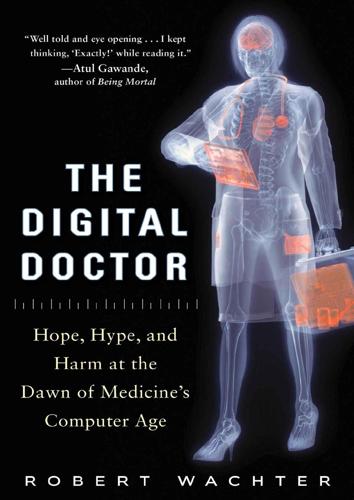
The Digital Doctor: Hope, Hype, and Harm at the Dawn of Medicine’s Computer Age
by
Robert Wachter
Published 7 Apr 2015
Each leverages a technology that did not exist a decade ago: Google Glass, the iPhone, and the vibration sensing and dampening device. But none of these technologies can achieve its full impact, nor are the business models likely to be viable over the long haul, unless they are supported by, and embedded in, appropriate work flows, cultures, regulations, and economic models. Take Augmedix—it’s a good idea, and it’s fueled by cool technology. But how do we get the transcript into, and the vital signs out of, the electronic health record? And what about the privacy issues for the doctor walking around the office wearing Google Glass? Will she be hit with a huge HIPAA fine if she inadvertently video records a patient down the hall?
…
He and his colleagues have even prepared a response, ready in case that awful phone call ever comes. 19 It’s worth noting that this degree of paternalism is still prevalent in many countries outside the United States. 20 Now Beth Israel Deaconess Medical Center. 21 The term patient portal is now commonly used to describe an Internet-enabled, secure website on which patients can view some portion of their health data. More on this in Chapter 21. 22 The Roman god of wine. 23 A start-up named Augmedix has built such a capacity: the doctor wears Google Glass during the encounter, and a combination of voice recognition and a remote transcriptionist produces the note. I’ll have more to say about this company later. Chapter 21 Personal Health Records and Patient Portals When we try to pick out anything by itself we find that it is bound fast by a thousand invisible cords that cannot be broken, to everything in the universe.
…
The first is called Augmedix. Recall our earlier discussion about how doctors have become slaves to their electronic health records, leading some hospitals and clinics to hire scribes to allow physicians and patients to make eye contact again. With Augmedix, doctors interact with their patients while wearing Google Glass, and the voice and video recordings go off to a distant site, where a combination of human transcriptionists and natural language processing helps create the note. The physician can also call up data from the EHR (“Okay, Glass, show me the vital signs”) without turning away from the patient. Another Rock Health company, CellScope, makes an attachment for your smartphone that can take a picture inside someone’s ear—a replacement for the doctor’s otoscope.

Think Like a Rocket Scientist: Simple Strategies You Can Use to Make Giant Leaps in Work and Life
by
Ozan Varol
Published 13 Apr 2020
Tim Ferriss, “Maria Sharapova,” episode 261 (transcript), Tim Ferriss Show, May 30, 2018, https://tim.blog/2018/05/30/tim-ferriss-show-transcript-maria-sharapova. 46. Elizabeth Gilbert, Big Magic: Creative Living Beyond Fear (New York: Riverhead Books, 2015), 259. 47. Steven Levy, “Google Glass 2.0 Is a Startling Second Act,” Wired, July 18, 2017, www.wired.com/story/google-glass-2-is-here. 48. Heather Hargreaves, “How Google Glass Will Change How You Do Business,” Entrepreneur Handbook, March 25, 2019. 49. Ian Osterloh, “How I Discovered Viagra,” Cosmos, April 27, 2015, https://cosmosmagazine.com/biology/how-i-discovered-viagra; Jacque Wilson, “Viagra: The Little Blue Pill That Could,” CNN, March 27, 2013, www.cnn.com/2013/03/27/health/viagra-anniversary-timeline/index.html. 50.
…
Goals can help you focus, but that focus can also turn into tunnel vision if you refuse to budge or pivot from your initial path. For example, when Google Glass was roundly dismissed as a pointless product, X found a different path. Once the product hit the consumer market, the company realized that the Glass wasn’t a consumer product at all. Instead, X learned from that failure and reinvented the Glass as a tool for businesses.47 You can now find Google Glass on countless workers, including Boeing employees working on aircraft and doctors looking through a patient chart using a fancy attachment to their faces.48 Consider another example from the pharma industry.
…
If you’re in the business of taking moonshots—if you’re going to experiment with bold ideas—you’re going to miss more often than you connect. “Experiments are by their very nature prone to failure,” Jeff Bezos explained. “But a few big successes compensate for dozens and dozens of things that didn’t work.”12 Remember the Amazon Fire phone? The company lost $170 million over that misfire.13 Or Google Glass, designed by X, Google’s moonshot factory?14 The Glass was supposed to be the next best thing after the smartphone, but it flopped. It’s one thing to carry a smartphone in your pocket, consumers thought, and something else to attach one to your cornea. This was one piece of hardware that was decidedly uncool to sport.
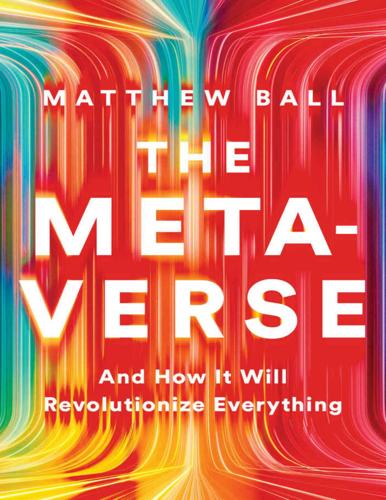
The Metaverse: And How It Will Revolutionize Everything
by
Matthew Ball
Published 18 Jul 2022
Still, investment in the division continues and Microsoft CEO Satya Nadella still highlights the device to investors and customers, particularly in the context of the company’s Metaverse ambitions. Although Google Glass, Google’s AR device, quickly earned a reputation as one of the most overhyped and failed products in consumer electronics history after it launched in 2013, Google continues to support it. In 2017, the company released an updated model, named the Google Glass Enterprise Edition, with a follow-up coming later in 2019. Since June 2020, Google has spent $1 billion–$2 billion acquiring AR glasses start-ups such as North and Raxium. Though Google’s efforts in VR received less press attention than Google Glass, they’ve been more significant and arguably more disappointing.
…
Carrying a controller everywhere you go is not practical, and if the primary goal of AR is to make technology disappear into an everyday pair of glasses, then pulling out a thumbstick or a smartphone to use it truly defeats the purpose. Some believe that the future of computing isn’t a pair of AR glasses or a watch, or another kind of wearable, but something smaller. In 2014, only a year after its ill-fated Google Glass launch, Google announced its first Google Contact Lens project, which was intended to help diabetics monitor their glucose levels. Specifically, this “device” was made up of two soft lenses, with a wireless chip, a wireless antenna that’s thinner than a strand of human hair, and a glucose sensor placed in between.
…
See also machine learning Asimov, Isaac, 5 “As We May Think,” x AT&T, 4, 15, 165, 243 Atari, 173 Atlantic, The, x Audio Interchange File Format (AIFF), 122 augmented reality (AR), xi, 35, 141–46, 158–60 advertising and, 264 in entertainment, 256–61 as giving way to wearables, 153–54, 157 Google Glass, 141, 154 HoloLens, 18, 141, 144–46, 147, 267–68, 279 limitations and challenges of, 145–51, 268 in medicine, 268 prognosis for, 158 in sex work, 261–62 Snap’s AR glasses, 144, 145 Snapchat filters, 61 Autodesk, 118, 257 automated market maker model, 223 avatars, 3, 8–9 computing demands of, 93, 95 examples of, 54–55, 75–76, 90–91 facial movement recognition, 144, 147, 159 in the future Metaverse, 245–47 haptic feedback and, 151 interoperability and, 39–40, 138 in meta-businesses, 254, 255, 259–61, 264 non-fungible tokens (NFTs) and identity, 218, 229, 293–94 the ontological question of, 123 3D avatars, 40, 124, 144 Avengers franchise, 257, 259, 264 Axie Infinity, 202 Axies, 218 Aztter, 10 Ballmer, Steve, 25, 279 Bank of America, 167, 186 bankruptcy, 27–28 battery power, 146–47, 149, 161, 200–201, 271 Battlefield, 124 battle royale games, 32–33, 91–93, 98, 114–15, 117n, 146–47, 268, 275 Baudrillard, Jean, 6–7, 14 “Baumol’s Cost Disease,” 250–51 Bavor, Clay, 142–43 Beat Sabre, 160 Berkeley, George, 71–72 Berkshire Hathaway, 166 Bezos, Jeff, xi, 4, 277 Bioshock, 177 Bitcoin/bitcoin, 201–2, 209–10, 217, 222, 230 BlackBerry, 148, 150, 158, 240, 308 Blender, 136, 299 Blizzard.
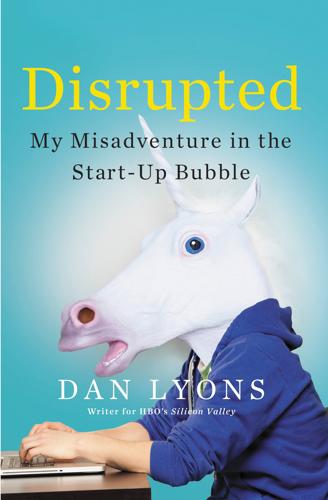
Disrupted: My Misadventure in the Start-Up Bubble
by
Dan Lyons
Published 4 Apr 2016
The one on the right is John Doerr of Kleiner Perkins Caufield & Byers. Look how smug they are, how sure of themselves! These two grown men wearing the hideous face computer called Google Glass are two of the most respected investors in Silicon Valley, and they represent two of the most important venture capital firms. The photograph from which these images are taken was released as part of the announcement of the Glass Collective, a special fund created to invest in companies that would develop applications for Google Glass, which Andreessen and Doerr described as a “potentially transformative technology.” Glass had a tiny computer display embedded in a box in front of your right eye and would display information as you walked around.
…
In 2010, when Facebook got hot, he announced the sFund, to invest in social media companies. Doerr even started wearing a T-shirt and hoodie, just like Mark Zuckerberg. Forming the Glass Collective in 2013 was just another attempt to latch on to something trendy. In the end Doerr got nothing out of Google Glass except some publicity, but maybe that was the point all along. In the old days, Silicon Valley venture capitalists embraced a California version of clubby East Coast white-shoe culture. All of the top VC firms literally sit beside one another on the same street, a big boulevard called Sand Hill Road in Menlo Park.
…
If you’re a VC, you must have money parked in those companies. But getting into those deals is not so easy. Investors actually have to compete to get into hot deals. How do you get that entrepreneur to take your money? How do you stand out? You generate publicity. You have your picture taken wearing Google Glass and call yourself a visionary, someone who can “see around corners,” as they say in Silicon Valley. Even as valuations climb to record levels, you insist that you are not overpaying. “It’s not a bubble; it’s an unprecedented, long boom,” Doerr told Bloomberg in June 2015. Then again, Doerr is in the business of selling companies to the public markets.

Terms of Service: Social Media and the Price of Constant Connection
by
Jacob Silverman
Published 17 Mar 2015
Governments could mine videos for political opinions and create voice samples of troublesome citizens. Security agencies such as the FBI, which has the technical capability to remotely and surreptitiously activate the microphones in many smartphones, as well as the webcams in computers, could see if a surveillance target is lying or anxious. Google Glass could become a kind of roving emotion-meter, providing you with voice analysis of everyone you meet. On a more conceptual level, voice analysis and sentiment analysis are about finding out what you think and feel: your “mood graph.” Social-media companies really would like to know what you are thinking at all times, but they need the data to be machine-readable, which is why we’re prompted to structure our data by tagging emotions, companies, people, and places and why forms of computational analysis promise to automate this process.
…
The uncanny valley of mutual surveillance appears when we have to face our surveillers, whom we prefer to think of as disembodied and remote. The prospect of a stranger holding a smartphone, its camera pointed in your direction, has become almost routine, but it can also be cause to stop and wonder, Is she photographing me? Why would someone want to photograph me? And do I want to do something to encourage or discourage that? Google Glass is an ostensibly social surveillance device which, in practice, places the medium, a bit too literally, between the wearer and the world. Its red recording light is a vivid signal to onlookers: I’m watching you. Wearing it becomes a desocializing act, as some early adopters found when people asked them to take them off in social interactions or stared at them skeptically.
…
Robert Moran, head of the Brunswick Group, a communications consultancy, sees what he calls the “rateocracy” as an opportunity for transparency, when good corporations and citizens will be rewarded for acting ethically and in others’ best interests. It will be integrated with augmented reality apps, so that you can activate your Google Glass or pull out your smartphone and see ratings for people, businesses, and places all around you. Facial recognition will likely play a role: imagine being able to access information—social-media profiles, Google searches, biographical information, ratings from friends, colleagues, lovers—on anyone you see, without even talking to them.
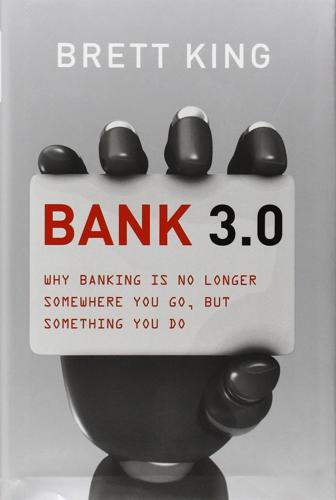
Bank 3.0: Why Banking Is No Longer Somewhere You Go but Something You Do
by
Brett King
Published 26 Dec 2012
For one thing, how can we interact authentically with the world around us when everywhere we look we’re prompted to check in, reminded that we have a meeting in 30 minutes, or fed instructions about which path is the best walking route to take? Figure 10.4: Would you wear Google Glasses? (Credit: Google) In Google’s concept video the man wearing the glasses meets a friend in a bookstore by following the most direct walking path to where his buddy had checked in. The problem is that in doing so, he might have missed out on a couple of interesting books had he taken a more circuitous route. Google Now is the data and interface platform that will underpin Google Glass technology, and it’s definitely a work in progress. Of course, the concerns with all that data being fed into our line of vision are well founded.
…
With Google Related, they’ll also have the option of viewing other content relative to that topic—such as videos, product reviews, or other mentions of the product across the web. Now imagine doing the same with geolocation data—tying in where the consumers physically are or what they’re looking at or for through their mobile devices. Ultimately, Google is trying to find ways of augmenting their view of the world through this data with projects such as Google Glasses, or Project Glass as it is known internally. The development of Siri for the iOS platform is really another example of interfacing with the world of data and giving the consumer more contextual access. Search is going to become less like a search, and more like just helping them with the data they need to make decisions in everyday life.
…
Right now both iPhone and Google Nexus phones incorporate some AR applications that are very simple to use and very, very cool. Combining this type of technology with digital cameras or camera phones is one thing, but there is an emerging technology that might change the way we see our environment and the things around us in an entirely new manner. Google Glasses At Sony’s 2009 CES (Consumer Electronics Show), Tom Hanks appeared on stage with Sir Howard Stringer, CEO and president of Sony Corporation in the US. Sony was parading its new high-definition video glasses that are currently under development—these HD specs have a widescreen 16:9 HD-quality image projected onto the lens.

The Long History of the Future: Why Tomorrow's Technology Still Isn't Here
by
Nicole Kobie
Published 3 Jul 2024
Dressed head-to-toe in black, the Google co-founder sported on his face a black pair of smart spectacles known as Glass, the technology he was about to unveil at the company’s annual developer conference. ‘This can go wrong in about 500 different ways,’ said Brin. How right he was – not for the demo, but for Glass itself. Rather than the usual video demo, Brin casually mentions he’s loaned a Google Glass kit to his friend, ‘JT’. ‘He’s actually pretty close by – he’s just about a mile overhead right now,’ Brin says. Brin joins a video call with JT, asking if he could get that loaner unit back, as though this isn’t an overplanned stunt watched by thousands.1 Brin’s dear friend JT looks out of his aircraft window, projecting to the auditorium a marvellous, though blurry, live view of the city by the bay from the glasses on his head.
…
At the time, I was the news editor for a British computing magazine, PC Pro, though I had to wait two years before Glass landed in the UK and I finally got to use it. Pulling off my non-smart glasses, I slipped the orange-red Glass glasses on to my face. (We struggled to know what to call them: Google Glass glasses sounds ridiculous.) Glass had two controls: voice and tapping the side button. But no matter what I did, all I could see was a blurry image off in the distance of my viewing range, like watching a broken TV from across a large living room. Or, as one review said at the time, ‘like seeing a 5-inch smartphone hovering horizontally a few feet in front of your face’.
…
The last issue that Thrun identifies is the name, partially because of the ‘glassholes’ moniker that was quickly bestowed on users of the technology. ‘None of us saw this,’ he says. ‘We had a world-class agency doing the naming.’ Magic Leap had a better name, but it wasn’t much help. Founded in 2010 by Rony Abovitz, who had previously founded a surgical robot company, this mixed-reality headset company followed the pattern set by Google Glass in a few ways: massive hype, disappointing entry into the real world and pivot to business. First, a bit about Abovitz. The hype around Magic Leap sparked curiosity about the little-known entrepreneur, and it didn’t take much googling to find a lot to be curious about. Alongside running a company valued in the billions, Abovitz played in an indie-rock band called SparkyDog and Friends, ran a blog full of tech philosophy theories – ‘if [software] can wirelessly transmit from BlackBerry to iPad to PC, why can’t our souls float as they will?’
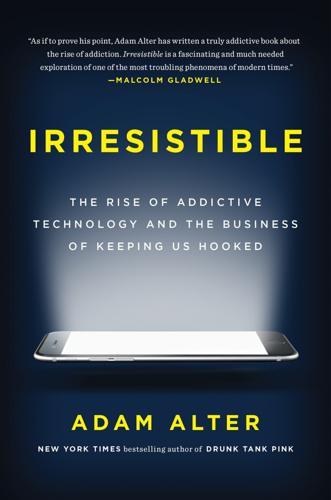
Irresistible: The Rise of Addictive Technology and the Business of Keeping Us Hooked
by
Adam L. Alter
Published 15 Feb 2017
Other references include: John Boudreau and Aaron Clark, “Flappy Bird Creator Dong Nguyen Offers Swing Copters Game,” Bloomberg Technology, August 22, 2014, www.bloomberg.com/news/articles/2014-08-22/flappy-bird-creator-dong-nguyen-offers-swing-copters-game; Laura Stampler, “Flappy Bird Creator Says ‘It’s Gone Forever’,” Time, February 11, 2014, http://time.com/6217/flappy-bird-app-dong-nguyen-addictive/; James Hookway, “Flappy Bird Creator Pulled Game Because It Was ‘Too Addictive,’” Wall Street Journal, February 11, 2014, www.wsj.com/articles/SB10001424052702303874504579376323271110900; Lananh Nguyen, “Flappy Bird Creator Dong Nguyen Says App ‘Gone Forever’ Because It Was “An Addictive Product,’” Forbes, February 11, 2014, www.forbes.com/sites/lananhnguyen/2014/02/11/exclusive-flappy-bird-creator-dong-nguyen-says-app-gone-forever-because-it-was-an-addictive-product/. Just recently a: Kathryn Yung and others, “Internet Addiction Disorder and Problematic Use of Google Glass in Patient Treated at a Residential Substance Abuse Treatment Program,” Addictive Behaviors 41 (2015): 58–60; James Eng, “Google Glass Addiction? Doctors Report First Case of Disorder,” NBC News, October 14, 2014, www.nbcnews.com/tech/Internet/google-glass-addiction-doctors-report-first-case-disorder-n225801. CHAPTER 2: THE ADDICT IN ALL OF US Most war films: Jason Massad, “Vietnam Veteran Recalls Firefights, Boredom and Beer,” Reporter Newspapers, November 4, 2010, www.reporternewspapers.net/2010/11/04/vietnam-veteran-recalls-firefights-boredom-beer/.
…
Chemists have concocted dangerously addictive substances, and the entrepreneurs who design experiences have concocted similarly addictive behaviors. This evolution has only accelerated over the past two or three decades, and shows no signs of slowing. Just recently a doctor identified the first Google Glass addict—an enlisted naval officer who developed withdrawal symptoms when he tried to wean himself off the gadget. He’d been using it for eighteen hours a day, and he began to experience his dreams as though he were looking through the device. He’d managed to overcome alcohol addiction, he told doctors, but this was much worse.
…
See also infants attention spans of, 39–40 boys, and time spent gaming, 42–43 communication skills, effect of online/cell phone interactions in development of, 40–41, 242–43 DANVA2 test scores before and after week of social interaction, 238–40 digital amnesia and, 242 first experiences of digital world, 39–40 hardship inoculation and, 241–42 learning by, 174–75 parenting principles, Steiner-Adair’s formulation of, 250–51 recommendations for media consumption by young, 245–47 reSTART program for, 248–50 screen versus face-to-face playtime, 237 teenage girls’ interaction with social media, 41–42 China, 251–54 Christison, Robert, 32, 35 chronic sleep deprivation, 68–70 circumstance, and addiction, 4 C.K., Louis, 243 cliffhangers, 191–213 binge-watching and, 208–12, 287–89, 290–91 disarming technique for, 287–89, 291 micro-, 205–8 in songs, 194–96 in The Sopranos, 201–3 unresolved real-life crime documentaries and, 196–201 Zeigarnik Effect and, 193–94 Coca-Cola, 38 cocaine, 29, 32–39, 71 Christison’s discovery of effects of, 32 Freud’s research on and addiction to, 33–36 Pemberton’s French Wine Coca (Coca-Cola) and, 37–38 coca plant, 31, 32 Cognitive Behavioral Therapy for Internet Addiction (CBT-IA), 256–57 cognitive decline, effect of multitasking games on, 312–13 Cohen, Gaby, 115–16 color coding, 157–58 comments, 217 communication skills, 40–41, 242–43 The Company of Others, 269 compulsion, 20–21 compulsive shopping, 205–8 Connolly, Billy, 83–84 Contrera, Jessica, 41–42 Cooper, Grahame, 230–32 cost-benefit calculations, 5 Cow Clicker, 313–14 creation requiring labor and effort, and addictive acts, 173–74 credit cards, 188 Crossy Road (game), 162–63 Csikszentmihalyi, Mihaly, 176 cue, of habits, 268 Cushman, John, 49–50 Dai, Xianchi, 266 Daimler, 277 DANVA2 (Diagnostic Analysis of Nonverbal Behavior), 238–40 Darling Darleen (blog), 206 Davies, Lynn, 99–100 DDB Stockholm, 293–95 Dement, William, 19 Demetricator, 285–86 Demos, Moira, 199 Denby, David, 241 dental hygiene for children, gamification of, 300 destructiveness, and addiction, 76–78 Diagnostic Analysis of Nonverbal Behavior (DANVA2), 238–40 Diagnostic and Statistical Manual of Mental Disorders (DSM), 80, 254–55 digital amnesia, 242 disarming technique, for cliffhangers, 287–89, 291 disguised losses, 133–34 distraction, 267–73 Dixon, Mike, 133–34 Doan, Andy, 230–31, 232, 244 Dollar Auction Game, 149–52 Donkey Kong (game), 148 “Don’t Stop Believin” (Journey), 202 dopamine, 71–72 Berridge’s rat experiments blocking production of, 85–88 Parkinson’s disease treatments, side effects of, 82–85 Dorbowski, Richard, 215 Dorshorst, Ryan, 214, 216 Dredge, Stuart, 142 Duhigg, Charles, 268 Dunning, Dave, 144–45 Durst, Robert, 199 Duval Guillaume Modem, 121–22 early adulthood, as highest risk period for addiction, 74–75 Earth, Wind & Fire, 194 ease, effect of replacing challenges with, 167–69 education, gamification of, 302–5 Edwards, Griffin, 161 email, 4, 23, 109–11 frequency of checking office, and disruptive effect of, 109–10 study preventing workers from accessing, findings of, 110–11 emotional amblyopia, 232 emotions, reading, 238–40 empathy, 40–41 empowering language, and habit formation, 272–73 endless loop, in songs, 194–95 endless runner games, 164 end of history illusion, 318 energy systems, 155–57 Entertainment Tonight, 196 Entertainment Weekly, 197 environment and circumstance, role in addiction of, 4, 46–67 memory and, 57–60 rat experiments, of Olds and Milner and, 52–57 Routtenberg’s monkey experiments and, 57–60 Vaisberg’s World of Warcraft addiction and, 60–66 Vietnam War veterans’ heroin addiction and, 46–52, 59–60 escalation, 167–90 creating something, sense of, 173–74 ease, effect of replacing challenges with, 167–69 flow and, 176–79 hardship and, 168–69 ludic loops and, 177–79 near wins and, 181–83 stopping rules, disruption of, 184–90 in Super Hexagon, 179–81 in Tetris, 170–73, 175–76 zone of proximal development and, 174–76 ether precipitation, 46–47 euphoria, 55 “Evil” (Wonder), 195 exercise addiction, 18–19, 112–16, 185–86, 306 extrinsic rewards, 261 Facebook, 3, 4, 5, 127–28, 216, 217, 318, 319 FaceMash, 224 Facetune, 220 FarmVille (game), 157–58, 164–65, 316 Federal Trade Commission (FTC), 313 feedback, 121–46 button pushing and, 121–25 juice and, 137–39 likes and, 127–29 losses disguised as wins and, 133–34 mapping and, 139 microfeedback, 136–37 motivated perception and, 144–45 near wins and, 145–46 slot machine gambling and, 130–36 unpredictability and, 126–27 variable reinforcement and, 143 video games and, 136–43, 158–59 virtual reality and, 139–43 Ferriss, Tim, 279–80 Feshbach, Seymour, 264 Festinger, Leon, 275–76 Fishbach, Ayelet, 266 Fisher, Helen, 75–76 Fiske, Susan, 305–6 Fitbit, 113–14, 185, 286, 295 fitness trackers, 113–14 fitness watches, 2–3 Fitocracy, 299 Flappy Bird, 42–43 flash-sale websites, 205–7 Fliess, Wilhelm, 34 flow, 176–79 Flow (Csikszentmihalyi), 176 Foddy, Bennett, 16, 136–37, 138–39, 189, 289–90 “For the Love of Money” (Polk), 118 Frances, Allen, 23 FreeRice.com, 296–97 French Wine Coca, 37 Freud, Sigmund, 33–36, 264, 265, 275 friendship formation, 275–77 Fritz, Michelle, 116 The Fun Theory (ad campaign), 293–95 gambling, 129–36, 144–46 Game Boy, 171 Game Show Network, 163 game shows, TV barriers to entry, lack of, 163 Larson’s game show success and addiction to goal-setting, 100–106 gamification, 293–316 cognitive decline, effect of multitasking games on, 312–13 criticisms of, 312–15 DDB Stockholm’s Fun Theory ad campaign and, 293–95 of dental hygiene for children, 300 of education, 302–5 of fitness, 299 health apps and, 300–302 medical benefits of, 309–12 points, badges and leaderboard elements of, 298, 299 of SAT vocabulary learning, 296–97 therapeutic properties of, 309–12 variety and, 299 of workplace, 305–9 Garfors, Gunnar, 112 Gillan, Claire, 71 Gilt, 205–7 Glu Games, 159 Gneezy, Uri, 315 goal-setting, 5–6, 93–120 Beamon’s long-jump record and, 98–100 as biological imperative, 107 email and, 109–11 exercise addiction and, 112–16 Internet and, 111–12 Larson’s game show success and addiction to, 100–106 marathon runners and, 95–97 Parkinson’s patients and, 93–95 rise in, since 1950s, 107–9 social comparison and, 118–19 streaks and, 115–16, 117 systems approach as alternative to, 117–18 Godfather, The (movie), 202 Gold, Lesley, 2 Golden Rule, 268, 269–70 Goldhill, David, 131, 143, 145, 162–63, 169 Goldstein, Dan, 209 Google, 298 Google+, 128 Google Books, 167 Google Cardboard, 141–42 Google Glass addiction, 44–45 Google Trends, 210–11, 212 Graham, Ruth, 200 Griffiths, Mark, 24–26 Groceryships, 119 Grosser, Benjamin, 285–86 Guinness Book of World Records, 111, 171–72 Guinness World Records, 112 habits, 268–73 elements of, 268–69 empowering versus disempowering language and formation of, 272–73 forming new, difficulty of, 271–72 replacing bad routines with good, 268–71 underlying motives, tailoring routine override to, 270–71 Hagtvedt, Henrik, 272 Haier, Richard, 172 HappyBidDay.com, 152 hardship, 168–69 hardship inoculation, 241–42 harmonious passions, 21, 22 Harris, Tristan, 3 Harvest Moon (game), 164 HBO, 199 health apps, gamification of, 300–302 Health Lab, 302 Heath, Robert, 55 Heldergroen, 277 heroin brain patterns and, 71 harm score for, 48–49 military crackdown on use of, 49–50 Robins’ study on relapse rates of returning vets, 51–52 Vietnam War veterans and addiction to, 46–52, 59–60 Hilton Garden Inn, 308 Hipstamatic, 214–17 Hochmuth, Greg, 3 Hodson, Gordon, 265 Holesh, Kevin, 13–15 Hollywood (game), 158–59, 165, 316 Holmes, Emily, 311 Hong, James, 221–24, 226 hooks Dollar Auction Game and, 149–52 penny auction websites and, 152–55 Hot or Not (website), 221–26 How to Fail at Almost Everything and Still Win Big (Adams), 117 Hsee, Chris, 186–87 Huffington, Arianna, 68–69 Hunter, Dan, 298 incomplete tasks, tension arising from, 193–94 infants active engagement versus passive viewing, 247 attention spans of, 39–40 qualities of healthy screen time for, 246–47 recommendations for media consumption by, 245–47 response to screen time of, 244–45 transfer of learning and, 246–47 visual response to contour and motion of, 19–20 infants, visual attention in, 19–20 Instagram, 3, 4, 5, 9, 122, 128, 129, 216–17, 218, 318, 319 instinctive survival behaviors, 73–74 Internet addiction in China, 251–54 DSM recognition of, 254–55 goal-setting and, 111–12 motivational interviewing and, 258–62 scope of, 26 test for, 26–27 treatment approaches, 248–62 Internet Addiction Diagnostic Questionnaire (IADQ), 255–56 Internet Addiction Test, 256 intrinsic rewards, 261 iPad, 1, 4, 165, 241, 244–45, 256 iPhone, 165, 241, 256 iPhone apps, 214–17 Isaacson, Walter, 2 “Is the world’s best-selling P.C. game ever still worth playing today?”
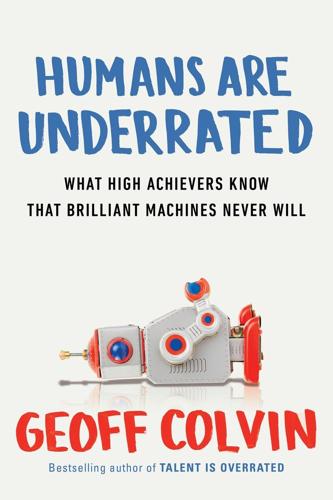
Humans Are Underrated: What High Achievers Know That Brilliant Machines Never Will
by
Geoff Colvin
Published 3 Aug 2015
Point a video camera at any person’s face, and the company’s Sentiment Analysis software can tell you that person’s overall sentiment (positive, negative, neutral) plus display a continually updating bar chart showing levels of seven primary emotions—joy, surprise, sadness, fear, disgust, contempt, anger—and two advanced emotions, frustration and confusion (advanced because they’re combinations of other emotions). Point the camera at a group of people and it analyzes all their emotions and gives you a composite readout. Incorporate the software into Google Glass, as the company has done, and the emotion readouts for anyone you’re looking at appear before your eyes (and yes, several people quickly noted that the emotion you may very well detect is contempt for you because you’re wearing Google Glass). Emotient’s initial target market for selling the Sentiment Analysis system was retailers, but the possibilities are obviously much broader. Affectiva, a spin-off from MIT’s Media Lab, also uses Ekman’s research to analyze facial expressions, selling its software to marketers and advertisers so they can conduct consumer research online using webcams.
…
Paul Ekman Group has continued for many years—see www.paulekman.com. The possibilities of such technology . . . For the founders and advisers of Emotient, see www.emotient.com. Point a video camera at any person’s face . . . “This Google Glass App Will Detect Your Emotions, Then Relay Them Back to Retailers,” Fast Company, 6 March 2014, http://www.fastcompany.com/3027342/fast-feed/this-google-glass-app-will-detect-your-emotions-then-relay-them-back-to-retailers. Affectiva, a spin-off from MIT’s Media Lab . . . See www.affectiva.com. A separate project within the Media Lab . . . For a description, see http://affect.media.mit.edu/pdfs/14.Hernandez_et_al-DIS.pdf.

Exponential Organizations: Why New Organizations Are Ten Times Better, Faster, and Cheaper Than Yours (And What to Do About It)
by
Salim Ismail
and
Yuri van Geest
Published 17 Oct 2014
Like it or not, we are hurtling towards a world of radical transparency—and being driven off the privacy cliff by trillions of sensors recording our every move. Beyond Verbal, an Israeli company, can analyze the tonal variations of a 10-second clip of your voice to determine mood and underlying attitude with an 85 percent certainty. Now, toss into this mix Google Glass, the smart eyewear that enables video or images to be recorded or transmitted in real time anywhere as people move throughout their day. Next, add drones, which cost less than $100 and can be flown at a variety of altitudes, their 5-gigapixel cameras capturing everything in the landscape below.
…
In launching the Google[X] lab, Google has taken the classic skunkworks approach to new product development further than anyone ever imagined. Google[X] offers two fascinating new extensions to the traditional approach. First, it aims for moonshot-quality ideas (e.g., life extension, autonomous vehicles, Google Glass, smart contact lenses, Project Loon, etc.). Second, unlike traditional corporate labs that focus on existing markets, Google[X] combines breakthrough technologies with Google’s core information competencies to create entirely new markets. We strongly recommend that every big company attempt something similar by creating a lab that is a playground for breakthrough technologies.
…
Implications: Algorithms driving more and more business decisions; AIs replacing a large percentage of knowledge workers; AIs looking for patterns in organizational data; algorithms embedded into products. Virtual/augmented reality Description: Avatar-quality VR available on desktop in 2-3 years. Oculus Rift, High Fidelity and Google Glass drive new applications. Implications: Remote viewing; centrally located experts serving more areas; new practice areas; remote medicine. Bitcoin and block chain Description: Trustless, ultra-low-cost secure transactions enabled by distributed ledgers that log everything. Implications: The blockchain becomes a trust engine; most third-party validation functions become automated (e.g., multi-signatory contracts, voting systems, audit practices).
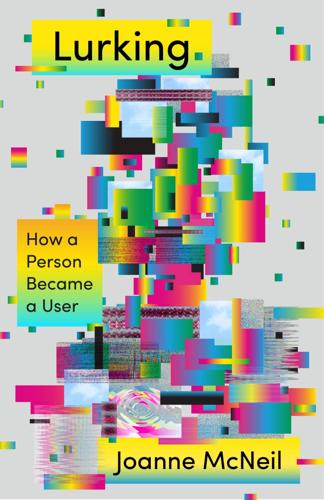
Lurking: How a Person Became a User
by
Joanne McNeil
Published 25 Feb 2020
—and Google Street View appeared, at first, as an obvious invasion of privacy, not to mention an act of hubris with an undercurrent of colonization. But a person—a user—can hardly rail against technology forever, when it is widely deployed. It isn’t normalization, exactly, but the nature of priorities in a busy life. Public discomfort with Google Glass was enough for the company to jettison its development; but an example like that is rare, not to mention never so extreme that users, en masse, boycotted Google for its missteps. Not that it is easy to give up searching. Because above all, Google is easy. Use became second nature so easily. All you had to do was wonder about something.
…
Whatever his motivation, Sorkin, on that stage and with that trophy, might as well have shouted out: Don’t worry, world. It’s just a movie. Facebook is good after all! A 2013 XKCD comic satirizes the flip side of misfires in tech criticism. One character in the drawing says to another, “Maybe before we rush to adopt <Google Glass> we should stop to consider the consequences of blithely giving this technology such a central position in our lives.” The caption below the panel reads, “Don’t have any insights about a new technology? Just use this sentence! It makes you sound wise and you can say it about virtually anything.”
…
Evan Williams, the founder of Medium, had previously founded Twitter and Blogger, but his new platform, which launched in 2012, was inscrutable. Medium, in its early years, seemed like a comprehensive list of every rejected Wired pitch, either stories that were too outlandishly techno-sociopathic (“What If Trayvon Martin Was Wearing Google Glasses?” was the title of an actual piece a Medium user published in 2013 that argued the device might have saved the teenager’s life) or commentary that ever so modestly addressed sexism in the tech industry (“Hi, pardon me, sorry, but could guys at software conferences please stop sexually harassing me?”).

Data and Goliath: The Hidden Battles to Collect Your Data and Control Your World
by
Bruce Schneier
Published 2 Mar 2015
Perhaps the extreme in the data-generating-self trend is lifelogging: continuously capturing personal data. Already you can install lifelogging apps that record your activities on your smartphone, such as when you talk to friends, play games, watch movies, and so on. But this is just a shadow of what lifelogging will become. In the future, it will include a video record. Google Glass is the first wearable device that has this potential, but others are not far behind. These are examples of the Internet of Things. Environmental sensors will detect pollution levels. Smart inventory and control systems will reduce waste and save money. Internet-connected computers will be in everything—smart cities, smart toothbrushes, smart lightbulbs, smart sidewalk squares, smart pill bottles, smart clothing—because why not?
…
Initially, the data from private cameras will most likely be used by bounty hunters tracking down bail jumpers. Eventually, though, it will be sold for other uses and given to the government. Already the FBI has a database of 52 million faces, and facial recognition software that’s pretty good. The Dubai police are integrating custom facial recognition software with Google Glass to automatically identify suspects. With enough cameras in a city, police officers will be able to follow cars and people around without ever leaving their desks. This is mass surveillance, impossible without computers, networks, and automation. It’s not “follow that car”; it’s “follow every car.”
…
They put a camera in a public place, captured images of people walking past, identified them with facial recognition software and Facebook’s public tagged photo database, and correlated the names with other databases. The result was that they were able to display personal information about a person in real time as he or she was walking by. This technology could easily be available to anyone, using smartphone cameras or Google Glass. Sometimes linking identities across data sets is easy; your cell phone is connected to your name, and so is your credit card. Sometimes it’s harder; your e-mail address might not be connected to your name, except for the times people refer to you by name in e-mail. Companies like Initiate Systems sell software that correlates data across multiple data sets; they sell to both governments and corporations.

Digital Bank: Strategies for Launching or Becoming a Digital Bank
by
Chris Skinner
Published 27 Aug 2013
This also means that the augmented economy is already a reality. The Augmented Economy “Any sufficiently advanced technology is indistinguishable from magic.” Arthur C. Clarke, 1917 - 2008 The augmented economy, where everything is connected and communicating and transacting non-stop, became a reality in 2013 when Google launched Google Glass. Google Glass is a pair of wifi glasses that allow you to see enhanced information about all that is around you in real-time. Google and influential commentators such as Robert Scoble believe this technology will change people’s lives forever. This will have a profound impact on society, and therefore customers and consumers for, if we can offer products and services at the customer’s point of existence through an augmented delivery 24*7, then we can change everything.
…
The bank designed for humans will not have retail stores that are geared for transactions, but will have retail stores that reinforce a sense of belonging to their brand community online. Their brand community will be the community of people who are fans of their apps and services on mobiles and tablets and laptops. They may be fans who use the brand in augmented services, like Google Glass, to see if they can afford things as they cook, commute, shop, search, work and exercise. These fans see their financial service embedded in their daily lifestyle, not as something that is transacting but as something that is advising them at their point of living. And every now and again, they feel prompted to go and ask: how does this work or what do I do when and it gets them into a human contact at the bank’s Genius Bar in store or on the telephone.
…
As we search, it can log our wants and desires, including those that you don’t want anyone else to know about. These wants and desires can then be leveraged through partnerships. For example, if you searched for a Sony Ultra HD TV last night and found it at Best Buy online for $2,499, you might be driving the next day and Google Glass will pop up an alert that the TV is on offer for pickup as you drive by Best Buy for just $1,999 if you go in-store now. This linkup may then be leveraged through extended partnership. So you drive to the store and Glass advises that Citibank will approve a 36-month $2,000 loan at a 1% discount on advertised credit rates.

When Computers Can Think: The Artificial Intelligence Singularity
by
Anthony Berglas
,
William Black
,
Samantha Thalind
,
Max Scratchmann
and
Michelle Estes
Published 28 Feb 2015
Mobile phones let us communicate effortlessly wherever we are with much the same effect as if we had psychic telepathy. New tools such as Google Glass can tell Google everything we see and hear, as well as provide pervasive assistance with an always-on screen. We need never be embarrassed by forgetting somebody’s name, as the machine will recognize their face and tell us instantly. If we feel hungry, the machine will automatically direct us to a restaurant based on our culinary preferences and the advertising fees paid. Google glass projects images into the wearer’s field of view. Corporate Google Cochlear implants go even further and directly stimulate the auditory nerves of patients with damaged ears.
…
However he then contradicted himself by hoping that the machine would be docile enough for it to tell us how to keep it under control. Saving us from ourselves. Owned WBlack Man and machine Man may eventually become one with his machines. My daughters are already one with their mobile phones. Augmented reality adds computer generated content to our view of the world. With Google Glass, for example, the computer sees everything that the wearer sees, as well as being able to project images onto the world that the user sees. When combined with facial recognition technology it promises to be very useful for remembering the names of acquaintances at parties, say. It is also possible to control simple machines using only one’s thoughts which are detected through brain waves.
…
There is considerable research in taking signals from either nerves or the brain itself to control prosthetic limbs, which may prove invaluable to amputees or people with damaged spinal cords. It is only a matter of time before small computers are embedded within the body itself. People already implant microchips into their pets so they can be found if they become lost. Ultimately, Google Glass may not need the glasses at all, and people will have continuous, almost subconscious access to all the power of cyberspace. Such implants might also be used to monitor and control the behaviour and thoughts of people deemed to be criminals. In the much more distant future, brain diseases such as dementia may be treated by replacing parts of the brain with computers that have been uploaded with the person’s consciousness.

WTF?: What's the Future and Why It's Up to Us
by
Tim O'Reilly
Published 9 Oct 2017
Despite the much-publicized failure of Google Glass and the premature hype around virtual reality platforms such as Oculus Rift, there is plenty of evidence that augmented reality and virtual reality will have a powerful impact in on-demand learning. Smartphones and tablets alone are already being used effectively in areas like telehealth and shop floor communications and on-the-job training, and with Microsoft’s investment in HoloLens, continued experiments like Snap’s Spectacles, and rumored new products from Apple, not to mention that a next generation of Google Glass is likely still under development, I’m confident that there will be plenty of news on this front.
…
Feynman, 157–58. 341 discovered by sponsors and invited to competitions: John Hagel III, John Seely Brown, and Lang Davison, The Power of Pull (New York: Basic Books, 2010), 1–5. 342 “far beyond teachers or textbooks”: Brit Morin, “Gen Z Rising,” The Information, February 5, 2017, https://www.theinformation.com/gen-z-rising. 342 100 million hours of how-to videos: Google, “I Want-to-Do Moments: From Home to Beauty,” Think with Google, retrieved April 4, 2017, https://www.thinkwithgoogle.com/articles/i-want-to-do-micro-moments.html. 343 reflect the needs of the digital economy: “Skillful: Building a Skills-Based Labor Market,” Markle, retrieved April 4, 2017, https://www.markle.org/rework-america/skillful. 345 augmented reality display for infantry soldiers: Adam Clark Estes, “DARPA Hacked Together a Super Cheap Google Glass-Like Display,” Gizmodo, April 7, 2015, http://gizmodo.com/darpa-hacked-together-a-super-cheap-google-glass-like-d-1695961692. 345 deep commitment Microsoft has made to human augmentation: Satya Nadella, interviewed by Gerard Baker, “Microsoft CEO Envisions a Whole New Reality,” Wall Street Journal, October 30, 2016, https://www.wsj.com/articles/microsoft-ceo-envisions-a-whole-new-reality-1477880580. 346 equally but differently skilled: James Bessen, Learning by Doing (New Haven, CT: Yale University Press, 2015), 28–29. 346 “little to do with the knowledge acquired in college”: Ibid., 25. 346 “they published quality periodicals”: Ibid., 24. 347 “what it takes to create a stable, trained labor force”: Ibid., 36. 347 “sling JavaScript for their local bank”: Clive Thompson, “The Next Big Blue-Collar Job Is Coding,” Wired, February 2, 2017, https://www.wired.com/2017/02/program ming-is-the-new-blue-collar-job/. 348 “when shared by a critical mass of people”: Ryan Avent, The Wealth of Humans (New York: St.
…
The organization provides free healthcare to people in poverty using a model in which community health workers recruited from the population being served are trained and supported in providing primary care. Doctors can be brought in as needed, but the bulk of care is provided by ordinary people. Imagine a community health worker who is able to tap on Google Glass or some next-generation wearable, and say, “Doctor, you need to see this!” (Trust me. Glass will be back, when Google learns to focus on community health workers, not fashion models.) It’s easy to imagine how rethinking our entire healthcare system along these lines could reduce costs, improve both health outcomes and patient satisfaction, and create jobs.

Only Humans Need Apply: Winners and Losers in the Age of Smart Machines
by
Thomas H. Davenport
and
Julia Kirby
Published 23 May 2016
Engelbart, “Augmenting Human Intellect: A Conceptual Framework,” SRI Summary Report AFOSR-3223, prepared for Director of Information Sciences, Air Force, Office of Scientific Research, Washington 25, DC, Contract AF 49(638)-1024, SRI Project No. 3578 (AUGMENT,3906), October 1962, http://insitu.lri.fr/~mbl/ENS/FONDIHM/2012/papers/Englebart-Augmenting62.pdf. 5. Norbert Wiener, The Human Use of Human Beings: Cybernetics and Society (New York: Da Capo Press, 1988), 159. 6. Maddy Myers, “Google Glass: Inspired by Terminator,” Slice of MIT, May 30, 2013, https://slice.mit.edu/2013/05/30/google-glass-inspired-by-terminator/. 7. David Scott, remarks at the opening of the Computer Museum, June 10, 1982, transcript accessed October 29, 2015, http://klabs.org/history/history_docs/ech/agc_scott.pdf. 8. David A. Mindell, Digital Apollo: Human and Machine in Spaceflight (Cambridge, MA: MIT Press, 2008). 9.
…
When a machine greatly augments your powers of information retrieval, as many information systems do, we would call that gaining a superpower. Indeed, in the Terminator film franchise, out of all the superhuman capabilities Skynet designed into its “cybernetic organisms,” the one filmgoers covet most is the instant pop-up retrieval of biographical information on any humans encountered. It was the inspiration, for example, for Google Glass, according to the technical lead on that product, Thad Starner.6 (And although we had to say Hasta la vista, baby, to that particular product, Google assures us it will be back.) When Tom wrote a book about knowledge workers a decade ago, there were already some examples of how empowering such information retrieval can be for them.
…
See also Vanguard Group ATMs, 14 augmentation in, 86–88 automated decision-making (robo-advisors) and other automated jobs, 11–12, 18, 20, 22, 25, 29, 48, 86, 87, 88, 92, 100, 105, 156–57, 198–99, 213, 214 bank failure, 90 Cathcart and WaMu, 89–91 creating a balance between computer-based and human skills, 105 federal regulatory agencies and, 214 hedge funds, 6, 84, 92–93, 95, 111 “portfolio management” jobs, 92 risk management systems, 146 Stepping Narrowly, Carey and, 172–73 Stepping Up in, 92–93 Finland, 239 Flickr, 125–26 food and food preparation, 122–23, 128 Ford, Martin, 205 Ford Motor Company, 1, 213 Foxconn, 2 Frames of Mind: The Theory of Multiple Intelligences (Gardner), 113 Franks, Bill, 43 Freud, Sigmund, 242 Future of Life Institute, 243–44, 247 open letter by, 247–48 Gardner, Howard, 113 Garland, Alex, 127 Gartner, 4, 43, 196 Gates, Bill, 226 Geist, Edward Moore, 245 General Motors, 213 Georgetown University’s Center on Education and the Workforce, 23 Gervais, Ricky, 109–10 Gibbons, Grinling, 159 Gladwell, Malcolm, 108 Glaser, Robert, 163 Global Drucker Forum, 248 Goldman Sachs, 156, 172–73, 186 Goldsberry, Kirk, 164 Gongos, 62–63 Google, 181, 213 Googlers-to-Googlers (G2G), 233 Google Classroom, 141 Google Glass, 65 Google Translate, 43, 53, 56, 151 Gou, Terry, 2, 224 Granakis, Alfred, 1 Gray, Peter, 118 Great Depression, 238, 239 Green, David, 6 Gretzky, Wayne, 160 guaranteed basic income, 241–43, 246 GW Medical Faculty Associates, 181 Hafez, Alex, 132, 143–44, 145, 146 Hanover Insurance, 102–3, 134 Hanson, David, 123 Hanson Robot, 123–24 Harrington, Brian, 101–2 Hawking, Stephen, 225–26 HCL Technologies, 204 health care and medicine adding new sources of data, 197 anesthesiologists, 19 augmentation in cancer care, 209–10 automated diagnosis and treatment protocols, 46, 54, 55–56, 66, 209 automation in, 14–15, 16–18, 19, 157 cancer research, 46, 60–61, 212 cognitive technologies in, 4–5, 17, 41 computer-aided physician order entry, 66 cost of AI programs, 155–56 cost of U.S., 155–56 Dr.

Ghost Fleet: A Novel of the Next World War
by
P. W. Singer
and
August Cole
Published 28 Jun 2015
,” National Oceanic and Atmospheric Administration, accessed August 19, 2014, http://oceanservice.noaa.gov/facts/eez.html. 7 “as designated by the Mariana Trench”: Dan Vergano, “Bush to Make Pacific’s Mariana Trench a National Monument,” USA Today, January 6, 2009, accessed March 14, 2013, http://usatoday30.usatoday.com/tech/science/environment/2009-01-05-mariana-trench_N.htm. 7 “drop a Remora”: “Remora — Fast Reconnaissance AUV,” L-3 Ocean Systems, accessed August 16, 2014, http://www.l-3mps.com/oceansystems/remora.aspx. 9 viz glasses: Chris Smith, “2020 Vision: The Future of Google Glass,” TechRadar, October 19, 2013, accessed February 22, 2014, http://www.techradar.com/us/news/world-of-tech/2020-vision-the-future-of-google-glass-1190832. 10 “stuck in the Ghost Fleet”: “National Defense Reserve Fleet,” U.S. Department of Transportation Maritime Administration, accessed August 16, 2014, http://www.marad.dot.gov/ships_shipping_landing_page/national_security/ship_operations/national_defense_reserve_fleet/national_defense_reserve_fleet.htm. 10 Aegis cruiser: “The U.S.
…
Louis Magazine, February 22, 2012, accessed August 20, 2014, http://www.stlmag.com/What-its-Like-to-Sip-a-Century-Old-Champagne-From-a-Shipwreck/. 143 “article one, section eight”: “The Constitution of the United States: A Transcription,” National Archives, accessed August 20, 2014, http://www.archives.gov/exhibits/charters/constitution_transcript.html. 144 the graffiti: “Patent: Method and Apparatus for Creating Virtual Graffiti in a Mobile Virtual and Augmented Reality System, US 8350871 B2,” Google, January 8, 2013, accessed August 20, 2014, http://www.google.com/patents/US8350871. Also see http://grafiti.mobi/dig-graffiti-applications-and-tools-for-smes-and-users/. 146 first-generation Google Glass: “Google Glass: What It Does,” Google, accessed August 20, 2014, http://www.google.com/glass/start/what-it-does/. 148 passed the SIG Sauer P226 pistol: “Pistols — P226,” SIG Sauer, accessed August 20, 2014, http://www.sigsauer.com/catalogproductlist/pistols-p226.aspx. 151 The Versatrax 300: “Versatrax 300,” Inuktun, accessed July 24, 2014, http://www.inuktun.com/crawler-vehicles/versatrax-300.html. 156 old Defense Production Act: “The Defense Production Act of 1950, As Amended,” Department of Defense, accessed August 20, 2014, http://www.acq.osd.mil/mibp/dpac/final__defense_production_act_091030.pdf. 157 representing a sovereign wealth fund: “Sovereign Wealth Funds — Frequently Asked Questions,” February 27, 2008, European Commission, accessed August 20, 2014, http://europa.eu/rapid/press-release_MEMO-08-126_en.htm?
…
He stiffened and then relaxed once she backed away. He lost his balance, and she lunged forward to steady him with an awkward hug. “Sweet Jesus,” said Mike. It was so real. He’d heard it was something about the way they projected a data stream onto your retinas that made it so different from the first-generation Google Glass. With these, you weren’t so much looking through the glass at the world; it was more like the world was being brought inside your brain. It gave you the sense of not just seeing, but feeling. And it felt damn weird. Vern led him by the hand to the graffiti. He saw the sticky red that part of his brain said was real, even down to its smell, and that drowned out the other part of his brain whispering that it wasn’t real, that it hadn’t been there just a few seconds ago.
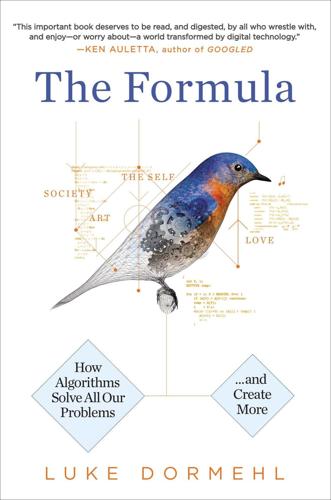
The Formula: How Algorithms Solve All Our Problems-And Create More
by
Luke Dormehl
Published 4 Nov 2014
The 1980s brought about the rise of the “robo-cized” athletes who used Nautilus, Stairmaster and other pieces of high-tech gym equipment to sculpt and hone their bodies to physical perfection. That same decade saw the advent of the portable technology known as the Sony Walkman (a nascent vision of Google Glass to come), which transformed public spaces into a controllable private experience.7 Building on this paradigm, the 1990s was home to MIT’s Wearable Computing Group, who took issue with what they considered to be the premature usage of the term “personal computer” and insisted that: A person’s computer should be worn, much as eyeglasses or clothing are worn, and interact with the user based on the context of the situation.
…
The first time I spoke with Ming, it was May 2013, and she was sitting in the back of a taxicab on her way to San Francisco International Airport. A tall, striking woman with silver-blue eyes and strawberry-blond hair, Ming is a theoretical neuroscientist with a Carnegie Mellon University pedigree. Effortlessly assured, her geeky engineering side is evidenced by the fact that she wears a prerelease Google Glass headset. In addition to her neuroscience background, Ming’s Twitter profile describes her as an “intrepid entrepreneur, undesirable superhero [and] very sleepy mother.” Ming is deeply invested in Gild’s utopian vision of turning the workplace into the kind of meritocracy she believes it should be.
…
(Winner) 134 Dodds, Peter 172–76 Dominguez, Jade 25 Dostoyevsky, Fyodor 118 Dourish, Paul 231 Dow Jones 219 drunk driving 142–44 Eagle, Nathan 85 Ecker, David 206–7, 219 eHarmony 71, 74–77, 88 see also Internet; love and sex; Warren, Neil Clark Eisenstein, Sergei 178 Electric Dreams 103 Ellul, Jacques 5, 56 EMD Serono 58 emotion sniffing 51–52 Emotional Optimisation 200–201 Enchanted Loom, The (Jastrow) 96 entertainment, see art and entertainment Epagogix 165–68, 170–72, 176, 179, 191, 203, 205 Eric Berne Memorial Scientific Award 23 Essay on the Moral Statistics of France (Guerry) 117 “Experimental Study of Inequality and Unpredictability in an Artificial Cultural Market” 173 Facebook 232, 241 and Facedeals 20 and facial recognition 215 how algorithms work with 2 jobs at 27 profiles, and people’s success 30–31 profiles, traits inferred from 37–38 Timeline feature on 38–39 and YouAreWhatYouLike 37 Facedeals 20 facial recognition and analysis 20, 33, 91, 146, 151, 193, 215 and Internet dating 78 Failing Law Schools (Tamanha) 216 Family Guy 196 Farewell to the Working Class (Gorz) 217–18 Fast Company 3, 35, 128, 220 on Amazon 44–5 Faster Than Thought (Bowden) 184 Faulkner, William 187 Feldman, Konrad 18–19 films, see art and entertainment Filter Bubble, The (Pariser) 47 Fincher, David 189 Find the Love of Your Life (Warren) 73 FindYourFaceMate 78 Fitbit 13 FitnessSingles 78 Flash Crash 219 flexitime 43 Food Stamp Act (US) 154–55 Ford, Henry 44 Foucault, Michel 101 Fourastie, Jean 219 Freud, Sigmund 11 Friedman, Milton 218 Galbraith, Robert 187 Gale, David 62–63, 66 Galton, Francis 31–32 gaming technology 32–33 Gass, John 148 Gates, Bill 182 Geek Logik (Sundem) 67–68 gender reassignment 26 GenePartner 77–78 Generation X (Coupland) 16 Gibson, William 194n Gild 25–26, 29–30 Gillespie, Tarleton 233 Gladwell, Malcolm 211 Goldman, William 161, 173 Good Morning America 67 Google 201–2 and auto-complete 225–27 claimed objectivity of 220–21 differentiated results from 46–48 dynamic-pricing patent granted to 50; see also differential pricing employment practices of 41–42 and facial recognition 215 Flu Trends algorithm of 238–39 how algorithms work with 2 and inadvertent racism 151 and Lake Wobegone Strategy 27–29 Levy’s study of 41 and news-outlet decline 225–27 People Analytics Group within 41–42; see also web analytics and self-driving cars 143, 213 Slate article on 41 and UAL 229 Google Earth 135 Google Glass 14, 26 Google Maps 16, 134–35 Google Street View 227 Google Translate 215, 221 Gorz, André 217 Gottschall, Jonathan 186 Gould, Stephen Jay 33–34 Graf, Daniel 135 graph theory 182 Grindr 89, 152 Guardian 84 Guattari, Félix 48, 54 Guerry, André-Michel 114–18 Gusfield, Joseph 142–43 Halfteck, Guy 32–34 Hansen, Mark 53 Hanson, Curtis 167 Heaven’s Gate 167 Henry VI (Shakespeare) 125–26 Her 103 Hitchcock, Alfred 17 Hogge, Becky 44 Holmes, Katie 68–69 Holmes, Oliver Wendell Jr. 158 Horkheimer, Max 179, 205 House of Cards 188–89 House of Commons, rebuilding of 45 How the Mind Works (Pinker) 80 Human Dynamics (at MIT) 85 Hume, David 199–200 Hunch 37, 234 Hunger Games, The 169 Hutcheson, Joseph C.

The Economic Singularity: Artificial Intelligence and the Death of Capitalism
by
Calum Chace
Published 17 Jul 2016
Wearables, insideables At the moment, the vessel which transports the primitive forebears of these essential guides is the smartphone, but that is merely a temporary embodiment. We will surely progress from portables to wearables (Apple Watch, Google Glass, smart contact lenses...) and eventually to “insideables”: sophisticated chips that we carry around inside our bodies. You doubt that Google Glass will make a comeback? The value of a head-up display, where the information you want is displayed in your normal field of vision, is enormous; that's why the US military is happy to pay half a million dollars for each head-up display helmet used by its fighter aircraft pilots.
…
There are experiments with exoskeletons for construction workers, but these are still expensive. 6. Technology. Firms are fighting to recruit and retain machine learning experts; the salaries and bonuses offered were previously unknown outside financial services and professional sports. Sales of wearables are growing, and the successors to Google Glass are out-selling smart watches. 7. Utilities. Water companies and power generation and transmission firms are building out fleets of tiny robots and drones which patrol pipes and transmission lines, looking for early warning signs of failure. 8. Finance. Retail banking is mostly automated and web-based, and consumer feedback on the quality of service is improving.
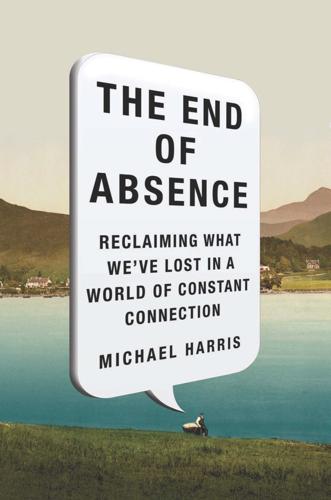
The End of Absence: Reclaiming What We've Lost in a World of Constant Connection
by
Michael Harris
Published 6 Aug 2014
I remember breaking away from the festivities to check my phone, only to find that my friend was posting photos of the very wedding I’d stepped away from: pixelated simulacra of the moment I had left. The most obvious reason a person would ditch the authentic is, of course, to gain access to a heightened version of dull reality. Enter the promise and wonder of Google Glass, released in 2013, which offers just that—augmented reality. The “wearable computer” is a (slightly futuristic, slightly dorky) headset fixed with a miniature display and camera, which responds to voice commands. We can tell it to take a picture of what we’re looking at or simply pull up Google Images’ archive of vintage Hulk Hogan photos because we want to compare the hairdo being sported by that guy on the metro.
…
“school was an invention of the printing press”: Neil Postman, Technopoly: The Surrender of Culture to Technology (New York: Vintage, 1993), 10. Marshall McLuhan argues that whenever we amplify: Marshall McLuhan, Understanding Media: The Extensions of Man, (Berkeley, Calif.: Ginkgo Press, 2003), 63–70. “Welcome to a world through glass”: “What It Does—Google Glass,” accessed September 5, 2013, http://www.google.com/glass/start/what-it-does/. “the brightness and glory of the Emerald City”: Baum, Wonderful Wizard of Oz, 88. “No more than in any other city”: Ibid., 151–52. “a cathedral quits its site”: Walter Benjamin, The Work of Art in the Age of Mechanical Reproduction (London: Penguin, 2008), 6.
…
M., 106–7, 109 4chan, 53–54 Foursquare, 150–51 Frankenstein (Shelley), 56 Frankfurt, Harry G., 92 Franklin, Benjamin, 192 friends, 30–31 Frind, Markus, 182–83 Furbies, 29–30 Füssel, Stephan, 103 Gaddam, Sai, 173 Gallup, 123 genes, 41–43 Gentile, Douglas, 118–21 German Ideology, The (Marx), 12n Gleick, James, 137 Globe and Mail, 81–82, 89 glossary, 211–16 Google, 3, 8, 18–19, 24, 33, 43, 49, 82, 96, 142, 185 memory and, 143–47 search results on, 85–86, 91 Google AdSense, 85 Google Books, 102–3 Google Glass, 99–100 Google Maps, 91 Google Plus, 31 Gopnik, Alison, 33–34 Gould, Glenn, 200–201, 204 GPS, 35, 59, 68, 171 Greenfield, Susan, 20, 25 Grindr, 165, 167, 171, 173–74, 176 Guardian, 66n Gutenberg, Johannes, 11–13, 14, 16, 21, 34, 98 Gutenberg Bible, 83, 103 Gutenberg Galaxy, The (McLuhan), 179, 201 Gutenberg Revolution, The (Man), 12n, 103 GuySpy, 171, 172, 173 Hangul, 12n Harari, Haim, 141 Harry Potter series, 66n Hazlehurst, Ronnie, 74 Heilman, James, 75–79 Henry, William A., III, 84–85 “He Poos Clouds” (Pallett), 164 History of Reading, A (Manguel), 16, 117, 159 Hollinghurst, Alan, 115 Holmes, Sherlock, 147–48 House at Pooh Corner, The (Milne), 93 Hugo, Victor, 20–21 “Idea of North, The” (Gould), 200–201 In Defense of Elitism (Henry), 84–85 Information, The (Gleick), 137 information retrieval, 141–42 Innis, Harold, 202 In Search of Lost Time (Proust), 160 Instagram, 19, 104, 149 Internet, 19, 20, 21, 23, 26–27, 55, 69, 125, 126, 129, 141, 143, 145, 146, 187, 199, 205 brain and, 37–38, 40, 142, 185 going without, 185, 186, 189–97, 200, 208–9 remembering life before, 7–8, 15–16, 21–22, 48, 55, 203 Internship, The, 89 iPad, 21, 31 children and, 26–27, 45 iPhone, see phones iPotty, 26 iTunes, 89 Jobs, Steve, 134 Jones, Patrick, 152n Justification of Johann Gutenberg, The (Morrison), 12 Kaiser Foundation, 27, 28n Kandel, Eric, 154 Kaufman, Charlie, 155 Keen, Andrew, 88 Kelly, Kevin, 43 Kierkegaard, Søren, 49 Kinsey, Alfred, 173 knowledge, 11–12, 75, 80, 82, 83, 86, 92, 94, 98, 141, 145–46 Google Books and, 102–3 Wikipedia and, 63, 78 Koller, Daphne, 95 Kranzberg, Melvin, 7 Kundera, Milan, 184 Lanier, Jaron, 85, 106–7, 189 latent Dirichlet allocation (LDA), 64–65 Leonardo da Vinci, 56 Lewis, R.
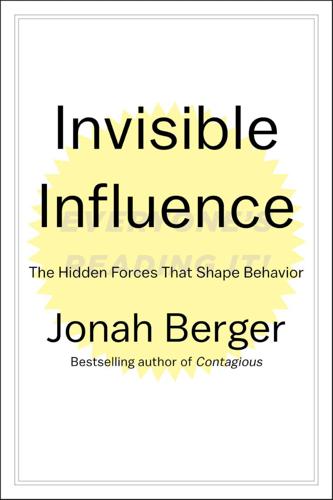
Invisible Influence: The Hidden Forces that Shape Behavior
by
Jonah Berger
Published 13 Jun 2016
So we choose things that create a sense of difference. Brands that no one else has heard of or apartments in areas that have yet to become gentrified. Limited-edition T-shirts or vacations to obscure Polynesian islands that are only reachable by outrigger canoe.18 Distinction even helps explains the adoption of niche high-tech gadgets. Google Glass was supposed to be the future of wearable computing. An optical head-mounted display that placed a small screen in the user’s field of vision, it was labeled one of the best inventions of 2012. It promised to take notes, snap pictures, or get directions, all while being hands-free and liberating people to do what they do best.
…
There were privacy concerns and ethical questions about recording people without their permission. Studies raised issue with the device being distracting and states moved to ban Glass while driving. Some early adopters bragged so much that wearers were termed “glassho%$s” for showing off. Soon, Google Glass began to be seen as a solution in search of a problem (rather than the other way around). Yet, with all these flaws, people still clamored for the device. They angled for an invite (it was never publicly available) or bid close to $100,000 just to get their hands on one. Because buying Glass was more than just about whether it was useful or not.
…
See Green frogs Galbraith, Robert (Rowling pseudonym), 54–55 Game theory, 148n Gap, 148 Garnett, Kevin, 207 Geeks, wristband-wearing, 110–14, 180 Goldilocks effect, 166–71, 230 Goldstein, Noah, 200 Golf (sport), 219 Golf (Volkswagen), 157 Gone with the Wind (Mitchell), 45 Gonzales, Richard (“Pancho”), 211–14 Google Glass, 79–80 Greek yogurt, 149 Greenfinches, social facilitation and, 190 Green frogs, deception by, 16, 108–9, 229 Griskevicius, Vladas, 200 Groupthink, 58–59, 60 Gucci, 99, 129, 132, 133, 180 Häagen-Dazs, 103–4 Hamsters, novelty and, 165–66 Handbag evaluation experiment, 84–85, 129, 132, 134–35 Harding, Warren G., 162, 163 Harry Potter books (Rowling), 16, 44–46, 54 Harvard University, 198, 199, 220 Hathaway, Anne, 101 Health risk perception, 142–43 Heath, Chip, 113 Hispanics, 120 Hockey, 204 Hoffbrau Steakhouse, 116–17 Homophily, 176n Honda, 107–8 Horsey Horseless, 182–83 Housing, low-income, 223–29 Hurricane Andrew, 154 Hurricane Katrina, 153, 154–55, 156 Hurricanes, 16, 153, 154–55, 156, 170–71 Ice cream cone experiment, 33–34 Identity differentiation and, 80–83 signaling (see Signals) superordinate, 144–45 Identity-relevant attributes, 180 iMac, 185 Imitation, 15, 16, 19–61, 74, 229–30.

In Our Own Image: Savior or Destroyer? The History and Future of Artificial Intelligence
by
George Zarkadakis
Published 7 Mar 2016
Nike’s Fuel Band helps users to monitor and stimulate their body’s activity, and thus become more active and healthy. In 2013, Google launched ‘Google Glass’ which enhances human communication capabilities by connecting the wearer constantly to the Internet. Google Glass takes our contemporary symbiosis with social networks to the next level; the wearer is always connected, he or she becoming an information node in the global telecommunications network. In 2002, British scientist Kevin Warwick, presaging Google Glass somewhat gruesomely, had a hundred electrodes surgically implanted in the median nerve fibres of his left arm. Using the electrodes, he connected his nervous system to the Internet and thereby controlled a host of electrical devices including a robotic arm, a loudspeaker and an amplifier.
…
Scott 276–7 Flowers, Tommy 235 Forbidden Planet (1956 film) vii–viii, xvii formal logical systems 200–11 Foxconn 267 FOXP2 gene 13 Frankenstein (Mary Shelley) 40, 60–5, 165 Franklin, Benjamin 37, 38–9 Frege, Gottlob 141, 198–200 Fremont-Smith, Frank 175–6 Friar Bacon and Friar Bungay (play) 35–6, 58 functional magnetic resonance imaging (fMRI) 158–9, 160, 161 Gaia theory 46–7 Galatea 49, 50 Galen of Pergamus (Claudius Galenus) 31–2 Galileo Galilei 102 Galvani, Luigi 39 galvanism 61 Gazzaniga, Michael 23–4 Geminoid F robots 72 general intelligence 8, 12, 13–15, 16–17 genes, and language evolution 13–15 Genesis, book of 29, 30, 58 genomes 123–4 German gothic writing 61–5, 68 Gibson, William 36 Gilbert, William 38 God, authority of 113–14 Gödel, Kurt 141, 180, 183, 186–7, 198, 206–9, 211–16 Gödel numbering 207 Goethe, Johann Wolfgang von 63 golems 45 Google 147, 233, 255, 264, 270 Google Glass 81 Google Search 250 gothic writing of the 19th century 61–5, 68 governments, watching citizens online 250–1 Great Recession (2007 onwards) 314 Greene, Robert 35 Gulliver’s Travels (Swift) 202–3 HAL 9000 computer 257 Hameroff, Stuart xvi, 106–9, 117, 212 hard choices, inability of AI to cope with 277–8 Hawking, Stephen 91, 119, 146, 270 Hayles, Katherine 146 Heisenberg’s uncertainty principle 208 Hellenistic period 31–3, 135 Helmreich, Stefan 105–6 Hephaestus 33, 49 Herbert, Frank 290 Hero of Alexandria 31 high-level consciousness 12 Hilbert, David viii, 201–11 Hipparchus 31 Hippocrates (460–370 bc) 31 Hobbes, Thomas 36–7 Hoffmann, E.
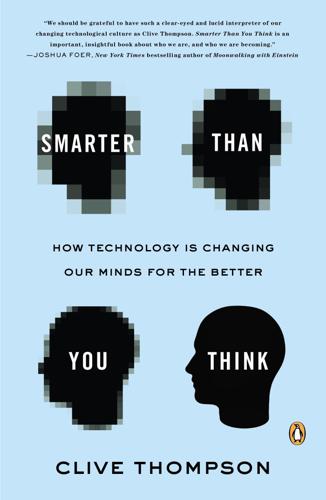
Smarter Than You Think: How Technology Is Changing Our Minds for the Better
by
Clive Thompson
Published 11 Sep 2013
Thorp, “The Invention of the First Wearable Computer,” Proceedings of the 2nd IEEE International Symposium on Wearable Computers (1998): 4–8, accessed March 23, 2013, graphics.cs.columbia.edu/courses/mobwear/resources/thorp-iswc98.pdf. Critics have already noted how unsettling it might feel: Mark Hurst, “The Google Glass Feature No One Is Talking About,” Creative Good (blog), February 28, 2013, accessed March 24, 2013, creativegood.com/blog/the-google-glass-feature-no-one-is-talking-about/; Adrian Chen, “If You Wear Google’s New Glasses You Are an Asshole,” Gawker, March 3, 2013, accessed March 24, 2013, http://gawker.com/5990395. Their recall improved, sometimes dramatically: Steve Hodges, Lyndsay Williams, Emma Berry, Shahram Izadi, James Srinivasan, Alex Butler, Gavin Smyth, Narinder Kapur, and Ken Wood, “SenseCam: A Retrospective Memory Aid,” Proceedings of the 8th International Conference of Ubiquitous Computing (2006): 177–93; Georgina Browne, Emma Berry, Narinder Kapur, Steve Hodges, Gavin Smyth, Peter Watson, and Ken Wood, “SenseCam Improves Memory for Recent Events and Quality of Life in a Patient with Memory Retrieval Difficulties,” Memory 19, no. 7 (2011): 713–22; Georgina Browne, Emma Berry, Steve Hodges, Gavin Smyth, Alex Butler, Lyndsay Williams, James Srinivasan, Alban Rrustemi, and Ken Wood, “Stimulating Episodic Memory Using SenseCam,” poster presentation on Microsoft Research Web site (2007), accessed March 24, 2013, research.microsoft.com/pubs/132686/4%20Festival%20of%20Internation%20Conferences%20Poster%20.pdf; and personal interview with Lyndsay Williams and Ken Wood.
…
He types into it using a Twiddler, an egg-sized device that lets him write with one hand. And what’s most prominent is the screen—a tiny LCD clipped to his glasses, jutting out just in front of his left eyeball. While you or I have to pull out a phone to look up a fact, he’s got a screen floating in space before him. You might have seen pictures of Google Glass, a wearable computer the company intends to release in 2014. Starner’s helping Google build it, in part because of his long experience: He’s been wearing his for two decades. “This is about creating a higher level of intellect—an augmented intellect,” he tells me when I meet him. Starner has a cheery, surferlike handsomeness, but the tiny black protuberance jutting out of his glasses is at first pretty jarring.
…
See also mapping ambient awareness of, 242–43 geography, impact on message, 62–63 location-based sharing, 81 gerrymandering, 84–86 Ghonim, Wael, 255–57, 272 Gibson, William, 9 Gilman, Charlotte Perkins, 225 Giovanni, Daniel, 38 Gladwell, Malcolm, 229 Glaeser, Edward, 15 Gleeson, Colleen, 186 Gleick, James, 259 Global Network Initiative, 277 Gmail mail as lifelog, 43–44 mail storage and ads, 28 as transactive memory tool, 131 Goffman, Erving, 238 Gold, Heather, 79–80, 226 Goodreads, 82, 243 Google collaborative projects, 171 collective knowledge as basis, 170–71 mail. See Gmail search method, 33, 37 Google Blogger, 275 Google Chat, 42 Google Docs, 155 Google Earth, 62, 171 Google Glass, 138, 141–42 Gosling, Sam, 215–16 Graham, Steve, 184 Granovetter, Mark, 227–29 Gray, Brenna Clarke, 56 Great Firewall (China), 250, 271, 273 Greeks, ancient, on writing versus debate, 68–69, 75 Grindr, 81 Guardian, 170 Guardian Project, 274 Gurrin, Cathal, 33–35, 41–42 Gutenberg, Johann, 12, 118–19, 121 Haiti earthquake, 63, 265–66 Hajizada, Adnan, 268–69, 274 Haley, Ben, 209–10 Hamilton, Buffy, 207 Hamilton, Filippa, 108 hand waving, 53–54 Harris, Frances, 205–6 hashtag, development of, 65–66 Hayden, Theresa Nielsen, 79 Heath, Christian, 213 Hein, Ethan, 72–73 Henkin, David, 49 Hersman, Erik, 62 Hickey, Lisa, 215 Hinckl, Andy, 285–86 hindsight bias, 27 Historia Naturalis, 40 history, learning through video games, 199–202 hive mind, 172 Holmes, Sherlock, 172–73 homophily, 230–31, 261, 261–63 Horvitz, Eric, 39 Hydra, 5 hyperlinks, early concept, 123 index, origin of, 121 India, and online dissent, 275–76 Innis, Harold, 8 innovation and discovery eureka moments, 131–32 theory of multiples, 58–66 Instagram, 109–10 Instapaper, 136 Internet censorship, global view, 250 early visionaries on, 122–23 human dependence on, 116 as social observation tool, 153 Internet & American Life Project, 187–88 Iran dissidents, identifying online, 270 media bans in, 267 photomanipulation, use of, 107 Ito, Mizuko, 210–11 Jackson, Maggie, 137 Jacobi, Emily, 261 James, William, 237 Jardin, Xeni, 108 Jcham979, 94–95, 98 Jenkins, Henry, 187, 202 Jennings, Ken, 282, 288 Jeopardy!
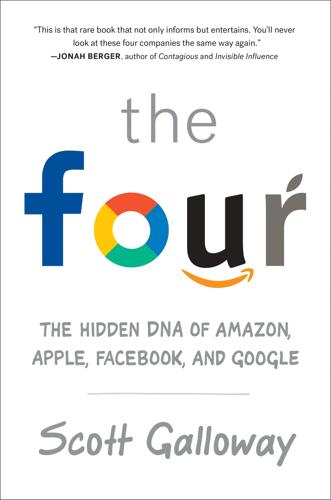
The Four: How Amazon, Apple, Facebook, and Google Divided and Conquered the World
by
Scott Galloway
Published 2 Oct 2017
That difference presents an immense advantage, providing fatter margins and a competitive edge. Luxury insulates the Apple brand, and hoists it above the price wars raging below. For now, I see modest competition for Apple from the other horsemen. Amazon sells cut-rate tablets. Facebook is no sexier than a phone book. And Google’s one venture into wearable computing, Google Glass, was a prophylactic, guaranteeing that the wearer would never have the chance to conceive a child, as nobody would get near them. Apple likely has deeper moats than any firm in the world, and its status as a luxury brand will aid its longevity. While the other three companies, the alpha lions on the veldt of high-tech competition, still face the prospect of an early demise, only Apple has the potential to cheat death.
…
Mark Zuckerberg has been (very) right about a lot of things and was due to make an enormously bad call. And he has. Technology firms do not (yet) have the skills to shape people’s decisions on what to wear in public. People care (a lot) about their looks. Most don’t want to look like they’ve never kissed a girl. Remember Google Glass? It got people beaten up. The bottom line is everyone wearing a VR headset looks ridiculous. VR will be to Zuck what Gallipoli was to Churchill, a huge failure that shows he can be (very) wrong, but won’t slow his march toward victory. The company is still positioned to dominate the global media market—and reinvent advertising for the twenty-first century.
…
ROI, 250–51, 251 wealth creation, 244–45 Carey, David, 256–57 CEOs, 38, 253–55 China, 160, 170, 190, 206–10 cloud services, 9, 41–42 collection instinct, 15–16, 176 Comcast, 228–29 competition, 8, 179–82, 189 compulsory carelessness, 174 cons in tech field, 157–68 consumer packaged goods (CPG), 51, 173 Cook, Tim, 68–69, 87 craftsmanship, 78–79 curiosity, 235 data and artificial intelligence, 198–99 behavioral data, 196–200 borrowing/reselling of, 161–63 breaches, 104 cross-silo sharing of, 163, 168 and the Fifth Horseman, 199 low cost/high value tension of, 164 and political polarization, 162 and T Algorithm, 196 deception, 158 decision making emotional, 171–73, 177 rational, 169–71, 175–77 sexual, 173–75, 178–79 design, 78–79 differentiation, 184–88, 225–26 Drexler, Mickey, 79–80, 189 e-commerce, 18, 23–24, 41, 45–48 education, 11–12, 93, 93–95, 231–32 emotional maturity, 233–35 emotion-based decisions, 171–73, 177 employees and automation, 52–54 exceptional vs. good, 231 of Four Horsemen, 266 return on human capital, 6, 6 serial monogamy of, 245–46 and T Algorithm, 201–2 value of, in stores, 62 entrepreneurs, 253–55, 257, 260–64 European Union (EU), 152, 168 Facebook, 96–125 and advertising, 99, 108, 108, 113, 113–14, 257, 258 agility of, 235 algorithm of, 105, 105–8, 117–19 analog moats of, 91 borrowing/reselling of user data, 164 brands’ investments in, 165, 166 capitalization of, 115, 188 and competition, 9, 181 connections/relationships on, 100–102, 102, 177 content generated on, 112–13, 164 and cross-silo data sharing, 163 current state of affairs, 4–5 data collection of, 99–100, 163, 200 eavesdropping of, 103–4 employees of, 268 engagement levels on, 111 and EU regulators, 168 and failure, 39 and fake news, 120–21, 122–23, 124, 125, 194 global reach of, 190, 191 and Google, 99 and hate crimes, 121 headquarters of, 202 heart-based appeal of, 177 images on, 110–11 influence of, 97–98 likability of, 193–94 and low cost/high value data, 164 market adjustments of, 111–12 and marketing funnel, 98 as media company, 119–25 and media landscape, 115–16, 119–21 and NYT’s content, 139 and political polarization, 118–19, 123 and privacy concerns, 104, 168 product differentiation of, 187 and psychological vulnerabilities, 123–24 return on human capital, 6, 6 and Snapchat, 109–10 success of, 4–5, 265–66 targeting of, 99–100, 106–7, 196 time spent on, 96, 97 vertical integration of, 195 virtual reality venture of, 113–14 and WhatsApp, 96, 97, 108, 111, 168 and Zuckerberg, 110–11, 114–15, 193 failure, 39, 40, 261–62 fake news, 120–21, 122–23, 124, 125, 194 Falcone, Phil, 139–40, 142–43, 145, 151 Fifth Horseman, 204–29 Airbnb, 225–27 Alibaba, 206, 206–10 IBM, 227–28 Microsoft/LinkedIn, 222–25 Tesla, 210–13, 213 Uber, 214–20 Verizon/AT&T/Comcast/Time Warner, 228–29 Walmart, 220–21 Firebrand Partners, 142–43 founders, iconic, 76–78 Four Horsemen acquisitions of, 7–8 and competition, 8–9, 92, 205–6 competitive strategies of, 179–82 (see also body, biology, and business) current state of affairs, 3–5 employees of, 266 and failure, 39, 40 lifespans of, 182 power of, 265 successors of, 183 (see also Fifth Horseman) trillion-dollar valuation (see T Algorithm) value of, 7, 7 See also Amazon; Apple; Facebook; Google free will, 123 friction, removal of, 57, 186–88 The Gap, 23, 79–80, 81 Gates, Bill, 4, 153, 155, 192 Gateway, 11, 178 General Motors, 6, 6, 266 genitals and decision-making, 173–75 global reach of companies, 190–91 Google, 126–56 and About.com, 151 and advertising, 108, 108, 113, 113–14, 137–38, 162, 164, 257, 258 and Alphabet, 135 and Amazon, 60, 188–89 ambitions of, 154 analog moats of, 91 and autonomous vehicles, 39, 155, 166, 188, 229 borrowing/reselling of user data, 161–63 brain-based appeal of, 175–76 and brand era’s demise, 172–73 capitalization of, 134, 134, 188 cash flow of, 133 and competition, 8–9, 92, 131–32, 152, 154, 181 and Congressional hearings, 161–62, 192–93 consumer trust in, 130–35, 176 and cross-silo data sharing, 163 current state of affairs, 5 data collection of, 199, 200 defining factors for, 132 employees of, 155–56, 202 and Facebook, 99 and failure, 39 global reach of, 191 Google Glass, 92, 115 headquarters of, 202 home page of, 132, 133 influence of, 132 and knowledge pursuits of users, 127–30, 175–76 likability of, 192–93 lowering costs for advertising, 133 as media company, 119–20, 125 and media/publishers, 161–62, 192–93 and Microsoft, 155 as modern religion, 126–27 and NYT’s content, 107, 116, 139–47, 148, 150, 151 origins of, 153 predictive power of, 135–36 and privacy implications, 136 product differentiation of, 187 and product searches, 8, 189 profits/revenue, 5, 133, 162 properties of, 154 public utility status of, 152, 154 sales people at, 262 search algorithm of, 105, 106, 130, 136–37, 147, 150, 151, 162, 176 server farms, 91 suspicious searches on, 135–36, 199 and taxes, 133–34 vertical integration of, 194–95 vulnerability of, 152–53 Graziano, Joseph, 81 grocery retailers, 58–59, 61 Grove, Andrew, 192 Hamilton, Alexander, 159–60 Harbinger Capital Partners, 139–40, 142–43.

Dawn of the New Everything: Encounters With Reality and Virtual Reality
by
Jaron Lanier
Published 21 Nov 2017
* * * The desire to make VR equipment as close to invisible as possible has always seemed misguided to me. Consider Google’s foray into heads-up displays, Google Glass. The more designers tried to make Glass blend in—just a tiny little fashionable thing on the face—the more it stood out. Like a pimple. Jaron inside VR as viewed from outside VR. The question of what stands out in a design is always part of a negotiation about power. There’s a conceit in Google Glass and related devices; the wearers of such devices will eventually be given the stealthy superpower of omniscient X-ray vision. But to an unadorned person nearby, it can feel like a surveillance device, as if the human face had been redesigned into an Orwellian demon mask.
…
So the pursuit of the fantasy of a superhero’s magical psychic powers actually serves as a cover for submission. The tiny optics hanging by the eye make the whole face small. As always, I am in a conflicted position, since some of the folks who propelled the Glass project are old friends.2 I have also experimented with designs that resemble Google Glass, and if one of them had taken off, maybe I’d have found the rationalizations to love it. Only you, the reader, are in a position to judge my objectivity. At any rate, here is a principle that is good and true: Bluntness is good in the design of information devices. Power relationships are unavoidable, but are always more ethical when they are stated clearly.
…
FORTH Fortran Foster, Scott 4chan 4-D VR playthings FOV2GO France free information free software free speech free will French intelligence French investors Fresnel optics Freud, Sigmund Freud avatars frontier, end of Fuchs, Henry Fuller, Buckminster Furness, Tom, xviiin futurism Gabriel, Peter Gaga, Lady Gal, Ran gall bladder procedure game hackers gamelan Game of Life Gamergate game theory gaming culture Garcia, Annabelle Garcia, Jerry gatekeeping Gell-Mann, Murray general purpose simulators general relativity Generation X genetics genomics geodesic domes geometry Germany Gernsback, Hugo Ghana Gibson, William Gilliam, Terry Gilmore, John global virtual space glove-based manipulation goats Gödel, Escher, Bach (Hofstader) Goelz, Dave Goffman, Ken (R. U. Serius) Google Google Glass Googleplex Gore, Al Gorilla Foundation Gould, Glenn Grand Networking Females (GNFs) graphic design graphics graphics computers GRASP Grateful Dead gravity Gravity’s Rainbow (Pynchon) great man myth Great Recession Greenleaf, Walter Grimaud, Jean-Jacques Gurdjieff, George hackers HAL hand motions, xiv-xv happenings haptic intelligence haptics active mixed reality and passive recording and virtual limbs and Harvill, Young haunted house Hawking, Stephen HBO headhunters head motion and tracking headsets hearing Heilig, Mort Henson, Jim Hero with a Thousand Faces (Campbell) Hertzfeld, Andy Hinduism Hitler, Adolf HMD (Head Mounted Display).
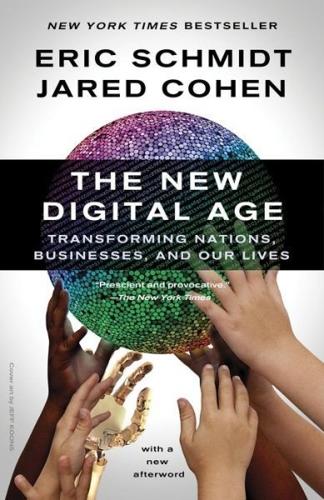
The New Digital Age: Transforming Nations, Businesses, and Our Lives
by
Eric Schmidt
and
Jared Cohen
Published 22 Apr 2013
Project Glass: Babak Parviz, Steve Lee, Sebastian Thrun, “Project Glass,” Google+, April 4, 2012, https://plus.google.com/+projectglass/posts; Nick Bilton, “Google Begins Testing Its Augmented-Reality Glasses,” Bits (blog), New York Times, April 4, 2012, http://bits.blogs.nytimes.com/2012/04/04/google-begins-testing-its-augmented-reality-glasses/. and similar devices from other companies are on the way: Todd Wasserman, “Apple Patent Hints at Google Glass Competitor,” Mashable, July 5, 2012, http://mashable.com/2012/07/05/apple-patent-google-glass/; Molly McHugh, “Google Glasses Are Just the Beginning: Why Wearable Computing Is the Future,” Digital Trends, July 6, 2012, http://www.digitaltrends.com/computing/google-glasses-are-just-the-beginning-why-wearable-computing-is-the-future/#ixzz29PI4PWK4. introducing bills that would force communications services: Declan McCullagh, “FBI: We Need Wiretap-Ready Web Sites—Now,” CNET, May 4, 2012, http://news.cnet.com/8301-1009_3-57428067-83/fbi-we-need-wiretap-ready-web-sites-now/; Charlie Savage, “As Online Communications Stymie Wiretaps, Lawmakers Debate Solutions,” New York Times, February 17, 2011, http://www.nytimes.com/2011/02/18/us/18wiretap.html.
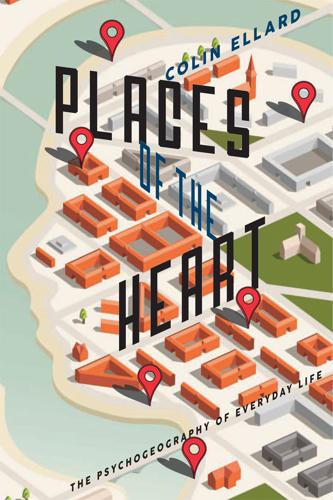
Places of the Heart: The Psychogeography of Everyday Life
by
Colin Ellard
Published 14 May 2015
Though our other senses play a role in helping us to feel immersed in and to connect with place, it is gaze that most powerfully defines the boundaries of built space. What and whom we can see and how we understand our own visibility to others is the most important determinant of our behavior in the built environment. Because of this, a device like Google Glass is not simply a novel form of portable computer interface, but rather the beginning of a kind of technology that invades that most primal connection. In its current form, Google Glass is not much more than a kind of heads-up display that allows us to receive a steady stream of annotation about our surroundings with nothing more than an upward flick of the eyeballs. But this is really only a short step from a device that might present us with a more complete digital overlay in our field of view that keeps track of our movements and updates what we see accordingly.
…
What virtual reality technology has shown us is that the design of our minds, by jacking into our predispositions to take mental flight from one time and place to another, is such that the exact form of our embodiment can be shape-shifted. Whether by inverting goggles, immersive VR helmets, or the augmented reality of a device like Google glasses, our understanding of both the shapes of our bodies and where they begin and end are all open to modification. Although we are beginning to understand the science, we have not begun to consider the wider implications of these new discoveries for human existence. I find it hard to achieve the right balance of feelings about these developments, both those already realized and those that lie on the horizon.
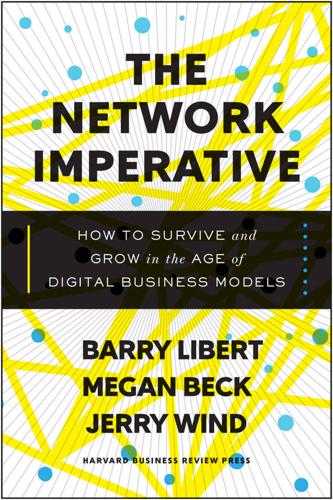
The Network Imperative: How to Survive and Grow in the Age of Digital Business Models
by
Barry Libert
and
Megan Beck
Published 6 Jun 2016
Google is well known for its capability with digital technology and for its ability to innovate, and it has developed a specific structure and process for nurturing its most innovative projects, the ones it calls “moonshots.” In 2010, Google created X to develop a self-driving car. Since then, new projects have been added, such as Google Glass, a wearable computer with an optical head-mounted display; and Project Loon, which aims to bring the internet to everyone via a network of high-altitude balloons. Although Google is a company of many talents, some of these moonshots fall well outside its standard competencies, just as network orchestration does for most organizations.
…
See openness reinforcing mental models to realize, 197–199 change leader, in PIVOT process, 132 Charles Schwab, 130 Christensen, Clayton, 3, 6 Christiansen, Ole Kirk, 67 Cisco, 37 closed organizations, move to open organization from, 115–118, 120 cloud technology customers’ use of, 29, 156 examples of companies using, 47, 140, 152, 176, 190 as key technology, 32 network orchestrators and, 148 platform choice and, 162 co-creators, leaders as, 56, 59–61, 71 Comcast, 43 commanders, leaders as, 56, 58, 59–60, 63, 71 Conference Board, 107 Consumer Reports, 80 contractors advantages of using, 86–89, 171 inventory of, 147–148 contributors description of, 66 Lego Group example of, 67 move from customers to, 71–72 size of company and, 72–73 subscription model and, 77, 80 value of contribution by, 68–70 core beliefs innovation and, 196–197 inverting, 195–196 mental model of network leaders with, 192 Cracking the Value Code (Libert, Samek, and Boulton), 6 Cratejoy, 70 Credit Suisse, 106 customers, 27, 65–73 amount of information available to, 57–58 as contributors, 66, 68 data acquired from, 78, 81–82, 96, 97, 98–99, 100, 102 digital technology enabling new interactions with, 31, 70 Lego Group example of interactions with, 67–68 loyalty of, 41, 65–66, 71, 76, 80, 81, 97–98, 100, 110, 194 management practices for intangible assets related to, 42–43 mismatch between boards and, 104–106 move to contributors by, 71–72 open organizations and, 116, 118 options available to, 57 participation valued by, 58 ratings provided by, 81, 160, 178 scoring your company on, 121–122 size of company and, 72–73 as subscribers (see subscription model) customers (continued) Threadless online community example of, 68–70 as transactors, 78, 79–80 value of contribution by, 68–70 data collection customer ratings for, 81, 160, 178 external sources in, 97–98 goals of, 99–100 new kinds of assets requiring new approaches to, 96–97 subscription model and, 78, 81–82 timeliness of data in, 98–99 Davidson, Adam, 86 decision making big data use and, 100 co-creators and, 61 network management and, 173 Deere & Company, 101 DeHart, Jacob, 68 Deloitte, 23, 57, 91 Dickey, Laura, 95, 96, 99 Dickey, Roland, 95 Dickey’s Barbecue Pit, 95–96 Digital IQ Index, 110 digital networks advantages of, 11–12, 24 co-creator and user-led aspects of, 21–22 executives’ attitudes toward, 23–24 growth of, 12, 24 intangible needs met by, 21 law of increasing returns and, 12 power of, 8, 12, 24, 28 scaling cost for, 12 digital platforms, 33–34 choosing, in PIVOT process, 162–163 description of, 33 importance of, 33–34 investment needed for, 172 managing in-house, 172–174 market valuation advantages of, 19 move from physical to digital in, 34–37 network orchestrators using, 33, 36–37 open organizations and, 118 Operating, in PIVOT process, 170–172 partnership approach to, 171 scalability characteristics of, 16 talent needed for, 170–172 team roles identified for, 171 technology choices for, 171 Visualizing, in PIVOT process, 162–163, 170 digital technology boards’ gap in knowledge and use of, 106, 107, 108, 110 broad application and use of, 30 business models and, 22–23, 31 communication changes and, 57 examples of strategy for moving toward, 47, 49–50 intangible assets leveraged using, 41, 42, 44, 45 mentorships for, 199 need for talent with experience in, 35 network advantages using, 12 new forms of customer interactions using, 31, 70 platform growth and, 34 understanding five key technologies in, 32–33 digital tools, on OpenMatters website, 10 discussion forums, 70, 72, 162 disruption, executives’ attitudes toward, 23, 24 diversity, and board membership, 106, 108, 109–110 Dorsey, Jack, 59 Dunn, Brian, 45–46 eBay, 12, 14, 73, 91, 133, 179 economics of scale, 17 Economist, 73, 85 Edison, Thomas, 173 Elaguizy, Amir, 77 Eli Lilly and Company, 73 employees, 28, 85–94 contractor model and, 86–89, 147–148, 171 engagement of, 86, 88, 90 feedback to leaders from, 92 Hollywood model (short-term, project-based work) and, 86, 87 loyalty of, 57, 97 management practices for intangible assets related to, 43 mismatch between boards and, 104–106 move to partners from, 89, 90–92, 93 multiple roles of, 93 needs and wants of, 89–90, 94 new model for employment of, 86–87 questions to ask about, 92 scoring your company on, 121–122 sharing-economy companies and, 85 Encyclopedia Britannica, 8, 46 Enterprise Community Partners, Inc., 184 Inventory step and, 152–153 Operating platforms and network step and, 175–176 overview of, 127–128 Pinpointing business model and mental model step and, 140–141 questions asked by, 128 Tracking step and, 183–184 Visualizing step and, 163–165 Ernst & Young, 85 Etsy, 10, 15, 81, 91 Everything Store, The: Jeff Bezos and the Age of Amazon (Stone), 119 Facebook, 6, 12, 15, 21, 22, 32, 33, 36, 42 Fenwick, Nigel, 5–6 Fidor, 130 financial services, 129–130 Forbes, 46, 47, 190 Ford Motor Company, 133 Forrester Research, 5–6, 24 Gallup, 90 General Electric (GE), 199–200 generally accepted accounting principles (GAAP), 97 General Mills Worldwide Innovation Network (G-WIN), 73 General Motors (GM), 113–114, 197 Gerstner, Lou, 47 GlossyBox, 76 goals for big data collection, 99–100 for boards, 109 for capital allocation, 53 Google, 3, 43, 91, 101, 110, 114, 118, 119, 148, 167–168, 183, 190 Google Glass, 167 Google Labs, 190 Google+, 33 Google Ventures, 101 Google X, 167, 168, 190 governance, 104, 107–109 Granular, 101 growth of networks, and law of increasing returns, 12, 17 guiding principles, of network leaders, 192–193 Guru, 87 Gutierrez, Carlos, 103 Hastings, Reed, 196–197 Hazelbaker, Jill, 168 Hertz, 4 Hicks, Angie, 197 Hollywood model of employment, 86, 87 Homeaway, 156 human capital business model based on, 15, 132 inventory of, 126, 145, 146, 147–148, 163 mental model values on, 138 network platforms and, 159 network team talent and, 171 IBM, 47–48, 50, 86, 88, 190 ideas.
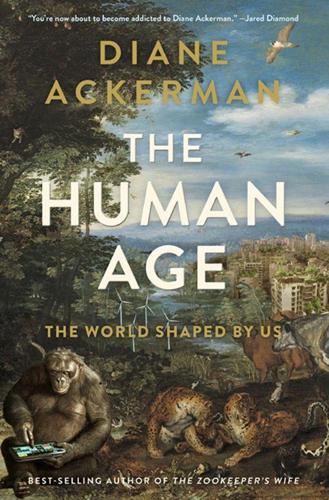
The Human Age: The World Shaped by Us
by
Diane Ackerman
Published 9 Sep 2014
The virtual reality that Star Trek promised us is starting to become commonplace. We can don a headset that stimulates all five senses simultaneously, and walk along a street in ancient Rome or Egypt, so immersed in the look, smell, and feel of the place that it seems real. I’ve yet to meet anyone sporting Google Glass, the voice-controlled miniature screen in a flexible frame that hovers piratically above one eye, projecting e-mail and maps onto your visual field. But, whether or not it catches on as techno-fashion, it’s already a triumph in operating rooms around the world. The first surgeon who wore it simply videotaped an operation to share with colleagues.
…
The first surgeon who wore it simply videotaped an operation to share with colleagues. Since then, surgeons have been actively consulting Glass during operations to view X-rays or medical data without turning away to look. The cyborg doctor has eyes in the back of his head, and four or more hands. At the University of Alabama at Birmingham (UAB), Dr. Brent Ponce, wearing a Google Glass, began a shoulder replacement surgery while the built-in camera showed the surgical field to Dr. Phani Dantuluri, a veteran surgeon watching on his computer monitor in Atlanta. As the doctors discussed the case, Dantuluri could reach into the surgical field that Ponce saw on his heads-up display: ghostly hands floated over the body, pinpointed an anatomical feature or demonstrated how to reposition an instrument, as he consulted in real time.
…
G., 231 bamboo, 132 Bangladesh, 51–53, 271 basil, 89, 90 Bat Bomb Project, 145 bats, 115 Bavaria, Germany, 107 Baylis, Françoise, 266 beans, 190 beavers, 135 bee balm, 125 beebots, 181 bees, 147, 166 beetles, 164, 180–81 Bell Museum of Natural History, 115 beluga whales, 135, 144 Benenson, Peter, 98 Benyus, Janine, 92 Berridge, Matt, 5–7, 25–28, 202 Bespoke Innovations, 236–37 Bhutan, 72 big agriculture, 154 Big Sur, 115 biofuels, 64 bioluminescent foliage, 83 biomimicry, 91–92 bionic fingers, 13 bionic suits, 13 bioprinting, 238, 245–46 bipolar disorder, 285 birds, 216 extinction of, 139 bird’s-foot trefoil, 166 black bears, 126 “Black Marble” photograph, 17 Blade Runner (film), 228, 253 Blanc, Patrick, 79–82, 84–85, 207 bleeding hearts, 125 Blizzard Nemo, 58 bloomers, 191 blue-jay feathers, 91 “Blue Marble” photograph, 17–18, 305 bobcats, 129 Boeing, 236 Bonassar, Lawrence, 243–52, 253 bonobos, 201–3 books, 171 Borges, Jorge Luis, 236 Borneo, 107, 132, 313 Boulogne, France, 83 Boulter, Nicky, 298–99 Bracken Cave, 145 brain, 150, 281 rewiring of, 191 scans of, 176–78 Bramel, Paula, 155 Brand, Stewart, 150 Branson, Richard, 54 Brazil, 46, 88, 123 breast milk, 301 breeding, 149–50 Breezy Point, N.Y., 45 Brittany, France, 62–63 Bronen, Robin, 48 Brooklyn Battery Tunnel, 45 Brooklyn Navy Yard, 82 Brown, Charles, 115–16 brown bears, 132 brown tree snake, 139 Budi (orangutan), 4–7, 25–26, 27, 28, 44, 122–23, 202, 269 iPad of, 4–7, 25–26, 27, 28, 71 building, heating of, 96–98 buildings, 90–94 bullfrogs, 132 burdock, 132 Burtynsky, Edward, 23–25 Bush, George W., 315 butterflies, 133, 166 Bygren, Lars Olov, 277–80 Byström, Joakim, 99 cadmium, 271 Café Trussardi, 82 California, 77, 117, 132 Callahan, Gerald N., 263 “Cambridge Declaration on Consciousness in Non-Human Animals, The,” 216 camels, 140 in war, 144, 145–46 Canada, 40, 43, 88, 124, 132, 266 Canada geese, 13, 135, 153, 194 Canadian rose, 39 Canadian War Museum, 82 cancer, 271, 316 cane beetles, 139 cane toads, 139 canning, 318 canola rapeseed, 153 Cape Town, South Africa, 78 carbon blade legs, 13 Carbon Capture Storage, 54 carbon dioxide, carbon dioxide levels, 34, 53 and acidification of oceans, 66 kelp’s ingestion of, 64 methods for pulling from air, 54 recent rise in, 36 Swedish lowering of, 99 urban gardens and, 74, 80 Carpenter, Rollo, 227 carpets, 87 cars, 87, 171, 191 cartilage, 244, 251 Case, Amber, 262 cats, 140, 146, 298 parasites of, 296–97 cattle, 194–95 Center for Nano Science and Technology, 183 Centers for Disease Control and Prevention, 298 Central Park, 78 Central Station, 96, 101 cerebral palsy, 253 Cerf, Vent, 202–4 Chamonix, France, 314 chatbots, 226–31 cheetahs, 132 chemputer, 237 Cher Ami (pigeon), 144–45 cherry tomatoes, 90 Chicago, Ill., 77, 78, 117 Chicago Botanic Gardens, 82 chicken coops, 88 childhood mortality, 13 Chile, 46, 99, 175 chimeras, 251, 262, 264–68 chimpanzees, 148, 216 China, 46, 88, 102, 124, 235 solar power in, 107 urban population of, 72 Chincoteague, 137–38 chipmunks, 126 chives, 90 chlorophyll, 53 chloroplasts, 291 Church, George, 151–52 cicadas, 41, 173–75 cilantro, 90 cingulate, 178 cities, 11, 13, 71–72 enviromental impact of, 72–73 growth of, 18–19, 72 limited species in, 113–14 nature vs., 112–17 population of, 72 as seen from space, 16–17, 18, 19 sky parks in, 77–78 City Hall, Chicago, 83 city parks, 83 clams, 57 Clarke, Ann, 157–67 Clarke, Bryan, 156–67 Cleverbot, 227–28 cliff swallows, 115–16 close work, 192 Clostridium difficile, 301–2 clouds, 12 coal, 21, 106 Coan, James, 178 cocaine, 298 cochlear implants, 253 cockatoos, 202 cod, 59–60 Cold War, 146 Collins, Francis, 289 colon disease, 302 Colorado, 40 compassion, 176 computers, 13, 87, 175, 187, 194, 197, 203, 211, 220, 222, 224, 226, 230, 256, 261, 270 condors, 132 consciousness, 200, 216, 217, 219, 228–29 cooking, 190 Copenhagen, 78 copper, 21 coral bells, 80–81 cordite, 153 corn, 71, 153 corncrakes, 133, 137 Cornell University, 209–25 corpus callosum, 177 cosmos, 125 cottontails, 129 cougars, 117 Council House 2 building, 94 courtly love, 190 cows, 71 coyotes, 117, 118 crabs, 138 “cradle to cradle,” 87 cranes, 124 Creative Machines Lab, 218, 223–24 creativity, 196 Crick, Francis, 274 crickets, 173–74 Cronin, Lee, 237 crops, 71 Crutzen, Paul, 9, 313 cucumbers, 89 cuneiform, 235 Curitiba, Brazil, 107 cyborg anthropology, 262 cyborg dragonflies, 146–47 cyborgs, 146–47, 251, 260, 262–63 daffodils, 125 Dakar, Senegal, 314 dandelions, 132 Dantuluri, Phani, 261 dark energy, 172 dark matter, 172 Darwin, Charles, 156, 268, 276 Dayak people, 107 day lilies, 125 deception, 219 Decker Yeadon, 92 deer, 133 Defense Advanced Research Projects Agency (DARPA), 146–47, 209, 225, 236, 256, 258–59 dengue fever, 302 Denmark, 101 depression, 196 Desertec, 106 diabetes, 301 diamondbacks, 118–19 dianthus, 125 Dietikon, Switzerland, 82 digoxin, 302 dinosaurs, 31, 154 Djairam, Dhiradj, 104, 105 DNA, 160, 263, 274–75, 278–79, 281, 282, 287 of extinct species, 151–52, 153–54, 160–63, 166–67 dodos, 163 dog roses, 132 dogs, 140, 144, 145–46, 147, 148, 149 dolphins, 147, 202, 204, 216 domestic animals, 11, 71, 140 Dominoni, Davide, 114 dopamine, 298 Dourada, Fazenda, 123 droughts, 41, 46 Duckworth, Tammy, 259, 260 dung beetles, 164 Dust Bowl, 41 Dutch Hunger Winter, 283 ears, 245–46 Earth: as seen from air, 20–21 as seen from space, 16–18, 19, 305 Earthmasters: The Dawn of the Age of Climate Engineering (Hamilton), 314 Eastgate Centre, 92, 93–94 echolocation, 147 École Polytechnique de Montréal, 181 eczema, 301 Edison, Thomas, 191, 306 Edmonton Airport, 83 education, 286 Edwards, Andres, 88 Eggerthella lenta, 302 Eggleson, Kathleen, 183–84 eggs, 160–61, 279 Eisenberger, Naomi, 177 electricity, 76, 78, 91, 97, 99, 100–103, 104, 184–87, 191, 213 electronic campfires, 193 elements, 34–35 elephants, 202, 217 underpass for, 124 in war, 144, 145–46 Ellis, Erle, 126 Eloxochitl, 112 emotions, 214, 222–23 empathy, 190, 219, 228 Energy Department, U.S., 64 England, 132 English ivy, 132 EnsnAired, 98 Environmental Protection Agency, U.S., 86–87 epigenetics, 279–86 Estonia, 77 eucalyptus, 132 Eureqa machine, 219–20, 221 European badgers, 124 Eve (robot), 221 Everglades, 129, 130, 133, 315 evolution, 208, 211, 219, 224, 251, 276–77, 279 microbes’ effects on, 292–93 extinction, 12 of birds, 139 of Miami blue butterfly, 131 orangutans and, 27–28 of Partula, 156–59 of plants, 315 and resurrection of species, 151–52, 153–54, 161–63, 208 of trilobites, 29, 30 extinctions, great, 60, 154, 305 eyeglasses, 171 factories, 71 false indigoes, 125 famine, 276, 277, 285, 286 Fantastic Voyage, 181 farming fish, 60 Faroe Islands, 78 farsightedness, 192 fecal transplants, 302 Ferrer, Miguel, 136 ferrets, 132 fertilizers, 36, 64 fiber optics, 97 field mice, 134 fighting, 190 finches, 156 Finger Lakes, 31, 131 fire ants, 132 fireflies, 181 fishermen, 56–60 fleecy electricity, 35 Flegr, Jaroslav, 297 floods, 41 Florida, 117, 131 Florida rosy wolfsnail, 157 flounder, 65 food, 7 Forbes, 235 Forbidden City, 235 Ford Motor Company, 87–88 forests, 54 fossil fuels, 10, 34, 51, 307 fossils, 9, 29–30, 31, 32, 33–34, 35, 36, 43, 57 Fountainhead, The (Rand), 59 foxes, 129, 133, 134 foxgloves, 125 France, 72, 124, 296, 298 Frankenstein (Shelley), 212–13 Franklin, Rosalind, 274 Fraser, Bill, 135 frogs, 80, 125, 131, 132 Frozen Ark, 155, 160, 163–64 frozen food, 317 fruit flies, 293–95 fungi, 289-90, 300 G8 Summit, 315 Gabriel, Peter, 201–3 Galileo Galilei, 220 Galveston, Tex., 50 Gambia, 131 gardening, hydroponic, 83 gardens, 38–39 urban, 74 vertical, 79–85 Gardens by the Bay, 78 gas, 106 Gaudi, Antoni, 236 geckos, 180 genetic mutations, 277 Genghis Khan, 272–73, 274 geoengineering, 53–54 geographic change, 11 Geological Society of London, 9 Geological Survey, U.S., 299 geothermal warmth, 95 Germany, 72, 78, 83, 101, 124, 132, 298 solar panels in, 106–7 Gershenfeld, Neil, 202–3 gestures, 26–27 giraffes, 276 global consciousness, 18 global warming, 11, 38–42, 154, 307–8 agriculture and, 56 in Bangladesh, 51–53 and development of seas, 64–65 evidence of, 108 extreme weather and, 36–43, 314 fishermen and, 56–57 gardens affected by, 38–39 habitats rearranged by, 133–40 human rights and, 48 glowworms, 144 glucocorticoids, 283 golden eagles, 132 Golden Lion Tamarin Conservation Program, 123 golden toads, 162 Golding, William, 162 Google, 192, 210 Google Glass, 260–61 gophers, 115 gorgonian, 38 grains, 71 Grand Canyon, 126 granite, 58–59 GraphExeter, 184–85, 317 grasshoppers, 173–74 Grassy Key, 131 great apes, 202 great auks, 151 Great Depression, 108 Greece, 124 Green Apple concept car, 103 Green Belt Corridor, 124 greenhouses, 90 Greenland, 42 green mussels, 131 Green over Grey, 83 growing season, 42 Guam, 139, 157 Guam rail, 139 Guatemala, 88 Gulag Archipelago (Solzhenitsyn), 218 Gurdon, John, 150, 160 Gut Erlasee Solar Park, 106–7 Guthrie, Barton, 261 habitat loss, 154 Haiyan, Typhoon, 46 Hamilton, Clive, 314 Hansen, James, 314 Hansmeyer, Michael, 236 Harvard University, 235 Hastings, Battle of, 190 heart, 150, 239, 248, 249, 250–51, 281 heat, 41 heaters, 87 heat recycling, 95–108 Helm, Barbara, 114 Henri, Pascal, 84 herbs, 89 Hernandez, Isaias, 264–65 herons, 193–94 Heuchera plants, 80–81 High Line, 77 Hitler, Adolf, 273 hockey, 40 Holocene, 9 Homer, 262 Honda, 236 Hong Sun Hye, 102 horse chestnut trees, 153 Horse Island, 58 horses, 137–38, 140, 145–46 hostas, 125 Hudson River, 54–55 hulls, 91 human genome, 13 Human Genome Project, 270, 274, 282, 285, 289, 300 Human Microbiome Project, 289 human rights, global warming and, 48 humans: as eusocial, 288 geographic expansion of, 10 geography changed by, 11 history of, 71 orangutan genes shared by, 3 population growth of, 10 technological changes to bodies of, 13 tools used by, 7, 9 humans, environmental effects of: climate change, see global warming and possibility of nuclear winter, 8–9 hummingbirds, 126 hunter-gatherers, 71 Huntington’s disease, 271 Hurricane Irene, 57 Hurricane Katrina, 46 hurricanes, 31, 41, 43, 55 Hurricane Sandy, see Sandy, Hurricane hybrid cars, 100 Hyde Park, 142 hydroelectronic power, 100, 107 hydroponic gardening, 83, 89, 90 Icarus, 224 icebergs, 195–96, 197 Iceland, 77 ice packs, 41–42 iCub, 218–19 iGlasses, 261 igloos, 86 iguanas, 131 Ike Dike, 50 Iliad (Homer), 262 India, 88, 107, 132, 175 Indian mongoose, 132 Indonesia, 132, 313 induced pluripotent stem cells (IPS), 150–51, 160–63 industrial farming, 60 Industrial Revolution, 34, 106, 185–86, 232, 235, 267 Inheritors, The (Golding), 162 insects, 166 insulin pumps, 253 intelligence of plants, 205–7 International Union for Conservation of Nature, 313 Internet, 199–200, 235 Inuit, 86 invasive species, 132, 154 Iran, 147 Iraq War, 258 Ireland, 132 Irene, Hurricane, 57 irises, 125 iron fertilization, 53 Island of Dr.

Custodians of the Internet: Platforms, Content Moderation, and the Hidden Decisions That Shape Social Media
by
Tarleton Gillespie
Published 25 Jun 2018
This “labor” has been of growing scholarly concern, seen by many as work that goes largely unnoticed and uncompensated, while the benefits and revenue accrue to the platform.36 As these guidelines reveal, not only do platforms need this labor, they must also manage it for quality control—to encourage engaging material and social opportunity and to deter low-quality or disruptive participation. Some rules are meant to ensure that user participation fits the functioning of the platform, that, for example, posts be timely or regularly updated (Google Glass, Reddit, Yelp); content be correctly categorized or tagged (Craigslist, Etsy, Hi5, Newsvine); and redundancies and dead links be avoided (Apple, Google Play, Hi5, Metacafe, Microsoft Windows Live, Reddit, Tagged). Other rules urge users to produce the best kind of content within that range of activity, content that is factually accurate or carefully sourced (Wikipedia, Pinterest, Reddit, Yelp); not plagiarized (Newsvine); grammatically correct or professionally designed (Apple, Ask); artistic, beautiful, or of high-quality design (Foursquare, DeviantArt, Yelp); thoughtful or well reasoned, fair and unbiased, open to diverse opinions (Ask, Hunch, Reddit); and relevant, on-topic, and useful to the users who will find it (Apple, Ask, Craigslist, Foursquare, Google Play, Hunch, Last.fm, Newsvine, Ning, Quora, Reddit, Tagged, Yelp).
…
And the controversy was in many ways specific to Apple’s desire to control its devices and the aesthetic experience of their use, and to a moment when Apple was seeking a new and much larger audience, which might be turned off if a first visit to the app store was an unseemly one. But editorial review on social media platforms, especially of sexual content, continues to be contentious. Google banned the first porn app designed for Google Glass when that device was still imagined to be an exciting consumer market possibility.42 Facebook has regularly been taken to task for deleting what users argue is artistic, educational, or politically relevant nudity, or isn’t even nudity at all: children’s dolls, Burning Man sculptures, hand-drawn cartoons, even an exposed elbow.
…
See freedom of speech flagging, (i), (ii), (iii); limited vocabulary of, (i), (ii); can be gamed, (i), (ii); and the drag queen controversy, (i); as strategically valuable for platforms, (i); as labor, (i); who actually does it, (i); as data that could be offered back to users, (i) Flickr (Yahoo): community guidelines, (i), (ii), (iii); approach to moderation (i), (ii), (iii); and the NIPSA guideline, (i); response to international obligations, (i) Flyverbom, Mikkel, (i)n4 Foursquare (social networking platform), (i), (ii), (iii) Free the Nipple, (i) “freedom from porn” (i), (ii) freedom of speech: and the regulation of traditional media, (i), (ii), (iii); and global values, (i), (ii), (iii); as a commitment of platforms, (i), (ii), (iii), (iv), (v), (vi), (vii), (viii); and the early web, (i); and cyberporn, (i); and private intermediaries, (i), (ii), (iii), (iv); and defamation, (i); and digital copyright, (i) Friendster (social networking platform), (i) Gadde, Vitaya (Twitter), (i) game worlds, moderation of, (i), (ii) Gamergate, (i), (ii), (iii) gatekeepers, (i), (ii), (iii) Gawker, (i) #gay, blocked by Tumblr, (i), (ii) Geiger, Stuart, (i) gender, (i), (ii), (iii), (iv) Google: and political content, (i), (ii); community guidelines, (i), (ii), (iii), (iv), (v)n24; approach to moderation, (i), (ii), (iii); and algorithmic bias, (i); and automatic detection, (i); moderation of the Autocomplete function, (i), (ii)n31; and filtering, (i); and fake news / Russian ad controversies, (i), (ii)n40 Google Glass, (i), (ii) Google Image Search, (i), (ii) Google Maps, (i) Google Play (app store), (i), (ii) Google Translate, (i) Google Trends, (i) Google+, (i), (ii), (iii) graphic content, rules regarding, (i) Gray, Mary, (i), (ii)n105 Gregoire, Carolyn, (i) Grindr (dating app), (i), (ii) The Guardian, (i), (ii), (iii) Hansen, Espen Egil, (i) harassment: and Twitter, (i), (ii), (iii), (iv), (v)n2, (vi)n5; before social media, (i); rules regarding, (i), (ii); and flagging, (i), (ii); automated detection of, (i), (ii) Harvey, Del (Twitter), (i) hashing, (i) hate speech: and Twitter, (i); before social media, (i); legal obligations regarding, (i); rules regarding, (i); Apple’s “enemies” rule, (i); automated detection of, (i), (ii); and Google, (i) Heartmob, (i) Hebron, Micol, (i) Heffernan, Virginia, (i) Herrman, John, (i) Hey Facebook, Breastfeeding Is Not Obscene!

The Master Algorithm: How the Quest for the Ultimate Learning Machine Will Remake Our World
by
Pedro Domingos
Published 21 Sep 2015
Just as you enter, the chant dissolves into an “Aaaah!” of satisfaction, and a murmur of “The posterior! The posterior!” You peek through the crowd. A massive stone tablet towers above the altar with a formula engraved on it in ten-foot letters: P(A|B) = P(A) P(B|A) / P(B) As you stare uncomprehendingly at it, your Google Glass helpfully flashes: “Bayes’ theorem.” Now the crowd starts to chant “More data! More data!” A stream of sacrificial victims is being inexorably pushed toward the altar. Suddenly, you realize that you’re in the middle of it—too late. As the crank looms over you, you scream, “No! I don’t want to be a data point!
…
The digital mirror Take a moment to consider all the data about you that’s recorded on all the world’s computers: your e-mails, Office docs, texts, tweets, and Facebook and LinkedIn accounts; your web searches, clicks, downloads, and purchases; your credit, tax, phone, and health records; your Fitbit statistics; your driving as recorded by your car’s microprocessors; your wanderings as recorded by your cell phone; all the pictures of you ever taken; brief cameos on security cameras; your Google Glass snippets—and so on and so forth. If a future biographer had access to nothing but this “data exhaust” of yours, what picture of you would he form? Probably a quite accurate and detailed one in many ways, but also one where some essential things would be missing. Why did you, one beautiful day, decide to change careers?
…
Sometimes you want to give information to advertisers for free because it’s in your interests, sometimes you don’t want to give it at all, and what to share when is a problem that only a good model of you can solve. The kind of company I’m envisaging would do several things in return for a subscription fee. It would anonymize your online interactions, routing them through its servers and aggregating them with its other users’. It would store all the data from all your life in one place—down to your 24/7 Google Glass video stream, if you ever get one. It would learn a complete model of you and your world and continually update it. And it would use the model on your behalf, always doing exactly what you would, to the best of the model’s ability. The company’s basic commitment to you is that your data and your model will never be used against your interests.

Hit Refresh: The Quest to Rediscover Microsoft's Soul and Imagine a Better Future for Everyone
by
Satya Nadella
,
Greg Shaw
and
Jill Tracie Nichols
Published 25 Sep 2017
Will there one day be mixed reality natives—young people who expect all of their computer experiences to be immersive blends of the real and the virtual—just as today we recognize digital natives, those for whom the Internet has always been there? Companies are taking different approaches with head-mounted computers. Virtual reality, as provided by our Windows 10 MR devices or Facebook’s Oculus Rift, largely blocks out the real world, immersing the user in a completely digital world. Google Glass, for example, projects information onto your eyeglasses. Snapchat Spectacles let you augment what you see with relevant content and filters. HoloLens provides access to mixed reality in which the users can navigate both their current location—interact with people in the same room—and a remote environment while also manipulating holograms and other digital objects.
…
See also United Kingdom British Raj, 16, 186–87 broadband infrastructure, 225 Buddha, Gautama, 9 Burgum, Doug, 47–48 cable TV, 30 Cairo, 214, 218 cameras, 150 Canada, 230 cancer, 142, 159, 214 Candidate, The (film), 75 capabilities, 122–23, 141 capitalism, 237–38 late-stage, 221 Capossela, Chris, 3, 71, 81–82 Carnegie Mellon, 3 Carney, Susan L., 177 Carroll, Pete, 4 Case, Anne, 236 Cavium Networks, 20 CD-ROM, 28 CEO as curator of culture, 100, 241 “disease,” 92 panoramic view of, 118 cerebral palsy, 8–10 Chang, Emily, 129 charter city, 229 Cheng, Lili, 197 chess, 198–99 Chik, Joy, 58 child exploitation, 190 Chile, 223, 230 China, 86, 195, 220, 222, 229, 232, 236 chip design, 25 CIA, 169 Cisco, 174 civil liberties, 172–73 civil rights, 24 civil society, 179 Civil War, 188 clarity, 119 Clayton, Steve, 155 client/server era, 45 climate change, 142, 214 Clinton, Hillary, 230 cloud, 13, 41–47, 49, 51–62, 68, 70, 73, 81, 88, 110, 125, 129, 131, 137, 140, 150, 164, 166, 172, 180–81, 186, 189–92, 216, 219, 223–25, 228 cloud-first mission and, 57–58, 70, 76, 79, 83 public, 42–43, 57 Cloud for Global Good, 240–41 Codapalooza, 104 cognition, 89, 150, 152–53 Cohen, Leonard, 10 collaboration, 88, 102–3, 106–8, 126, 135, 163–64, 166, 200 collaborative robots (co-bots), 204 collective IQ, 142, 143 Colombia, 78 Columbia University, 165 Comin, Diego, 216–17, 226 commitment, shared, 77, 119 Common (hip hop artist), 71 Common Objects in Context challenge, 151 communication, 76–77 Compaq, 29 comparative advantage, 222, 228 competition, internal, 52 competitive zeal, 38–39, 70–71, 102 competitors, 39 partnerships and, 78, 125–38 complexity, 25, 224 computers early, 21–22, 24–26 future platforms, 110–11 programs by, 153–54 computing power, massive, 150–51 Conard, Edward, 220 concepts, 122–23, 141 consistency, 77–78, 182 Constitution Today, The (Amar), 186–87 constraints, 119 construction companies, 153 consumers, 49–50, 222 context, shared, 56–57 Continental Congress, 185 Continuum, 73 Convent of Jesus and Mary (India), 19 Cook, Tim, 177 cook stoves, 43 coolness, 75–76 core business, 142 Cortana, 125, 152, 156–58, 195, 201 Couchbase company, 58 counterintuitive strategy, 56–57 Coupland, Douglas, 74 Courtois, Jean-Philippe, 82 courts, 184–85 Covington and Burling lawyers, 3 Cranium games, 7 creativity, 58, 101, 119, 201, 207, 242 credit rating, 43, 204–5 Creed (film), 44–45 cricket, 18–22, 31, 35–40, 115 Cross-country Historical Adoption of Technology (CHAT), 217 culture bias and, 205 “live site first,” 61 three Cs and, 122–23, 141 transforming, 2, 11, 16, 40, 76–78, 81–82, 84, 90–92, 98–103, 105, 108–10, 113–18, 120, 122–23, 241–42 Culture (Eagleton), 91 Curiosity (Mars rover), 144 customer needs, 42, 59, 73, 80, 83, 88, 99, 101–2, 108, 126, 138 customization, 151 cybersecurity, 171, 190 cyberworld, rules for, 184 data, 60, 151 data analytics, 50 databases, 26 Data General company, 68 data management, 54 data platform, 59 data security, 175–76, 188–89 Deaton, Angus, 236 Deep Blue, 198–99 deep neural networks, 153 Delbene, Kurt, 3, 81–82 Delhi, India, 19, 31, 37 Dell, 63, 87, 127, 129–30 Dell, Michael, 129 democracy, 180 democratization, 4, 13, 69, 127, 148, 151–52 Deng Xiaoping, 229 Depardieu, Gerard, 33 design, 50, 69, 141, 239 desktop software, 27 Detroit, 15, 225, 233 developed economies, 99–100 share of world income, 236 developing economies, 99–100, 217, 225 device management solutions, 58 digital assistants, 142, 156–58, 195–98, 201 digital cable, 28 digital evidence, 191–92 Digital Geneva Convention, 171–72 digital ink, 142 digital literacy, 226–27 digital publishing laws, 185 digital transformation, 70, 126–27, 132, 235 dignity, 205 disabilities, 103, 200 disaster relief, 44 Disney, 150 disruption, 13 distributed systems, 49 diversity, 101–2, 108, 111–17, 205–6, 238, 241 Donne, John, 57 drones, 209, 226 Drucker, Peter, 90 dual users, 79 Dubai, 214, 228 Duke University, 3 Dupzyk, Kevin, 147 D-Wave, 160 Dweck, Carol, 92 dynamic learning, 100 Dynamics, 121 Dynamics 365, 152 dyslexia, 44, 103–4 Eagleton, Terry, 91 earthquakes, 44 EA Sports, 127 economic growth, 211–34 economic inequality, 12, 207–8, 214, 219–21, 225, 227, 236–41 Edge browser, 104 education, 42–44, 78, 97, 104, 106–7, 142, 145, 206–7, 224, 226–28, 234, 236–38 Egypt, 218–19, 223, 225 E-health companies, 222–23 8080 microprocessor, 21 elasticity, 49 electrical engineering (EE), 21–22 elevator and escalator business, 60 Elop, Stephen, 64, 72 email, 27, 169–73, 176 EMC, 129 emotion, 89, 197, 201 emotional intelligence (EQ), 158, 198 empathy, 6–12, 16, 40, 42–43, 93, 101, 133–34, 149, 157, 182, 197, 201, 204, 206, 226, 239, 241 employee resource groups (ERGs), 116–17 employees, 66–68, 75, 138 diversity and, 101, 111–17 empowerment and, 79–80, 126 global summit of, 86–87 hackathon, 10–11 talent development and, 117–18 empowerment, 87–88, 98–99, 106, 108–10, 126 encryption, 161–62, 175, 192–93 energy, generating across company, 119 energy costs, 237 Engelbart, Doug, 142 Engelbart’s Law, 142–43 engineers, 108–9 Enlightiks, 222–23 Enterprise Business, 81 entertainment industry, 126 ethics, 195-210, 239 Europe, 193 Excel, 121 experimental physicists, 162–64 eye-gaze tracking, 10 Facebook, 15, 44, 51, 125, 144, 174, 200, 222 failures, overcoming, 92, 111 Fairfax Financial Holdings, 20 fairness, 236 Federal Bureau of Investigation (FBI), 170, 177–78, 189 Federal Communications Commission (FCC), 28 fear of unknown, 110–11 feedback loop, 53 fertilizer, 164 Feynman, Richard, 160 fiefdoms, 52 field-programmable gate arrays (FPGAs), 161 Fields Medal, 162 firefighters, 43, 56 First Amendment, 185, 190 Flash, 136 focus, 135–36, 138 Foley, Mary Jo, 52 Ford Motor Company, 64 foreign direct investment, 219, 225, 229 Foreign Intelligence Surveillance Act (FISA), 173 Fourth Amendment, 185–88, 190, 193 France, 223, 236 Franco, James, 169 Franklin, Benjamin, 186 Freedman, Michael, 162, 166 free speech, 170–72, 175, 179, 185, 190, 238 Fukushima nuclear plant, 44 G20 nations, 219 Galaxy Explorer, 148 game theory, 123–24 Gandhi, Mohandas Mahatma, 16 Gartner Inc., 145 Gates, Bill, 4, 12, 21, 28, 64, 46, 67–69, 73–75, 87, 91, 127, 146, 183, 203 Gavasker, Sunil, 36 GE, 3, 126–27, 237 Gelernter, David, 143, 183 Geneva Convention, Fourth (1949), 171 Georgia Pacific, 29 Germany, 220, 223, 227–36 Gervais, Michael, 4–5 Gini, Corrado, 219 Gini coefficient, 219–21 GLEAM, 117 Gleason, Steve, 10–11 global competitiveness, 78–79, 100–102, 215 global information, policy and, 191 globalization, 222, 227, 235–37 global maxima, 221–22 goals, 90, 136 Goethe, J.W. von, 155 Go (game), 199 Goldman Sachs, 3 Google, 26, 45, 70–72, 76, 127, 160, 173–74, 200 partnership with, 125, 130–32 Google DeepMind, 199 Google Glass, 145 Gordon, Robert, 234 Gosling, James, 26 government, 138, 160 cybersecurity and, 171–79 economic growth and, 12, 223–24, 226–28 policy and, 189–92, 223–28 surveillance and, 173–76, 181 Grace Hopper, 111–14 graph coloring, 25 graphical user interfaces (GUI), 26–27 graphics-processing unit (GPU), 161 Great Convergence, the (Baldwin), 236 Great Recession (2008), 46, 212 Greece, 43 Green Card (film), 33 Guardians of Peace, 169 Gutenberg Bible, 152 Guthrie, Scott, 3, 58, 60, 82, 171 H1B visa, 32–33 habeas corpus, 188 Haber, Fritz, 165 Haber process, 165 hackathon, 103–5 hackers, 169–70, 177, 189, 193 Hacknado, 104 Halo, 156 Hamaker, Jon, 157 haptics, 148 Harvard Business Review, 118 Harvard College, 3 Harvey Mudd College, 112 Hawking, Stephen, 13 Hazelwood, Charles, 180 head-mounted computers, 144–45 healthcare, 41–42, 44, 142, 155–56, 159, 164, 198, 218, 223, 225, 237 Healthcare.gov website, 3, 81, 238 Heckerman, David, 158 Hewlett Packard, 63, 87, 127, 129 hierarchy, 101 Himalayas, 19 Hindus, 19 HIV/AIDS, 159, 164 Hobijn, Bart, 217 Hoffman, Reid, 232, 233 Hogan, Kathleen, 3, 80–82, 84 Holder, Eric, 173–74 Hollywood, 159 HoloLens, 69, 89, 125, 144–49, 236 home improvement, 149 Hong Kong, 229 Hood, Amy (CFO), 3, 5, 82, 90 Horvitz, Eric, 154, 208 hospitals, 42, 78, 145, 153, 223 Hosseini, Professor, 23 Huang, Xuedong, 151 human capital, 223, 226 humanistic approach, 204 human language recognition, 150–51, 154–55 human performance, augmented by technology, 142–43, 201 human rights, 186 Hussain, Mumtaz, 36, 37 hybrid computing, 89 Hyderabad, 19, 36–37, 92 Hyderabad Public School (HPS), 19–20, 22, 37–38, 136 hyper-scale, cloud-first services, 50 hypertext, 142 IBM, 1, 160, 174, 198 IBM Watson, 199–200 ideas, 16, 42 Illustrator, 136 image processing, 24 images, moving, 109 Imagine Cup competition, 149 Immelt, Jeff, 237 Immigration and Naturalization Act (1965), 24, 32–33 import taxes, 216 inclusiveness, 101–2, 108, 111, 113–17, 202, 206, 238 independent software vendor (ISV), 26 India, 6, 12, 17–22, 35–37, 170, 186–87, 222–23, 236 immigration from, 22–26, 32–33, 114–15 independence and, 16–17, 24 Indian Administrative Service (IAS), 16–17, 31 Indian Constitution, 187 Indian Institutes of Technology (IIT), 21, 24 Indian Premier League, 36 IndiaStack, 222–23 indigenous peoples, 78 Indonesia, 223, 225 industrial policy, 222 Industrial Revolution, 215 Fourth or future, 12, 239 information platforms, 206 information technology, 191 Infosys, 222 infrastructure, 88–89, 152–53, 213 innovation, 1–2, 40, 56, 58, 68, 76, 102, 111, 120, 123, 142, 212, 214, 220, 224, 234 innovator’s dilemma, 141–42 insurance industry, 60 Intel, 21, 45, 160, 161 intellectual property, 230 intelligence, 13, 88–89, 126, 150, 154–55, 160, 169, 173, 239 intelligence communities, 173 intensity of use, 217, 219, 221, 224–26 International Congress of the International Mathematical Union, 162 Internet, 28, 30, 48, 79, 97–98, 222 access and, 225–26, 240 security and privacy and, 172–73 Internet Explorer, 127 Internet of Things (IoT), 79, 134, 142, 228 Internet Tidal Wave, 203 Intersé, 3 Interview, The (film), 169–71 intimidation, 38 investment strategy, 90, 142 iOS devices, 59, 72, 123, 132 iPad, 70, 141 iPad Pro, 123–25 iPhone, 70, 72, 85, 121–22, 125, 177–79 Irish data center, 176, 184 Islamic State (ISIS), 177 Istanbul, 214 Jaisimha, M.L., 18, 36–37 Japan, 44, 223, 230 Japanese-American internment, 188 JAVA, 26 Jeopardy (TV show), 199 Jha, Rajesh, 82 jobs, 214, 231, 239–40.

The Innovation Illusion: How So Little Is Created by So Many Working So Hard
by
Fredrik Erixon
and
Bjorn Weigel
Published 3 Oct 2016
Entrepreneurs control their own performance, but they cannot control unpredictable markets; if they could, business failures would be a matter of choice. Innovation based only on its own technological or corporate merits does not have the power to break into markets. Markets are far too complex for that to happen. Take Google Glass as an example. The air over the San Francisco Bay Area vibrated with anticipation when news circulated that this product was due to be released. The optical head-mounted display was like the Ericsson Cordless Web Screen that had been invented 15 years earlier – “the next big thing.” And if you have tried a pair, you will know they are pretty cool.
…
In the aftermath of this public mishap, Astro Teller – the head of what was then called the Google X research lab – explained that the company had failed by “not making clear to everyone else that what was out was really just a prototype of the smart glassware, and too much bad publicity was really what killed Google Glass.”13 Failure happens – every day – and premature scaling is a common recipe for disaster. But this was Google, a company with near limitless resources for planning and preparation. It is media savvy and its market reach is second to none, leaving many to question how the company could have allowed such a publicized failure.
…
Johnston) (i) globalist worldview (i), (ii) globalization attitudes to globalization survey (IMD Business School) (i) and bureaucracy (i), (ii), (iii), (iv) and business investment (i) and capitalism, decline of (i), (ii) and competition (i) and creative destruction (i) and diffusion (i), (ii) and entrepreneurship (i), (ii) and financial institutions (i) horizontal (i), (ii), (iii), (iv), (v) and innovation (i), (ii), (iii), (iv) and managerialism (i), (ii), (iii), (iv) and mergers and acquisitions (i) and planning (i) and productivity (i), (ii), (iii) and regulation (i) and specialization (i), (ii), (iii), (iv), (v), (vi), (vii) and Swedish economy (i) vertical (i), (ii), (iii), (iv), (v), (vi), (vii) see also corporate globalism; globalization (overview); multinational (global) companies globalization (overview) 1st face/phase (1945–1980s) (i), (ii), (iii) 2nd face/phase (1980s–) (i), (ii), (iii), (iv), (v), (vi), (vii) changing nature of (i) characteristics of multinationals (i), (ii) globalist worldview (i), (ii) “globalize or die” (i) impact on France (i) impact on Germany (i), (ii), (iii), (iv) impact on US and UK (i), (ii), (iii) markets and firm boundaries (i) scale to scope (i) specialization and sunk costs (i), (ii) unbundling of production: first unbundling (i); second unbundling (i), (ii), (iii), (iv) see also corporate globalism; globalization; multinational (global) companies GM (genetically modified) potato, and EU regulation (i) GMOs (genetically modified organisms), and EU regulation (i), (ii), (iii) “Goldilocks and the Three Bears” (story) (i), (ii) Goldilocks principle (i), (ii) Goldman Sachs (i), (ii) Golec, Joseph (i)n28 Google dual share structures (i) and European regulation (i) and globalization (i) Google Glass (i), (ii) and Motorola (i) Project Loon (i), (ii) Gordon, Robert (i), (ii) Gore-Coty, Pierre-Dimitri (i) Gou, Terry (i) governments see political world; politics Graetz, George (i) Grasso, Richard (i) gray capitalism capitalist ownership: case of Harley-Davidson Motor Company (HD) (i); decline/obituary of capitalist ownership (i); dispersed ownership (i); gray ownership (i), (ii), (iii), (iv), (v), (vi); severing gray capital–corporate ownership link (i) “complex by design” and principal–agent problem (i) crowding out of innovations (i) financial capitalism: financialization of real economy (i); intermediaries and asset managers (i), (ii), (iii), (iv), (v), (vi) pensions and retirement savings (i), (ii), (iii), (iv), (v), (vi), (vii) rentier capitalism (i), (ii), (iii), (iv) resource allocation according to rentier formula (i) rich people vs. capitalists (i), (ii) sovereign wealth funds (i), (ii) Graylin, Will Wang (i) Great Recession and aspirations (i) and asset management industry (i) and cash hoarding (corporate savings) (i) and continuing economic decline (i) and firm entry-and-exit rates (i) and global trade (i) and globalist worldview (i) and high-growth firms (i) and investment funds (i) and New Machine Age hype (i) and policy uncertainty (i) and rich people vs. capitalists (i) and stockholding periods (i) and unemployment (i) and US productivity (i) see also financial crisis (2007) Greece, left-wing populism (i) green building codes (US) (i) green/renewable energy and regulation in Europe (i), (ii) and sunk costs (i) Greenspan, Alan (i), (ii), (iii) Greenspan Puts (i) Grey (alias of Ursley Kempe) (i), (ii) gross domestic product see GDP (gross domestic product) Group of Seven (G7) countries, labor productivity (i), (ii) growth see economic growth; GDP (gross domestic product) guilds (i), (ii) see also occupational licenses Gulf states, and sovereign wealth funds (i) Gulfo, Joseph (i) Gyllenhammar, Pehr G.

Build: An Unorthodox Guide to Making Things Worth Making
by
Tony Fadell
Published 2 May 2022
And ultimately, even though it fell short of the vision, we built something really incredible. For us geeks. For everyone else, it was kind of neat. Maybe. If they even understood what it was. A luxury toy for rich people or nerds or very rich nerds. A plaything. If you’re not solving a real problem, you can’t start a revolution. A glaring example is Google Glass or Magic Leap—all the money and PR in the world can’t change the fact that augmented reality (AR) glasses are a technology in search of a problem to solve. There’s just no reason for the general public to buy them. Not yet. Nobody can quite imagine walking into a party or the office with these weird ugly glasses on their face, creepily filming everyone around them.
…
Conversely, you start with a disruptive vision but set it aside because the technology is too difficult or too costly or doesn’t work well enough. So you execute beautifully on everything else but the one thing that would have differentiated your product withers away. Or you change too many things too fast and regular people can’t recognize or understand what you’ve made. That’s one of the (many) issues that befell Google Glass. The look, the technology—it was all so new that people had no idea what to do with it. There was no intuitive understanding of what the thing was for. It’s as if Tesla decided out the gate to build electric cars with five wheels and two steering wheels. You can change the motor, change the dash—but it still has to look like a car.
…
See also General Magic; iPhone; iPod; Nest Labs; Nest Learning Thermostat; Nest Protect; Philips Nino; Philips Strategy and Ventures Group; Philips Velo at Apple, xviii, 19, 55, 69, 78, 80, 81, 82, 84–86, 91, 93, 96, 117, 136, 163, 237, 303, 320, 374 Apple computer of, xv–xvi biography of, xiv–xix, 294 career of, xiv–xix failures of, xix, 3–4, 181 family of, 163, 175, 176 at Future Shape, xix as mentor, xi–xiv, xix–xx mentors of, xi, xii, 164 passion of, 68–69 at Philips, xvii, 18, 36–37, 45–46, 58, 61, 77, 81, 88, 89, 96, 125, 129–30, 209, 374 programming experience in school, xiv–xv at Quality Computers, xv startups of, xiv, xv–xix, 2, 6, 7, 46, 164, 181, 199 failure analysis of, 135 learning from, 5–6, 7, 9, 10, 13, 19, 119, 223, 253, 264, 329 startups and, 199 finance acquisitions and, 315, 316, 318, 353 product management and, 281, 285, 287 role of, 48 startups and, 182, 210 financial products, 202 Flint, Peter, 107n Free, 199 Frog, 283 Fuse Systems, xviii, 88–92, 89, 208 Future Shape, xix, 365, 374 GAP, 341 Gelsinger, Pat, 321–22 General Magic Bill Atkinson and, 2–3, 12, 27, 165 culture of, 46 Tony Fadell as engineer at, xvi–xvii, 2–3, 6, 7, 10–11, 13, 21, 24, 27, 35, 96, 129–30, 208, 327, 374 failure of, 3, 13, 18, 24, 37, 58, 90, 373 Andy Hertzfeld and, 2–3, 12, 27 launch of, 11–12 Magic CAP, 15 Pierre Omidyar and, 188 Philips as partner and investor in, 36, 37 Pocket Crystal, 1, 2, 12 private network system of, 12 problems with products of, 15 smartphone of, 130 Sony Magic Link, 12–13, 12, 15, 24, 31, 35–36, 58, 139–40 structure of, 10–11, 13 target customer of, 35–36, 58, 130 technology focus of, 15 TeleScript, 15 time constraints for, 139–40 General Magic Movie, 2n Glengarry Glen Ross (film), 296 goals of meetings, 255 moving forward with, 7, 19, 33 product development and, 128 team’s goals powering company goals, 237 Google Ads, 314, 346 all-hands meetings of, 255, 360 Alphabet created by, xix, 314 Android acquisition, 328 culture of, 313, 346, 349, 351–52, 359 disruption and, 123 individual contributors recognized by, 47 job applications with, 23 Nest acquisition of, xix, 304, 310–17, 338, 345–52, 354–55, 359–61, 371 Nest reabsorbed by, 319–20 Nest sold by, 317–19, 367 perks at, 358–59, 362 product managers and, 284 profitability of, 160 project rhythms of, 146 restructuring of, 314 review cycles of, 51 Search, 284, 314, 346 target customer of, 205 Google Facilities, 315 Google Fiber, 314 Google Glass, 16, 119 Google Nest, 55, 80, 278, 313, 314–17, 354–55 Google Store, 312, 317 Google Ventures (GV), 314, 349 Google X, 314 Grove, Andy, 322 Guenette, Isabel, 230 Gurley, Bill, 21 habituation, 262, 262n heroes, connections with, 20–25, 27 Hertzfeld, Andy, 2–3, 12, 20, 27 Hodge, Andy, 92 Hololens, 124 Home Depot, 160, 202 home stereo systems, 87 home theaters, 88, 90 honesty, in management, 44, 51 Honeywell, 117, 124–25, 164, 303–4 human resources (HR) breakpoints and, 255–56 dealing with assholes and, 72–73, 74 hiring and, 29, 215–17, 229–41 interviews and, 21, 258 legal team and, 302, 305 meetings of, 254 quitting and, 76, 81, 85, 86 startups and, 89, 182, 184, 210 team meetings and, 240, 241 team size and, 247 HVAC technicians, 124–25, 166 IBM, 121, 148 ideas chasing process, 171, 172, 173–77, 179, 373 elements of, 171 as painkillers, not vitamins, 172 problems solved by, 171, 172 research on, 171–72, 173, 174, 178 spotting great ideas, 124, 171–79, 180, 182, 327, 328 storytelling and, 172, 174, 177–78 vision for, 178 IDEO, 261, 283 IKEA, 106, 288 imposter syndrome, 37, 50 individual contributors (ICs) crisis and, 220 leadership of, 47 management contrasted with, 43 as managers, 238, 248, 251–53 perspective of, 26–27, 28, 29, 30, 31–33, 48, 58, 331 reverting to, 366 as stars, 47 trajectory in organizations, 47, 251–53 information gathering, 21 Instagram, 156, 205 Intel, 148, 189, 322 intellectual property (IP), 305, 306 internal customers, 30, 32, 233, 325 Inventec, 92 investors and investment angel investors, 173, 189–90, 192, 198–99, 200 board members and, 335, 337, 340–41 cyclical nature of, 90, 190–91 in Nest Labs, 164, 165–66, 177, 178 relationships and, 189–90, 192, 193–98, 199, 200 in Silicon Valley, 90, 192 startups and, 169, 181, 184, 189–200 storytelling and, 111, 178 iPad, 163 iPhone development of, xiv, xviii, 1, 15, 93, 122, 128, 132–33, 140–42, 142, 156, 163, 169, 175, 176, 283, 327–29, 343 glass front face of, 110, 329 launch of, 108–10, 117, 203 profitability of, 156 size of, 130, 131, 132 team of, 234 time constraints on, 140–41 touchscreen keyboard for, 110, 128–33 value of, 156, 176 iPod customer personas for, 287 defining feature of, 120, 140 design of, 263, 267–68 development of, xiv, xviii, 19, 24, 54, 55, 91–92, 91, 119–21, 133–35, 163, 165, 167, 169, 187, 202, 208–9, 268–69, 286, 347 full battery of, 269 iPod-phone model, 141 launch of, 84, 92–93, 92, 96, 108, 117, 133–34, 213 profitability of, 155 tagline “1000 songs in your pocket,” 87, 92, 112–13, 286–87 team of, 234 iPod Nano, 286–87 iPod Touch, 163 Isaacson, Walter, Steve Jobs, 84 iTunes, 119–20, 303 Ive, Jony, 267 Jobs, Steve on analogies, 112–13 on battery life, 121, 287 board of directors meetings and, 334, 339 design thinking and, 267 iPhone development, 15, 128–29, 130, 132, 133, 156 iPhone launch, 108–9 iPod development, 92, 120, 133–35, 187, 208–9, 268–69, 347 on lawsuits, 303 leadership style of, xii, 79, 82, 85, 203, 348, 358 level of detail expected by, 49 on MacWorld conferences, 147–48 on management consulting, 17 on marketing, 271, 277 Not Invented Here Syndrome, 327 as parent CEO, 329 passion of, 69, 70 on processors, 148 respect for, 329–30 Andy Rubin and, 327–28 Wendell Sander and, 24 on “staying a beginner,” 268 storytelling of, 177, 286 vacations of, 207–8 walking of, 214 Joswiak, Greg, 286–87 JPMorgan Chase, 321 Kahneman, Daniel, 171 Kare, Susan, 12 Kelley, David, 261, 283 Kickstarter, 158 Kindle, 118 Kleiner Perkins, 164 Kodak, 122–23, 327 Komisar, Randy, 164, 339–40 lawsuits, 117–18, 300, 302, 303–4 leadership characteristics of, 14, 326–27 crisis and, 221–22 decisions and, 61, 62–63 of individual contributors, 47 of Steve Jobs, xii, 79, 82, 85, 203, 348, 358 mentors and, 257 micromanagement contrasted with, 45 percentage of psychopathic traits in, 65 perspective of, 32 sitting on your idea, 63 for startups, 183 style of, 53 of teams, 37–41, 45, 46, 247 trust of, 62, 64, 330 vision for, 18 legal team contracts and, 300, 302, 305 lawsuits and, 117–18, 300, 302, 303–4 marketing and, 276, 306 outside law firms and, 300–302, 305 product management and, 287, 288, 306 role of, 24, 302–8 sales and, 295 startups and, 227 Le Guen, Sophie, 289 Letterman, David, 311 life, as process of elimination, 238, 253 limited partners (LPs), 189, 192, 198 Linux servers, 201 Lovinsky, Dina, xx Lowe’s, 160 Lutton, Chip, 117, 303, 306, 308 Macintosh, 3, 91, 108, 121, 133–34, 148, 208 McKinsey, 17 MacWorld conferences, 147 MagicBus, 24 Magic CAP, 15 Magic Leap, 16 management.

Reinventing Capitalism in the Age of Big Data
by
Viktor Mayer-Schönberger
and
Thomas Ramge
Published 27 Feb 2018
Many advanced digital market platforms already offer an impressive flood of multidimensional information, while physical markets, including brick-and-mortar stores, are still pondering ways to adapt the technology for their needs. Retailers, for example, have their hopes pinned on what’s called augmented reality, which enriches what we can see on the sales floor by providing additional information about the available goods. It’s like a much-improved version of Google Glass and will highlight perhaps the three products in a shop that best fit your preferences, and you will learn about them by looking around. For our purposes, it’s not as important to predict exactly which technical solution will offer us the richest information and in what form as it is to realize that the solution won’t depend on the established infrastructure of money and price that banks and other financial institutions have built.
…
See Great Recession/financial crisis financial intermediaries, 12, 146–156 choice expansion in, 215–216 payment solutions and, 146–147 regulations affecting, 139–140 traditional role of, 138–139 See also banks Finkel, Eli, 83, 84 Finland, 147, 191 fintechs, 11 banks investing in, 149–156 niche markets targeted by, 147, 152 worldwide investments in, 149 firms, 87–107, 109–131 Amazon as, 88–89, 106 automation in, 109, 111–112, 113–120, 128, 130–131 centralization in (see centralization) cognitive constraints and, 102–104 communicative coordination and, 26, 28–33, 90, 102 comparison of markets and, 28, 111 competition between markets and, 30, 107 decline in influence of, 12–13, 33 delegation in, 97–101, 106, 117 efficiency as focus of, 112–113 estimated number of, 28 human-centric, 214–215 internal talent management in, 126–129 intuition and heuristics in, 104–106 key difference between markets and, 32–33, 90 “noise” reduction strategies in, 100–101 organizational innovation in, 97, 110–111, 120–131 profits of, 195–197 reporting methods in, 90–97 rise in importance of, 33 shift to markets from, 10–11, 30–32, 125–126 structure of, 29–30 superstar, 195–197 tax credits for job creation proposed, 200–202 Flores, Fernando, 175–176 flying shuttle, 111 Forbes, 209 Ford, Henry, 29–30, 114 Ford Motor Company, 29–30, 31, 33, 98, 99–100 Fortune magazine, 208 Fox News, 178 Freightliner, 182 Friedman, Milton, 190 Fukoku Mutual Life Insurance, 109, 110–111, 113–114, 117, 120, 183, 188 fully automated luxury communism, 221 fundamental attribution error, 103 Funding Circle, 152, 163 Gates, Bill, 187 Gawande, Atul, 101 General Motors (GM), 98–99, 101 Germany, 134, 135, 136 gig economy, 186 Gigerenzer, Gerd, 105 Giza pyramids, 21 Glassdoor, 88 GoDaddy, 161 gold standard, 48 “Goobles,” 51 Google, 78, 110, 148, 151, 161, 196 antitrust case against, 165 feedback effects and, 30, 163, 169 prediction markets and, 50–51 Google Glass, 138 Google Shopping, 52 government, central planning for, 175–179 grain (as currency), 47 Great Depression, 51, 136 Great Famine (Soviet Union), 177 Great Recession/financial crisis, 134–135, 136, 215 See also subprime mortgage crisis Great Wall of China, 21, 24 Grünenthal, 42 Guardian, 221 Hagel, John, 31 Harvard Business Review, 99 Harvard Business School, 96 Harvard Medical School, 101 Harvard University, 45 Hayek, Friedrich August von, 39, 46–47 health care sector, 213–214 heuristics, 104–106 Higgs boson, 22 Hollerith, Herman, 96, 99 Holvi, 147 Honda, 30, 32 Huawei, 196 human choice.
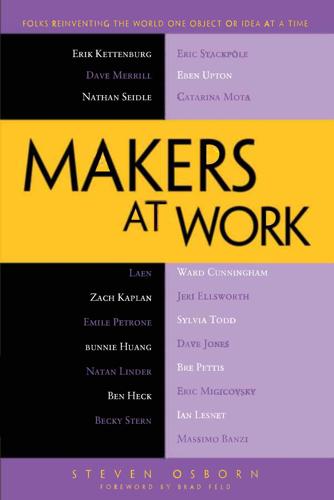
Makers at Work: Folks Reinventing the World One Object or Idea at a Time
by
Steven Osborn
Published 17 Sep 2013
We have this notion that there’s a computing device and this device would have a screen, and this screen is a way of interacting. This is trivial even though it’s new. We’re still pretty much relying on the keyboard and mouse. Not to say that this is an interface that should go away, but on the other hand, in the day and age of Google glasses and that stuff, the way that we interact with computing by and large changes. And we’re scratching the surface right now of how user experience, and talking to computers and interacting with computers will actually come about in the next forty years to come. One of the big things is how do we integrate what we describe as digital information and the physical world?
…
Steven: So that’s a good example of projects other people are working on that are pretty cool. Can you think of anything that you’ve seen other people are working on that excites you or you’d like to see more about? Sylvia: Hmmm. James: What did we see at Maker Faire? Sylvia:A lot. There was so much. The titles escape me. Oh yeah, Google Glass! Oh and Jeri Ellsworth’s 3D gaming glasses. She had these glasses that you would put on, and one of the demonstrations is that there is this tower of blocks. And when you put the glasses on and it looks like you are knocking over the blocks. They look like they are right in front of you. It was so cool.
…
China manufacturing Wi-Fi module Xbox hack Human vision system I IEEE1901 Innovation Center Interactive Telecommunications Program (ITP) J Jones, Dave Amp Hour radio back and reshooting things big channels blowing stuff up brown Noctua building stuff “build your own oscilloscope” comment approved complex algorithm constant pressure EE degree electronics design engineer electronics hobbyists electronics magazines entertainment enthusiastic approach formal study fundamental principle/circuit building block “Fundamentals Friday” videos hacker/maker movement hardware high-end video ironic nature learn fundamentals magazine snail mail world mailbag marketing books microchip money and success niche audience open-source hardware passionate people PCB and screen photonicinduction physically holding and playing podcast pop-out things practical aspect project construction “Publish and be damned” redundant/retrenched regular segments spreading study electronics test equipment troubleshooting video blog-type video quality Wireless Weekly WordPress and text blogs work pattern worthwhile producing YouTube Google search engine K Kalanithi, Jeevan Kaplan, Zach Amazon CAD and CAM package Chicago Public Library commercial success consulting business content management system digital fabrication 3D printers Erector sets hardware store industrial revolution Innovation Center internship LEGOs Lever Works mechatronics personal manufacturing pilot program Pumping Station research subscription Shapeoko textiles third industrial revolution transaction Kettenburg, Erik Arduino community ATtinies command-line program Digispark community forward-reaching approach full Spectrum 40-watt hobby laser Kickstarter projects lightbulb moment maker community maker culture open-source community parallel computing project prototype build up Radio Shack surface-mount assembly shop Tesla coil unexpected challenges Vacasa Rentals (company) web developer Wi-Fi modules WordPress Kickstarter Kraftwerk video L Legal defense fund Lesnet, Ian Bus Pirate camera system community cost down crimping tool dangerous prototypes DIY Life electronics life electronics market entrepreneur and electrical engineer fapiao founder garage manufacturing line Hack a Day hardware environment hardware products hex standoffs JTAG debugger Maker Faire Mouser order open-hardware electronics projects open hardware retailers open-hardware shop open-source vision system PCB manufacturers pick-and-place machine pre-crimped wires Shapeoko CNC mill Shenzhen vision system wireless sensor networks Linder, Natan Brooks, Rodney (chairman and CTO of iRobot) CNC machine 3D and CAD design design-for-manufacturing 3D printer projects 3D printing landscape 3D QR code entrepreneurship filament-deposition method flexible-display technology Fluid Interfaces Group Form 1 Google glasses Jerusalem Venture Partners Kickstarter experience microfluidics MIT media lab one-click print OpenRC projector camera systems prosumers Samsung people Sinclair ZX81 PC SketchUp stopwatch application Sun Microsystems Logo programming language Luna-Tik M MakerBot MakerCAM.com Maker Faire Making Wireless Toys Marine Advanced Technology Education (MATE) MediaLab Prado RepRap team Merrill, David Arduino-compatible board BASIC Stamp computer science, majoring in digital photos e-mails entertainment and photography exploded-parts diagram hardware hardware products human vision system implementation inspiration interactive art installations interfaces Internet introductory programming iPhone LEGOs Logo programming language miniature steam engine MIT Media Lab musical instruments personal history physical manufacturing “physical Photoshop” physics programming prototype product role model roller coaster Siftables sketching and building software Symbolic Systems talk and the demos TED talk videogames video segments Microsoft Microsoft Xbox Migicovsky, Eric advice apps for InPulse challenges childhood economy of hardware company key successes Kickstarter experience learned lessons profile SDK for InPulse smartwatch software development Moore, Geoffrey Mota, Catarina altLab business models conductive ink digital fabrication 3D printer education electrical engineering electronics/programming Expancel graduate program human-level goal intellectual property interactive television and audiovisual systems Internet ITP media and physical goods Media Lab NYC Resistor object-oriented programming open-source approach open-source businesses open-source hardware open-source projects PhD programs Portuguese hackerspaces project proposal scientific theory social sciences Tech Crafts TED conferences TED Fellows Program Tisch School trial-and-error process video and filmmaking Motorola N NASA National Oceanic and Atmospheric Administration (NOAA) Neal, James (Laen) Adafruit learning system art project BatchPCB board designs 3D printers education electricity electronics education e-mails flux capacitor GPS Halloween-themed project Internet “maker movement” MAKE videos Nuvoton OSH Park PCB Order personal prototyping abilities production quality profit margin smartphone software SparkFun library UNIX system Nightline O Oomlout company Open Hardware Summit OpenMaterials.org.
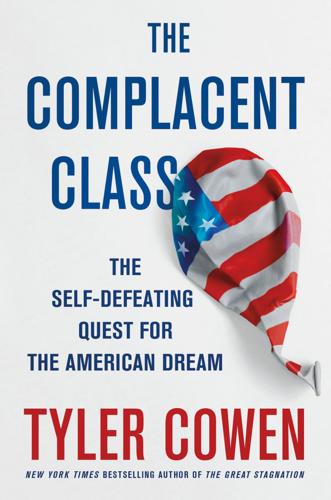
The Complacent Class: The Self-Defeating Quest for the American Dream
by
Tyler Cowen
Published 27 Feb 2017
America’s productivity problem is coming from small and medium-size enterprises, not the market leaders. Probably not all of Google’s ideas will work out, but still, the company isn’t just search. Gmail is pretty useful, YouTube is running and has been significantly upgraded, driverless cars and trucks seem to be on the horizon, and someday a version of Google Glass may even change our lives, even if Google Glass as we know it remains stillborn. What is happening is that technology has made it easier for better corporations to identify those workers with stronger skills, more demanding work ethics, and higher intelligence, and vice versa. The more successful firms, having more to offer in terms of salary and prestige, are able to attract such workers, now that they can find them.

Our Final Invention: Artificial Intelligence and the End of the Human Era
by
James Barrat
Published 30 Sep 2013
Also onboard at the stealth facility is Andrew Ng, former director of Stanford University’s Artificial Intelligence Lab, and a world-class roboticist. Finally, late in 2012, Google hired esteemed inventor and author Ray Kurzweil to be its director of engineering. As we’ll discuss in chapter 9, Kurzweil has a long track record of achievements in AI, and has promoted brain research as the most direct route to achieving AGI. It doesn’t take Google glasses to see that if Google employs at least two of the world’s preeminent AI scientists, and Ray Kurzweil, AGI likely ranks high among its moon-shot pursuits. Seeking a competitive advantage in the marketplace, Google X and other stealth companies may come up with AGI away from public view. * * * Stealth companies may represent a surprise track to AGI.
…
Even the Google camera cars: Streitfeld, David, “Google Is Faulted for Impeding U.S. Inquiry on Data Collection,” New York Times, sec. technology, April 14, 2012, http://www.nytimes.com/2012/04/15/technology/google-is-fined-for-impeding-us-inquiry-on-data-collection.html (accessed May 3, 2012). It doesn’t take Google glasses: In December 2012, Ray Kurzweil joined Google as Director of Engineering to work on projects involving machine learning and language processing. In the development of AGI, this is a landmark event, and a sobering one. Kurzweil aims to reverse engineer a brain, and has even written a book about it, 2012’s How to Create a Mind: The Secret of Human Thought Revealed.

Road to Nowhere: What Silicon Valley Gets Wrong About the Future of Transportation
by
Paris Marx
Published 4 Jul 2022
In the early part of the 2010s, the company and its founders took a particular interest in the future of transportation, and naturally influenced how the entire industry—and much of the public—thought about how we should move in the years and decades ahead. Sergey Brin, one of the company’s co-founders, had been trying to turn himself into a technological visionary by running the experimental Google X division and hyping several of the technologies it had under development, with mixed success. Brin pitched a set of ugly smart glasses called Google Glass as the next big consumer tech product in 2012, but they were a flop. However, his vision for an urban future where self-driving cars would take over streets around the world initially seemed like it might avoid the same fate. In September 2012, then California governor Jerry Brown appeared alongside Brin at Google’s headquarters in Silicon Valley to sign a law aimed at accelerating the testing of autonomous vehicles.
…
See Interstate Highway System “frictionless” city vision, 187 Friedman, Thomas, 70–1, 81 gas taxes, 22–3, 30 gated communities, 189–90 Gates, Bill, 52 General Electric (GE), 40 General Motors (GM), 21, 68, 69, 70, 72, 77–8, 80, 118 General Motors’ Futurama exhibition, 1–2, 118, 192 Ghosn, Carlos, 70 Gilder, George, 53 Gilliard, Chris, 195 Gingrich, Newt, 50, 53 Girma, Haben, 174–5 Glencore, 73 Global Business Network, 54 Global North, 76–7, 224, 225–6 Global South, 76–7, 224, 226 gold mining, 80 Google, 6, 46, 72, 109, 114, 121–2, 128, 130, 180–1, 186, 201, 229, 230–1 Google Brain, 126 Google Docs, 54–5 Google Glass, 114 Google Maps, 121 Google X, 116, 120–1 Gordon, Aaron W., 167–8 Gore, Al, 51, 68 Gorz, André, 14, 21, 32–3, 71, 143, 157–8 governance practices, of cities, 199 government spending, 38–9, 45–6 Graeber, David, 47 Grand Challenge, 120–1 graphite, 80 Great Depression, 22–3, 95–6 “green” economy, 77–9 Green New Deal, 225 Greens, 209 Greenwich Village, 26, 27 Greyball, 110 Greyhound, 219 gun deaths, 32 Hackett, Jim, 138 Hall, Peter, 14–5 Harvey, David, 199–200 Hermosillo, Carmen, 56 Herzberg, Elaine, 133–5 Hewlett-Packard, 40 Hidalgo, Anne, 210–1 highway systems.
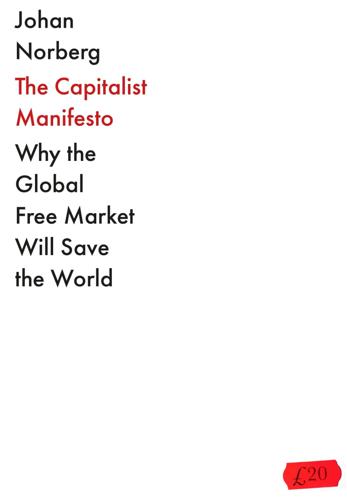
The Capitalist Manifesto
by
Johan Norberg
Published 14 Jun 2023
As long as they launch new products and services that are better, cheaper or more interesting than the alternatives, they will continue to get users – but, unlike the users, they get nothing for free. We sometimes think of them as money-printing machines that succeed in whatever they do, but that is because we look at the top sellers they have today. Yet do you remember Amazon’s Fire Phone, Google Glasses or Microsoft’s Zune music player? Lots of product launches from the GAFAM companies fell flat because they offered something that was uninteresting, already existed, was too complicated, too ugly, too expensive or just cringeworthy. Microsoft never succeeded with the music service Groove Music, the speaker Invoke, the fitness bracelet Microsoft Band or the iPad clone Surface RT.
…
Google’s ability to enter new areas does not include social networks, where it in turn created and shut down Orkut, Google Buzz and Google+. The same fate befell its Twitter imitation Jaiku, the location service Dodgeball, the encyclopaedia Knol, the game Google Lively and more recently Google Stadia, the work tool Google Wave, the media player Nexus Q and the digital discount booklet Google Offers. And the much-hyped Google Glasses are currently in the ‘Where are they now?’ file. Apple was the company that almost perished before Steve Jobs made a comeback, but even under his rule the company made some blunders, for example with the social network Ping, the stereo speaker iPod Hi-Fi, the smart speaker Home Pod and the connection Firewire, which admittedly could do more than USB but cost too much.
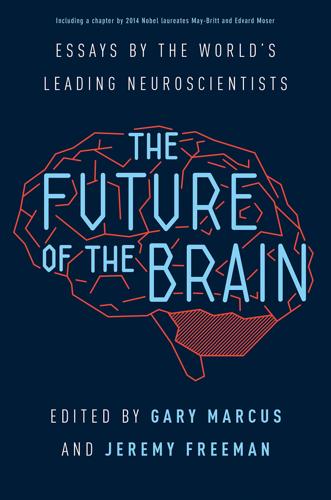
The Future of the Brain: Essays by the World's Leading Neuroscientists
by
Gary Marcus
and
Jeremy Freeman
Published 1 Nov 2014
This simple observation—that DNA can store any string, not just those used as biological blueprints in the genomes of existing organisms—has startling implications for many areas of science and technology because it provides us with a strategy to extend information technology to the molecular level and to integrate it with biological systems. Meanwhile, sequencing technologies developed in academia and industry have put DNA sequencing on a cost-performance trajectory that outpaces Moore’s law, which governs the improvements in silicon microprocessor technology that have brought us from arm-sized cellular phones to Google Glass in only two decades. Many of the same concepts have been adapted to DNA synthesis, which is now on a similar trajectory. This has resulted in the ability to read and write information into DNA with unprecedented ease, as demonstrated recently by the 2012 DNA encoding and subsequent reading of the text of a complete book (Regenesis, Basic Books).
…
See also human genome GENSAT project: Rockefeller University, 9 global broadcasting: consciousness, 165, 168, 174 global collaboration: neuroscience, 111, 123–24 global neuronal workspace, 165f, 165–66 Global Science Forum: OECD, 115 Golgi, Camillo, 53 Golgi’s staining method, 256 Google, 42, 103, 200 Google Glass, 56 Gopnik, Alison, 169 Götz, Karl, 18 Graphics Processing Units (GPUs), 208–10 grid cells: cortex, 71–73; generation of, 74; teaching from, 76 grid maps: cortex, 71–73 GRS–SIM, 118 Hadoop, 103 Hafting, Torkel, 71 Hagmann, Patrick, 11 halorhodopsin, 24 Hawrylycz, Mike, 3–16, 25 head direction cells, 75 hearing: restoration, 230 Heintz, Nathanial, 9 Heisenberg, Martin, 18 Herpes virus, 47 Hill, Sean, 109, 111–24 Hinton, Geoff, 206 hippocampus: grid map, 73 Hodgkin, Alan, 182, 257 Hodgkin–Huxley equations, 257 Homo sapiens, 149, 265 Hood, Leroy, 256 Hubble, Edwin, 95 Hubel, David, 68, 105, 211, 257 human brain: mapping language, 150–51, mapping the connectome of, 12–13; understanding, 264–65 Human Brain Project (HBP), 111, 124, 126, 183; global collaboration, 123; goal of, 111–13; nature of, 195; supercomputer facilities of, 263; unifying brain models, 120–21 human cognition: Spaun model, 129 Human Connectome Project (HCP), 12–13 human genome: challenges in mapping, 195–97; deciding whose brain to map, 202–3; defining progress, 200–201; translating new knowledge, 203–4 Human Genome Project, 194, 202–3, 256 humans: cortex of, 26–27 Huxley, Andrew, 182, 257 IBM.

Nothing but Net: 10 Timeless Stock-Picking Lessons From One of Wall Street’s Top Tech Analysts
by
Mark Mahaney
Published 9 Nov 2021
And every year on the anniversary of my dad’s and mom’s passings, I repost on Facebook the eulogies I gave at their funerals. (Yes, this is gonna be a personal book.) I also was consistently among the earlier adopters of services and products like Gmail, Netflix streaming, Facebook, Twitter, the Kindle, Alexa devices, Google Glass, Snapchat Spectacles, the Amazon Fire Phone, Stitch Fix, Oculus Virtual Reality headsets, and Uber, partly out of a fun fascination with new services and products and partly out of a need to stay on top of my sector. Later, my four sons came to generate (not always consciously) some of my best insights into the newest social networks, like Instagram, Snapchat, and TikTok.
…
AAPL, AMZN, BABA, FB, GOOGL, MSFT, NFLX, PCLN, SHOP, TCEHY, and TSLA have proved themselves as long-term stock winners because they have been proved as long-term fundamentals winners. They all have benefited from extraordinarily effective management teams but not throughout their entire corporate histories. Even some of the best management teams make egregious mistakes or mis-execute from time to time—Netflix and Qwikster, Amazon and the Fire Phone, Google and Google Glass, and Microsoft initially missing the Internet shift. But practically all of the best performing tech stocks have benefited from extraordinarily effective management teams. The key point is that stocks are driven by fundamentals, and fundamentals are driven by management teams. Getting the right TAMs helps, but the two other key fundamentals drivers—relentless product innovation and compelling value propositions—are driven by management teams.

What Algorithms Want: Imagination in the Age of Computing
by
Ed Finn
Published 10 Mar 2017
As Siva Vaidhyanathan wrote of Google in 2011: “there has never been a company with explicit ambitions to connect individual minds with information on a global—in fact universal—scale.”24 Google’s immensity and deep imbrication in the core structures of algorithmic culture have also fueled global ambitions. The company’s X Lab dedicates itself entirely to considering “moonshot” ideas that offer radical solutions or exponential improvements to current challenges, and they are the intellectual force behind high-risk ventures such as Google Glass, the self-driving car, and Project Loon, an effort to deliver Internet service to remote areas via high-altitude balloons. Astro Teller, the lab’s captain of moonshots, has encouraged a culture of rapid prototyping and early failure points to try out new ideas.25 Since the company acquired the artificial intelligence research group DeepMind in 2014, Google has also made a string of breathtaking announcements about advances in machine learning.
…
J., 113 Foxconn, 133–134 Fox News, 170 Fredkin, Edward, 23 From Counterculture to Cyberculture (Turner), 46 Future of Life Institute, 191 Galloway, Alexander, 46, 50, 54, 121–123, 143, 144 Game of life, 29–30 Gamification, 12, 133 addiction and, 114–119, 121–122 blurred reality and, 120–121 chess and, 135–138 cultural transactions and, 119 culture machines and, 115–116 Deep Blue and, 135–138 enframing and, 118–119 exploitationware and, 115–116 Facebook and, 114–115 FarmVille and, 114–115 informatic control and, 122–123 interface economy and, 123–131, 139–140, 145, 147 Gaming: Essays on Algorithmic Culture (Galloway), 121 Gates, Bill, 174 Gawker Media, 170–175, 210n35 Gender, 60–61, 80, 82, 210n43 Geocities, 209n20 Ghost in the machine, 55, 95, 183 Gillespie, Tarleton, 20, 46 Gilliam, Terry, 142 Glass Cage, The (Carr), 38 Gmail, 65–66 Gödel, Kurt, 24, 40 Gods, 1, 3–5, 7, 51, 57, 71, 83, 96, 113, 192 Golden Ratio, 2 Golumbia, David, 18, 21, 38, 45–46 Google advertisements and, 66, 74, 156, 158–160, 178 algorithmic arbitrage and, 111, 124, 155–156 algorithmic worldview of, 20 Alphabet and, 66, 155 anticipation and, 73–74 as arbiter of digital culture, 66 augmenting imagination and, 186 autocomplete databases and, 186 black box of, 169 Brin and, 57, 155–156 business model of, 20–21, 71–72, 93–94, 96, 155, 159 cloud warehouse of, 131 company value of, 158 cultural architecture of, 42 DeepMind and, 28, 66, 181–182 disruptive technologies and, 124 earnings of, 158 effective computability and, 42 global computation infrastructure of, 131 Gmail and, 65–66 gutter problem and, 110 impact of, 65–66, 87, 195 interfaces and, 66–67, 124 intimacy and, 75–76 KnowledgeGraph and, 71–73, 75, 94 Kurzweil and, 184 machine learning and, 66, 181–186, 191 Maps and, 59 market issues and, 66 massive infrastructure of, 131 Memex and, 188 neural networks and, 185 OK Google and, 51 ontology and, 159–160 Page and, 155–156 PageRank and, 20, 111, 155–159, 169, 177–178, 189 parsing data and, 182 pragmatist approach and, 18, 20 product improvement and, 42 programmable culture and, 169 Project Loon and, 66 Schmidt and, 66, 73, 127 search and, 26, 42, 48, 69, 75–76, 87, 157–159, 169 sharing economy and, 127 simplification ethos and, 97 Star Trek computer and, 11, 65–82, 159, 186, 191 system behavior and, 16 techno-utopian rhetoric and, 16 X Lab and, 66 YouTube and, 65–66 Google Glass, 66 Googleization of Everything, 68 Google Now, 51, 73–74, 76, 82, 160 Gou, Terry, 133 Grammar, 2, 16, 25, 38–41, 62–64, 110–112, 138, 178–179 Grand Theft Auto (game), 122, 124 Grinding, 120, 140 Guardian (newspaper), 170 Guattari, Félix, 76 Guilds, 121 Gutter problem, 110 Habermas, Jürgen, 105–107, 109–110, 114, 172–173, 175–176 Hackers, 1–5, 38, 46, 50–51 Hackers (film), 3 HAL computer, 181 Half-Life of Facts, The (Arbesman), 188–189 Halting states, 41–46 Hardt, Michael, 145 Hastings, Reed, 97–98 Hayles, N.

The Simulation Hypothesis
by
Rizwan Virk
Published 31 Mar 2019
The defining quality of AR is that it virtually “adds” things to the environment—or at least it seems that way to the person wearing the glasses. You might be in a room with a physical table but no chairs. AR glasses can put chairs around the table or put spiders or snakes on the table. Among the earliest AR headsets were Google Glass and Microsoft Hololens. They are being joined by the likes of Magic Leap (which uses a unique light-field technology), with many more on the way. Augmented reality represents a different technology than virtual reality, but the underlying toolsets are very similar. They both use 3D models, textures, and real-time rendering technology built originally for video games.
…
The ExtraTerrestrial, 38 Everett, Hugh, 149 EverQuest, 44 expanded world, hints of, 37 expanding symmetry, 263 Exposition du système du monde (Laplace), 125 F Facebook, 59–60, 97–98 false memories, 79–80 . see also implanted memories Far Journeys (Monroe), 242 Faraday, Michael, 125–26 Fermi, Enrico, 235–37 Fermi paradox, 235–37 Feynman, Richard, 258 field of view, 137 films, special effects, 64–66 Final Fantasy: The Spirits Within, 65 Final Fantasy video games, 42, 65 Flamm, Ludwig, 178 Flight Simulator, 137 forceful projection, 197–99 Fractal Foundation, 264–65 fractal patterns, 264f fractal processes, 18–19 fractally generated landscape, 48f fractals, 263–66 Freud, Sigmund, 189 Fringe and parallel worlds, 152–53 FTL (faster than light) technology, 233 full immersion, 53 Fundamental Process, 156–57 future selves and parallel lives, 150–52 future vs. the past, measurement, 146–47 futures, multiple possible, 147–48, 148f G game control methods, 53–54 . see also interface technologies game loop, 27, 31, 73, 213 game state, 29 game state, player, graphical representation, 40–41 game theory, 153–55 game world, limited level-based, 36 Gates, James, 256–57 Geller, Uri, 243 General Theory of Relativity, 171 Geons, Black Holes and Quantum Foam (Wheeler), 168 Giddings, Steven B., 174 Go, 104 God/Allah/Jehovah, and creation of physical world, 219–221 God/Allah/Jehovah, and the afterlife Al-Akhirah and the Day of Qiyamah, 220–21 Christianity and Judaism, 223–25 Gods and Heaven, 277–78 Goertzel, Ben, 91 Good, Irving John, 100 Google Assistant, 88 Google Duplex, 90 Google Glass, 62 Google Home, 90 Goswami, Amit, 130, 133 GPUs (graphics processing units), 16, 137 GPUs/CPUs, 157, 173 grandfather paradox, 149 graphical arcade and console games, early, 32–38 graphical non-player characters (NPCs), 41–42 graphical representation of player game state, 40–41 graphically rendered world, big, 40 graphics processing units (GPUs), 16, 137 gravitational constant, 168 gravity waves, 168 Great Game, 150–52 Great Simulation, 19–20, 26, 53–54, 173–74, 214, 268 Great Simulation, conscious beings or unconscious simulations dreamlike nature of reality, 284–85 Godlike AI, angels and afterlife, 286 souls, reincarnation, karma and quests, 285–86 Great Simulation, implications of bridging the great divide, 289–290 computation underlies other sciences, 286–89 Plato’s allegory of the cave, 270–71 Great Simulation, main elements of downloadable consciousness, 281 high-resolution pixelated world, 278–79 MMORPGs (massively multiplayer online roleplaying games), 279 physics engine based on classical and quantum physics, 283–84 player characters (PCs), non-player characters and AI, 280–81 quantized, pixelated reality, 281–82 rendering engine based on quantum indeterminacy, 282–83 seemingly infinite algorithmically generated world, 280 Great Simulation, sources of aliens, 275–76 Gods and Heaven, 277–78 humans/ancestors, 273–74 nonhuman earth-based lifeforms, 275 other simulations, 270–73 super-intelligent machines, 276–77 time travelers from the future, 274–75 Green Simulation, 266 Greisen–Zatsepin–Kuzmin (GZK) limit, 255–56 Grimm, 4 GZK (Greisen-Zatsepin-Kuzmin) limit, 255–56 H Habitat, 44, 209 HAL 9000, 2001: A Space Odyssey, 96, 115 Hall effect, 251 Hanson Robotics, 91 haptic gloves, 61 haptic suits, 56 haram, 225–26 Harlow, Daniel, 260 Hawking, Stephen, 10, 79, 150, 157, 275 Healing Mantras (Ashely-Farrand), 206 Heisenberg, Werner, 125, 130–32, 167, 245, 290 Hello Games, 46–47 Herbert, Brian, 97 Herbert, Frank, 97 Hertz, Heinrich, 167 heuristic systems, 89 high-resolution pixelated world, Great Simulation, 278–79 Hinduism, 14 hints of expanded world, 37 The Hitchhikers Guide to the Galaxy (Adams), 29, 275 holodeck, 6–7, 68 Howe, Elias, 190 HTC Vive HR headset, 55, 60 humans/ancestors, 273–74 Hynek, J.
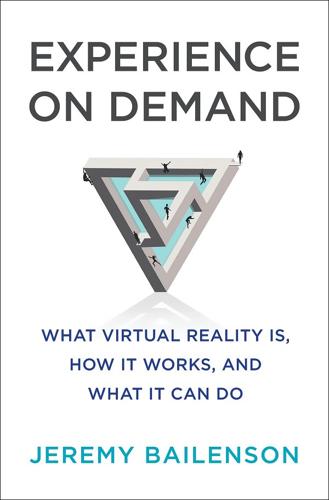
Experience on Demand: What Virtual Reality Is, How It Works, and What It Can Do
by
Jeremy Bailenson
Published 30 Jan 2018
But considering the huge technical improvements that have been made in just the past few years, these challenges are surmountable. Then there’s the question of actually wearing the equipment. “Who is going to put on goggles?” some ask, pointing to the consumer failure of Google’s much hyped augmented reality eyewear, Google Glass. Glass, of course, turned off a lot of people because it had the unnerving ability to seamlessly record video and audio. It was also considered antisocial, allowing people to seemingly interact with the real world while checking their e-mail. VR does not aspire to be integrated into one’s day-to-day existence.
…
See also VR games; specific games modified to work with VR, 62–63 videogame designers, 61–62 videogame industry, 224 violence and, 61–65 virtual worlds, 134–35 VR games, 61–62, 158 Garen, Ron, 109–10 Gates, Bill, 247–48 Gear, 8, 9, 77 gesture, 181–84, 191–92, 193–96 Gibson, William, 187, 249 Neuromancer, 66, 174 Goodell, Roger, 100–101 Google, 8 Google Glass, failure of, 10 Google Trends, 247 Go Pro cameras, 31 Gordon and Betty Moore Foundation, 130 Goya, Francisco, Disasters of War series, 79 Grandin, Temple, 103 Grand Theft Auto series, 62–63 “The Great Pacific Garbage Patch,” 134 greenhouse gases, 126–29 Greenleaf, Walter, 146 Griffith, D.
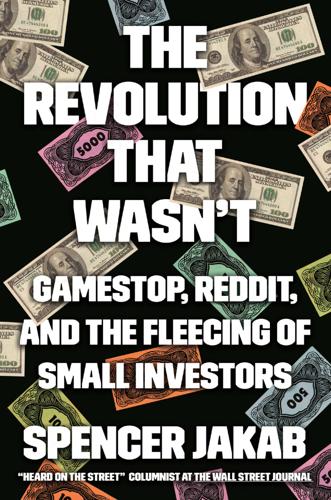
The Revolution That Wasn't: GameStop, Reddit, and the Fleecing of Small Investors
by
Spencer Jakab
Published 1 Feb 2022
“It became clear to us that the smartphone would be your primary tool for accessing the markets and doing financial transactions in general,” said Tenev in a 2017 interview.[3] The idea was a surprisingly hard sell. Tenev said that more than seventy potential investors turned them down. The venture capitalist Howard Lindzon of Social Leverage saw the promise right away, flying to Silicon Valley to meet Tenev and Bhatt. They both showed up to the meeting wearing Google Glass, the height of geek chic. That diminished their gravitas, but Lindzon says they, and especially their idea, impressed him greatly. He had been trying to convince established retail brokers to integrate social media with stock trading, making a buy order as easy as meeting someone special on Tinder.
…
S., 46–47 commissions, 48–50, 234, 251 zero-dollar, 47, 48–51, 54, 59, 70, 101, 102, 139, 166, 218, 241, 247, 259 Commonstock, 47 Condé Nast, 38 Congress, 206, 230–31 see also House Committee on Financial Services hearing Consumer Federation of America, 29, 241 Consumer Financial Protection Bureau, 42 control, illusion of, 27 Cooperman, Leon, 191 COVID-19 pandemic, ix–xii, xv, 1, 23, 31, 42, 45, 47, 52, 55–57, 62, 68–72, 83, 88, 89, 92, 93, 105, 156, 179, 214, 219, 224, 255, 256 stimulus checks during, 56, 62, 71, 72, 255 Cox, Christopher, 83 Cramer, Jim, 128, 254 Crash of 1929, 42, 150, 233 Crawford, Cindy, 111 Credit Suisse, 60, 128 Crockett, Molly, 39 Cruz, Ted, 197 Cuban, Mark, 191–92 cryptocurrencies, 58, 154, 179 Dogecoin, 19, 152, 154 CXO Advisory Group, 254 D Daily Journal Corporation, 183 Dalio, Ray, 160–61 Damodaran, Aswath, 18, 82, 177–78 Dark Knight, The, 138 DARTs (daily average revenue trades), 59 DeepFuckingValue, see Gill, Keith deep-value investors, 17, 52 demands for goods, 51 democratization of finance, 4, 5, 10, 173, 178, 182, 198, 207, 240, 242–43, 251, 262 dentists, 237, 251 Depression, Great, 48 derivatives, xi, xii, 5, 36, 101 see also options Dian Fossey Gorilla Fund, 135 Dimon, Jamie, 160 Discord, 190 Discover Brokerage, 28 Dogecoin, 19, 152, 154 Doji, 47 dot-com era, 4, 21, 24, 25, 28, 42, 63, 65, 70, 90, 106, 118, 155, 179, 186 Dow Jones Industrial Average, 52, 53, 61, 70, 151, 234, 243 DraftKings, 26, 30 Drew, Daniel, 74 Dunning, David, 28 Dusaniwsky, Ihor, 76, 81, 130, 132, 170 E economic theory, 51 behavioral, 51, 62, 255 Edelman, 143 Egan, Dan, 54, 60, 65, 183 Einhorn, David, 152–53, 158, 166, 253 El-Erian, Mohamed, 199, 205 Elm Partners, 260 Enron, 42, 84–85, 117, 119, 125, 129, 186, 242, 261 Epsilon Theory, 165 eToro, 47, 200 E*Trade, 24, 28, 55, 189, 219 Gill’s account with, 15, 19, 87, 88, 90, 100, 112, 130–31, 136, 141, 147, 171, 212, 230, 232 Eurekahedge, 119 exchange-traded funds, 159, 234 Express, 188 F Facebook, 37–38, 98, 162, 166, 202 Factiva, 127 FactSet, 177 FanDuel, 26 Fannie Mae, 216 Fast Company, 26 FBI, 122 Federal Reserve, 10, 58, 67, 69, 71, 98 Survey of Consumer Finances, 252 Federal Reserve Bank of New York, 83 Fidelity Investments, 8, 25, 27, 221–22, 245 fiduciaries, 13–14, 258 financial advisers, 27, 253–55, 258 see also robo-advisers financial crisis, xi, 6, 8, 10, 21, 28, 58, 63, 69, 70, 78, 83, 143, 199, 204, 215 Financial Industry Regulatory Authority (FINRA), 34–35, 101, 103, 120, 131, 193, 202, 239 Financial Times, 78, 81, 85 FOMO (fear of missing out), 63, 151, 172, 177, 178 Forbes, 9, 234 Ford Motor Company, 82 Forrest Gump, 212 Fortune, 85 4chan, 39, 125 Fox News, 156, 189 Freddie Mac, 216 French, Sally, 45 Fuld, Dick, 80 Futu, 236 G Gallagher, Dan, 240 Galvin, William, 29 gambling, 30–31, 55, 57 lotteries, 62, 239, 241, 242 sports, 26, 30–31, 57 Gamergate, 125 GameStop (GME), GameStop short squeeze, x–xiv, 2, 10, 12, 16, 21, 22, 26, 30, 31, 36, 54, 56, 60, 61, 67, 72, 76, 80, 83, 85, 86, 88, 93–95, 97, 102, 107, 108, 111–15, 122, 125, 127–34, 128–32, 137, 138, 141–49, 152–55, 157, 158, 160, 161, 164, 169–70, 174–78, 180, 185, 188, 189–92, 200, 204, 211–14, 215–17, 221–22, 227–31, 234, 235, 237–40, 242, 249, 252, 262 board members and, 222–23 CEOs and, 224 congressional hearing on, see House Committee on Financial Services hearing Gill and, 14, 15–19, 43–45, 68–69, 90–92, 94, 95, 100–101, 112–14, 130–33, 143–44, 147–48, 154–55, 260 Gill’s Forrest Gump Twitter post on, 212 margin debt and, 58 poll on, 13 Reddit and, 37; see also WallStreetBets thousand-dollar price predicted for, 172–73, 176, 177 Volkswagen squeeze compared to, 77, 78 gamification, 29–31 gamma squeeze, 108, 109, 132, 141, 216, 227–28 General Motors, 151 Generation Z, 21, 26, 56, 88, 143, 162, 236, 246, 255 Gensler, Gary, 207 Gill, Elaine, 171 Gill, Keith (DeepFuckingValue), 1–3, 14, 15–20, 47, 48–49, 52, 73, 87–88, 116, 126, 129, 136, 141–42, 171, 175, 183, 191, 211–14, 218, 219, 222, 227, 230–32, 250 at congressional hearing, 1–3, 14 E*Trade account of, 15, 19, 87, 88, 90, 100, 112, 130–31, 136, 141, 147, 171, 212, 230, 232 Forrest Gump Twitter post of, 212 GameStop and, 14, 15–19, 43–45, 68–69, 90–92, 94, 95, 100–101, 112–14, 130–33, 143–44, 147–48, 154–55, 260 net worth of, 19, 94, 114, 131, 133, 148, 155, 171, 191, 212 YouTube videos of, as Roaring Kitty, 2, 18, 45, 48–49, 92, 130, 133, 144, 171, 174–75, 191, 211, 213 global financial crisis, xi, 6, 8, 10, 21, 28, 58, 63, 69, 70, 78, 83, 143, 199, 204, 215 GME, see GameStop, GameStop short squeeze Goepfert, Jason, 227 Golden State Warriors, 158 Goldman Sachs, 9, 55, 63, 76, 132, 170–71, 178, 219–20, 254 Google, 46, 162, 243 Google Glass, 24 Google Play, 195 gorillas, 135, 225 Graham, Benjamin, 174, 177 Grand Theft Auto V, 97 Great Crash of 1929, 42, 150, 233 Great Depression, 48 Greenfield, Rich, 39, 180 Griffin, Ken, 8, 14, 41, 65, 67, 146, 189, 206–8, 218, 234, 240 at congressional hearing, 9–11, 14, 65 Gross, Bill, 216, 217, 220, 228 Grube, Jim, 114 Grujic, Al, 208–9 H Hacker News, 25 Haghani, Victor, 260–61 Harvard Law School, 220 Harvard University, 80 Hawley, Josh, 198 Hearst, William Randolph, 9 hedge funds, xi, xv, 4, 6–8, 12, 13, 22–24, 56, 67, 68, 73, 75–77, 96, 109, 110–11, 115, 119, 121, 126, 129, 130, 133, 135, 138–39, 141, 143, 146, 157, 170–71, 173, 176, 179–80, 189, 197, 199, 202, 213, 217, 220, 228, 229, 234, 239, 245, 249, 260 and locating a borrow, 72–73 Robinhood’s trading restriction and, 197–99, 206 Volkswagen and, 77–78 WallStreetBets as, 139 hedonic products, 51 Hemingway, Ernest, xiii Hempton, John, 181 herding events, 238 Hertz, 60–61, 255 Hestia Partners, 222–23 Hickey, Mike, 44, 128 high-frequency traders, 236, 238, 243, 247, 258 Robinhood and, 193, 202, 207, 236 Hirst, Damien, 7 HODL-ing, 140, 255–56 homeownership, 71 House Committee on Financial Services hearing, 1–14, 76, 80, 183, 206, 238–40 Gill and, 1–3, 14 Griffin and, 9–11, 14, 65 Huffman and, 11–13, 40, 165–66 Plotkin and, 6–11 Tenev and, 3–6, 11, 14, 32, 40, 65, 206 Washington establishment and, 13–14 Waters’s chairing of, 3, 13 Hsieh, Tony, 89–90 Huffman, Steve, 37–38, 40 at congressional hearing, 11–13, 40, 165–66 Hunt, Ben, 165 I illusion of control, 27 index funds, xv, 4, 6, 125, 191, 235, 242, 244, 245, 251, 254, 256, 257, 259, 260 influencers, 150–68, 170, 210, 246, 249 In Good Company, 87, 171 initial public offerings (IPOs), 63–65, 155 insider trading, 42 Instagram, 162, 166 Intel, 46 Interactive Brokers, 188 interest, 63 compound, 242 short, 76, 92, 93, 106, 108, 113, 121, 132, 133, 140, 164, 169 zero, 58, 72 internet, 22, 163, 258 see also social media Invisibly Realtime Research, 13 iShares, 259 J Jacob, Mary K., 172 Japan, 81 Ja Rule, 197 Jay-Z, 64 JMP Securities, 70, 199 JOBS (Jumpstart Our Business Startups) Act, 13, 246 Jordan, Michael, 8, 111 J.P.
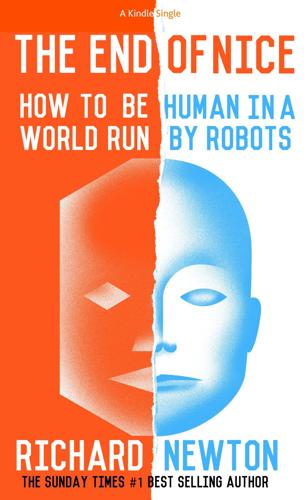
The End of Nice: How to Be Human in a World Run by Robots (Kindle Single)
by
Richard Newton
Published 11 Apr 2015
As weird becomes normal and normal becomes something for the history books we find ourselves living in a world full of ambiguity, uncertainty and unpredictability. Fortunately, we are naturally well equipped to thrive under such conditions of constant change. As a species we are creative, inventive, adaptable, resourceful, competitive, ambitious and social. But there’s a smear on our Google glass vision of the future. It begins with the simple observation that society in most places on Earth has come to function because it is productive. As a result all human effort (with few exceptions) was invested into productivity. This led to a culture that prized order, conformity, predictability, tradition and normality.
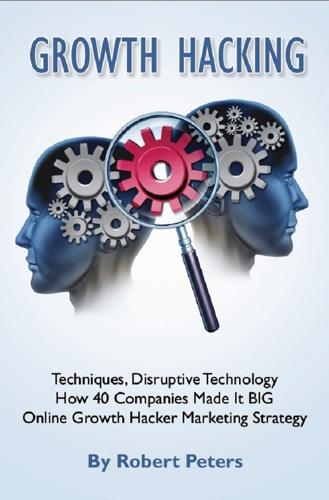
Growth Hacking Techniques, Disruptive Technology - How 40 Companies Made It BIG – Online Growth Hacker Marketing Strategy
by
Robert Peters
Published 18 May 2014
As more app stores followed, they proved to be high-quality distribution channels for Evernote. Regardless of the device or operating system, Evernote was there when the store opened for business, prominently featured and ready for download. This is a policy Evernote continues to follow. They already have an app for the much hyped Google Glass wearable computer. Timing was not the only component of Evernote’s success, however. Their designers have created an impressive cross-platform experience with no file size limitations and no complex rules. Regardless of the device or operating system, all platforms sync up seamlessly. Evernote is totally customizable, allowing users to organize and archive their data into what the company calls their “second brain.”
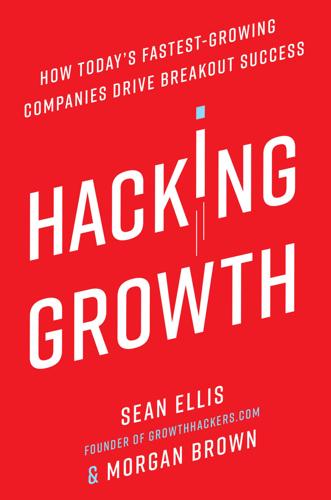
Hacking Growth: How Today's Fastest-Growing Companies Drive Breakout Success
by
Sean Ellis
and
Morgan Brown
Published 24 Apr 2017
Of course, building a must-have product isn’t easy, and one result is that too often those launching new businesses or products put the cart before the horse, pouring resources and staff into trying to drive more customers to a product that isn’t actually loved, or sometimes even understood, by its target market. This is one of the most common, and deadly, mistakes start-up founders make, and it’s also a huge problem that often surfaces when established firms, even those known for their innovation prowess, launch new products. Just think of Google Glass and Amazon’s Fire Phone—both innovative products…that nobody wanted. Or the infamous Microsoft Zune media player, launched in November 2006, which Microsoft reportedly spent at least $26 million to promote but which never generated more than a tepid response.1 The Zune was not a bad product; many critics considered it quite well designed.
…
Even truly great products that are loved by a core group of early adopters will almost surely fail without a well-focused effort to vigorously drive growth. So much media coverage of failed products is devoted to ones that professed to be “the next big thing” but that, with hindsight, clearly failed to offer a compelling core product value to a large enough market beyond their early adopters, like the aforementioned Google Glass or the much-hyped Segway scooter. There is less coverage about the more perplexing failures: those of products that do offer a very appealing core value and for which there is a large potential market that isn’t yet dominated by incumbents. Here the problem is often the lack of a well-designed and -executed strategy for driving growth.
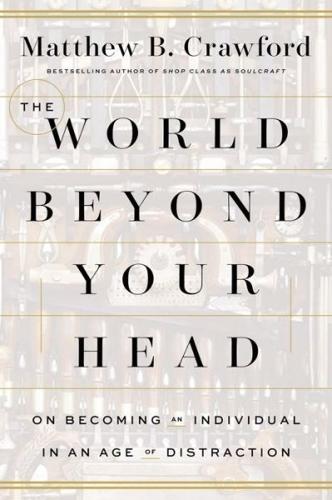
The World Beyond Your Head: On Becoming an Individual in an Age of Distraction
by
Matthew B. Crawford
Published 29 Mar 2015
If you have ever listened to the NPR show Car Talk and heard people mimicking the sounds their cars make when they are misbehaving in some way, then you have some idea of the role played by sound in our ongoing monitoring of our cars, which we become aware of only when there is a new sound, indicating a problem. 11. Then again, it is said that we live at the end of history, so maybe we needn’t fret about any of this. “In the future” (as Conan O’Brien used to say), we will be ferried around by Google’s self-driving cars, wearing Google Glass goggles and who knows what all. The goggles will give us something exciting to watch, like Grand Theft Auto, and we will be given a steering wheel that shakes realistically as we execute brilliant evasive maneuvers. We will make vroom vroom sounds with our mouths to preserve that “sense of involvement,” and arrive at our destination in a mood of triumph.
…
explicit thinking extended mind as challenge to Enlightenment anthropology and cultural deregulation and self-regulation fascism Federal Trade Commission Feeney, Matt felt, in organ making Fichte, Johann Gottlieb financial futures trading pits Finland firefighters five-year plans Fleming, David Florensky, Pavel flow fly balls foreign languages 401(k) plan, opt-out Fox News France Franklin, Benjamin Franzen, Jonathan freedom attention and as choice and expressive power history of jigging and Locke on meaning of metaphysics of as self-responsibility free market free will French Revolution Freud, Sigmund on death instinct friendship Frisbees Galileo Galilei Gallup, George gambling addiction see also machine gambling gay rights gaze gaze-checking Genealogy of Morals, The (Nietzsche) Germany apprenticeship in GI Bill Gibson, James J. glassmaking communication in joint attention in molten glass in team leader (gaffer) in Glenberg, Arthur M. Global Cash Access God golden rule Google Google Glass goggles “Gospel of Relaxation, The” (James) Great Recession GREs Groundwork of the Metaphysics of Morals (Kant) guilt Guinness Book of World Records, The gym, Muzak provided at gyroscopic precession habit Hanna, Robert Heal, Jane Hegel, Georg Wilhelm Friedrich Heidegger, Martin heteronomy autonomy vs.

Bold: How to Go Big, Create Wealth and Impact the World
by
Peter H. Diamandis
and
Steven Kotler
Published 3 Feb 2015
And everything we’ve just covered is here today. “Soon,” says Ray Kurzweil,40 “we will give an AI permission to listen to every phone conversation you have. Permission to read your emails and blogs, eavesdrop on your meetings, review your genome scan, watch what you eat and how much you exercise, even tap into your Google Glass feed. And by doing all this, your personal AI will be able to provide you with information even before you know you need it.” Imagine, for example, a system that recognizes the faces of people in your visual field and provides you with their names. This shouldn’t be too much of a mental stretch, as these capabilities are already coming online.
…
Shaw, 129 Devitt, Scott, 132–33 Diamandis, Peter H., 202, 278, 279, 286n Digital Apparel, 61 digital cameras, 6–7, 9, 10, 12, 12, 14, 76 first model of, 4–5, 5, 9 digitalization, 8–9, 8, 10, 20 of books, 154–55 of synthetic biology, 63, 64 digital manufacturing, 33 discovery-based insights, 160, 161–62 disruption, exponential, 8, 8, 9–10, 20, 24, 25, 29, 32, 39, 41, 59, 60, 256 robotics potential for, 60, 61–62 of synthetic biology, 63–65 3–D printing’s impact of, 33–35, 37, 38, 39 DIY communities, 215–16, 219, 227, 233, 239, 241, 243 case studies of, 219–25 definition of, 215 massively transformative purpose (MTP) in, 215, 221, 230, 231, 233, 240, 242 reasons for building of, 228–29 wrong reasons for building of, 229–30 see also communities, online DIY Drones, 216–17, 229, 232, 242 DNA, 63, 64, 65 Doctorow, Cory, 38 Dogpatch, Ky., 71 doll industry, 38–39 donation funding, 172, 173 Doukas, Charalampos, 43 Downey, Robert, Jr., 117 Dragon capsules, 34, 97, 119 Drive (Pink), 79 drones, 14, 44, 61, 133, 275 dual-use crowdsourcing, 154–56 Dunn, Jason, 35–36, 37 Duolingo, 155–56 DuPont, 72 D-Wave Systems, 58, 59 Eastman, George, 3–4, 15 Eastman Dry Plate Company, 4 Eastman Kodak Company, see Kodak Corporation eBay, 118, 218 “e-discovery” software, 56 Elastec/American Marine team, 252 electric cars, 119 Ellenberg, Jordan, 255 Ellucian, 258 Engadget (blog), 177, 206 engagement strategies: in crowdfunding campaigns, 203–6, 207 early donor, 203–5 incentive competitions as, see incentive competitions for media attention, 205–6 in online communities, 224, 227, 235, 236–38, 239, 241 rating systems as, 226, 232, 236–37, 240 entitlement problem, 237 Entrepreneur, 62 entrepreneurs, exponential, xi, xii–xiv, 15, 17, 21–22, 24, 28, 41, 66–67, 73, 115–16, 123, 169, 231, 243, 274, 278 AI and, 54, 56–59 birthing projects above line of super-credibility and, 96, 98–99, 98, 100, 101–2, 107, 190, 199, 203, 266, 272 building online communities for, see communities, online choosing technology for development by, see technology, exponential crowd tools of, see crowdfunding, crowdfunding campaigns; crowdsourcing; incentive competitions incentive prizes as tools of, see incentive competitions infinite computing and, 50–52 networks and sensors trend and, 43, 47–48 passion as important in, 106–7, 119–20, 122, 125, 134, 174, 183, 184, 228 psychological tools for, see psychological tools, of entrepreneurs risk management and, 76–77, 82, 83, 84, 86, 87, 88, 92, 93, 103, 109, 121–22, 126–27, 137, 261, 270 robotics and, 60, 61, 62 solving problems as business opportunities for, xii thinking at scale and, see scale, thinking at in 3–D printing, 35–39 see also specific entrepreneurs and companies equity funding, 172, 173–74 European Space Agency (ESA), 102 experts, in crowdfunding campaigns, 193 exponential communities, xiii, 148, 182, 219, 233 case study of, 225–28 definition of, 215–16 DIY vs., 215–16 see also communities, online exponential growth curve, x, 6, 7, 9, 12, 12, 36, 37, 41, 54, 59 of biotechnology, 64 linear vs., 7, 9 Six Ds of, see Six Ds of Exponentials exponential organizations, 15–17, 18–21, 22 crowd tools of, see crowdfunding, crowdfunding campaigns; crowdsourcing; incentive competitions definition of, 15 linear vs., 15, 17, 18, 19, 20, 21 structure of, 21 see also entrepreneurs, exponential; specific exponential entrepreneurs and organizations Exponential Organizations (ExO) (Ismail), xiv, 15 extrinsic rewards, 78, 79 Exxon Valdez, 250 FAA (Federal Aviation Administration), 110, 111, 261 Facebook, 14, 16, 88, 128, 173, 182, 185, 190, 195, 196, 202, 212, 213, 217, 218, 224, 233, 234, 236, 241 facial recognition software, 58 Fairchild Semiconductor, 4 Falcon launchers, 97, 119, 122, 123 false wins, 268, 269, 271 Fast Company, 5, 248 Favreau, Jon, 117 feedback, feedback loops, 28, 77, 83, 84, 120, 176, 180 in crowdfunding campaigns, 176, 180, 182, 185, 190, 199, 200, 202, 209–10 triggering flow with, 86, 87, 90–91, 92 Festo, 61 FeverBee (blog), 233 Feynman, Richard, 268, 271 Firefox Web browser, 11 first principles, 116, 120–21, 122, 126 Fiverr, 157 fixed-funding campaigns, 185–86, 206 “flash prizes,” 250 Flickr, 14 flow, 85–94, 109, 278 creative triggers of, 87, 93 definition of, 86 environmental triggers of, 87, 88–89 psychological triggers of, 87, 89–91, 92 social triggers of, 87, 91–93 Flow Genome Project, xiii, 87, 278 Foldit, 145 Forbes, 125 Ford, Henry, 33, 112–13 Fortune, 123 Fossil Wrist Net, 176 Foster, Richard, 14–15 Foundations (Rose), 120 Fowler, Emily, 299n Foxconn, 62 Free (Anderson), 10–11 Freelancer.com, 149–51, 156, 158, 163, 165, 195, 207 Friedman, Thomas, 150–51 Galaxy Zoo, 220–21, 228 Gartner Hype Cycle, 25–26, 25, 26, 29 Gates, Bill, 23, 53 GEICO, 227 General Electric (GE), 43, 225 General Mills, 145 Gengo.com, 145 Genius, 161 genomics, x, 63, 64–65, 66, 227 Georgia Tech, 197 geostationary satellite, 100 Germany, 55 Get a Freelancer (website), 149 Gigwalk, 159 Giovannitti, Fred, 253 Gmail, 77, 138, 163 goals, goal setting, 74–75, 78, 79, 80, 82–83, 84, 85, 87, 137 in crowdfunding campaigns, 185–87, 191 moonshots in, 81–83, 93, 98, 103, 104, 110, 245, 248 subgoals in, 103–4, 112 triggering flow with, 89–90, 92, 93 Godin, Seth, 239–40 Google, 11, 14, 47, 50, 61, 77, 80, 99, 128, 134, 135–39, 167, 195, 208, 251, 286n artificial intelligence development at, 24, 53, 58, 81, 138–39 autonomous cars of, 43–44, 44, 136, 137 eight innovation principles of, 84–85 robotics at, 139 skunk methodology used at, 81–84 thinking-at-scale strategies at, 136–38 Google Docs, 11 Google Glass, 58 Google Hangouts, 193, 202 Google Lunar XPRIZE, 139, 249 Googleplex, 134 Google+, 185, 190, 202 GoogleX, 81, 82, 83, 139 Google Zeitgeist, 136 Gossamer Condor, 263 Gou, Terry, 62 graphic designers, in crowdfunding campaigns, 193 Green, Hank, 180, 200 Grepper, Ryan, 210, 211–13 Grishin, Dmitry, 62 Grishin Robotics, 62 group flow, 91–93 Gulf Coast oil spill (2010), 250, 251, 253 Gulf of Mexico, 250, 251 hackathons, 159 hacker spaces, 62, 64 Hagel, John, III, 86, 106–7 HAL (fictional AI system), 52, 53 Hallowell, Ned, 88 Hariri, Robert, 65, 66 Harrison, John, 245, 247, 267 Hawking, Stephen, 110–12 Hawley, Todd, 100, 103, 104, 107, 114n Hayabusa mission, 97 health care, x, 245 AI’s impact on, 57, 276 behavior tracking in, 47 crowdsourcing projects in, 227, 253 medical manufacturing in, 34–35 robotics in, 62 3–D printing’s impact on, 34–35 Heath, Dan and Chip, 248 Heinlein, Robert, 114n Hendy, Barry, 12 Hendy’s law, 12 HeroX, 257–58, 262, 263, 265, 267, 269, 299n Hessel, Andrew, 63, 64 Hinton, Geoffrey, 58 Hoffman, Reid, 77, 231 Hollywood, 151–52 hosting platforms, 20–21 Howard, Jeremy, 54 Howe, Jeff, 144 Hseih, Tony, 80 Hughes, Jack, 152, 225–27, 254 Hull, Charles, 29–30, 32 Human Longevity, Inc.
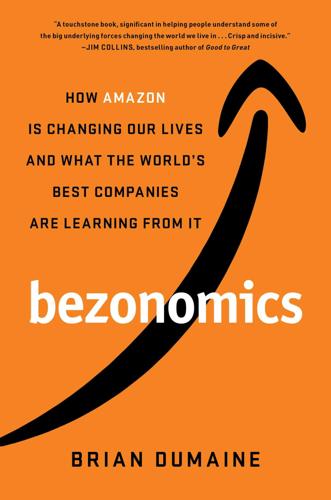
Bezonomics: How Amazon Is Changing Our Lives and What the World's Best Companies Are Learning From It
by
Brian Dumaine
Published 11 May 2020
The company’s logistics have become more sophisticated and its pockets deeper—and, besides, if Amazon wants to maintain its rapid growth pace, it will need new markets to penetrate. As a first step, Bezos in 2014 hired Babak Parviz, an Iranian immigrant who previously headed Google X, a respected research facility (now a division of Alphabet called X) that worked on various moonshot projects, including kites that gather wind energy, the Google Glass virtual-reality headset, and self-driving cars—an initiative that eventually became the Alphabet subsidiary Waymo. Just as at Google, Parviz’s innovation lab at Amazon, which is named Grand Challenge, will have, as its name suggests, a broad mandate to take the long view and to tinker creatively on some of the world’s biggest problems.
…
See warehouses Furman, Jason, 261 Gao, Wei, 52 Gates, Bill, 58, 241 Gawande, Atul, 27, 227 Geneen, Harold, 216 General Mills, 267 Gen Zers, 15–16, 19 Germany, 22, 119, 154, 189, 237 Gianaris, Michael, 254 Gibson, William, 102 Gilboa, David, 211, 212 Gilded Age, 264–65, 266 Gillespie, Jane, 179 Gise, Lawrence Preston, 31–32, 33–34, 36–37, 42 Gise, Mattie, 36 Gizmodo, 93 Glass-Steagall Act, 257 Goldman Sachs, 8, 235 Good to Great (Collins), 5, 78, 83 Google AI-driven flywheel at, 88–89, 90 Amazon’s shopping searches versus searches on, 221 Android operating system of, 14, 64, 225 Best Buy marketing of electronics from, 205 Bezos’s investment in, 217 brand value of, 16 corporate campus of, 75 digital advertising and, 220, 221 facial recognition and, 35 health-care innovation by, 90, 225 identification with founder, 53 public perception of founder of, 57, 58 search engine of, 88–89, 117, 123 shopping assistants of, 116, 117 smart home devices from, 116 Voice Search app from, 108 Google Assistant voice system, 111, 113, 117, 191 Google Glass initiative, 224 Google Home device, 114, 117 Google Pay, 235 Google Shopping website, 117 Gordon, Bing, 96 Gorelick, Jamie, 66 government facial recognition contracts, controversy over, 35–36 Graham Don, 68 grocery stores. See also Whole Foods stores and other specific stores Amazon’s plan for chain of, 24 automation in, 139–41 Bezos’s disruption of, 168 two-hour delivery by, 105, 171, 184 Grove, Andy, 51 Gulf and Western, 216 Hart, Greg, 47–49, 52, 54, 66, 75, 103–4, 226, 237 Harvard Business School, 75, 206 Harvard University, 138, 240 Haven nonprofit health-care partnership, 27, 227–28, 230 HBO Go, 94, 237 health-care industry, 222–31.
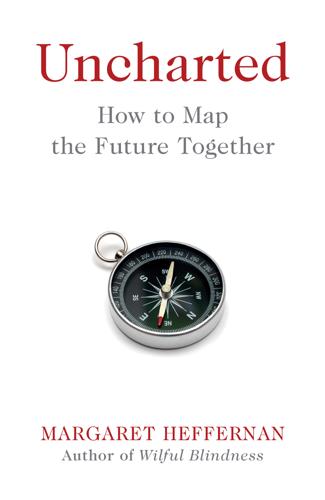
Uncharted: How to Map the Future
by
Margaret Heffernan
Published 20 Feb 2020
Nowhere has this subtle shift from prediction to propaganda been more prominent than in the marketing of autonomous vehicles. The driverless car, we have been told for years now, is inevitable. There’s no point even learning to drive any more, so immediately will the liberating technology be upon us. The piratical image of Google’s Sergey Brin sporting Google Glass as he struggled to explain how autonomous vehicles will both free the blind and reclaim green space from car parks shimmers with visual irony. Just as bizarre, as he signs a Bill facilitating the new technology, is Governor Jerry Brown’s celebratory reference to California as the home of the gold rush – an epic of exploiting hopes and dreams if there ever was one.
…
S., 193 Elop, Stephen, 247 Emergent, 304 Emin, Tracey, 186–7, 190, 197 Emini, Emilio, 265 Emre, Merve, 74, 75 ENTJ, defined, 75 Envio, 304 environmental factors, 90, 94, 109–13 epidemics, 5, 14, 15, 119, 167, 257, 258, 266, 269, 292, 297–305 (see also pandemics) epigenetics, 91 ethics, 33–4, 70, 78, 143, 159, 221, 245, 264 Euripides, 177 European Organization for Nuclear Research (EONR), 204, 206 European Union (EU), 163 exclusivity, 19, 154, 170, 257, 282 existential crises, 8, 237, 245, 258, 269, 323 expectation, 2, 38, 40, 76, 81, 277, 314 extinction events, 306 extravagance, 7, 20, 93, 137, 224–5, 269, 319 extroversion, 92 EY, 125 Faraday, Michael, 209 Farrell, David, 139, 140, 145–6 Fauci, Anthony, 260 FDA, 261, 262, 263, 266 Federal Electoral Institute (Mexico), 171 feeble-mindedness, 97 feedback, belief in, 76 Ferguson, Niall, 28 Fermilab, 204 Fernández, Alberto, 149–52, 167, 172–4, 321–2 Fidecaro, Giuseppe, 206–7 Fidecaro, Maria, 206 ‘fight for the cure’, 82 filmmaking, 180, 185, 192–3 financial forecasting, 15–22 Finegan, Sharon, 141–2, 144, 145–6 First Gulf War (1990–91), 3 First World War, 52–3, 264 Fisher, Irving, 13–15, 16, 16–18, 18, 20, 21–4, 26, 31, 41 Fisher, Margaret, 14 Fishkin, James, 139–40 Flight of the Flamingos, 166 Flowers, Betty Sue, 163–5 flu pandemic, 57, 58, 300 Food and Drug Administration (FDA) (US), 261, 262, 263, 266 foreclosed future, 40 Forer effect, 76 Fort Dix, 57, 58 Foster, Roy, 61–2 Foundation for Food and Agriculture Research, 115 Fourth Industrial Revolution, 60 Fowler, Cary, 305–7 Fowler, Norman, 259 Fragile X, 89 France, David, 260, 264, 267–8, 270 Franco, Francisco, 225, 227 freedom, 7, 47, 51, 56, 66, 103, 121–3, 146, 148, 162, 193, 196, 199–203, 205, 215, 220–2, 245, 287, 319 Friedman, Milton, 17, 233 Friedman, Tom, 28 Future Generations, 2, 98, 278, 309–14 passim, 316, 320 Future Library, 190 future-proofing, 177, 231 Galbraith, John Kenneth, 13 Gallup, 75 Galton, Francis, 96 Galton’s sheep, 103 Garner, Joe, 253 Gartner, 34–5, 38 Gates, Bill, 30 Gaudí, Antoni, 224–7, 229–30 Gawande, Atul, 279 gay community, 59, 154, 257–8 Gay Men’s Health Crisis, 258, 259, 260 Gays and Lesbians Support the Miners (GLSM), 264, 270 GDP, 152, 246, 312 Gell-Mann, Murray, 231 gene therapy, 98 General Mills, 115 genetic determinism, 94 genetics, 65, 82, 88–99, 158, 219–22, 306 Geneva Convention, 308–9, 316 geographic segregation, 33 Georgetown University, 151 Gianotti, Fabiolla, 215 Giffords, Gabrielle, 268 gig economies, 153, 252, 270 Gilbert and Sullivan, 15 Gilt, 77 glaucoma, 90 GlaxoWellcome, 253–4 Global Development Goals, 116 globalisation, 3, 60, 157, 233 GLSM, 264 ‘goal of everything’, 101, 319 Gold, Nicholas, 253–6 Gold Rush, 31 Goldin, Ian, 199 Goldman Sachs, 253 Good Friday Agreement, 63 Good Judgment Project, 36, 37, 39 Google, 78, 230, 234, 283 Google Glass, 31 Gorsky, Alex, 233 Goya, Francisco, 277 GPS, 6, 42, 45, 120, 201 Graham, Robert, 98 Grape-Nuts, 15 Graves, Robert, 196 Great Depression, 129 Great Wall of China, 52 Greenspan, Alan, 24, 28 Grey, Aubrey de, 280–3, 287 Griffin, Emma, 60 growth of knowledge, 51 G7, 39 Guillain–Barré syndrome, 58 gut instinct, 40 hacking, 32, 200, 284 haemophilia, 89 hagamoslo bien, 150 The Hague, 124 Hamlet, 108–9 Han Kang, 191 hard cop/soft cop tactics, 260–1 Harrington, Mark, 262, 270 Harvard, 128, 233 Harvard Economic Service, 20, 21, 22, 25 Hatchett, Richard, 296–7, 301–4, 317 Hawking, Prof.

The Big Nine: How the Tech Titans and Their Thinking Machines Could Warp Humanity
by
Amy Webb
Published 5 Mar 2019
Rather than standing in line every year or two to buy the latest handset, consumers instead spent that money on a suite of new connected devices that came on the market: wireless, Bluetooth earphones with biometric sensors, wristbands that allowed you to record video and make video calls, and smart glasses that fed us a seemingly endless stream of information. Applezon beat Google to market with its glasses—Applezon Vision—which wasn’t a surprise. Apple and Amazon each had a long, successful track record of hyping new technologies and driving consumer taste. (The commercial failure of Google Glass still stung for some within the company, even if the technology was groundbreaking.) Now most people wear smart glasses and earbuds during the day along with a companion ring or wristband for video recording. It turns out that glasses were inevitable. After two decades of staring into screens, our eyes can no longer make the necessary accommodations, and the majority of us have blurred distance vision and needed reading glasses at younger ages.
…
J., 33, 148, 177 Google, 3, 43, 48, 67, 69, 85–86, 96, 119, 211–212, 254; Calico health initiative, 194; in catastrophic scenario of future, 207, 209, 215, 216–217, 218, 219, 221, 223, 224, 225; Chinese ban, 76; consumer connections to, 88; Coursera online learning platform and, 92–93; custom silicon, 91; DeepDream project, 111–112; diversity and, 54–55; Google Glass failure, 191; in optimistic scenario of future, 159, 161, 163, 165, 171, 173; mobile operating system, 139; new set of core principles, 101; no weapons principle, 101; original core value, 99; in pragmatic scenario of future, 186, 187, 188, 189, 194, 195, 201, 202, 203, 205; Project Maven debacle and employee resignations, 79, 101; scanning and indexing of copyrighted books, 94; senior leadership, 56; sexual assault and harassment at, 55–56; 2018 South by Southwest Festival smart home, 216–217; unconscious bias initiative, 55; values algorithm, 99, 101–102; view of women in workplace, 64–65.
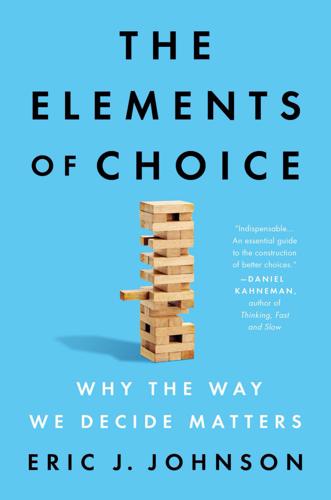
The Elements of Choice: Why the Way We Decide Matters
by
Eric J. Johnson
Published 12 Oct 2021
In addition to studying sales, they put radio transmitters on carts, surveil shoppers with overhead cameras, and even watch participants in studies fitted with eye-tracking cameras on their heads. While the early versions of these devices were clumsy and looked like bike helmets with TV cameras attached, they have become quite sleek. Think of those Google glasses that never made it to market, but with a camera that tracks where your eyes look. Much of what retailers know about shopper behavior is a trade secret, but we know, for instance, that fewer than 33 percent of shoppers look at nutritional labels. Even those who do look at them spend less than one second doing so on average.
…
See metrics Netflix, 270 targets, 245–50 translating attributes to goals, 231–38 Deutsche Bahn, 133 dictator game, 306–7 Dinner, Isaac, 136–37 Dion, Celine, 204 DirectTV, 126–27, 131 disclosure, 307–8, 320 discount brokerages, 283 doctors COVID-19 symptoms, 83–87 end-of-life care choices, 313 generics and electronic health records, 8–11 organ donations, 119 Doerfler, William, 345n dominance, 98–99 dominated options, 99, 172, 174 dominating options, 99 driver’s licenses and organ donation, 109, 118–19 Duke University, 213–14, 224 Duncan, Shannon, 141–42, 182 ease, 122–30, 157 Ebeling, Felix, 134–35, 143, 144–45 Ebert, Roger, 251 education, 319–21 elections automatic voter registration, 156–58 ballot order, 186–90, 343n forecasting, 291–93 of 2000, 185–89 of 2016, 190, 291–93, 292 of 2020, 195 electricity generation, 134–37 electronic health records (EHRs), 8–11, 316–18 Emory University, 72 empirical philosophy, 301–2 end-of-life decisions, 310–13 endorsement, 123, 130–34, 157 endowment, 123, 134–40, 157 endowment effect, 139–40, 321 energy efficiency labels, 251–54, 252, 253, 255 Environmental Protection Agency (EPA), 221 fuel economy labels, 232, 232–35, 233 environmental regulations, 261–62 Envision, 248–50 E-Trade, 282–83, 290 Eurovision Song Contest, 204–5, 208 exercise, 122 Expedia, search order, 199–202, 230 explicit consent, 116 exponential growth bias, 240, 243–44 eye tracking, 35, 36, 37, 53, 209, 217–18 Ezarik, Justine, 123–26 facings, 210–11 fake news, 323–24 Federal Communications Commission (FCC), 300 Federal Reserve, 242, 283 Federal Trade Commission (FTC), 126–28 Feenberg, Daniel, 198 Feinberg, Fred, 50–51 Feynman, Richard, 260 Fidelity Investments, 350n figure skating, 192, 204, 205 financial advisers, 104–5 financial crisis of 2007–2008, 287 Financial Industry Regulatory Authority (FINRA), 288 first choice order, 192–96, 197–99 flight simulators, 24–25, 102–3 Florida and election ballot of 2000, 185–86, 188–89 fluency, 41–44, 61–62 AT&T’s iPhone bill, 126 COVID-19 conversations, 84–85 effects in judgment, 43, 333–34n fonts, 42–43 health insurance, 177 school choice, 168–69, 171–72 subscription services, 314–15 use of term, 41 folk belief, 301–2 fonts, 42–43 font contrast, 43 font size, 43–44 food labels, 59–63, 210–11, 255–59 forcing, 303–5 forest plots, 143–44, 341n fractional shares, 284–85 France and organ donation, 110, 114–15 Franklin, Benjamin, 73–75 free trial offers, 18–19, 64 free will, 1–2, 301–2, 303 fuel economy labels, 232, 232–35, 233 fuel efficiency and economy, 212, 221–30, 232–35 full retirement age, 90, 336n funnel plots, 341n gallons per mile (GPM), 227, 227–29, 232–35, 260 gambling, 100–102, 287 generic drugs, 9–11, 316–18 generosity, 306–7 Gerdes, Wayne, 223–28, 230 German Large Auto Manufacturer (GLAM), 5, 15 customization and user models, 273–75 setting right default, 146–51, 302 Germany and organ donation, 109, 110, 110 global warming, 67–68 goals of choice architecture, 83–106 conversations, 84–88 finding right box, 92–95 Social Security benefits, 88–98 translating attributes to goals, 231–38 Goldstein, Dan, 5, 111, 113–14, 132, 136–37, 293–94, 351n Goodman, Joseph, 179–80 Google, search advertising revenue, 17–18 Google Flights, 100, 212 Google Glass, 210 Google Trends, 156 Gore, Al, 185–89 grade inflation, 251, 253–54 grading scales, 239, 250, 251, 254, 255, 271 Grant, Darren, 188 gray energy, 135, 136–37 green dot speed, 25, 26, 332–33n green energy, 134–37, 144–45 greenhouse gases, 134, 223, 228, 232–35 greenhouse gas ratings, 234–35, 289 Greifeneder, Rainer, 166–67 grocery shopping, 53, 152, 209–11 Halpern, Scott, 311–13 hamburger experiment, 59–62, 75 H&R Block, 71–72, 75 Hardisty, David, 236 Harvard University, 141, 162, 165 Häubl, Gerald, 140 health insurance, 13–15, 173–82, 279–81, 331–32n Hearsay, 42 heels effect, 51 height screening and dating sites, 50, 51 Heitmann, Mark, 149 Henckel, 209–10 Hermann, Andreas, 149 Hershey, Jack, 131–32 heterogeneity, 94 heterogeneous preferences, 151–52 heuristics, 4, 333n Hidden Persuaders, The (Packard), 300 “Hide-and-Seek Politics” (Wilson), 186–87 h-index, 198 Hodgkin’s disease, 107–8 Honda Civic Hybrid, 221–22 horsepower, 255 Hoyle, Lindsay, 331n hurricane tracks, 294–97, 296 Hybridfest MPG Challenge, 223–24, 225 “hybrid” food label, 255–56, 256 hypermiling (hypermilers), 221–26, 263 hypothermia, 28 ice cream menu, 192–94 incentives, 323 organ donation and, 117–18, 339n incompatibilists, 301 inconsistency, 99–102 Indiana University, 166–67 inequity, 323 inference, 293, 334n inhibition, 69–81, 136, 193 Benjamin Franklin’s pros and cons list, 73–75 Ken Jennings and Jeopardy!
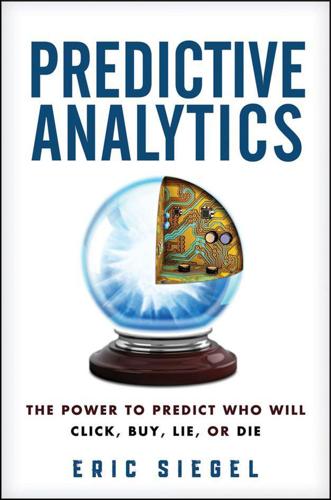
Predictive Analytics: The Power to Predict Who Will Click, Buy, Lie, or Die
by
Eric Siegel
Published 19 Feb 2013
Tomorrow’s Just a Day Away All the preceding capabilities are available now or have similar incarnations actively under development. Many are delayed more by the (now imminent) integration of your smartphone with your car than by the development of predictive technology itself. The advent of mobile devices built into your glasses, such as Google Glass, will provide yet another multiplicative effect on the moment-to-moment integration of prediction, as well as further accelerating the accumulation of data with which to develop predictive models. Today, PA’s all-encompassing scope already reaches the very heart of a functioning society. Organizations—be they companies, governments, law-enforcement, charities, hospitals, or universities—undertake many millions of operational decisions in order to enact services.
…
See crime fighting and fraud detection frequency Freud, Sigmund Friedman, Jerome friendships, predicting Fukuman, Audrey Fulcher, Christopher fund-raising, predicting in Furnas, Alexander future, views on human nature and knowing about predictions for 2020 uncertainty of G Galileo generalization paradox Ghani, Rayid Gilbert, Eric Gimpert, Ben Gladwell, Malcolm GlaxoSmithKline (UK) Gmail Goethe, Johann Wolfgang von Goldbloom, Anthony Gondek, David Google ineffective ads, predicting mouse clicks, measuring for predictions privacy policies Schmidt, Eric searches for playing Jeopardy! self-driving cars spam filtering Google Adwords Google Flu Trends Google Glass Google Page Rank government data storage by fraud detection for invoices PA for public access to data GPS data grades, predicting Granger, Clive grant awards, predicting Greenspan, Alan Grockit Groundhog Day (film) Grundhoefer, Michael H hackers, predicting Halder, Gitali HAL (intelligent computer) Hansell, Saul happiness, social effect and Harbor Sweets Harcourt, Bernard Harrah’s Las Vegas Harris, Jeanne Harvard Medical School Harvard University Hastings, Reed healthcare death predictions in health risks, predicting hospital admissions, predicting influenza, predicting medical research, predicting in medical treatments, risks for wrong predictions in medical treatments, testing persuasion in PA for personalized medicine, uplift modeling applications for health insurance companies, PA for Hebrew University Heisenberg, Werner Karl Helle, Eva Helsinki Brain Research Centre Hennessey, Kathleen Heraclitus Heritage Health Prize Heritage Provider Network Hewlett Foundation Hewlett-Packard (HP) employee data used by financial savings and benefits of PA Global Business Services (GBS) quitting and Flight Risks, predicting sales leads, predicting turnover rates at warranty claims and fraud detection High Anxiety (film) HIV progression, predicting HIV treatments, uplift modeling for Hollifield, Stephen Holmes, Sherlock hormone replacement, coronary disease and hospital admissions, predicting Hotmail.com House (TV show) “How Companies Learn Your Secrets” (Duhigg) Howe, Jeff HP.
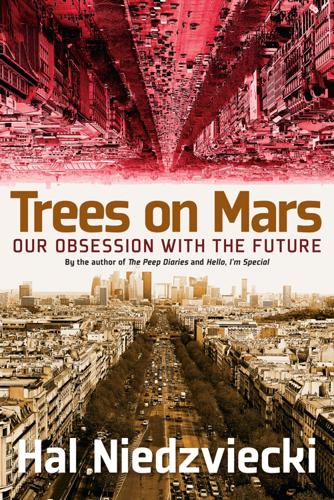
Trees on Mars: Our Obsession With the Future
by
Hal Niedzviecki
Published 15 Mar 2015
In fact, they neatly dovetail with the overall techno-utopian belief system revolving around “faith in the (technological) future.” In this extreme but also now mainstream belief system the goal of technological upgrade, of speeding up the process of change, isn’t the perfect iPhone; it isn’t a device downloaded into your brain, amplified and accessed via Google Glass; it isn’t even an army of robots we control with our minds who do our bidding and create unimaginable wealth and luxury for all. The goal is to arrive at the perfect end—the end of institution, the end of collective humanity, the end of death, and even the end of future itself, which emerges triumphantly re-engineered as the endless present moment.
…
Free energy to power the devices dividing like Tribbles over every available surface. Problem? Solution. Hope! No matter what side you’re on, this post-industrial shell game is pushing us to the brink and beyond. Going to Mars isn’t a solution, it’s a fatal distraction, a chimera as pointless as a Google Glass that actually works or a scheme to download our minds onto computer chips. So too is the idea that we can somehow personalize our disasters and emerge, with the right bugout gear and good old-fashioned American know-how, from the other end of collapse better, stronger, freer. Smoke grenades and hydroponics, trees on Mars and self-driving electric cars, solar outlets and solar panels, it’s all just exacerbating our problems and distracting us from the reality of our situation.
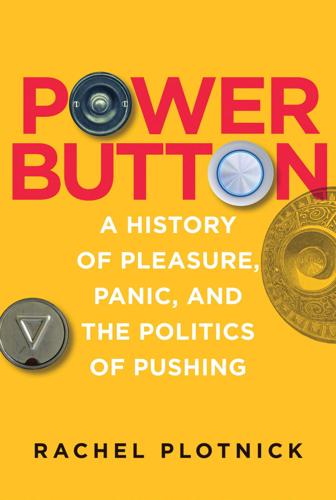
Power Button: A History of Pleasure, Panic, and the Politics of Pushing
by
Rachel Plotnick
Published 24 Sep 2018
We still have a binary system, but priority (plus value) is given to ‘on.’”55 Moving away from physical OFF buttons toward always-on technologies might demonstrate this increasing priority for ON, for doing away with the psychological and philosophical uncertainties of OFF as a state of disconnection and even death. More broadly, in imagining a button-free future, user interaction specialists have called for popularizing other kinds of interactive experiences—from Google Glass (glasses that display the web in one’s line of sight) and Apple’s Siri (voice-activated software made to simulate a virtual servant) to Microsoft’s Kinect (a screen-based entertainment system that relies on hand gestures and other body movements).56 The creators of these technologies promise effortless interfacing that purports to move beyond touch altogether by using tools and sensors that respond “smartly” and automatically.57 These technologies remove buttons from the equation and promise a transformation of one’s body into a device or joystick with (potentially) endless degrees of motion, an experience that contrasts greatly with the characteristics of digital command that include “mere” touch (reduced force), reachability, sedentarism, and automaticity.58 They are sold as the next evolutionary step in “organic” interfacing, where touch and buttons serve as limitations or liabilities.
…
See Touch; Women Milgram, Stanley, 237–238 Museums. See Information Musical instruments, xix, 15, 267n15 Photography and advertising, 107, 121–124, 126–130 amateurs, 121–125 Eastman Kodak camera, 121–130 selfies (see Social media) Pranks. See Children Prisons, 105, 173, 196, 199–200 Products Apple Siri, 252 Google Glass, 252 Kodak camera (see Photography) Microsoft Kinect, 19, 253 Oculus, 19, 253 Royal Easy Chairs, 127–129 Staples Easy Button, xiii, 244–245 Prophecies, 114–115, 190, 192–193, 202, 205, 233–234, 252–254 dystopian, xxiv, 98–100, 131, 217, 237, 239 utopian, 190, 192–193, 217, 239, 251 Psychology, 19, 88, 237–238 Milgram, Stanley, 237–238 Pushiness, 25–26, 178 Race, 41–42, 201 Reachability, 43–44, 74–75, 154, 183–186, 190, 228, 253 Religion, 76, 83, 93–94, 260 Remote control, 78–80, 83–86, 94–103, 154–158, 189, 228–229, 271n31 television, 233, 236–237 Rieussec, Nicolas, xviii Scientific engineering.
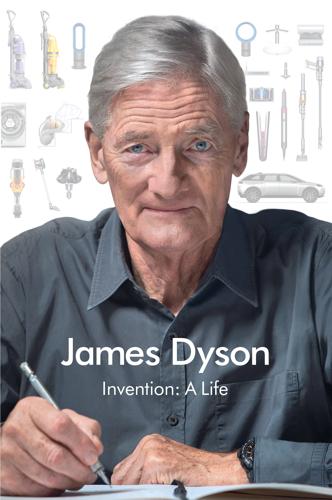
Invention: A Life
by
James Dyson
Published 6 Sep 2021
You could read emails or have them read to you, and dictate a response, as well as record and watch films, play music, and make phone calls. We built a prototype and were delighted by how well it worked. We decided not to proceed with the idea, however, and Charles developed robots with us instead. A similar device was later brought out by Google as Google Glass. Headset A more recent digression was the Dyson Symphony performance at Cadogan Hall, London, in February 2018. Every year at Dodington Park, Deirdre holds an evening of opera arias often accompanied by the Orion Orchestra. One year, over a drink in the kitchen, the orchestra’s conductor, Toby Purser, suggested he commission a piece of music that used Dyson machines and newly invented instruments to represent the creative process at Dyson.
…
See Dyson Farming Faurecia 217 Feilden Clegg Bradley Studios 288 Fenlands 247 Fiennes, Ranulph 128 Finch, John M. 74 First World War (1914–18) 51, 60, 179, 245, 252 Flos 281 focus group–led designing 45 Ford, Henry 44, 119, 214, 255 Foster, Norman 26, 28, 30, 120 Foxconn 59 France, Dyson in 174, 181, 183–84, 232 Friends 188 Fry, Jeremy 104, 268 Amway lawsuit and 95 Ballbarrow, offers to back 61, 84 influence upon JD 44–6, 67, 78, 86, 120, 147–48, 292, 306 JD begins to work for 32–34 Le Grand Banc and 60 motorized wheelchairs and 92, 94, 303 Prototypes Ltd 90 Sea Truck and 32–35, 37–39, 46, 49, 51–2, 59, 60, 61, 120 Fuller Brush company 90 Fuller, Buckminster 26, 30–31, 32, 52, 124, 142, 233 Fuller, Thomas 268 Furst, Anton 30–31 Gammack, Peter 104, 108, 179, 297 Chelsea Flower Show garden and 137 DC01 and 113, 127 DC12 and 186 DC35 Digital Slim and 154, 156, 158 Digital Motor and 148 EV, Dyson (electric vehicle) (N526) and 221, 222, 224 Pure Hot + Cool purifier and 164 recruited by JD 98–99, 104 Supersonic hairdryer and 170 Garbstore, The 300 Garnett, Andy 46, 184 gas-filled shock absorbers 41 General Electric (GE) 58 Genius of Britain 123 geodesic domes 30, 31, 142, 268 Germany, Dyson in 183–84 G-Force 94, 96–97, 186, 187, 299, 305 Gloster Meteor 57 Good Morning America 164 Goodwood Revival 56 Google Glass 141 Gordon, Alexander 200 Gove, Michael 269, 271, 272 Great Exhibition (1851) 262–63 Great Smog (1952) 209 Great Western Railway 261 “greenwash” 123, 226, 243–44 Gresham’s School 5–7, 8, 9, 11, 18, 142, 245, 289–91 Dyson Building 289–90 Gresley, Sir Nigel 40–41 GUS (General Universal Stores) 109–110 Gustin, Daniel 73 Habitat (exhibit), Montreal Expo 277 Hall, Jerry 138 Hardie, George 27 Harrison, George 49 Harvey Norman 183 Hastings, Sir Max 256 Heath, Edward 64 Heinkel 178 57 Henry IV, King of England 89, 159 HEPA filters 133, 161–62, 165, 235 Heyerdahl, Thor 61 Hill, Jane 27 Hillman Imp 267 Hitler, Adolf 43, 56 Hockney, David 17, 27, 28 Honda Accord 53 Civic 67 50 Super Cub 19–20, 22, 185 Honey, Jim 137, 138 Hoover 57, 82–83, 89, 107, 110, 116 Junior 82–83, 84, 85 hovercraft 6, 35, 91 Howe, Elspeth 118 Howe, Geoffrey 118 Hughes, Lucy 288 Hullavington Airfield campus, Dyson 177, 189, 198, 199, 224, 225, 228–34, 231, 235, 241, 278 Hunt, David 109, 111 Hunt, Tony 30, 31, 90, 120, 121 hydrolastic suspension system 51 ICI 68 Ideal Home Exhibitions 90 Imperial College London 26, 98–99, 127, 177, 262, 274, 282, 284 Dyson School of Design Engineering 177, 282 India, Dyson in 202–3 Indonesia 193, 194–95, 203 Industrial Revolution 40, 42, 248, 261, 265, 283, 296 infrared tracking technology 289 “Ingenious Britain: Making the UK the leading high tech exporter in Europe” (JD report) 270 injection molding 68–70, 133 Institute of Mechanical Engineers 43 Institution of Civil Engineers 43 International Electrotechnical Commission (IEC) 204, 206 Iona Appliances 97–98, 99, 100, 102, 105 Isle of Wight Pop Festival (1970) 64 Issigonis, Alec 17, 26, 37, 38–39, 50, 51, 52, 53–54, 55, 78, 88, 216, 217, 267 Jacob, Lord Justice Robin 158 Jaguar 8, 53, 74 D-Type 16 Mark 2 51 XJS 224 XK8 224 James and Deirdre Dyson Trust 288 James Dyson Building for Engineering, Cambridge University 281–82 James Dyson Foundation 239, 267–68, 271, 272, 273, 275, 281–2, 283, 284, 389–90, 313 Japan DC12 designed for 151 Dyson cyclone vacuum motor sourced from 123, 145, 147 Dyson Japan 185–87, 188, 194, 215 G-Force and 95, 96, 97, 99 Jaray, Paul 233 JCB 122, 293, 295 jet engine 56–58, 122, 148, 151, 265, 266, 293 JLR (Jaguar Land Rover) 225 John Lewis 113, 115, 116–18, 119 Johnson, Boris 233 Johnson, Jo 273–74, 275 Johnson Wax 99, 182 Jones, Allen 28 Junkers, Hugo 230, 232 Jupp, Simeon 98, 99, 104, 113 Kalms, Stanley 119 Karajan, Herbert von 54 Kettering, Charles 214 Kevlar 91, 268 Kier & Co. 232 Kimberly-Clark 162 King, Sir David 131, 211 King, Spen 223 King’s Road, London 23, 27, 300 Kirby 90 Kirk-Dyson 63, 64–80 Ballbarrow and see Ballbarrow cyclonic separators, first use of 73–74 JD ousted from 78–80 origins of 63, 64 Trolleyball and 77–78 Waterolla and 77, 77 Kirkwood, Stuart 70 Kite Light 21 Kleeneze Rotork Cyclon 89–90 Klimov, Vladimir Yakovlevich 58 Knickerbocker Corporation 74 Kon-Tiki raft 61 Kuenssberg, Laura 238 Lagerfeld, Karl 170 Lamella hangars 232 Lamont, Brian 109–110 Land Rover 47, 49, 94, 217, 223, 225 lean engineering 123–24, 244 Le Corbusier 24, 28 Ledwinka, Hans 233 Lee Hsien Loong 225 Lee Kuan Yew 190 Lefèbvre, André 50, 55, 87–88 Le Grand Banc 60, 61, 94 Lightcycle task lamp, Dyson 202–3 Linacre, Edward 287 Linolite 120, 121 Linpac 104, 249 lithium-ion batteries 152, 159, 175, 177, 212, 213, 214, 224 Littlewood, Joan 31–32 Littlewoods 109, 110, 115 Ljungström, Gunnar 50 London Fire Brigade 48 London Olympics (2012) 42 Lutyens, Edwin 230 Lux meters 289 MacDonald, Ramsay 230 Magès, Paul 41, 55 Maigue, Carvey Ehren 286–87 Malaysia 39, 125, 189, 190, 191, 192, 195, 196, 198, 281 Malmesbury campus, Dyson 78, 130, 137, 150, 170, 182, 189, 192, 195, 241, 245, 274, 275, 277, 279, 293, 299 D4 building 211 DIET Village 276, 277, 279 D9 building 126 The Hangar 125 Lightning Café 126 Morris Mini Minor at 54 origins of 78, 120–25, 120–21 renewal of offices and upgrading of laboratories 198 Rolls-Royce RB.23 Welland at 56 management structure, Dyson 237–38 manufacturing, British attitudes toward 39–44, 57–59, 64–67, 189–93, 203–8, 236–41, 259, 260–91 Maple Tree 200–1 MarinaTex 288 Masaru Ibuka 54 May, Theresa 203, 225 McCullin, Don 127 Mechanics’ Institute 261–62 Meikle, Andrew 248 Meningitis Research Foundation 288 Michelin 55, 217, 277 middle-class buyers, Dyson products and 119 Mig-15 fighter 58 Millennium Experience 263 Minards, Ian 223–24 Mini 17, 26, 28, 29, 38, 45, 49–51, 53, 54, 55, 88, 125, 216, 217, 267, 293–94 Ministry of Defence 91, 228 Minoru Mori 186 MIRA (Motor Industry Research Association) wind tunnel 221 Mitsubishi Heavy Industries 282 Mittelstand (medium-size private German businesses) 295 Miyake, Issey 139–41, 186 Model T, Ford 214 MOM 288 monocoque 51, 224 Moore, Charles 135, 137 Morris Marina 53, 67 Mini Minor 54 Minor 12, 17, 28, 43, 53 1100 37, 51 Oxford 22 Traveller 17 Morris, Estelle 269 Morita, Akio 38 Morton, Lord 121, 122 Moulton, Alex 51–53 Moulton bike 52–53, 268 Moulton, John Coney 51 Mr.
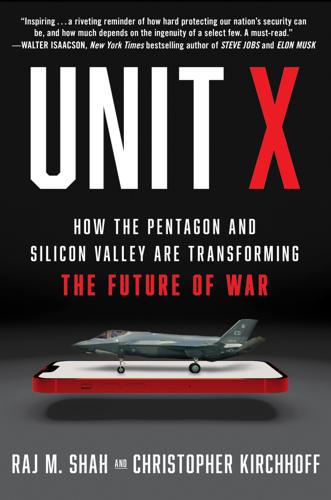
Unit X: How the Pentagon and Silicon Valley Are Transforming the Future of War
by
Raj M. Shah
and
Christopher Kirchhoff
Published 8 Jul 2024
Isaac had run operations for some of Google’s biggest bets. Early in Google’s self-driving car project, he’d been seriously injured on the highway just south of Google’s campus when one of his fellow engineers pushed the car’s algorithms beyond their breaking point. Unfazed, Isaac went on to a leadership role in Google Glass, one of the first attempts to build augmented reality glasses for consumers. Isaac would be our in-house hardware guru, bringing with him experience from the catalog of Google moonshots. Our fourth partner was Vishaal “V8” Hariprasad, a decorated cyber operations officer in the air force who’d been a cofounder at Raj’s cybersecurity startup.
…
.; specific projects DJI (Chinese drone company), 103, 104, 107, 137, 209, 211 Rogue Squadron’s hacking and reverse engineering, 106–7 Donovan, Matt, 63–64 drones (UAS, unmanned aircraft system), 114, 237 Afghanistan War and, 105 AI-empowered, 210, 228–29 Air Force purchase of, 228–29 attacks on U.S. service members in the Mideast by, 241 Beall’s Android app to locate enemy operators, 106 Blue UAS program, 108, 131, 235 changing fighter aviation, 114, 237–38, 241 cost of, versus conventional craft, 241 “counter-UAS” solutions (drone-killers), 9, 106, 126, 202, 210, 237, 238, 241 DIU funding of U.S. makers, 107–8 DIU Rogue Squadron, 104–10, 210, 211 DJI Chinese drones, 104–7, 137, 201 in DoD inventory, 103 DoD’s Replicator Initiative, 239–40 Gorgon Stare sensors on, 119 Iranian-made drones, 201–2, 209, 240 kamikaze drones, 201, 210, 232, 235, 237, 240, 241 North Korean use of, 214 quadcopters, 3, 4, 107, 201, 202, 209, 232, 240 Russia and, 240 Shield AI, 100–101, 131 Skydio, 202 terrorists’ using, 240–41 Turkish Bayraktar TB2s, 209 Ukraine War and, 201, 204, 208–12, 232–35, 237 used by ISIS and insurgents, 3–4, 103 used to surveil U.S. military bases and ports, 106 U.S. military vulnerability, 238 weaponizing of hobby drones, 3–4, 103, 106 Duchak, George, 20 Dunford, Joseph, 62, 63, 119 Dunnmon, Jared, x, 150–51 DIU AI technical director, 151, 203 partnership with PMS-408, 152 Ukraine War and, 203, 204–5 Edgesource, 210 Elroy Air, 181–84 End of History and the Last Man, The (Fukuyama), 218, 237 ESL company, 84, 85 Esper, Mark, 154 EUCOM, 205 Evolv Technology, 117–18 eVTOL (electric-powered vertical takeoff and landing aircraft), ix, 3, 114–16, 181–84 aerial cargo options, 182–83 air taxi, 115 “dual-use” product, 115 Elroy Air’s Chaparral, 181–84 Joby Aviation and, 116 military use, 182, 183 F-16 Viper, 1, 4, 14, 34, 237–38 Facebook, 123, 124 FAR (Federal Acquisition Regulations), 38, 39, 40, 43 defense supplement (DFAR), 38 Farris, Ryan, 73, 74, 76–77, 78, 87 Banazadeh and SAR satellites, 86 Capella funding and, 95 Datahub project and, 81 J-39 SWAT team and, 74, 80 Orbital Effects founded, 97 FedEx, 182 Felter, Joe, 179 FitzGerald, Ben, 154 5G telecommunications, 4 Flake, Jeff, 195 Fog of War (film), 147 ForAllSecure, 100, 132 Fort Hunter Liggett, California, 115 Founders Fund, 122, 123, 124 Four Steps to the Epiphany (Blank), 85 Fukuyama, Francis, 218 Fu Ying (Chinese AI diplomat), 162–68 Gallagher, Mike, 156–57, 161, 244 Garg, Avichal, 169 General Dynamics, 1 Giannandrea, John, 118 Ginkgo Bioworks, 174 Giustina, Marissa, 169 Goldfein, David, x, 59–60, 63, 68, 178, 179, 189 Google, xi, 5, 48, 162, 169, 195, 203 AI research, 48, 118 Cloud AI, 239 government grants to, 8 Project Maven and, 100, 116, 119–21, 127–28 rebuffs Secretary of Defense Carter, 7 resumes working with the DoD, 158 Schmidt as CEO, 48, 49, 186 self-driving car project, 20, 48 Taylor recruited from, 20–21, 114 U.S. Army using collaboration suites, 238 Google Brain, 119, 121 Google DeepMind, 140 Google Earth, 190 Google Glass, 20 Google Translate, 48 Google X, 20, 114 Grady, Claire, 42 Granberg, Brett, 181 Greene, Diane, 120 Greenwalt, Bill, 41, 42 Griffin, Mike, 121–22, 130, 154, 223 Haines, Avril, 184 Hanscom Air Force Base, Massachusetts, 53, 59, 63 HarbourVest Partners, ix, 180 Hariprasad, Vishaal “V8,” 21, 131, 184, 243 Harrigian, Jeffrey “Cobra,” x, 51, 54, 56, 57–58, 60, 63, 65 HawkEye 360, 181, 189, 202, 232 HealthCare.gov, 13, 48 Hicks, Kathleen, 222, 226, 239–40 Innovation Steering Group, 226 “Replicator Initiative” and, 240 Hill, Lisa, 190 Hobbes, Thomas, 218 Hoffman, Reid, 123, 143 Holland, Dan, 190 Holmes, Elizabeth, 103 Horvitz, Eric, 144 Hsu, Jason, 218 Huawei, 137, 163–64 human systems, 36, 100 earbuds for high-noise, 100 wearables to monitor soldiers, 100 Huntington Ingalls Industries, 187 Hyton, John, 123–24 IARPA (Intelligence Advanced Research Projects Activity), 134 Ierardi, Tony, 94 In-Q-Tel, 117, 125, 127, 181 Interstellar (Nolan), 225 Iran capture of Saildrones, 112–13 drones used by terrorists, 241 drones used in Ukraine, 201–2, 209 Houthi attacks on Red Sea shipping and, 241 Russian contract for drones with, 240 Iraq, 45, 51, 119, 129, 154, 237 ISIS, 45, 52 AI to track, 100 use of hobby drones, 3–4 Israel Hamas drone attacks on, 240–41 war in Gaza, 241 IT (information technology), 5, 35, 36, 54, 100, 238 Iyer, Akhil, 190 Jacobsen, Mark, 104–10, 210, 216 JAIC (Joint Artificial Intelligence Center), 121–22, 132, 158, 212 Japan, 160, 197, 238, 239, 245 Jassey, Andrew, 144 Jenkins, Richard, x, 110–13 DIU contact and venture capital, 112 Greenbird “land yacht,” 110–11 Iranian capture of Saildrones, 112–13 NOAA partnership, 111 Saildrone, 110–11 Jobs, Steve, v Joby Aviation, ix, 115–16, 131, 182, 239 Johnson, Lyndon B., 139, 147 Joint Chiefs of Staff Brown as Chairman, 230 Dunford as Chairman, 62, 63, 119 Hyton as Vice Chairman, 124 Kirchhoff and, 145 North Korea threat and, 75, 79, 80 Selva as Vice Chairman, 75, 78, 93 Winnefeld as Vice Chairman, xi, 78, 80, 114, 138 Joint Futures, 238 Joint Staff J-8, 94 Joint Staff J-39, 74 Banazadeh and SAR satellites, 85–86 Datahub project, 80, 81, 86, 98 DIU and, 74 North Korean nuclear missile surveillance, xi, 74–86, 98 SWAT team, 80 Kaljulaid, Kersti, 164–65, 167 Karp, Alex, 213 Katz, Safra, 144 Kendall, Frank, 111, 228–29 Kennedy, John F., 246 Kernan, Joseph, 122 Kespry company, 128–29 Kessel Run, 69–70, 132 Beachkofski as commander, 70 CAOC software overhaul and, 67–68 Slapshot app, 69 vision of, 70 Killian, James, v Kim Il-sung, 91 Kim Jong-il, 90–91 Kim Jong-un, 7, 73, 75, 91, 98 King, Angus, 156–57 Kirchhoff, Christopher, 150 advice for Shah, 185 Albright and, 143 at Aspen Strategy Group (2018), 134 background, 13–14, 33, 62, 145 briefs Congressional Cybersecurity Commission, 156–57 Capella Space project and, 89, 94–95 Carter’s death and, 219, 220 China’s aggressive AI plan and, 138 China’s threat and, 130–31 COVID-19 and, 163 Dailey’s CSO idea and, 24, 42–43 declines joining Biden administration, 169–71 DIU-led Warsaw conference and, 234–36 DIU 3.0 and, 226–27 DIUx recruits him, with Shah, 2, 11, 15–17, 20–21 Ebola Task Force and, 163, 170 “An Even Flatter World: How Technology Is Remaking the World Order,” 139, 202 expertise on national security commissions, 144 fight to restore DIUx budget, 28–36 helps write Obama’s technology strategy, 140–41 as lead NSC strategist for technology, 2, 13, 62 leaked email of, 61–62 leaves DIUx, 129–30 meetings with staffers “Evelyn and Ed,” 29–31, 34 mission of, at DIUx, 2 at Moffett Field office, 67–68 Munich Security Conference and, 163, 167 New York Times op-ed, 120 NSCAI and, 144–45 relationship with McCord, 33 “A Requiem for Defense Innovation?

Human Frontiers: The Future of Big Ideas in an Age of Small Thinking
by
Michael Bhaskar
Published 2 Nov 2021
We've not yet had large-scale use of virtual or augmented reality (VR and AR); VR is a total immersion in digitally created worlds, the ‘consensual hallucination’ of William Gibson, AR an omnipresent overlay atop the physical world. These are technologies that are imagined, hyped, built, and fail time and again. It's easy to laugh at gauche forays like Google Glass, but at some stage some application, device or service will gain purchase. The sensory promise – totally immersive, intimate and fantastical – and the potential rewards are too great. Mass adoption of VR and AR represents a revolution as large as the PC or smartphone – perhaps even writing. It's not hard to see how ideas in art, culture or policy might arise in this milieu.
…
utm_source=twitterShare White, Curtis (2003), The Middle Mind: Why Americans Don't Think for Themselves, San Francisco: HarperSanFrancisco White, Curtis (2014), The Science Delusion: Asking the Big Questions in a Culture of Easy Answers, New York: Melville House Whitehead, A.N. (1925), Science and the Modern World, London: Macmillan Williams, Jeffrey J. (2018), ‘The Rise of the Promotional Intellectual’, The Chronicle of Higher Education, accessed 22 August 2018, available at https://www.chronicle.com/article/the-rise-of-the-promotional-intellectual/ Wilson, Edward O. (2017), The Origins of Creativity, London: Allen Lane Winchester, Simon (2008), The Man Who Loved China: The Fantastic Story of the Eccentric Scientist Who Unlocked the Mysteries of the Middle Kingdom, New York: HarperCollins Wolf, Martin (2019), ‘On the Technological Slowdown’, Foreign Affairs, accessed 14 July 2019, available at https://www.foreignaffairs.com/articles/2015-11-19/martin-wolf-innovation-slowdown Wong, May (2017), ‘Scholars say big ideas are getting harder to find’, Phys.org, accessed 10 October 2018, available at https://phys.org/news/2017-09-scholars-big-ideas-harder.html Wootton, David (2015), The Invention of Science: A New History of the Scientific Revolution, London: Allen Lane Wright, Robert (2000), Nonzero: History, Evolution and Human Cooperation, New York: Pantheon Books Wright, Ronald (2006), A Short History of Progress, Edinburgh: Canongate Wu, L., Wang, D., and Evans, J.A. (2019), ‘Large teams develop and small teams disrupt science and technology’, Nature 566, pp. 378–82 Wuchty, Stefan, Jones, Benjamin F., and Uzzi, Brian (2007), ‘The Increasing Dominance of Teams in Production of Knowledge’, Science, Vol. 316 No. 5827, pp. 1036–9 Xinhua (2019), ‘China to build scientific research station on Moon's south pole’, Xinhua, accessed 18 January 2021, available at http://www.xinhuanet.com/english/2019-04/24/c_138004666.htm Yueh, Linda (2018), The Great Economists: How Their Ideas Can Help Us Today, London: Penguin Viking Index ‘0,10’ exhibition 103 ‘0-I’ ideas 31 Aadhaar 265 abstraction 103 AC motor 287, 288 academia 209 Académie des sciences 47 Adam (robot) 235–6 Adams, John 211 Adler, Alfred 188 Adobe 265 Advanced Research Projects Agency (ARPA) 180, 247, 253, 296, 317 AEG 34 aeroplanes 62–6, 68–70, 71, 219 Aeschylus 3 Africa 267, 279–80, 295 age/ageing 122, 158–60, 193 AGI see artificial general intelligence Agrarian Revolution 252 agricultural production 92–3 AI see artificial intelligence Akcigit, Ufuk 193 Alexander the Great 159 Alexander, Albert 52 Alexandrian Library 4, 295, 304 algorithms 175, 185, 196, 224, 235, 245 aliens 240–1, 306, 308–9, 337 Allison, Jim 58 Alphabet 193, 225, 265, 294, 295 AlphaFold software 225–6, 227, 228–9, 233 AlphaGo software 226–7, 228, 233 AlQuraishi, Mohammed 225, 226, 229 Amazon 84–5, 214, 272 Amazon Prime Air 71 American Revolution 139 amino acids 223, 226 Ampère, André-Marie 74–5 Anaximander 35 ancestors 10–12 ancient Greeks 1–6, 7–8, 291, 303–4 Anderson, Kurt 106 Angkor Wat 43 anthrax 47–8, 51 Anthropocene 14–15 anti-reason 211–12 anti-science 211–12 antibacterials 234 antibiotics 38, 52–3, 124, 125, 217, 315 resistance to 235 Apollo missions 70, 315, 316, 317, 318 Apple 33, 85, 159, 185, 186, 193, 272, 296, 312 Aquinas, Thomas 36 AR see augmented reality archaeology 153–4 Archimedes 1–6, 7–8, 19, 27, 32, 37, 39, 291, 304 architecture 103, 115, 188 ARIA 297 Aristarchus 5 Aristotle 24, 108, 282, 304 Arkwright, Richard 25, 26, 34, 253 Armstrong, Louis 103 ARPA see Advanced Research Projects Agency art 99–104, 107–8, 176–7, 236, 321, 339 Artemis (Moon mission) 71, 218 artificial general intelligence (AGI) 226, 237–8, 249, 250, 310, 313, 330, 341 artificial intelligence (AI) 225–9, 233–41, 246–7, 248, 249–52, 262, 266, 300, 310, 312–13, 323, 329, 330, 331, 338 arts 152, 293 see also specific arts Artsimovich, Lev 147 arXiv 116 Asia 264, 267–8, 273, 275 Asimov, Isaac, Foundation 45 Astor, John Jacob 288 astronomy 30, 231, 232 AT&T 85, 181, 183, 185, 197 Ates, Sina T. 193 Athens 24, 295 Atlantis 154 augmented reality (AR) 241–2, 338 authoritarianism 112–13, 284 autonomous vehicles 71, 72, 219 ‘Axial Age’ 108 Azoulay, Pierre 317–18 Bach, J.S. 236 bacillus 46 Bacon, Francis 25, 259 bacteria 38, 46, 53 Bahcall, Safi 31 Ballets Russes 99–100 Baltimore and Ohio railway 67 Banks, Iain M. 310 Bardeen, John 182 BASF 289 Batchelor, Charles 286 Bates, Paul 226 Bayes, Thomas 289 Beagle (ship) 36 Beethoven, Ludwig van 26 Beijing Genomics Institute 257, 294–5 Bell Labs 180–4, 186–8, 190, 206, 214, 217, 289, 296, 322 Benz, Karl 68, 219, 330 Bergson, Henri 109 Bessemer process 80 Bezos, Jeff 71, 326 Bhattacharya, Jay 201, 202, 321 Biden, Joe 59 Big Bang 117, 174, 181 Big Big Ideas 79–80 big ideas 5, 8, 11, 13–19 adoption 28 and an uncertain future 302–36 and art 99–103 artificial 223–38 and the Big Ideas Famine 13 and bisociation 36 blockers to 17–18 and breakthrough problems 46–73, 77, 86, 98, 222, 250, 301 and the ‘burden of knowledge’ effect 154–65, 175, 178, 235, 338 and business formation 95 ceiling 18 conception 37 definition 27–8, 40–1 Enlightenment 132–40, 136–40 era of 109–10 erroneous 176 evidence for 222, 223–54 execution 37 ‘fishing out’ mechanism 152 future of 45, 98, 302–36, 337–43 harmful nature 41–2 how they work 23–45 and the Idea Paradox 178–9, 187, 191, 217, 226, 250, 254, 283–4, 301, 312, 342 and the Kardashev Scale 337–43 long and winding course of 4, 5, 35–8, 136 and the low-hanging fruit paradox 149–54, 167, 178 and luck 38–9 moral 136, 138 nature of 169–72 necessity of 41–3 need for 42–3 normalisation of 171–5, 178 originality of 28 paradox of 143–79 and patents 97 process of 37–8 purchase 37–8 and resources 128 and rights 132–40 and ‘ripeness’ 39 and short-termism 192 slow death of 106–7 slowdown of 98 society's reaction to 216 and specialisation 156, 157–8 today 21–140 tomorrow 141–343 big pharma 31, 60, 185, 217–18, 226 Big Science 118–19 Bill of Rights 137 Bingham, Hiram 153 biology 243–8, 300 synthetic 245–6, 251, 310, 329 BioNTech 218, 298 biotech 195–6, 240, 246, 255–8, 262, 266, 307 bisociation 36 Björk 104 Black, Joseph 26 ‘black swan’ events 307, 310 Bletchley Park 180, 296 Bloom, Nick 91, 92, 93 Boeing 69, 72, 162, 165, 192, 238 Bohr, Niels 104, 118, 159 Boltsmann, Ludwig 188 Boston Consulting Group 204 Botha, P.W. 114 Bowie, David 107 Boyer, Herbert 243 Boyle, Robert 232 Brahe, Tycho 36, 229, 292 brain 166, 246–8, 299–300 collective 299, 300–1 whole brain emulations (‘ems’) 248–9, 341 brain drains 197 brain-to-machine interfaces 247–8 Branson, Richard 71 Brattain, Walter 182 Brazil 266–7, 268, 279 breakthrough organisations 294–9 breakthrough problems 46–73, 77, 86, 98, 222, 234, 250, 301 breakthroughs 2–5, 27–8, 32–7, 41, 129, 152, 156 and expedition novelty 333 hostility to 187 medical 58–60 missing 175 near-misses 160 nuclear power 145 price of 87–98 and short-termism 192 slowdown of 87, 94 society's reaction to 216 and universities 204 see also ‘Eureka’ moments breast cancer 94 Brexit referendum 2016: 208 Brin, Sergey 319, 326 Britain 24, 146, 259, 283, 297 see also United Kingdom British Telecom 196 Brunel, Isambard Kingdom 67 Brunelleschi 232 Bruno, Giordano 216 Buddhism 108, 175, 264–5, 340 Buhler, Charlotte 188–9 Buhler, Karl 188–9 ‘burden of knowledge’ effect 154–65, 175, 178, 235, 338 bureaucracy 198–87, 280–1 Bush, George W. 211 Bush, Vannevar 168, 314–15, 317 business start-ups 95–6 Cage, John 104 Callard, Agnes 111 Caltech 184 Cambridge University 75, 76, 124, 235–6, 257, 294–6 canals 67 cancer 57–61, 76, 93–4, 131, 234, 245, 318 research 59–61 capital and economic growth 88 gray 192, 196 human 275, 277 capitalism 36, 111–13, 186, 189, 191–8 CAR-Ts see chimeric antigen receptor T-cells carbon dioxide emissions 220–1 Cardwell's Law 283 Carey, Nessa 244 Carnap, Rudolf 189 Carnarvon, Lord 153 cars 289 electric 71 flying 71 Carter, Howard 153 Carter, Jimmy 58 Carthage 3, 43 Cartright, Mary 163 CASP see Critical Assessment of Protein Structure Prediction Cassin, René 135 Catholic Church 206, 230 Cavendish Laboratory 76, 294 Cell (journal) 234 censorship 210–11 Census Bureau (US) 78 Centers for Disease Control 212 Cerf, Vint 253 CERN 118, 233, 239, 252, 296 Chain, Ernst 52, 60, 124 Champollion, Jean-François 155 Chang, Peng Chun 135 change 10–13, 18–19, 24 rapid 30, 32 resistance to 222 slowdown 85 chaos theory 163 Chaplin, Charlie 104 Chardin, Pierre Teilhard de 300 Charpentier, Emmanuelle 244, 256 chemistry 49, 56, 104, 117, 118, 124, 149–50, 159, 241, 244 chemotherapy 57 Chicago 10 chicken cholera 46 chimeric antigen receptor T-cells (CAR-Ts) 58, 61 China 15, 25, 71–2, 111, 112, 138, 208, 213, 216, 255–64, 265, 266, 267, 268, 275, 277, 279, 280, 283, 284–5, 312, 313, 314, 319, 328 Han 259, 260 Ming 284, 308, 309 Qing 260 Song 24, 259–60, 306 Tang 259–60 Zhou 259 Christianity 108, 303–4, 340 Church, George 245 cities 270–2, 308–9, 340 civilisation collapse 42–4 decay 187 cleantech 195 climate change 219–21, 284, 313–14, 338 clinical trials 218 cliodynamics 339 coal 23, 24, 26, 80, 220 Cocteau, Jean 101 cognitive complexity, high 332–3 cognitive diversity 281–3 Cognitive Revolution 252 Cohen, Stanley N. 243, 244 collective intelligence 339 collectivism 282 Collison, Patrick 117, 272 colour 75 Coltrane, John 104 Columbian Exchange 177 Columbus 38 comfort zones, stepping outside of 334 communism 111, 133, 134, 173, 217, 284 companies creation 95–6 numbers 96–7 competition 87, 283 complacency 221–2 complexity 161–7, 178, 204, 208, 298, 302, 329 high cognitive 332–3 compliance 205–6 computational power 128–9, 168, 234, 250 computer games 107 computers 166–7, 240, 253 computing 254 see also quantum computing Confucianism 133, 259 Confucius 24, 108, 109, 282 Congressional Budget Office 82 connectivity 272 Conon of Samos 4 consciousness 248, 340 consequences 328–9 consolidation, age of 86 Constantine 303 convergence 174, 311–12 Copernicus 29, 30, 41, 152, 171, 229, 232, 292 copyright 195 corporations 204–5 cosmic background microwave radiation 117, 181 cotton weaving, flying shuttle 24–5 Coulomb, Charles-Augustin de 74–5 counterculture 106 Covid-19 (coronavirus) pandemic 13, 14, 15, 55, 86, 113–14, 193, 202, 208, 212, 218, 251–2, 263, 283–4, 297–8, 309, 318, 327 vaccine 125, 245 Cowen, Tyler 13, 82, 94–5, 221 cowpox 47 creativity 188, 283 and artificial intelligence 236 crisis in 108 decrease 106–8 and universities 203 Crete 43 Crick, Francis 119, 296 CRISPR 243, 244, 251, 255–8, 299 Critical Assessment of Protein Structure Prediction (CASP) 224–6, 228 Cronin, Lee 242 crop yields 92–3 cultural diversity 281–3 cultural homogenisation 177 cultural rebellion 106–7 Cultural Revolution 114, 305 culture, stuck 106 Cunard 67 Curie, Marie 104, 144, 203, 289–90, 332 Daniels, John T. 62–3 Daoism 259 dark matter/energy/force 338 DARPA see Defense Advanced Research Projects Agency Darwin, Charles 34, 35–6, 37–8, 41, 77, 109, 118, 171, 289 Darwin, Erasmus 35 data 233 datasets, large 28 Davy, Sir Humphrey 149, 150 Debussy, Claude 100–1 decision-making, bad 43–4 Declaration of Independence 1776: 137 Declaration of the Rights of Man and Citizen 1789: 137 DeepMind 225–9, 296 Defense Advanced Research Projects Agency (DARPA) 315 democracy 111–12 Deng Xiaoping 261 deoxyribonucleic acid (DNA) 119, 223–4, 243, 251, 255, 339 DNA sequencing 56 Derrida, Jacques 109 Deutsch, David 126, 203 Diaghilev, Sergei 99–101 Diamond, Jared 42 Digital Age 180 digital technology 241–2, 243 diminishing returns 87, 91, 94, 97, 118, 123, 126, 130–1, 150, 161, 169, 173, 222, 250, 276, 285, 301 Dirac, Paul 159–60 disruption 34, 96, 109, 119, 157 diversity, cultural 281–3 DNA see deoxyribonucleic acid Dorling, Danny 171 Doudna, Jennifer 244, 251, 256 Douglas, Mary 290 Douthat, Ross 14, 106 drag 65 Drake equation 306 Drezner, Daniel 214 drones, delivery 71, 72 Drucker, Peter 189 drugs 55–7, 124, 235 Eroom's Law 55, 57, 61, 92–3, 119, 161, 234, 245, 338 and machine learning 234 research and development 55–7, 61, 92–4, 119, 161, 172–3, 217–18, 234, 245, 315, 338 see also pharmaceutical industry Duchamp, Marcel 103, 171 DuPont 184 Dutch East India Company 34 Dyson, Freeman 120 dystopias 305–8 East India Company 34 Easter Island 42–3 Eastern Europe 138 ecocides 42–3 economic growth 240, 272, 273, 316 endogenous 94 and ideas 88, 89–92, 95 process of 87–8 slowdown 82, 83, 84, 85, 178 economics 87–9, 98, 339, 340 contradictions of 87 Economist, The (magazine) 188 Edelman annual trust barometer 209 Edison, Thomas 183–4, 286–9, 290, 293 education 127, 277, 324–8 Einstein, Albert 11, 29, 74, 77, 104, 109, 117, 119, 124, 159–60, 203, 332 Eisenstein, Elizabeth 231 Eldredge, Niles 30 electric cars 71 electricity 11, 74–7, 81, 286–7, 289 electromagnetic fields 76 electromagnetic waves 75, 76 elements (chemical) 149–50 Elizabeth II 144–5 employment 204–5 Encyclopædia Britannica 97, 128, 155 ‘End of History’ 112 energy 337–8, 341–2 availability 85 use per capita 85 see also nuclear power engineering 243 England 25, 144–5, 309 Englert, François 118 Enlightenment 130, 136–40, 252 see also Industrial Enlightenment; neo-Enlightenment Eno, Brian 295 entrepreneurship, decline 96 epigenetics 164 epigraphy 236–7 epistemic polarisation 210 Epstein, David 334 Eratosthenes 5 Eroom's Law 55, 57, 61, 92–3, 119, 161, 234, 245, 338 ethical issues 256–7 Euclid 3, 304 ‘Eureka’ moments 2–5, 35, 36–7, 129, 163 Europe 95, 247, 258–60, 268, 268, 271, 283, 304, 308 European Space Agency 71 European Union (EU) 206, 216, 262, 266 Evans, Arthur 153 evolutionary theory 30, 35–6 expedition novelty 333 experimental spaces 296–8 Expressionism 104 Facebook 34, 159, 170, 197 Fahrenheit 232 failure, fear of 335 Faraday, Michael 75 FCC see Future Circular Collider FDA see Food and Drug Administration Federal Reserve (US) 82 Feigenbaum, Mitchell 163 fermentation 49 Fermi, Enrico 143, 159, 306 Fermi Paradox 306 Fernández-Armesto, Felipe 109 fertility rates 269 Feynman, Richard 77, 166, 332 film 104, 106–7, 108, 115 financialism 191–8, 206–7, 214, 217, 219 Firebird, The (ballet) 99–100 ‘first knowledge economy’ 25–6 First World War 54, 99, 104, 187, 188–9 Fisk, James 182 Fleming, Alexander 38, 52, 60, 332 flight 36, 62–6, 68–70, 71, 335 Flint & Company 64 flooding 220, 284 Florey, Howard 52, 60, 124, 332 Flyer, the 62–4, 66, 72 Foldit software 225 Food and Drug Administration (FDA) 55, 60, 93, 212 food supply 81 Ford 34, 253 Ford, Henry 68, 104, 219 Fordism 81 Foucault, Michel 110 Fraenkel, Eduard 124 France 49–51, 54, 64, 67, 95, 279, 309, 332 franchises 31 Franklin, Benjamin 119, 211 Frederick the Great 292 French Revolution 137, 275 Freud, Sigmund 34, 36, 77, 104, 171, 188, 190, 216 frontier 278–9, 283–4, 302, 310–11 Fukuyama, Francis 111–12 fundamentalism 213 Future Circular Collider (FCC) 239 futurology 44 Gagarin, Yuri 70 Galen 303 Galileo 206, 231, 232, 291, 322 Galois, Évariste 159 GDPR see General Data Protection Regulation Gell-Mann, Murray 77 gene editing 243–4, 251, 255–8 General Data Protection Regulation (GDPR) 206 General Electric (GE) 33, 184, 265, 288, 333 General Motors 289 Generation Z 86 genes 223–4 genetic engineering 243–4, 251, 253, 255–8 genetic science 163–4, 202 genius 26 genome, human 119, 202, 244, 255–7, 296, 313 genome sequencing 243–4 germ theory of disease 50–1, 53 Germany 54, 95, 96, 279, 283, 292, 332 Gesamtkunstwerk 99 Gibson, William 241 Glendon, Mary Ann 135 global warming 147 globalisation 177 Go 226–7 Gödel, Kurt 41, 168 Goldman Sachs 197 Goodhart's Law 199 Google 34, 85, 185, 197, 240, 272, 318 20 per cent time 319–20 Google Glass 241 Google Maps 86 Google Scholar 116 Google X 294 Gordon, Robert 13, 83, 94–5 Gouges, Olympe de 137 Gould, Stephen Jay 30 Gove, Michael 208 government 205, 207, 214, 216, 252, 267–8, 297 funding 185–6, 249, 252, 314–19, 321 GPT language prediction 234, 236 Graeber, David 13–14, 111 grants 120, 185–6, 195, 202, 316, 317, 319, 321–3 gravitational waves 117–18, 119 Great Acceleration 309–10 Great Convergence 255–301, 339 Great Disruption 96 Great Enrichment (Great Divergence) 23, 26, 258 Great Exhibition 1851: 293, 309 Great Stagnation Debate 13–14, 16, 17, 45, 72, 82–3, 87, 94–6, 129, 150, 240, 279, 338 Greenland 42 Gropius, Walter 103 Gross Domestic Product (GDP) 82, 90, 128, 278, 318 GDP per capita 23, 78, 82 growth cultures 25 growth theory, endogenous 88–9, 94 Gutenberg, Johannes 36 Guzey, Alexey 200, 322 Haber, Fritz 332 Haber-Bosch process 289 Hadid, Zaha 152 Hahn, Otto 144 Hamilton, Margaret 316 Harari, Yuval Noah 114–15, 236 Harris, Robert 307 Harvard Fellows 200 Harvard, John 156 Harvey, William 34, 291–2 Hassabis, Demis 229, 233 Hayek, Friedrich 189 Hegel, Georg Wilhelm Friedrich 36 Heisenberg, Werner 41, 159, 168, 332 heliocentric theory 5, 29, 118, 232, 304 helium 145 Hendrix, Jimi 105 Henry Adams curve 85 Hero of Alexandria 39 Herper, Matthew 55 Hertz, Heinrich 76 Herzl, Theodor 188 Hesse, Herman 307 Hieron II, king of Syracuse 1–2 Higgs, Peter 118 Higgs boson 117–18, 119, 239 Hinduism 133 Hiroshima 144 Hitler, Adolf 138, 188 Hodgkin, Dorothy 124, 332 Hollingsworth, J.
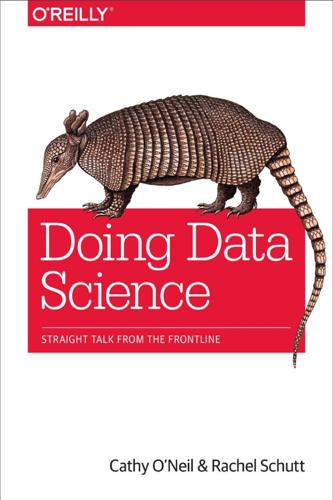
Doing Data Science: Straight Talk From the Frontline
by
Cathy O'Neil
and
Rachel Schutt
Published 8 Oct 2013
But when we merely browse the Web, we are unintentionally, or at least passively, being datafied through cookies that we might or might not be aware of. And when we walk around in a store, or even on the street, we are being datafied in a completely unintentional way, via sensors, cameras, or Google glasses. This spectrum of intentionality ranges from us gleefully taking part in a social media experiment we are proud of, to all-out surveillance and stalking. But it’s all datafication. Our intentions may run the gamut, but the results don’t. They follow up their definition in the article with a line that speaks volumes about their perspective: Once we datafy things, we can transform their purpose and turn the information into new forms of value.
…
goodness, Research Experiment (Observational Medical Outcomes Partnership) Google, Big Data and Data Science Hype, Getting Past the Hype, Getting Past the Hype, Datafication, Populations and Samples of Big Data, Machine Learning Algorithms, Evaluation, David Huffaker: Google’s Hybrid Approach to Social Research Bell Labs and, Exploratory Data Analysis experimental infrastructures, A/B Tests issues with, Feature Selection machine learning and, Machine Learning Algorithms MapReduce and, Data Engineering: MapReduce, Pregel, and Hadoop mixed-method approaches and, Moving from Descriptive to Predictive privacy and, Privacy sampling and, Populations and Samples of Big Data skills for, The Current Landscape (with a Little History) social layer at, Social at Google social research, approach to, David Huffaker: Google’s Hybrid Approach to Social Research–Thought Experiment: What Is the Best Way to Decrease Concern and Increase Understanding and Control? text-mining models and, Thought Experiment: Meta-Definition Google glasses, Datafication Google+, The Data Science Process, David Huffaker: Google’s Hybrid Approach to Social Research, Moving from Descriptive to Predictive, Social Networks and Data Journalism graph statistics, A Second Example of Random Graphs: The Exponential Random Graph Model graph theory, Social Network Analysis grouping data, k-means groups, Terminology from Social Networks Guyon, Isabelle, Example: User Retention, Filters H Hadoop, Populations and Samples of Big Data, Economic Interlude: Hadoop–Cloudera analytical applications, So How to Get Started with Hadoop?

New Laws of Robotics: Defending Human Expertise in the Age of AI
by
Frank Pasquale
Published 14 May 2020
A socialite may call his interior designer, worried that the print they chose for the living room is too brash. A trainer may vacillate, worried that her client is too exhausted to run another minute on a treadmill. In each of these cases, communication is key, as are the human-to-human skills of patience, deliberation, and discernment.14 Yes, if thousands of trainers equipped themselves with Google Glass and recorded all their encounters, perhaps some divine database of grimaces and rolled eyes, injuries, and triumphs could dictate the optimal response to a miserable gym goer. But even to begin imagining how to construct such a database—what gets marked as a good or bad outcome, and to what extent—is to understand the critical role people will play in constructing and maintaining a plausible future of AI and robotics.
…
But the overall effects of facial recognition need to be addressed too, as legal scholar Woodrow Hartzog and philosopher Evan Selinger repeatedly warn in their interventions calling for bans on the technology.22 Futurist police consultants want to match most-wanted lists to universal closed-circuit TV cameras to nab roaming felons. Do we really want to enhance the ability of corporations and the police to match every face to a name—and an algorithmically generated, often secret, record?23 It may be that facial recognition deserves the same reflexive “no” that greeted Google Glass. Google marketed the camera glasses as an easy way to augment reality, recognize acquaintances, and map unfamiliar spaces. But many of those caught in the gaze of Glass wearers found the camera glasses menacing. Awkward questions arose about Glass etiquette around urinals and bathrooms. As the technology failed to catch on, critics savaged its early adopters, calling them “Glassholes.”

Surviving AI: The Promise and Peril of Artificial Intelligence
by
Calum Chace
Published 28 Jul 2015
If you were around for the launch of the first mobile phones you will remember they were a bit of a joke: the size of a brick and the weight of a small suitcase, they were ridiculed as the expensive playthings of pretentious yuppies. Now almost everyone in the developed world has a smartphone. Similar ridicule attended the launch of Siri and Google Glass, but contrary to popular opinion, they are emphatically not failures. They are simply the first, tentative outings of technologies which will soon revolutionise our lives. Less fuss has so far been made about another extraordinary innovation: an app called Crystal trawls the internet for anything written by a person of interest to you and helps you draft your communication with them.

The Fourth Industrial Revolution
by
Klaus Schwab
Published 11 Jan 2016
Figure I: Active Users of Social Media sites compared with the populations of the world’s largest countries Source: http://mccrindle.com.au/the-mccrindle-blog/social-media-and-narcissism Shift 3: Vision as the New Interface The tipping point: 10% of reading glasses connected to the internet By 2025: 86% of respondents expected this tipping point will have occurred Google Glass is just the first of many potential ways in which glasses, eyewear/headsets and eye-tracking devices can become “intelligent” and lead to eyes and vision being the connection to the internet and connected devices. With direct access to internet applications and data through vision, an individual’s experiences can be enhanced, mediated or completely augmented to provide different, immersive reality.

Work Rules!: Insights From Inside Google That Will Transform How You Live and Lead
by
Laszlo Bock
Published 31 Mar 2015
Chrome, launched as a safer, faster, and open-source Web browser in 2008, has over 750 million active users and has grown into an operating system powering “Chromebook” laptops.10 And Google is just beginning to explore what is possible, from self-driving cars to Project Loon, which aims to provide Internet access by balloon to the hardest-to-reach parts of the globe. From wearable computing products like Google Glass, which blends the Web and the world in a tiny lens that sits above your right eye (we’re working on a version for lefties), to the Google Smart Contact Lens, a contact lens that doubles as a blood glucose monitor for people with diabetes. Each year, tens of thousands of visitors come to our campuses around the world.
…
Excite passed.iii This was before Google’s first advertising system, AdWords, was launched in 2000, before Google Groups (2001), Images (2001), Books (2003), Gmail (2004), Apps (spreadsheets and documents for businesses, 2006), Street View (2007), and dozens of other products we use every day. It was before Google Search was available in over 150 languages, and before we opened our first international office in Tokyo (2001). And way before your Android phone could buzz you in advance if your flight was delayed, or you could say to the Google Glass on your eyeglass frame, “Okay, Glass, take a picture and send it to Chris,” and know Chris will get to see through your eyes. Larry and Sergey had ambitions beyond developing a great search engine. They started out knowing how they wanted people to be treated. Quixotic as it sounds, they both wanted to create a company where work was meaningful, employees felt free to pursue their passions, and people and their families were cared for.

What to Think About Machines That Think: Today's Leading Thinkers on the Age of Machine Intelligence
by
John Brockman
Published 5 Oct 2015
It’s as if we all had evolved in a forest where the animals could see only in black and white, and then a new predator came along who could see in color. All of a sudden, half your camouflage wouldn’t work, and you wouldn’t know which half! At present, this is great if you’re an advertiser, as you can figure out how to waste less money. It isn’t yet available on the street. But the police are working on it; which cop wouldn’t want a Google Glass app that highlights those passersby who have a history of violence—perhaps coupled with W-band radar to see which of them is carrying a weapon? The next question is whether only the authorities will have enhanced cognition systems or if they’ll be available to all. In twenty years’ time, will we all be wearing augmented-reality goggles?
…
If a policeman can see my arrest record when he looks at me, can I see whether he’s been the subject of brutality complaints? If a politician can see whether I’m a party supporter or an independent, can I see his voting record on the three issues I care about? Never mind the right to bear arms; what about the right to wear Google Glass? Perception and cognition will no longer be conducted inside an individual’s head. Just as we now use Google and the Internet as memory prostheses, we’ll be using AI systems that draw on millions of machines and sensors as perceptual prostheses. But can we trust them? Deception will no longer be something that only individual humans do to one another.

User Friendly: How the Hidden Rules of Design Are Changing the Way We Live, Work & Play
by
Cliff Kuang
and
Robert Fabricant
Published 7 Nov 2019
In other words, the success of our work was not to be found in the beauty of the result, but rather in observing how it fit into and supported people’s actual behavior.1 That lesson, though perhaps obvious to you after having read this book, nonetheless goes unheeded quite often. Consider, for example, the spectacular failure of Google Glass, despite its being backed by a brilliant team of designers and engineers. I am fond of telling new designers on my team that “behavior is our medium,” not products or technologies. This idea couldn’t be more different from where I started, fiddling with fonts and colors (which wasn’t my greatest talent anyway) and building user interfaces.
…
That process—understanding user needs, prototyping solutions for them, then iterating upon feedback—would soon be adopted by other governments, including those of Finland, France, New York City, and Spain. 2013: HER, Spike Jonze Both a love story and a cautionary tale for how user-friendly technology might become embedded in our emotional lives, Her portrays a future in which computers have blended into the world around us, becoming both invisible and ubiquitous. 2013: DISNEY MAGICBAND/MYMAGIC+, John Padgett, Frog Design Disney’s MagicBand system augured a future in which the physical world would respond to our needs before we were even aware of them. The system was meant to be magical, eliminating the regular friction of daily life—keys, checkouts, lines—and in so doing, fulfill the expectations of a new generation weaned on smartphones. 2013: GOOGLE GLASS, Google Google, in a rush to bring augmented reality to market, failed to consider the embarrassment of wearing a computer wrapped around your face. Though its features were wonky, slow, and limited, the project of creating a digital overlay to the real world continues apace, in efforts such as Instagram’s face filters and Google Lens, which allows your smartphone camera to conduct information searches overlaid upon the real world. 2014: ALEXA, Amazon Quietly launched in 2014, Amazon’s smart speaker was a surprise consumer hit, quickly selling millions of devices and sparking a race among technology giants to make new conversational interfaces.
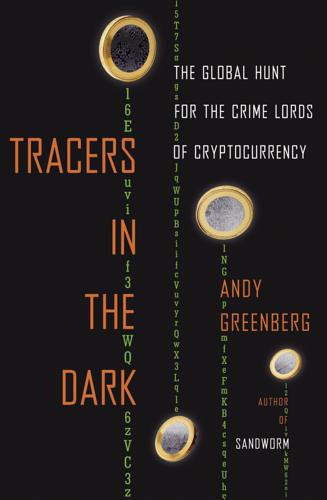
Tracers in the Dark: The Global Hunt for the Crime Lords of Cryptocurrency
by
Andy Greenberg
Published 15 Nov 2022
In 2014, not long after launching Helix, Harmon had taken a picture—perhaps accidentally—of the view of his work space with his Google Glass augmented reality headset, and then uploaded it to his Google Photos account. The photo showed his computer screen. He was logged in to Helix’s administrator control panel. In February 2020, IRS-CI raided Harmon’s properties and seized 4,400 bitcoins—worth more than $130 million at today’s exchange rates—as well as his mansion in Akron, a second home in Belize, and his Tesla. When Price arrested Harmon in his house in Ohio, he says Harmon initially denied knowing anything about Helix. Price says he showed Harmon his own Google Glass photo of the Helix admin page.
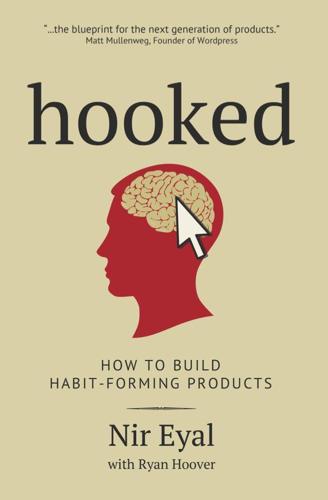
Hooked: How to Build Habit-Forming Products
by
Nir Eyal
Published 26 Dec 2013
Likewise, the fast ascent of mobile devices, including tablets, has spawned a new revolution in interface changes—and a new generation of start-up products and services designed around mobile user needs and behaviors. To uncover where interfaces are changing, Paul Buchheit, a partner at Y Combinator, encourages entrepreneurs to “live in the future.”10 A profusion of interface changes are just a few years away. Wearable technologies like Google Glass, the Oculus Rift virtual reality goggles, and the Pebble smartwatch promise to change how users interact with the real and digital worlds. By looking forward to anticipate where interfaces will change, the enterprising designer can uncover new ways to form user habits. REMEMBER & SHARE The Hook Model helps the product designer generate an initial prototype for a habit-forming technology.

The Future of the Professions: How Technology Will Transform the Work of Human Experts
by
Richard Susskind
and
Daniel Susskind
Published 24 Aug 2015
Thus, we might have jackets that give their owners small hugs when someone ‘likes’ their Facebook posts,78 or shirts that can measure distance, calories, heart rate, and send data to their wearers’ hand-held devices.79 Internet-enabled watches with graphical user interfaces have been launched, while simpler fitness bracelets with sensors to monitor physical activity are commonplace. For the intrepid, there are ski-goggles that not only protect against the elements but come with a built-in ‘accelerometer, a gyroscope, GPS, and Bluetooth’.80 In the same spirit are optical head-mounted displays, embedded in spectacles, such as Google Glass.81 Why, though, stop at spectacles? Work is afoot on technology that projects directly onto the retina of the eye (the users see objects suspended in the space ahead of them).82 Retinal display hints at yet another kind of embeddedness, one that hit home for us at a recent conference. An octogenarian approached us after a lecture and confided with pleasure, ‘I am now connected to the Internet’.
…
This suggests that less than 5% of adults are out of reach of the Internet today, which is a smaller percentage than is often presumed. 76 Rose, Enchanted Objects, Adrian McEwen and Hakim Cassimally, Designing the Internet of Things (2014), Daniel Kellmereit and Daniel Obodovski, The Silent Intelligence (2013), and Michael Porter and James Heppelman, ‘How Smart, Connected Products are Transforming Competition’, Harvard Business Review (Nov. 2014), 63–104. 77 Rose, Enchanted Objects, and Porter and Heppelman, ‘How Smart, Connected Products are Transforming Competition’, 76. 78 Rose, Enchanted Objects, 50. 79 Porter and Heppelman, ‘How Smart, Connected Products are Transforming Competition’, Harvard Business Review, 81. 80 Rose, Enchanted Objects, 27. 81 On 15 January 2015 Google announced that it was to stop producing Google Glass as a prototype but that they are still committed to its further development. 82 See e.g. <http://www.magicleap.com>. 83 Marco Iansiti and Karim Lakhani, ‘Digital Ubiquity’, Harvard Business Review (Nov. 2014), 91–9. 84 Gil Press, ‘Internet of Things By The Numbers: Market Estimates and Forecasts’, Forbes, 22 Aug. 2014, and ‘More than 50 Billion Connected Devices’, Ericsson White Paper, Feb. 2011 at <http://www.akos-rs.si/files/Telekomunikacije/Digitalna_agenda/Internetni_protokol_Ipv6/More-than-50-billion-connected-devices.pdf> (accessed 23 March 2015). 85 Discussed in Richard Susskind, The End of Lawyers?
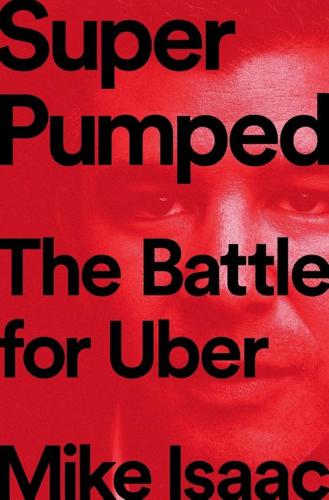
Super Pumped: The Battle for Uber
by
Mike Isaac
Published 2 Sep 2019
The press covered it as the coup it was; with one of Larry Page’s protégés at the helm, Uber was suddenly ready to challenge Google in the race for self-driving cars. “The golden time is over,” Kalanick said in a meeting with a top engineering manager, discussing the deal. “It is war time.” Forty miles south at Google’s campus, executives woke up to news of the acquisition. They were furious. Chapter 18 notes ¶¶¶¶¶ See: Google Glass, the thousand-dollar face computer that flopped magnificently after Google realized it had created a legion of “Glassholes”—people who used the technology to take photos of unsuspecting others. The project didn’t last very long, but ate up hundreds of millions of dollars before it was shuttered.
…
See also Jay-Z Casino Royale, 44 The Castro, 47–48 CBS, 131 Chai, Nelson, 332 Chengdu, China, 142, 146 Cheng Wei, 141–42 Cherry, 188 Chicago, Illinois, 55, 83, 84, 165, 204, 292 China, 122, 140–52, 153–55, 187, 202, 211, 245, 257, 258, 312 Christensen, Clayton, 75 Citi Bike, 134 Clark, Craig, 258, 259 Clinton, Hillary, campaign of, 200, 201 CNBC, 273 CNN, 273, 303 Coca-Cola, 189–90 Code Conference, 176, 177, 178, 179, 180 Code.org, 92n Cohler, Matt, 283, 293–95, 296–305, 313, 315, 324–25 COIN program, 166, 178, 257, 259 Colorado, 115 Communication Workers Union, 204 Communist Party, 141, 204 Compaq, 67 Congress, 200 Cook, Tim, 154, 157, 158, 162, 163–64, 264 Cooley, 289 Costolo, Dick, 140 Coulter, Jim, 277–78 Course, David, 67 Covington & Burling, 224 Covington & Burling, 260, 269–70, 271, 310 Craig, Daniel, 44 Craigslist, 28 the Creamery, 4, 42 Creative Artists Agency (CAA), 23, 189 Credit Suisse First Boston, 67 CrowdFlower, 46 Cuban, Mark, 31 Cue, Eddy, 157–58, 159, 160–62, 163, 245 Cupertino, California, 158, 160, 161 Curb, 113 DARPA Robotics Challenge, 107 Darwins, 163, 163n Davos, Switzerland, 31 De Blasio, Bill, 116, 116n, 117 Dehli, India, 261 #deleteUber campaign, 208–10, 254 Dell, Michael, 67 Demeter, Steve, 39 Department of Defense, 107 Deutsche Bank, 69 Diaz, Cameron, 98 DiCaprio, Leonardo, 193 Dickenson, Texas, 66 DiDi, 141–42, 146, 147–52, 187, 202, 257, 258 Didi Chuxing, 141–42 Didi Dache, 122, 122n, 142 Diller, Barry, 307–8, 320, 333 Doerr, John, 35–37, 38, 39, 40, 201 DogVacay, 65 Dole, Bob, 229 DoorDash, 9 Dorsey, Jack, 202 Dropbox, 6 Drummond, David, 99, 100, 105, 106, 158, 176, 178–79, 180 eBay, 27, 43, 65, 169–71, 312 Einstein, Albert, 54 Eisner, Michael, 23 Ellison, Larry, 67 Elysian Hotel, 165 Encore Las Vegas, 7 England, Erich, xv–xvii, 243–44 Ericsson, 44 Expedia.com, 319, 320, 322, 327–28, 331 Expensify, 46 Facebook, 9–10, 21–22, 56, 74, 92n, 93, 113, 171, 174, 189, 333 copies Snapchat’s core feature, 235 dual-class structure and, 77 ex-Uber employees at, 224 IPO of, 5, 97 politics and, 200–201 reliance on advertising, 154 Sidecar and, 86 SREs at, 215 Uber recruits from, 4 women employees at, 226 Fandango, 92 Fannie Mae, 33 FBI, 171 Federal Reserve Bank, 27, 33, 34 Fenton, Peter, 283, 293–305 Fidelity Investments, 97, 297n, 300 First Round Capital, 57, 288, 288n, 289, 293, 326 Flipboard, 92n Foreign Corrupt Practices Act, 260 Forstall, Scott, 38 Formspring, 46 Fortune magazine, 127–28 Four Seasons Hotel, 105, 265 Foursqure, 55 Fowler, Susan J., 196, 199, 213–22, 223–26, 235, 241–42, 254, 285 Fox News, 204 Freddie Mac, 33 Freitas, Ryan, 28 Fucked Company, 28, 31 FuncoLand, 39 Gallagher, Leigh, 127–28 Gap Inc., 189 Gates, Bill, 37, 67 Gawker, 205 Geidt, Austin, 13, 60–62, 63, 82, 86, 192–93 General Electric, 314, 319 Gicinto, Nick, 257 Gingrich, Newt, 229 Giron, Joe, 156 Glade Brook Capital Partners, 300 Gladwell, Malcolm, 126 Go-Jek, 187 Gold Club, 192 Goldman Sachs, 69, 93, 100, 132 Gomez, Henry, 313 Google, 4–6, 9, 31, 36, 96–99, 99n, 147, 158, 172, 195 as advertising company, 154 “Don’t be evil” mantra of, 76–77, 76n Google Capital, 100 Google Glass, 177n Google Maps, 107, 148 Googleplex, 105, 107, 181 Google Ventures, 98–101, 99n, 105–7, 157, 202, 283, 326 Google X, 105–6, 109–10 Gulfstream V, 178 headquarters of, 105 HR and employees of, 224–26, 333 IPO of, 76–77 self-driving cars and, 105–10, 176–77, 180, 232–35, 233–36 Trump’s election and, 199–200 Gore-Coty, Pierre-Dimitry, 309 GQ magazine, 119, 120, 221 Grab, 148, 150, 187, 258, 259–60, 333 Graf, Daniel, 237, 309 Gramercy Park Hotel, 127, 130 Graves, Molly, 56 Graves, Ryan, 13, 63, 82, 124, 135, 165, 191, 309, 312–13, 321, 324, 341 allegiance to Kalanick, 97, 270–72, 287–88, 299, 301 background of, 54–55 Lyft and, 86 selected to be Uber’s first CEO, 55–59 on Uber’s board, 79–80 Great Recession, 33–34, 132 Green, Logan, 85, 86, 120, 186, 187, 188, 189 Greyball, xvii, xviii, 242–53, 254 Greylock Partners, 74 Groupon, 77 Grubhub, 65 Guadalajara, Mexico, 172–74 Guetta, David, 7 Gurgaon, India, 149–50 Gurley, John, 66 Gurley, John William “Bill,” 14, 69n, 187, 202, 255, 264n, 270, 272, 274, 276, 279, 288n after showdown, 308–10 annoyance with Kalanick, 122–26 attempts to find Kalanick’s replacement and, 314–16, 321 blogging by, 125 confers with spurned investors, 288–89 connects Kalanick and Michael, 93–94 desire for proper corporate governance, 332, 334–35 fundraising and, 92 Grand Bargain and, 326–27, 331 investment talent of, 64–71, 78–80 plan to force Kalanick’s hand, 289–91, 292–306, 292n at SXSW, 125–26 the syndicate and, 282–86, 303–4 on Uber’s board, 79–80 wishes Kalanick well, 299 Gurley, Lucia, 66 Gutmann, Amy, 214–15 H&R Block, 249 Hacker News, 156, 159 Hales, Charlie, xii, xiii Harford, Barney, 331, 331n Harvey, Kevin, 70 Hayes, Rob, 57, 63, 78, 288, 288n, 293 Hazelbaker, Jill, 225, 237, 239, 240 “Heaven,” 156, 259 Heidrick & Struggles, 312–13, 324 “Hell,” 257 Henley, Mat, 178, 259 Hewlett-Packard, 144, 312, 313, 314, 323 Highway 101, 28 Holden, Jeff, 120 Holder, Eric, 224, 225–26, 254, 260, 266, 275, 283 Holder Report, 254, 266, 269–81, 283, 296, 299, 341 Holiday Inn, 265, 266 Hollywood, 9, 24 Holt, Rachel, 237, 309, 331 Holzwarth, Gabi, 179–80, 193, 194, 230, 249–53 “the Homeshow,” 95 Hornsey, Liane, 226, 256 Hourdajian, Nairi, 126–28, 130–131 Houston, Texas, 66 Huffington, Arianna, 127, 238, 256, 287, 289, 301–5, 307, 325 continued support for Kalanick, 270–74 joins board of directors, 226–30 joins Kalanick after his mother’s death, 264–65 release of Holder Report and, 276–80 Huffington, Michael, 228–29 Huffington Post, 229 Hummer Winblad Venture Partners, 65, 70 Hyderabad, India, 149 Ibiza, Spain, 193 ICE, 206 Illinois, 113 IMEI, 154–55, 157 Immelt, Jeff, 313–14, 319, 320–22, 323, 324 InAuth, Inc., 155, 156–57 India, 148–50, 166–67, 187, 203, 257, 259 rape scandal in, 166, 261, 262, 285, 337 taxis and, 148–49 Indonesia, 259–60 The Information, 253 Instacart, 9 Instagram, 9, 74, 96–97, 200, 235 Intel, 35, 193n InterActiveCorp, 307, 320, 333 Internet Explorer, 69 iOS software, 154–55, 157, 159, 162 iPhone, 36–39, 44, 58, 59, 154–55, 157, 160, 163, 176, 218 iPod, 35 Iran, 320 iRide, 113 Isaac, Mike, 127n, 241, 279–80, 280n, 295, 296, 305–6, 339–40 iTunes, 35, 37 Ive, Jonathan, 38 Jacobin, 205, 207 the JamPad, 47–48, 49 Janklow, Mort, 230 Jay-Z, 7–8, 54, 194 Jeopardy!
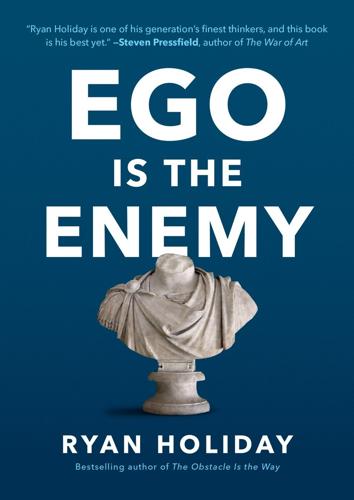
Ego Is the Enemy
by
Ryan Holiday
Published 13 Jun 2016
From that place, we might think that success in the future is just the natural next part of the story—when really it’s rooted in work, creativity, persistence, and luck. Certainly Google’s alienation from its own roots (confusing vision and potential with scientific and technological prowess) will cause it to stumble soon enough. It fact, the public failures of projects like Google Glass and Google Plus might be evidence of it already. They’re not alone. Too often, artists who think it was “inspiration” or “pain” that fueled their art and create an image around that—instead of hard work and sincere hustle—will eventually find themselves at the bottom of a bottle or on the wrong end of a needle.

Science...For Her!
by
Megan Amram
Published 4 Nov 2014
New Year’s Resolutions for Year 3014 * * * Lose fifteen pounds from your problem areas (hips, space-boobs, vestigial face) Spend more time with your government-rationed .452 of a son or daughter Take the family on a trip to www.nature.com Volunteer at your local chapter of the White People Remembrance League (white people have been extinct since 2021; you are an exotic mixture of brown and Asian and Google Glass) Pray to the Mother Goddess Zooey Deschanel, who first displayed her omnipotent god powers at the 2016 People’s Choice Awards by raising Eleanor Roosevelt from the dead and giving her bangs Learn moon-French Vote for Zooey Deschanel in the 3012 People’s Choice Awards as “Best Deity,” “Only Deity,” and “˜*˜Kewlest˜* Bangs” Buy a new Moon Bounce (here on the moon we just call them “Bounces”) Get promoted from “slave to Zooey Deschanel” to “human sacrifice to Zooey Deschanel” (lateral promotion) Organize your thirty-seven space-boobs by type (normal, brown, formal, or Chicago style) I just want to apologize quickly.

Machine Translation
by
Thierry Poibeau
Published 14 Sep 2017
At the moment, it is just a prototype whose quality and robustness have not been tested, but these examples illustrate the range of applications that exist for both text and speech. Today these gadgets seem to suffer from a lack of interest from the general public, as a result of their high price and their uncertain positioning in terms of applications (Google Glass generated massive media coverage, only to be pulled from the market due to lack of commercial interest). The future of these objects is without a doubt more promising in professional contexts requiring people to work hands-free, for maintenance in particular (such as in the nuclear, aeronautic, and computer science fields).
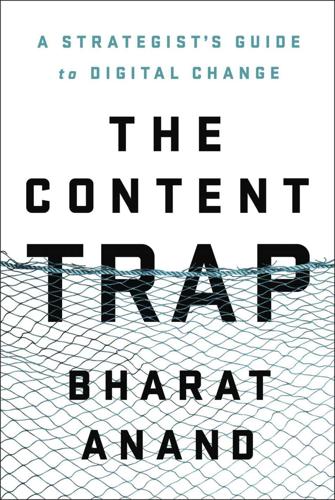
The Content Trap: A Strategist's Guide to Digital Change
by
Bharat Anand
Published 17 Oct 2016
He specialized in artificial intelligence (AI) and in far-out projects that Google later called “moon shots.” Like many Stanford computer scientists, he was closely involved with Valley start-ups—in his case, Google. Thrun had advised Google since 2007, led its program to develop a driverless car, and started Google X, the lab that developed Google Glass. In 2010 Thrun was about to teach the AI course he offered every fall. But this time he also recorded his lectures and put them online. That would certainly benefit any of his Stanford students who missed a lecture or two. But his real motivation was to make his teaching available to anyone who was interested but would never set foot on Stanford’s campus.
…
a $3 million trial “Khan Academy Resources for Maximizing Mathematics Achievement: A Postsecondary Mathematics Efficacy Study,” Institute of Education Sciences, last modified 2014, accessed March 10, 2016, http://ies.ed.gov/funding/grantsearch/details.asp?ID=1521 . Thrun had been a computer science professor Steven Leckart, “The Stanford Education Experiment Could Change Higher Learning Forever,” Wired , March 20, 2012. Google Glass Max Chafkin, “Udacity’s Sebastian Thrun, Godfather of Free Online Education, Changes Course,” Fast Company , November 14, 2013. “It was this catalytic moment” Ibid. at 411 Ibid.; William J. Bennett, “Is Sebastian Thrun’s Udacity the Future of Higher Education?,” CNN , last modified July 5, 2012, accessed March 10, 2016, http://www.cnn.com/2012/07/05/opinion/bennett-udacity-education/ .
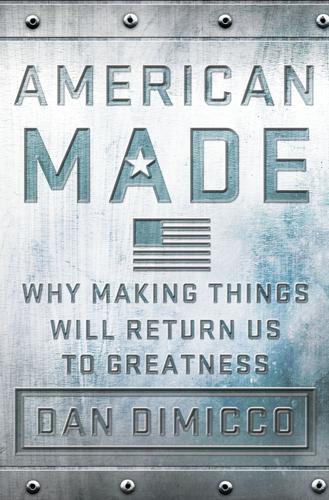
American Made: Why Making Things Will Return Us to Greatness
by
Dan Dimicco
Published 3 Mar 2015
But if you want to encourage people to go into business and you think that government’s got all the answers, you risk distorting the system from the get-go. Any business worth getting into—large or small—should be worth getting into without government subsidizing it. Signs of a Renaissance Why are some U.S. companies choosing to come back to America? In March 2013, Google announced it would manufacture its highly anticipated Google Glass in California, though continue to source the device’s parts from Asia. Google didn’t decide to build the wearable computer because of any subsidies the federal or state government may be offering. There are none. Google, like other companies, is coming home because they can better control their intellectual property, and because the revolution in energy is improving America’s comparative advantage.
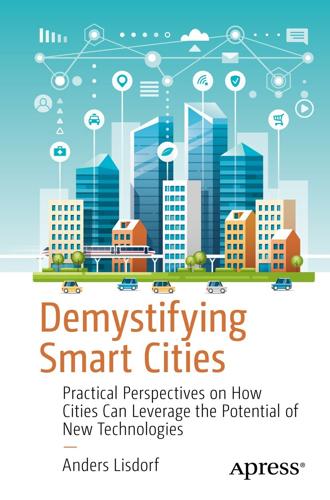
Demystifying Smart Cities
by
Anders Lisdorf
No matter how much we prepare, we can never know exactly how the system will behave at scale until we release it in the wild. For a class of systems that are critical for a city, this risk is unacceptable. The unpredictable human element – With technology in general, it is always unpredictable how people will respond to the solution. Think back on the Google Glass story where Google was completely taken off guard that people could think anything negative about their new and innovative gadget. With artificial intelligence, this unpredictability is exacerbated since the technological solution now has human qualities to it. Some will start relating to it and expecting human and superhuman performance; others will feel uneasy.
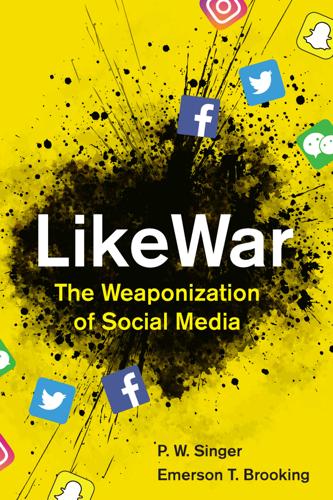
Likewar: The Weaponization of Social Media
by
Peter Warren Singer
and
Emerson T. Brooking
Published 15 Mar 2018
,” National Oceanic and Atmospheric Administration, accessed August 19, 2014, http://oceanservice.noaa.gov/facts/eez.html. 6 “as designated by the Mariana Trench”: Dan Vergano, “Bush to Make Pacific’s Mariana Trench a National Monument,” USA Today, January 6, 2009, accessed March 14, 2013, http://usatoday30.usatoday.com/tech/science/environment/2009-01-05-mariana-trench_N.htm. 7 “drop a Remora”: “Remora—Fast Reconnaissance AUV,” L-3 Ocean Systems, accessed August 16, 2014, http://www.l-3mps.com/oceansystems/remora.aspx. 8 viz glasses: Chris Smith, “2020 Vision: The Future of Google Glass,” TechRadar, October 19, 2013, accessed February 22, 2014, http://www.techradar.com/us/news/world-of-tech/2020-vision-the-future-of-google-glass-1190832. 9 “stuck in the Ghost Fleet”: “National Defense Reserve Fleet,” U.S. Department of Transportation Maritime Administration, accessed August 16, 2014, http://www.marad.dot.gov/ships_shipping_landing_page/national_security/ship_operations/national_defense_reserve_fleet/national_defense_reserve_fleet.htm. 10 Aegis cruiser: “The U.S.
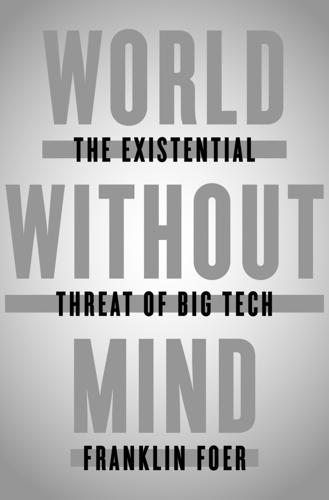
World Without Mind: The Existential Threat of Big Tech
by
Franklin Foer
Published 31 Aug 2017
They want to wake us in the morning, have their artificial intelligence software guide us through the day, and never quite leave our sides. They aspire to become the repository for precious and private items, our calendar and contacts, our photos and documents. They intend for us to unthinkingly turn to them for information and entertainment, while they build unabridged catalogs of our intentions and aversions. Google Glass and the Apple Watch prefigure the day when these companies implant their artificial intelligence within our bodies. More than any previous coterie of corporations, the tech monopolies aspire to mold humanity into their desired image of it. They believe that they have the opportunity to complete the long merger between man and machine—to redirect the trajectory of human evolution.

PostgreSQL Cookbook
by
Chitij Chauhan
Published 30 Jan 2015
Sergio Martínez-Losa Del Rincón is a computer engineer who loves programming languages since the time he was in high school, where he learned about programming and computer interactions. He is always learning and discovers something new to learn everyday. He likes all kind of programming languages, but he focuses his efforts on mobile development with native languages, such as Objective-C (iPhone), Java (Android), and Xamarin (C#). He builds Google Glass applications as well as mobile applications for iPhone and Android devices at work. He also develops games for mobile devices with cocos2d-x and cocos2d. He likes cross-platform applications as well. He has reviewed Learning Xamarin Studio, Packt Publishing. He loves challenging problems, and he is always keen to work with new technologies.
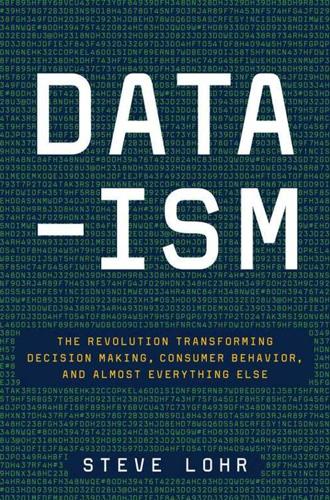
Data-Ism: The Revolution Transforming Decision Making, Consumer Behavior, and Almost Everything Else
by
Steve Lohr
Published 10 Mar 2015
Predix is intended as an intelligent assistant that sifts through data on a particular machine to, say, alert a plant engineer that a gas turbine needs preventive maintenance—a heads-up prediction that the turbine is heading for a breakdown. It is the industrial machinery equivalent to Google Now, a predictive search service for mobile devices, including Google glasses, that presents driving directions, recommendations for nearby restaurants, sports scores for teams you follow, based on your location, your interests, and what you’ve done in the past—the context of your life. GE wants to push contextual computing in the machine world to another dimension. Most of the current focus has been on gathering data from machines to learn about them—to reduce lost operating time by applying data-driven preventive maintenance.

Silicon City: San Francisco in the Long Shadow of the Valley
by
Cary McClelland
Published 8 Oct 2018
But it is hard to regenerate your workforce under these conditions. If the working class can’t live within reach of their jobs. If young people cannot afford to put down roots. We are destroying the basis of our prosperity. We are eating our children. ALEX KAUFFMANN He runs an experimental design team at Google, where he helped build Google Glass and invent Cardboard, Google’s low-fi virtual reality player. In his spare time, he tinkers around, learning how to cook exotic foods from scratch and experimenting with human-to-dolphin communication. We drink free coffee from the Google cafeteria. I just wanted to learn how to do something with my hands.

Come and Take It: The Gun Printer's Guide to Thinking Free
by
Cody Wilson
Published 10 Oct 2016
I think we need to back this guy.” * * * I was invited to a tech meet-up in a misty din downtown. There I met a young, well-dressed economic minister from the Netherlands. “What do you do?” “Bitcoin,” I answered. “I have a bitcoin project.” Tonight’s was a series of timed demonstrations of Google Glass. The first players—contestants?—on the stage showed real-time social networking. You walk into the bar wearing the glasses and scan the crowd, finding thumbnail profiles of interest, potential romantic matches. They broke down the tech quickly. After a couple more presentations came an awkward wunderkind.

How Emotions Are Made: The New Science of the Mind and Brain
by
Lisa Feldman Barrett
Published 6 Mar 2017
And we are all the poorer for it, considering how much time and money are being wasted today in pursuit of illusory emotion essences. At press time, Microsoft is analyzing facial photographs in an attempt to recognize emotion. Apple has recently purchased Emotient, a startup company using artificial intelligence techniques in an effort to detect emotion in facial expressions. Companies are programming Google Glass ostensibly to detect emotion in facial expressions in an effort to help autistic children. Politicians in Spain and Mexico are engaging in so-called neuropolitics to discern voter preferences from their facial expressions. Some of the most pressing questions about emotion remain unanswered, and important questions remain obscured, because many businesses and scientists continue practicing essentialism while the rest of us are figuring out how emotions are made.38 It’s hard to give up the classical view when it represents deeply held beliefs about what it means to be human.
…
See facial electromyography fear amygdala and, 17, 20, 21 variety of facial expression for, 10–11, 369 n33 fear learning, 17, 271–72, 273, 274–75, 384 nn20–21 Federal Bureau of Investigation (FBI), xii feeling affect, 72–77 origin of, 56 simulation, 71 feelings, universal, 56 Fernández-Dols, José-Miguel, 52 financial crises, 80–81 fingerprints, emotion, xv, 35–36 bodily states, 12–15 brain and, 16–22 facial expression, 5, 7, 11 measuring emotion, 3–4 search for, 16–22, 160 Finlay, Barbara L., 81 Firestein, Stuart, 284, 286, 290 First Amendment, 250–51 flowers and weeds, 131–32 fMRI (functional magnetic resonance imaging), 19–20, 369 n37 folk psychology, 133 food body budgeting, 217–18 cultural differences, 27 simulation, 29 forced choice, 44, 45, 52 Fore tribe, 53 foreseeability argument, 250 free labeling, 45, 45, 46, 46, 48, 50, 52 free speech, 250–51 free will, illusion of, 60 Freud, Sigmund, 169 Friesen, Wallace V., 12 Fugate, Jennifer, 102 functional magnetic resonance imaging (fMRI), 19–20, 369 n37 G Gates, Henry Louis, Jr., 235 gay marriage, 228 Gelman, Susan A., 97 gender stereotypes, 226–28, 246 Gendron, Maria, 48 genes, 23, 111, 143, 154–56, 170, 288–89, 385–86 n7 gestures, 51 getting along vs. getting ahead, 144, 280, 283, 315 gezellig, 38, 105 Gilbert, Daniel T., 315 giving and body budgeting, 179 goal-based categories, 98–99 goal-based concepts, 90–92, 91, 258, 262, 263 goals, and learning emotion concepts, 101 Goleman, Daniel, 81, 179–80 Google Glass, 173 Gopnik, Alison, 113 Grandin, Temple, 215 gratitude, 179 Greene, Joshua, 169 grief, 269–70 “gross foods” birthday party, 27 guinea pigs, 254 Gulf War, xiv, 54 Gulf War Syndrome, 242 gut feelings, 75, 377 n44 H Hadza, 53 hallucinations, 26 happiness, perception of, 51 harm, emotional, 240–43, 250–51 Harris, Paul, 149 Haytham, Ibn al-, 169 health anxiety, 212–14 autism, 215–16 body budget and, 198, 216 chronic pain, 190, 207–9, 241–42, 393 n21, 395 n39 depression, 78, 209–12, 213–14 emotion concepts, 198 emotional granularity, 181, 203 illness, 199, 200–203, 216 lifestyle, 176–86 pain, 190, 205–9, 241-42, 392 n16, 393 nn21–24 stress, 203–5 heat-of-passion defense, 221–22, 225, 226 Heider, Fritz, 272 Heider-Simmel video, 272, 272 helicopter example, 76 Hendler, Talma, 318 Heraclitus, 32, 168–69 Higashida, Naoki, 215–16 Himba, 47–50, 53, 372 n14, 373 n17, 384 n24 Hjortsjö, Carl-Herman, 367 n11 holism, 37–38 Holmes, James, 240 homo economicus, 80–81 Hox genes, 371 n15 hubs in the brain, 124–25 human nature, 152, 157, 164–70, 220, 244, 248, 276 humanity, and legal system, 240 I idea.
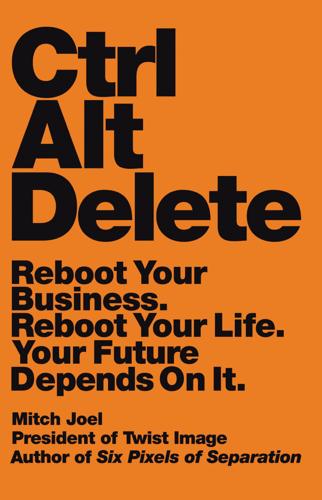
Ctrl Alt Delete: Reboot Your Business. Reboot Your Life. Your Future Depends on It.
by
Mitch Joel
Published 20 May 2013
Instagram started out as a very derivative copy of foursquare before switching its focus to mobile photos with a social edge. Google continues to fascinate as the search engine expands into areas like online video (YouTube), mobile (Android and the Nexus line of devices), email services (Gmail), Web browsers (Google Chrome), online social networking (Google+), and beyond (self-driving cars and Google Glasses). Amazon continues to squiggle by pushing beyond selling books online into e-readers (Kindle), selling shoes (Zappos), offering cloud computing technology (Amazon Web Services), and beyond. When you actually start digging down deep into how these companies have evolved and stayed relevant, you won’t see business models that look like anything from the playbooks of Kodak or RIM.
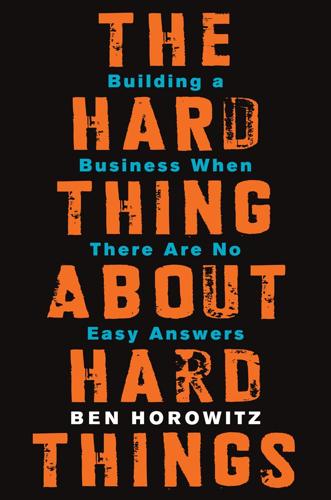
The Hard Thing About Hard Things: Building a Business When There Are No Easy Answers
by
Ben Horowitz
Published 4 Mar 2014
In fact, other than the books written by Andy Grove, I don’t know of any management books that teach you how to manage in wartime like Steve Jobs or Andy Grove. BACK TO THE BEGINNING It turned out that a little wartime was just what the doctor ordered for Google. Page’s precise and exacting leadership has led to brilliant execution in integrating identity across Google’s broad product line, from the rise of Android to brilliant new products like Google Glass. Sometimes you need to go to war. MAKING YOURSELF A CEO The other day, a friend of mine asked me whether CEOs were born or made. I said, “That’s kind of like asking if Jolly Ranchers are grown or made. CEO is an unnatural job.” The surprised look on his face made me realize that perhaps it wasn’t as obvious as I’d originally thought.
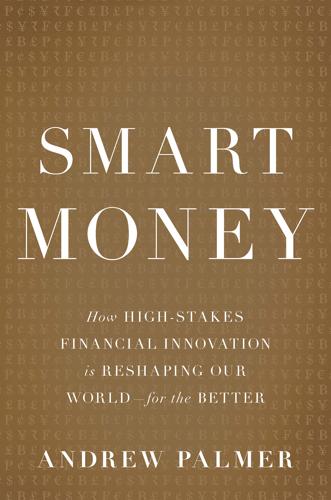
Smart Money: How High-Stakes Financial Innovation Is Reshaping Our WorldÑFor the Better
by
Andrew Palmer
Published 13 Apr 2015
Once registered, investors can browse the site looking at all manner of ideas to change the world and scrutinizing the entrepreneurs behind them. The selection of companies is eclectic, though predominantly geared toward consumers. On the occasions I browsed Crowdcube, I came across firms such as Tabbit, which was touting a smartphone app enabling people to order drinks without having to line up at the bar; GlassFit, a fitness app for Google Glass that aimed to make exercise fun by, for example, showing an avatar up ahead that you can try to overtake; and Castle Three Motoring Company, which manufactured three-wheeled sports cars. Investors can see videos of the founders and their products, read descriptions of the companies, request business plans, and conduct Q&A sessions with the entrepreneurs.

Prediction Machines: The Simple Economics of Artificial Intelligence
by
Ajay Agrawal
,
Joshua Gans
and
Avi Goldfarb
Published 16 Apr 2018
Elton, The Ecology of Invasions by Animals and Plants (New York: John Wiley, 1958). 10. Based on discussions with University of Waterloo dean Pearl Sullivan, professor Alexander Wong, and other Waterloo professors on November 20, 2016. 11. There is a fourth benefit to prediction on the ground: sometimes it is necessary for practical purposes. For instance, Google Glass needed to be able to determine whether an eyelid movement was a blink (nonintentional) or a wink (intentional), with the latter being a means by which the device could be controlled. Because of the speed with which that determination needed to be made, sending the data to the cloud and waiting for an answer was impractical.
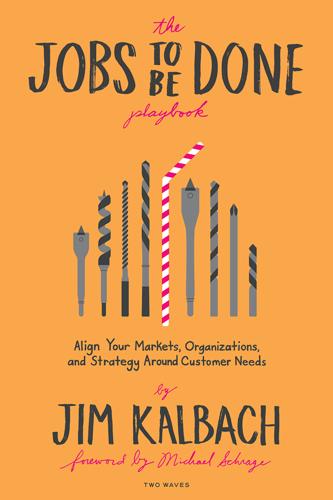
The Jobs to Be Done Playbook: Align Your Markets, Organization, and Strategy Around Customer Needs
by
Jim Kalbach
Published 6 Apr 2020
ADOPTION OF INNOVATION Building a better mousetrap does not guarantee that people will adopt an innovation. Many would-be breakthroughs fail for not taking human factors into consideration. You don’t need to look further than the nonadoption of offerings like the Segway, Zune, Amazon’s Fire phone, and even Google Glass. To increase chances of adoption, organizations must understand people’s needs and desires. Everett Rogers pioneered research into how innovations get adopted. His landmark book Diffusion of Innovations is the culmination of decades of rigorous research.8 In it, he describes five key heuristics that predict the adoption rate of innovations: • Relative advantage: Is the innovation better than existing alternatives to getting a job done?

The Innovators: How a Group of Inventors, Hackers, Geniuses and Geeks Created the Digital Revolution
by
Walter Isaacson
Published 6 Oct 2014
That is the question: Whether ’tis wiser in the net to suffer The store and forward of stochastic networks, Or to raise up circuits against a sea of packets, And by dedication serve them?107 A generation later, in 2014, Cerf was working at Google in Washington, DC, still enjoying himself and marveling at the wonders they had wrought by creating the Internet. Wearing Google Glass, he noted that every year brings something new. “Social networks—I joined Facebook as an experiment—business apps, mobile, new things keep piling onto the Internet,” he said. “It has scaled up a million times over. Not many things can do that without breaking. And yet those old protocols we created are doing just fine.”108 NETWORKED CREATIVITY So who does deserve the most credit for inventing the Internet?
…
Presper, ref1, ref2, ref3, ref4, ref5, ref6, ref7, ref8, ref9, ref10, ref11, ref12, ref13, ref14, ref15, ref16, ref17, ref18 patents sought by, ref1, ref2 and public display of ENIAC, ref1 and storage of programs in ENIAC, ref1, ref2 von Neumann accused of stealing ideas by, ref1 Eckert-Mauchly Computer Corporation, ref1 Edison, Thomas, ref1, ref2 EDSAC, ref1 EDVAC, ref1, ref2, ref3, ref4 Edwards, Dan, ref1, ref2 Edwards, Elwood, ref1 Einstein, Albert, ref1, ref2, ref3, ref4, ref5, ref6, ref7 Eisenhower, Dwight, ref1, ref2, ref3, ref4, ref5, ref6 electrical circuits, ref1, ref2, ref3 needed to break German codes, ref1, ref2 electricity, ref1 Electric Kool-Aid Acid Test, The (Wolfe), ref1, ref2 Electronic Discrete Variable Automatic Calculator, see EDVAC Electronic Engineering Times, ref1 Electronic News, ref1, ref2 Electronics, ref1 Electronics Magazine, ref1 electrons, ref1, ref2, ref3, ref4 Elkind, Jerry, ref1, ref2 Elwell, Cyril, ref1 email, ref1 Emsworth, Lord, ref1 Encyclopedia Britannica, ref1 Engelbart, Doug, ref1, ref2, ref3, ref4, ref5, ref6, ref7, ref8, ref9, ref10, ref11, ref12, ref13, ref14, ref15, ref16, ref17, ref18, ref19, ref20 on human-machine interaction, ref1, ref2, ref3, ref4, ref5, ref6, ref7 English, Bill, ref1, ref2, ref3 ENIAC, ref1, ref2, ref3, ref4, ref5, ref6, ref7, ref8, ref9 decimal system used by, ref1 as first modern computer, ref1, ref2 hydrogen bomb equations worked out by, ref1 patents for work on, ref1, ref2, ref3, ref4 public unveiling of, ref1 speed of, ref1, ref2 storage of programs in, ref1, ref2 update of, ref1 women as programmers of, ref1, ref2 Enigma, ref1 Enlightenment, ref1 Enquire, ref1 Enquire Within Upon Everything, ref1, ref2, ref3, ref4 Entscheidungsproblem, ref1, ref2, ref3, ref4 Esquire, ref1, ref2, ref3 Estridge, Don, ref1 Eternal September, ref1, ref2 Ethernet, ref1, ref2n, ref3 Euclidean geometry, ref1 Eudora, ref1 Evans, David, ref1, ref2 Evans, Kent, ref1, ref2 EvHead, ref1 Excite, ref1, ref2 Expensive Planetarium, ref1 Eyser, George, ref1 Facebook, ref1, ref2, ref3, ref4 Fairchild, Sherman, ref1, ref2 Fairchild Camera and Instrument, ref1, ref2, ref3 Fairchild Semiconductor, ref1, ref2, ref3, ref4 formation of, ref1, ref2 microchips sold to weapons makers by, ref1 Noyce’s resignation from, ref1 Farnsworth, Philo, ref1 Federal Communications Commission, ref1 Felsenstein, Lee, ref1, ref2, ref3, ref4, ref5, ref6, ref7, ref8, ref9, ref10, ref11 Ferranti, ref1 Ferranti Mark I, ref1 Ferrucci, David, ref1 Feynman, Richard, ref1 file sharing, ref1 Filo, David, ref1 Firefox, ref1, ref2, ref3 “First Draft of a Report on the EDVAC, by John von Neumann,” ref1 Fischer, Dave, ref1 Flowers, Tommy, ref1, ref2, ref3, ref4 influence of, ref1 “Fool on the Hill, The,” ref1 formal systems of mathematics, ref1 Fortran, ref1, ref2, ref3, ref4 Fortune, ref1, ref2, ref3 Frankenstein, or The Modern Prometheus (Shelley), ref1, ref2, ref3 Franklin, Benjamin, ref1, ref2, ref3, ref4 Frankston, Bob, ref1 Free Software Foundation, ref1 Free Speech Movement, ref1, ref2, ref3 French, Gordon, ref1, ref2 French Revolution, ref1 Fuchs, Klaus, ref1, ref2 Fulghum, Robert, ref1 Fuller, Buckminster, ref1, ref2, ref3, ref4 Fylstra, Dan, ref1 Galaxy Games, ref1 Gale, Grant, ref1 Galison, Peter, ref1 GameLine, ref1, ref2 Garcia, Jerry, ref1 Gates, Bill, ref1, ref2, ref3, ref4, ref5, ref6, ref7, ref8, ref9, ref10, ref11, ref12, ref13, ref14, ref15, ref16, ref17, ref18 Allen’s disputes with, ref1, ref2, ref3, ref4, ref5 background of, ref1 BASIC for Altair designed by, ref1, ref2 BASIC learned by, ref1 belief of, in future of personal computer, ref1 copyright issues and, ref1, ref2, ref3 8008 language written by, ref1 electronic grid work of, ref1 Evans’s death and, ref1, ref2 at Harvard, ref1, ref2 innovator personality of, ref1 Jobs’s dispute with, ref1 Lakeside Programming Group formed by, ref1 operating system and, ref1, ref2 payroll program written by, ref1, ref2 PDP-10 work of, ref1 programming’s importance seen by, ref1 on reverse-engineering brain, ref1 Gates, Mary, ref1 Gatlinburg conference, ref1, ref2, ref3 General Electric (GE), ref1, ref2 General Post Office, ref1 general-purpose machines, ref1, ref2, ref3, ref4, ref5, ref6, ref7, ref8, ref9, ref10 Engelbert’s foreseeing of, ref1 see also memex General Relativity, ref1, ref2 geometry, ref1 germanium, ref1 Germany, codes of, ref1, ref2, ref3 Gertner, Jon, ref1, ref2 Gibson, William, ref1 Gingrich, Newt, ref1 Ginsberg, Allen, ref1 GNU, ref1 GNU/Linux, ref1, ref2, ref3, ref4, ref5, ref6 Go, ref1 Gödel, Escher, Bach (Hofstadter), ref1 Gödel, Kurt, ref1, ref2, ref3, ref4, ref5 gold, ref1 Goldberg, Adele, ref1 Goldstine, Adele, ref1, ref2, ref3, ref4 Goldstine, Herman, ref1, ref2, ref3, ref4, ref5, ref6, ref7, ref8 von Neumann’s first meeting with, ref1 Google, ref1, ref2, ref3, ref4, ref5, ref6, ref7 creation of, ref1, ref2, ref3 lawsuits of, ref1 page ranks of, ref1 self-driving cars of, ref1 Google Glass, ref1 Gopher, ref1 Gore, Al, ref1, ref2 Gore Act (1991), ref1, ref2, ref3 government funding, ref1, ref2, ref3 see also ARPANET Graetz, Martin, ref1, ref2 Gran Trak 10, ref1 graphic user interface, ref1, ref2 Grateful Dead, ref1, ref2, ref3 “Great Conversation, The” (Cerf), ref1 Greeks, ref1 Greening of America, The (Reich), ref1 Greig, Woronzow, ref1 Grinnell College, ref1, ref2, ref3 Grove, Andy, ref1, ref2, ref3, ref4, ref5 management techniques of, ref1, ref2 hackers, ref1, ref2, ref3, ref4, ref5, ref6, ref7, ref8 Hackers (Levy), ref1, ref2 Hafner, Katie, ref1, ref2, ref3 Haggerty, Pat, ref1, ref2, ref3 idea for calculator of, ref1 Hall, Justin, ref1, ref2, ref3, ref4, ref5, ref6 halting problem, ref1 Hambrecht & Quist, ref1, ref2 harmonic synthesizer, ref1 Hartree, Douglas, ref1 Harvard University, ref1, ref2, ref3, ref4, ref5, ref6, ref7, ref8 Hayden, Stone & Co., ref1, ref2 Hayes Smartmodem, ref1 Heart, Frank, ref1 “Heath Robinson,” ref1 Heinlein, Robert, ref1, ref2 Hells Angel, ref1 Hennessy, John, ref1 Herschel, John, ref1 Hertzfeld, Andy, ref1 Herzfeld, Charles, ref1, ref2, ref3 Hewlett, William, ref1, ref2, ref3, ref4 Hewlett-Packard, ref1, ref2, ref3, ref4, ref5, ref6, ref7, ref8 High Performance Computing Act (1991), ref1, ref2 Higinbotham, William, ref1 Hilbert, David, ref1, ref2, ref3, ref4, ref5, ref6 Hiltzik, Michael, ref1 Hingham Institute Study Group, ref1 hippies, ref1, ref2, ref3, ref4, ref5 Hiroshima, ref1n His Majesty’s Government Code and Cypher School, ref1 Hitler, Adolf, ref1, ref2 Hoddeson, Lillian, ref1 Hodges, Andrew, ref1 Hoefler, Don, ref1 Hoerni, Jean, ref1, ref2, ref3, ref4 Hoff, Ted, ref1, ref2 Hofstadter, Douglas, ref1 Holberton, Betty Snyder, see Snyder, Betty Hollerith, Herman, ref1, ref2 Homebrew Computer Club, ref1, ref2, ref3, ref4, ref5, ref6, ref7, ref8, ref9, ref10 Home Terminal Club, ref1 Honeywell, ref1, ref2, ref3, ref4 Hoover Dam, ref1 Hopper, Grace, ref1, ref2, ref3, ref4, ref5, ref6, ref7, ref8 communication skills of, ref1, ref2 on ENIAC’s lack of programmability, ref1 hired at Eckert-Mauchley, ref1 subroutines perfected by, ref1 Hopper, Vincent, ref1 HotWired, ref1 HotWired.com, ref1 Hourihan, Meg, ref1 House, David, ref1 House of Lords, ref1, ref2 Huffington, Arianna, ref1 Huffington Post, ref1 Human Brain Project, ref1 Human-Computer Interaction Group, ref1 human-machine interaction, ref1, ref2, ref3, ref4, ref5, ref6, ref7, ref8, ref9, ref10, ref11, ref12, ref13, ref14, ref15, ref16 Hush-A-Phone case, ref1 hydrogen bomb, ref1, ref2 HyperCard, ref1 hypertext, ref1, ref2 limitation of, ref1 Hypertext Markup Language (HTML), ref1, ref2, ref3, ref4 Hypertext Transfer Protocol (HTTP), ref1 IAS Machine, ref1 IBM, ref1, ref2, ref3, ref4, ref5, ref6, ref7, ref8, ref9, ref10, ref11, ref12, ref13, ref14, ref15, ref16, ref17 dress code at, ref1 founding of, ref1 Gates’s deal with, ref1 Jobs’s criticism of, ref1 Mark I history of, ref1, ref2 Mark I of, ref1, ref2, ref3, ref4 IBM 704, ref1 IBM 1401, ref1 Idea Factory, The (Gertner), ref1 Illich, Ivan, ref1, ref2 imitation game, ref1 incompleteness theorem, ref1, ref2 indeterminacy, ref1 individualism, ref1 Industrial Revolution, ref1, ref2, ref3, ref4, ref5 two grand concepts of, ref1 Infocast, ref1 Information Processing Techniques Office (IPTO), ref1, ref2, ref3, ref4, ref5 Information Sciences, Inc.

Dogfight: How Apple and Google Went to War and Started a Revolution
by
Fred Vogelstein
Published 12 Nov 2013
The improvements made Siri, Apple’s voice-command technology in the iPhone, seem quaint. In August 2013 it unveiled its first Motorola smartphone. Even the products Google had no intention of selling immediately were generating enormous buzz. It demonstrated that its driverless-car software actually works. It showed that Google Glass—a computer in a pair of eyeglasses—may indeed fuse man and his machine. It’s tempting to predict that it’s only a matter of time before Apple comes back with its own new revolutionary device. Certainly that’s how the competition between the two has been up until now. What’s unclear is whether Apple can do it without Jobs at the helm.

The People's Platform: Taking Back Power and Culture in the Digital Age
by
Astra Taylor
Published 4 Mar 2014
Yet there is one point on which the cheerleaders and the naysayers agree: we are living at a time of profound rupture—something utterly unprecedented and incomparable. All connections to the past have been rent asunder by the power of the network, the proliferation of smartphones, tablets, and Google glasses, the rise of big data, and the dawning of digital abundance. Social media and memes will remake reality—for better or for worse. My view, on the other hard, is that there is as much continuity as change in our new world, for good and for ill. Many of the problems that plagued our media system before the Internet was widely adopted have carried over into the digital domain—consolidation, centralization, and commercialism—and will continue to shape it.

The Buddha and the Badass: The Secret Spiritual Art of Succeeding at Work
by
Vishen Lakhiani
Published 14 Sep 2020
Because you will shoot down more enemy planes. The pace of innovation is the most important thing. I don’t care if we fail 40 to 50 percent of the time. Google fails that often too. According to Steven Levy in his book In the Plex Google fails at 40 percent of everything they start. (Remember the Google Glass or Google Plus?) But by moving fast we learn, orient, adapt, and innovate faster than the competition. Failure is completely OKAY. In fact, it’s enshrined in our OKRs (50 percent of your OKRs must have a 50 percent rate of failure). Failing is OKAY. But Being Slow is NOT. Here’s what OODA means to us

Scary Smart: The Future of Artificial Intelligence and How You Can Save Our World
by
Mo Gawdat
Published 29 Sep 2021
It’s just a question of long working hours during which your effort yields predictable returns because you are no longer missing pieces of the puzzle. You don’t need a eureka moment and a stroke of luck to deliver a product. Just hard work. This was the nature of every product we developed at Google [X]. Take Google Glass, for example. Once we figured the optics out, using a device that weighed six kilograms, creating an impressive product (though a commercial disaster) was just a matter of long engineering hours to fit the tech in a glass-like contraption that weighed only thirty-six grams. Once we had worked out the learning algorithms for vision and control, it was only a matter of time to develop a car that drives itself.

Artificial Unintelligence: How Computers Misunderstand the World
by
Meredith Broussard
Published 19 Apr 2018
It’s not some brilliant artificial brain that knows how to drive a car. It’s that the streets are digitized in great detail. So where does the data come from? To a degree, from automated cameras. But no matter where it comes from, at the bottom of the chain there will be someone operating it. It’s not really automated. Whoever that is—maybe somebody wearing Google Glass on their head that sees a new pothole, or somebody on their bike that sees it—only a few people will pick up that data. At that point, when the data becomes rarified, the value should go up. The updating of the input that is needed is more valuable, per bit, than we imagine it would be today.23 Lanier is describing a world in which vehicle safety could depend on monetized data—a dystopia in which the best data goes to the people who can afford to pay the most for it.

The Globotics Upheaval: Globalisation, Robotics and the Future of Work
by
Richard Baldwin
Published 10 Jan 2019
The remote surgeon guides the operating surgeon with screen markings that point out things like tendons, arteries, nerves, or where to make the incision. Proximie, which has been in use since 2016, has been used by doctors in Beirut to assist surgeons operating in the Gaza Strip. And remote surgical assistance via AR is not only for war zones. The headwear known as Google Glass (which looks like a pair of glasses) has been used in cardiac procedures in ways that allow an expert in a specific procedure to provide real-time advice to the operating surgeon. The other main new form of communication, virtual reality (VR), is a far more immersive experience—it completely hijacks your visual and audio channels filling them with a computer-generated reality.
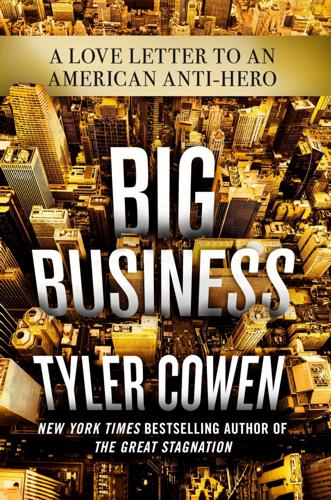
Big Business: A Love Letter to an American Anti-Hero
by
Tyler Cowen
Published 8 Apr 2019
Perhaps the value proposition here remains uncertain, but it is a bold attempt to create a better and more connected living situation for some of the world’s more vulnerable people. It does seem that the technology works, though at what cost or sustainability we do not yet know. The work of Google and Alphabet on robotics also has not yet shown a real payoff, as far as outsiders can tell. Even some of Google’s failures will likely prove to be of use. Google Glass, the wearable device intended to integrate a goggles experience with internet access and viewing, failed. Still, this was a learning step in the broader development of wearable devices and a stepping-stone for others, or maybe Google/Alphabet itself, to build on. Google significantly upgraded YouTube after buying the company.
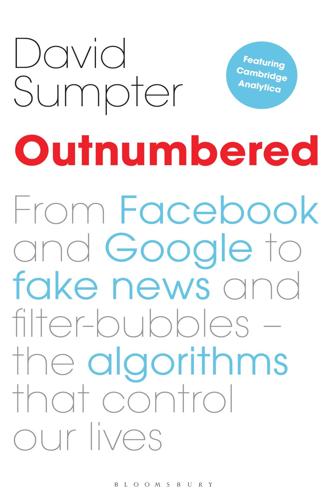
Outnumbered: From Facebook and Google to Fake News and Filter-Bubbles – the Algorithms That Control Our Lives
by
David Sumpter
Published 18 Jun 2018
Their offices were at a well-appointed address on Buckingham Palace Road, where there were large Lego structures in the lobby and fridges stuffed full of health drinks and superfoods. The ‘Googlers’, which was how they referred to themselves, were clearly very proud of their surroundings. I asked some of the Googlers what the company was up to now. I had heard about the self-driving cars, Google Glass and contact lenses, the drones delivering packages to our door, and the idea of injecting nanoparticles into our bodies to detect disease, and I wanted to know more about the rumours. But the Googlers were cagey. After a run of bad publicity about the company becoming an over-creative hub for crazy ideas, the policy was to stop telling the outside world too much about what it was up to.

Live Work Work Work Die: A Journey Into the Savage Heart of Silicon Valley
by
Corey Pein
Published 23 Apr 2018
“In the same way that we Europeans looked toward the New World to colonize for resources, we as humanity can look toward space as the ultimate supply of resources,” he said. The same ahistorical and romantic view of conquest pervaded the Summit, frequently punctuated by charts going up. SU chief executive Rob Nail, a gangly Stanford-educated robotics designer who wore a plaid blazer and a Google Glass that pinned back his shoulder-length hair, borrowed some of his slideshow from The Singularity Is Near—“the intellectual inspiration for the university.” Beside a chart with a rising trendline, which depicted the “exponential” march of human invention, was a portrait of Chancellor Kurzweil, who smiled impishly down on the audience, as though amused by a private joke.

Dark Matters: On the Surveillance of Blackness
by
Simone Browne
Published 1 Oct 2015
My suggestion here is that questioning the historically present workings of branding and racializing surveillance, particularly in regard to biometrics, allows for a critical rethinking of punishment, torture, and our moments of contact with our increasingly technological borders. This is especially important given the capabilities of noncooperative biometric tagging by way of wearable computing, such as Google Glass, or through UAVs, drones, or other flying objects employed in U.S. counterinsurgency measures and other military applications, for example targeted killings or search-and-rescue missions. Understanding how biometric information technologies are rationalized through industry specification and popular entertainment provides a means to falsify the idea that certain surveillance technologies and their application are always neutral regarding race, gender, disability, and other categories of determination and their intersections.

Bricks & Mortals: Ten Great Buildings and the People They Made
by
Tom Wilkinson
Published 21 Jul 2014
But unlike the enfoldment of theatre in the Duke of Ferrara’s palace, this privatisation does not permit consumer control of content, which is ceded instead to the entertainment industry. Furthermore, such privatisation strips away entertainment’s social element, that frisson of sexual possibility that belonged to Coney. Now the invention of autism machines like Google Glass threatens to take this desocialised zone into the public space of the street, degrading and monetising our interactions – and perhaps our sense of reality. 7 Highland Park Car Factory, Detroit (1909–10) Architecture and Work And I saw big squat buildings with great endless windows behind which men were trapped like flies, moving but barely moving, as if they were struggling against I don’t know what impossibility.
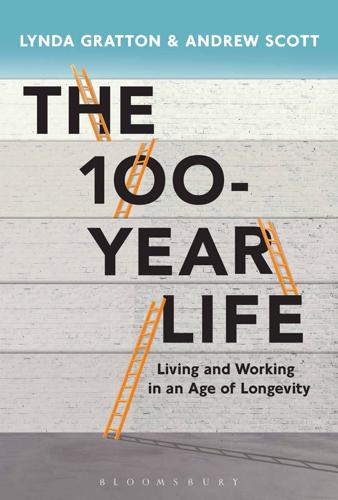
The 100-Year Life: Living and Working in an Age of Longevity
by
Lynda Gratton
and
Andrew Scott
Published 1 Jun 2016
J., ‘Who’s Benefiting from MOOCs, and Why’, Harvard Business Review (September 2015). 9Sebastian Thun, a former Stanford University professor, vice president of Google and founder of online educational company Udacity, puts it well: ‘The education system is based on a framework from the 17th and 18th century that says we should play for the first five years of life, then learn, then work, then rest and then die. I believe we should be able to do all those things all the time.’ http://www.theguardian.com/education/2013/sep/05/google-glass-creator-testing-regimes-technology 10Braithwaite, V., ‘Reducing Ageism’, in Nelson, T. D. (ed.), Ageism: Stereotyping and Prejudice Against Older Persons (MIT Press, 2002), 311–37. 11Erickson, T. J. and Gratton, L., ‘What It Means To Work Here’, Harvard Business Review (March 2007). 12We thank Adair Turner for both the reference to The Leopard as well as this specific example.

Insane Mode: How Elon Musk's Tesla Sparked an Electric Revolution to End the Age of Oil
by
Hamish McKenzie
Published 30 Sep 2017
Wu had taught himself English during his time at Intel, where he frequently interacted with American colleagues and made business trips to the United States. He was growing increasingly interested in artificial intelligence at the time he saw Malone’s speech, in part because of a friend named Yong Zhao. Yong had been a founding member of the team that worked on Google Glass, the augmented-reality headset that overlaid a digital interface onto the real world (you may recall that the device looked like a pair of lensless sunglasses from the 2052 Olympics). After leaving Google in 2013, Zhao started an automobile-vision research company but later decided he wanted to pursue other interests.

Life After Google: The Fall of Big Data and the Rise of the Blockchain Economy
by
George Gilder
Published 16 Jul 2018
Meanwhile, Balaban lured his fraternal twin brother, Michael, away from the growing success story NextDoor, which provides localized information and services, to be chief technology officer of Lambda Labs. Michael seems to have shared his twin’s impeccable timing—by 2015, NextDoor had become a unicorn worth more than a billion dollars. The Balabans started working on hardware. Using portable AI and face recognition, they conceived a wearable camera embedded in a baseball cap, resembling Google Glass or Snapchat spectacles. The problem was that no one in Silicon Valley could build the “Lambda Hat” prototypes, so Stephen was back in China for six months of exploring the manufacturing hives of Shenzhen, across the bay from Hong Kong. He ended up with a cool hat, better Mandarin, and a sharper sales pitch but no manufacturer or market for the product.

My Life as a Goddess: A Memoir Through (Un)Popular Culture
by
Guy Branum
Published 29 Jul 2018
On Channing Tatum and Jenna Dewan: “I’m so glad Channing’s wife could get the night off at Cheesecake Factory.” 12. On Zooey Deschanel: “You know Zooey just started a website to encourage women to do comedy. I just started a website to discourage Zooey from doing comedy.” 13. I’m sorry I don’t have the joke. It may not have been kombucha. It may have been Google Glass or Justin Bieber’s fragrance, Someday. All I remember is that it was something very 2012. 14. It was from the 2012 Grammys episode. Adele won five Grammys, and I said, “Usually, when Adele leaves with five of something, it comes with coleslaw and some biscuits.” Joan thought it was very funny but didn’t want to make fun of a woman for being fat.
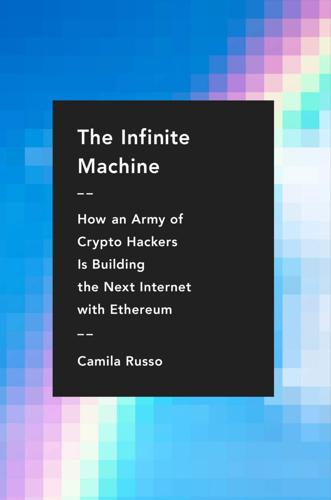
The Infinite Machine: How an Army of Crypto-Hackers Is Building the Next Internet With Ethereum
by
Camila Russo
Published 13 Jul 2020
Benny Giang was busy plastering the bathrooms with cat posters and handing out Pokémon playing cards with cat stickers on them. He had also tied feline-shaped balloons onto his workstation. He was part of the team at a Vancouver-based software incubator called Axiom Zen. They focused on bringing cutting-edge tech to the masses. Benny had been one of the first people to test out Google Glass smart glasses, and virtual reality headsets, and when cryptocurrencies became the thing everyone was talking about but not really using, they decided to give it a shot. Roham Gharegozlou, Axiom Zen founder, brought their team together and had them come up with a list of twenty or so blockchain ideas on a whiteboard.
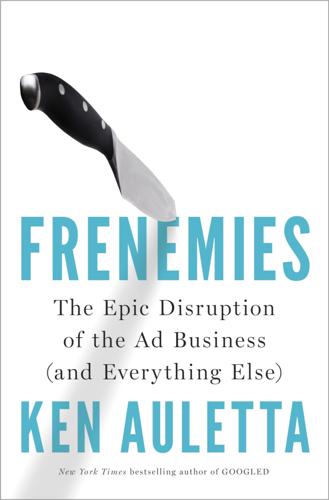
Frenemies: The Epic Disruption of the Ad Business
by
Ken Auletta
Published 4 Jun 2018
But a trip to the floor found Booth 82646 empty. One objective of CES is to manufacture buzz. In 2016, virtual reality was the much-hyped new new thing, which would be supplanted at CES 2017 by artificial intelligence, and AI-centric products like self-driving cars and Amazon’s Alexa. In previous years, drones, Google Glass, and 4K TVs had their moment. Writing about CES 2016, Farhad Manjoo of the New York Times observed, “If news from CES feels especially desultory this year, it might not be the show that’s at fault. Instead, blame the tech cycle. We’re at a weird moment in the industry: The best new stuff is not all that cool, and the coolest stuff”—AI, virtual reality, the Internet of things, drones—“isn’t quite ready

The Deep Learning Revolution (The MIT Press)
by
Terrence J. Sejnowski
Published 27 Sep 2018
Chips 205 Inside Information 219 Consciousness 233 Nature Is Cleverer Than We Are 245 Deep Intelligence 261 169 viii Acknowledgments 269 Recommended Reading 275 Glossary 281 Notes 285 Index 321 Contents Preface P P r r e e f f a a c c e e © Massachusetts Institute of TechnologyAll Rights Reserved If you use voice recognition on an Android phone or Google Translate on the Internet, you have communicated with neural networks1 trained by deep learning. In the last few years, deep learning has generated enough profit for Google to cover the costs of all its futuristic projects at Google X, including self-driving cars, Google Glass, and Google Brain.2 Google was one of the first Internet companies to embrace deep learning; in 2013, it hired Geoffrey Hinton, the father of deep learning, and other companies are racing to catch up. The recent progress in artificial intelligence (AI) was made by reverse engineering brains. Learning algorithms for layered neural network models are inspired by the way that neurons communicate with one another and are modified by experience.

Brotopia: Breaking Up the Boys' Club of Silicon Valley
by
Emily Chang
Published 6 Feb 2018
Then, in the long, hot summer of 2013, executive chairman Eric Schmidt was outed by the Daily Mail, a U.K. tabloid, as having had numerous extra marital affairs with younger women, including a female television personality who gave him the nickname “Dr. Strangelove.” Valleywag, a tech industry gossip blog, followed up with a story claiming that Schmidt’s New York apartment was a love nest that had been soundproofed. A month later, news broke that Brin, then forty, was having an affair with a junior employee on his Google Glass team named Amanda Rosenberg. To make matters more complicated, Rosenberg’s then-boyfriend, Hugo Barra, was a lead executive heading up Google’s Android division, who left at about the same time as the scandal broke in the press to run global operations at the Chinese smartphone maker Xiaomi. And to make it even more complicated, Brin was married to Susan Wojcicki’s sister Anne, a Silicon Valley force in her own right, heading up the genetic-testing company 23andMe.

A World Without Work: Technology, Automation, and How We Should Respond
by
Daniel Susskind
Published 14 Jan 2020
It acts as the “baits that lure capital on to untried trails.”22 Moreover, monopoly profits are not simply a consequence of innovation, but a means of funding further innovation. Substantial research and development very often draws on the deep pockets established by a company’s past commercial successes. Think of Google, and its history of expensive failed ventures: Google Glass and Google Plus, Google Wave and Google Video. Just one of these flops would have broken a smaller company. But Google was able to withstand them, stay afloat, keep innovating and profit from the ventures that did end up succeeding. Schumpeter was not troubled by concerns that monopolies might entrench themselves and lower welfare.

You've Been Played: How Corporations, Governments, and Schools Use Games to Control Us All
by
Adrian Hon
Published 14 Sep 2022
Unfortunately, while I adore audio as a game output, I don’t see how it can convey the feedback required for an activity that is so spatially driven as mopping: it would be potentially confusing, and certainly tiresome, for the game to be continually talking to you to mop this or that corner of the kitchen floor harder (“no, not that corner, the other corner!”). We’re not completely out of options, though: we could use a heads-up display, like Google Glass or Microsoft’s HoloLens, or a VR headset with passthrough video. These are expensive and a little embarrassing to wear in public, but they’d let players see the game’s output without moving a finger. Some augmented reality (AR) heads-up displays allow game elements to be drawn directly on top of your view of the floor itself, which would be even better.

The Measure of Progress: Counting What Really Matters
by
Diane Coyle
Published 15 Apr 2025
These have been rapidly growing markets according to industry data, 1965 1980 1G Mobile 2G Game consoles 1975 Cable 1985 1990 Netscape 1995 DVR Google LinkedIn YouTube Roku Netflix streaming Tablet Instagram Facebook Smartphone Smart TV 2015 Snapchat Apple watch 2010 Amazon echo 2020 5G Mobile Streaming radio PlayStation VR Amazon prime streaming 7G Game console Time-shifted viewing HS DVD & Blu-Ray Twitter 2005 HDTV 2000 Netflix Yahoo DBS Satellite Chromecast Google glass 8G Game console Hulu+ Apple TV VOD Gmail figure 4.2. Timeline of innovation in consumer content delivery. Source: Byrne and Corrado (2019). 1970 VCR AOL Satellite radio Broadband WiFi (Di s)i n t e r m e di a t i o n 115 although it is not clear how widespread they w ill eventually become.

Palo Alto: A History of California, Capitalism, and the World
by
Malcolm Harris
Published 14 Feb 2023
The private buses quickly reshaped the city’s geography: Rents near the Google stops increased especially rapidly.33 The stops were holes punched in the city’s social fabric, and the surrounding threads frayed. Though everyone remained Google product users, as a neighbor the company and the sector it represents were increasingly polarizing. In another flash point, the company pulled its Google Glass camera-enabled headset when the masses attacked users as “glassholes.” A couple of glassholes were subject to politically motivated mugging for their gadgets.34 Although one of the defining techie characteristics was doing everything indoors, the Google buses flaunted the privatization in public: The buses occupied city bus stops, growing in the hollowed city space like a parasitic wasp victimizing a caterpillar.
…
Jarett Kobek, I Hate the Internet: A Useful Novel against Men, Money, and the Filth of Instagram (Los Angeles, CA: We Heard You Like Books, 2016), 147. 33. Alexandra Goldman, “The ‘Google Shuttle Effect’: Gentrification and San Francisco’s Dot Com Boom 2.0” (master’s thesis, University of California, Berkeley, Department of City and Regional Planning, Spring 2013), 26. 34. Doug Gross, “Google Glass Targeted as Symbol by Anti-Tech Crowd,” CNN Business, April 14, 2014. 35. Bryan Goebel, “S.F. Agency Votes to Make ‘Google Bus’ Program Permanent,” KQED, February 22, 2017. 36. Cary McClelland, Silicon City: San Francisco in the Long Shadow of the Valley (New York: W. W. Norton, 2018), 96. 37.
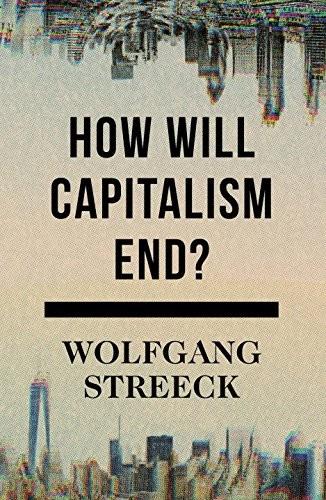
How Will Capitalism End?
by
Wolfgang Streeck
Published 8 Nov 2016
Responding in the New York Times (16 November 2013) to Summers’ ‘secular stagnation’ pronunciamiento (see Footnote 21), he begins by paraphrasing Keynes as having said, ‘spending is good, and while productive spending is best, unproductive spending is better than nothing’ – from which he derives the claim that ‘private spending that is wholly or partially wasteful’ could be ‘a good thing’. For illustration, Krugman continues, ‘suppose that U.S. corporations, which are currently sitting on a huge hoard of cash, were somehow to become convinced that it would be a great idea to fit out all their employees as cyborgs, with Google Glass and smart wristwatches everywhere. And suppose that three years later they realized that there wasn’t really much payoff to all that spending. Nonetheless, the resulting investment boom would have given us several years of much higher employment, with no real waste, since the resources employed would otherwise have been idle.’
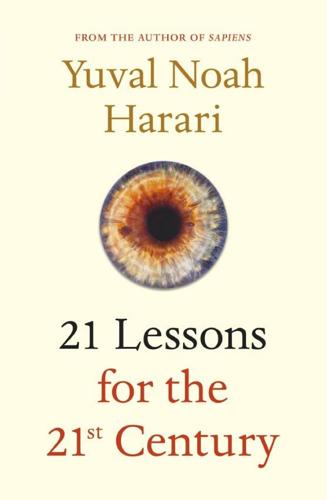
21 Lessons for the 21st Century
by
Yuval Noah Harari
Published 29 Aug 2018
It and the other online giants tend to view humans as audiovisual animals – a pair of eyes and a pair of ears connected to ten fingers, a screen and a credit card. A crucial step towards uniting humankind is to appreciate that humans have bodies. Of course, this appreciation too has its downside. Realising the limitations of online algorithms might only prompt the tech-giants to extend their reach further. Devices such as Google Glass and games such as Pokémon Go are designed to erase the distinction between online and offline, merging them into a single augmented reality. On an even deeper level, biometric sensors and direct brain–computer interfaces aim to erode the border between electronic machines and organic bodies, and to literally get under our skin.

Deep Medicine: How Artificial Intelligence Can Make Healthcare Human Again
by
Eric Topol
Published 1 Jan 2019
Prakash, the VP of products and design, is not as tall as Petterson, without an Academy Award, but is especially handsome, dark-haired, and brown-eyed, looking like he’s right out of a Hollywood movie set. His youthful appearance doesn’t jibe with a track record of twenty years of experience in product development, which included leading the Google Glass design project. He also worked at Apple for nine years, directly involved in the development of the first iPhone and iPad. That background might, in retrospect, be considered ironic. Meanwhile, a team of more than twenty engineers and computer scientists at Apple, located just six miles away, had its sights set on diagnosing atrial fibrillation via their watch.
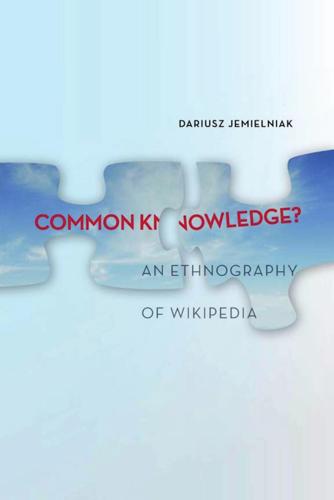
Common Knowledge?: An Ethnography of Wikipedia
by
Dariusz Jemielniak
Published 13 May 2014
Wikimedia projects in general rely on a traditional encyclopedic form of specific articles, sorted by categories and searchable by headwords. This structure does not include social networking for the reader, and it is not efficient. Wikipedia may include a marvelous article on St. Peter’s Basilica in Rome that is useful for art students, for example, but it will not be equally convenient for use with Google Glass or easy to cut into digestible bites. 1 9 2 T h e K n o w l e d g e R e v o l u t i o n a t t h e G a t e s Additionally, currently Wikipedians assume the same general adult level of reading ability (even Simple Wikipedia does so, while using simplified language for nonnative speakers’ convenience).

The Patient Will See You Now: The Future of Medicine Is in Your Hands
by
Eric Topol
Published 6 Jan 2015
Then there are all the low-cost satellites from above so that “all of the Earth will be held to a mirror, in near real time, at an increasing granularity of visual infrared and other kinds of data.”33b Wow, are we ever being watched. Not just being watched but also identified. The NameTag app enables users of Google Glass to take a picture of a stranger and identify them in the FacialNetwork company’s database, which includes occupation and social media profiles.34 Similarly, the NEC company is developing tools to enable hotels and businesses to automatically recognize their important visitors.35 These efforts rely on converting each person’s facial data into a “faceprint” of mathematical code along with a large database to find a match.
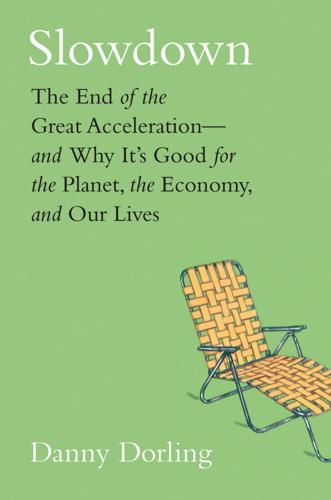
Slowdown: The End of the Great Acceleration―and Why It’s Good for the Planet, the Economy, and Our Lives
by
Danny Dorling
and
Kirsten McClure
Published 18 May 2020
In Britain, as their grandparents were trying to come to terms with imperial demotion and their parents were mostly enjoying full employment (for men) and very rapidly improving attitudes about women, Generation X itself was watching the cathode ray tube TV. Their children would watch flat screens, their grandchildren may well use Google glasses or an electronic contact lens, but after that, the room for further technical advancement will start to diminish. Bypassing the eye to put images directly in the brain may turn out to be really useful only for blind people, and hopefully there will be fewer blind people in future. Sometimes everything appears to change, but everything cannot change forever.

AI 2041: Ten Visions for Our Future
by
Kai-Fu Lee
and
Qiufan Chen
Published 13 Sep 2021
For these reasons, the HoloLens was relegated to vertical business applications like training, healthcare, and aeronautics. Anything with helmets and goggles cannot become a mass, wear-all-day product like the Apple Watch. In parallel, efforts to “undork” the AR/VR into glasses-like hardware were premature and also failed. Google Glass and Snapchat Spectacles were unsuccessful for several reasons. Core among them was that such miniaturized products no longer delivered the HoloLens high-fidelity experience. Technical limitations will ultimately be overcome. Every year in the past five, bandwidth, frame rate, resolution, and dynamic range all improved significantly, while hardware has become lighter and cheaper.

Like, Comment, Subscribe: Inside YouTube's Chaotic Rise to World Domination
by
Mark Bergen
Published 5 Sep 2022
“But these were differences about policy and business decisions. It was nothing personal.”) Eventually, Page was forced to pick one of them to run his ads operation. Meanwhile, Wojcicki’s sister Anne and Sergey Brin were going through a tabloid-style divorce. Brin, Google’s whimsical co-founder, had fallen for a twentysomething marketing staffer for Google Glass who modeled the dorky headgear Google pitched as the future of computing. The staffer also happened to be dating an executive at Google’s Android division. Brin and Anne Wojcicki went public with their split in August 2013, noting, through a publicist, that they “remain good friends and partners.”
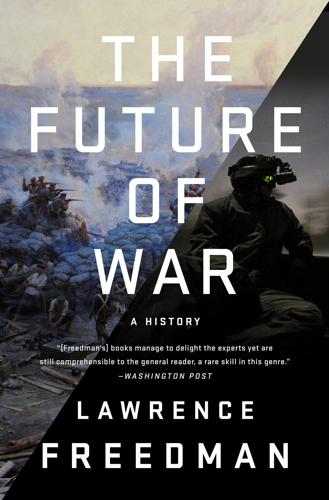
The Future of War
by
Lawrence Freedman
Published 9 Oct 2017
The preference of Singer and Cole was simpler and more agile systems, with quick impact, such as drones, rail guns, and lasers. They also show how personalised war could become, including individual aids to fighting whether in the form of stimulants that make it possible to cope with fatigue and strain, or a version of Google glasses which enabled immediate access to information. In its core scenario for the surprise attack, Ghost Fleet fitted in with what The Economist described as a distinctive feature of the genre that began with The Battle of Dorking, by presenting ‘new technologies as decisive, both a thrilling idea and a necessary device if… dominant nations were to be portrayed, initially at least, as victims,’ and as a means of imparting a stark message ‘of the wrongheadedness of politicians or senior officers, of national decline, of geopolitical change’.39 Cole was to the fore in an Atlantic Council project encouraging authors to generate insights in its ‘Art of Future Warfare Project’.40 One early product was a slim volume of short stories to demonstrate how fiction might alert policymakers to future possibilities.

To Save Everything, Click Here: The Folly of Technological Solutionism
by
Evgeny Morozov
Published 15 Nov 2013
Thus, he notes that “with minor differences, the evolution of the technium—the organism of ideas—mimics the evolution of genetic organisms.” Technology is nature, and nature is technology; resistance is futile—who would want to challenge nature? With this simple insight, Kelly develops a whole theory that can explain literally every development—from malware like Stuxnet to Google glasses—by claiming that this is just what technology wants. All we have to do is to develop the right listening tools—and the rest will follow. Hence, notes Kelly, “only by listening to technology’s story, divining its tendencies and biases, and tracing its current direction can we hope to solve our personal puzzles.”

The Alignment Problem: Machine Learning and Human Values
by
Brian Christian
Published 5 Oct 2020
CYCLE-PROOFING YOUR REWARDS: THE SHAPING THEOREM Astro Teller, currently the “captain of moonshots” at X (the Alphabet company formerly known as Google X), has in recent years overseen everything from Google’s self-driving-car project (subsequently spun off into Waymo), to its augmented-reality project Google Glass and its research lab Google Brain. But in 1998, he was focused on a different problem: soccer. With his friend and fellow student David Andre, Teller worked to enter the annual RoboCup soccer competition, with a virtual-soccer-playing program they dubbed Darwin United.41 Reward shaping is part of what enabled them to teach their program how to play.
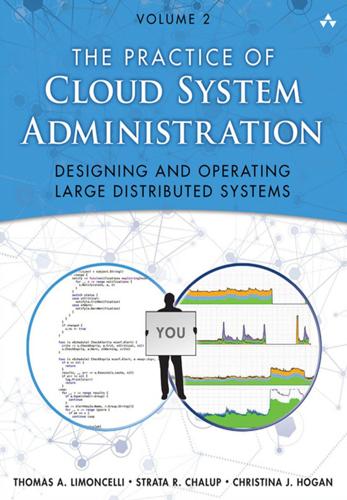
The Practice of Cloud System Administration: DevOps and SRE Practices for Web Services, Volume 2
by
Thomas A. Limoncelli
,
Strata R. Chalup
and
Christina J. Hogan
Published 27 Aug 2014
These changes happened by taking advantage of commoditization and standardization, shifting to open source software, building more reliability through software instead of hardware, and replacing labor-intensive operations with more software. Every order-of-magnitude improvement in the cost of computing enables a new era of applications, each of which was unimaginable just a few years before. Could the person who used an 8-bit computer to balance his or her checkbook in 1983 ever have imagined Facebook or Google Glass? What will follow cloud computing is anyone’s guess. The applications of tomorrow will demand computing resources that are orders-of-magnitude faster, have lower latency, and are less expensive. It will be very exciting to see what develops. Exercises 1. This appendix provides a history of five eras of computing technology: preweb era, first web era, dot-bomb era, second web era, and cloud computing era.
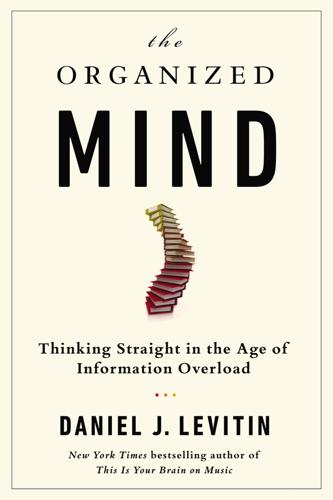
The Organized Mind: Thinking Straight in the Age of Information Overload
by
Daniel J. Levitin
Published 18 Aug 2014
If the umbrella is by the door all the time, rain or shine, it no longer functions as a memory trigger, because you don’t notice it. To help remember where you parked your car, parking lot signs at the San Francisco airport recommend taking a cell phone photo of your spot. Of course this works for bicycle parking as well. (In the new heart of the tech industry, Google cars and Google Glass will probably be doing this for us soon enough.) When organized people find themselves running between the kitchen and the home office all the time to get a pair of scissors, they buy an extra pair. It might seem like cluttering rather than organizing, but buying duplicates of things that you use frequently and in different locations helps to prevent you from losing them.
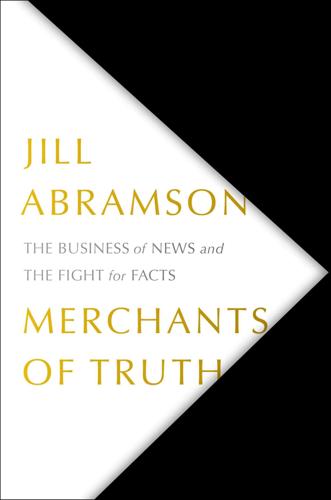
Merchants of Truth: The Business of News and the Fight for Facts
by
Jill Abramson
Published 5 Feb 2019
My Twitter following zoomed upward as soon as I posted. But in real time I had little awareness that social media, especially Facebook, was revolutionizing the way people got their news. I did work at Google on an experiment to develop new templates for breaking news stories and gained weight gorging on all the free snacks. I tried out Google glasses, but they made me dizzy; I had no desire to see my email while I was walking down the street. The 200 different stories the Times published each day were available to readers as soon as they opened their paper and turned the pages. Those stories were harder to discover online, where there was minute-by-minute competition for readers’ attention and no guarantee that once they clicked on a story, they would finish it and click on another.